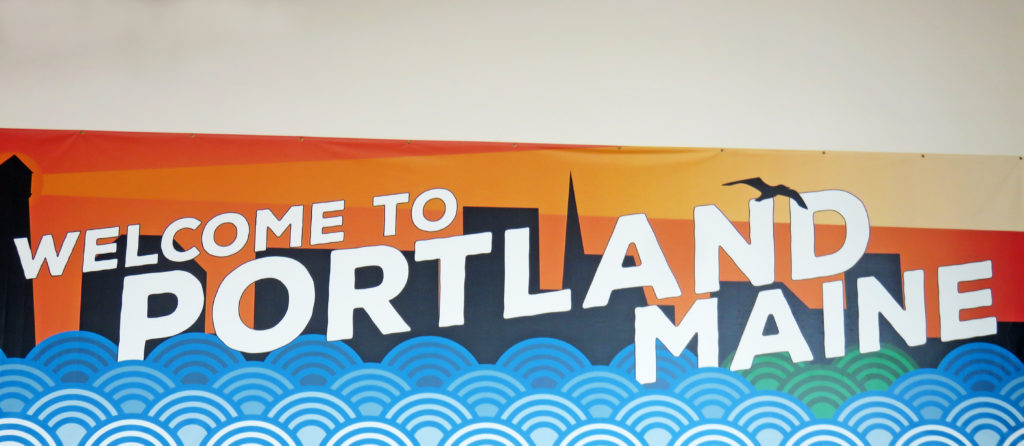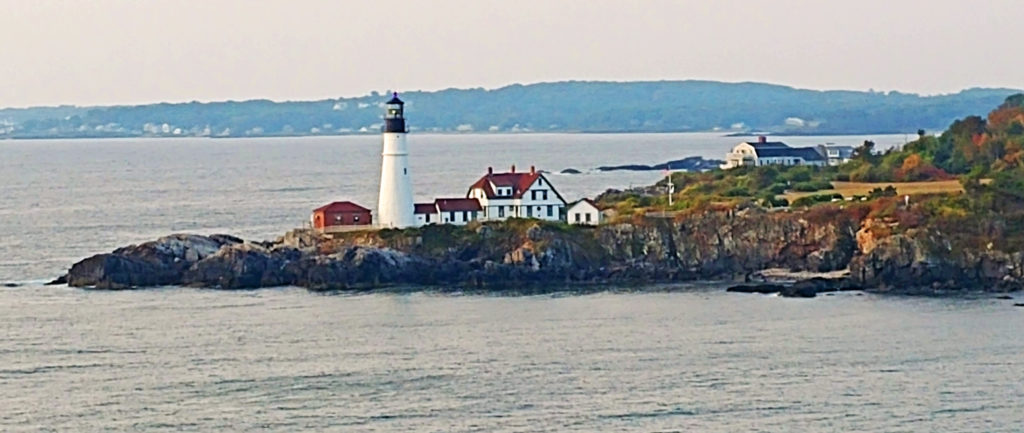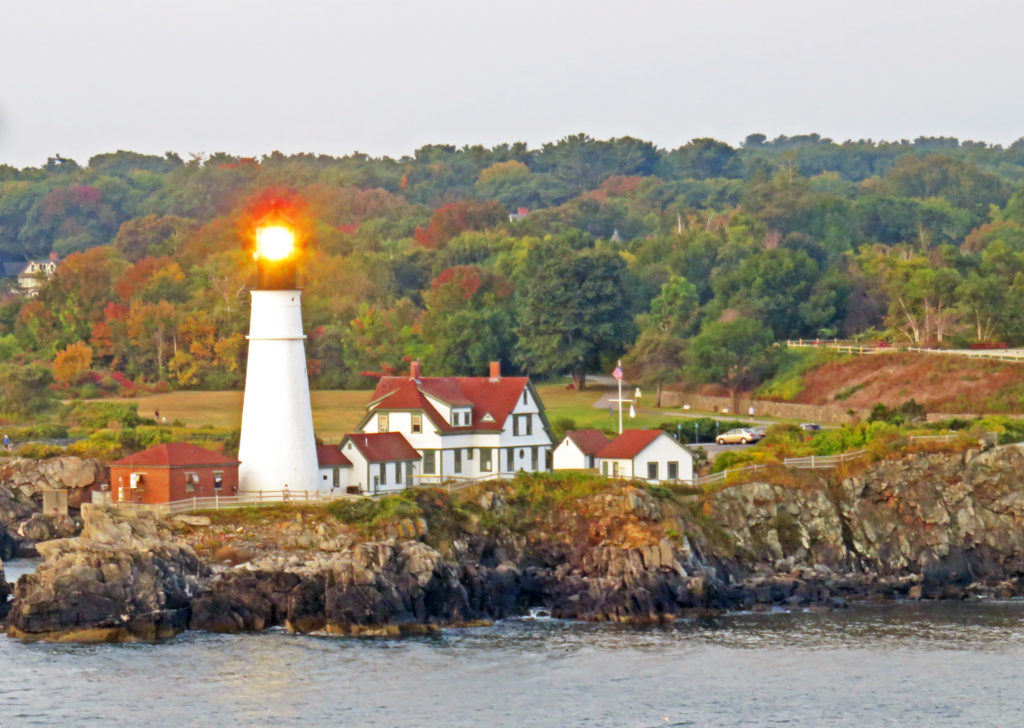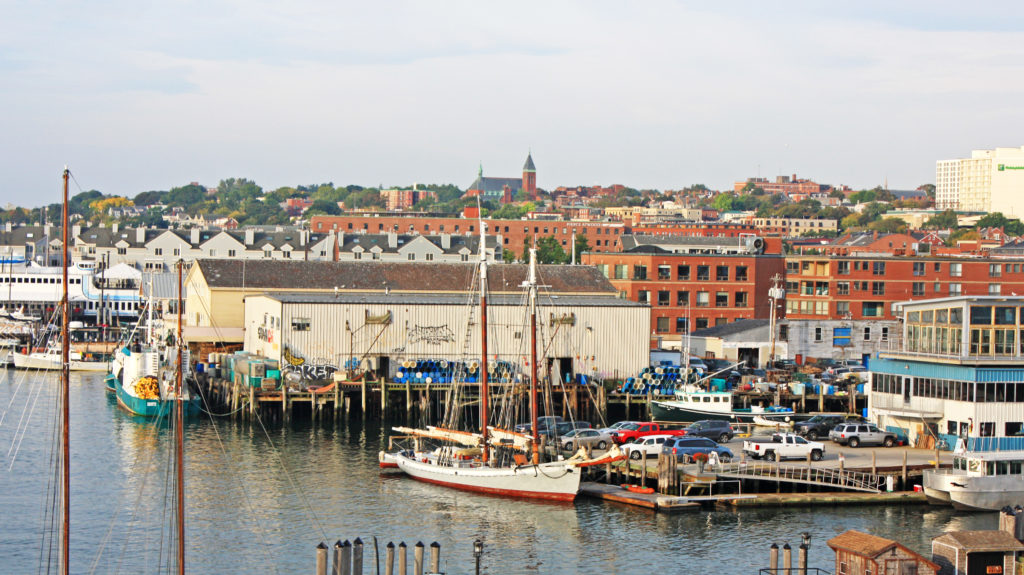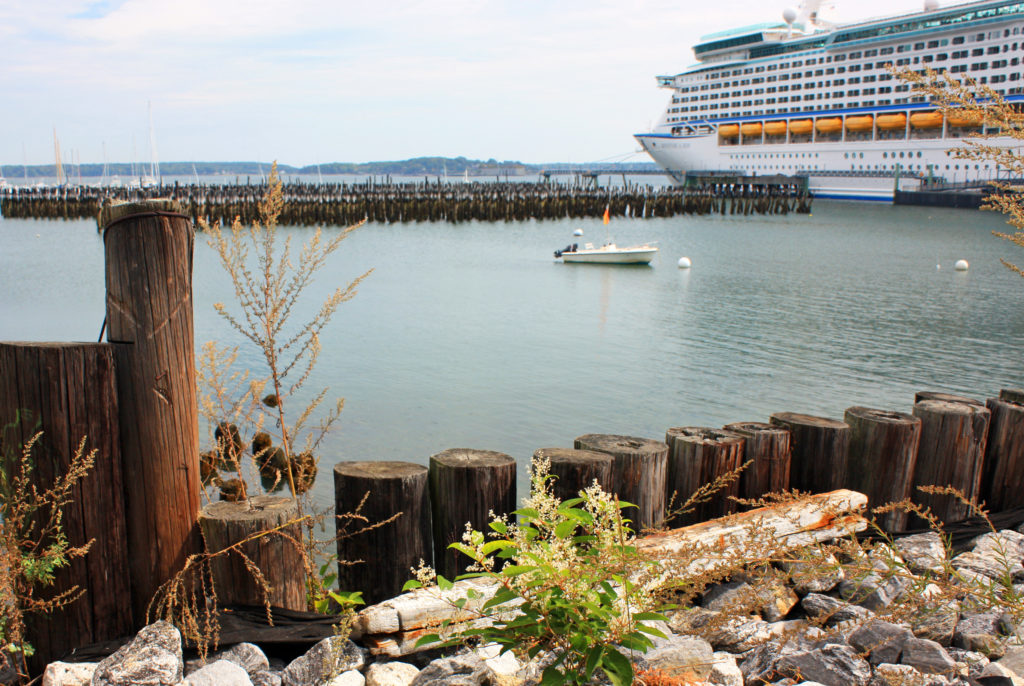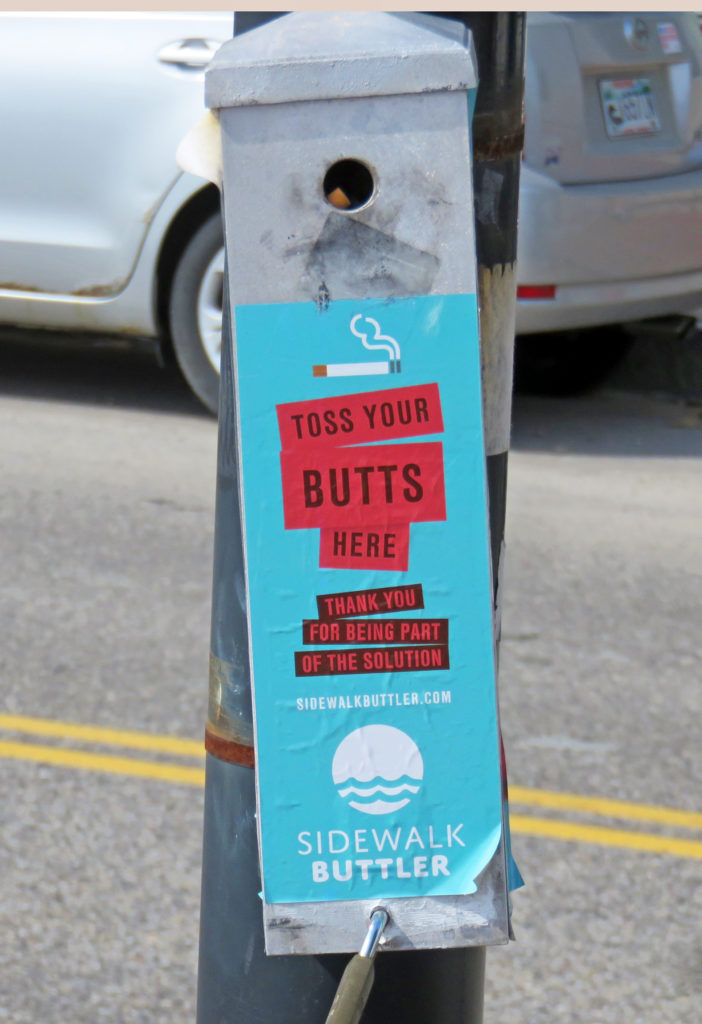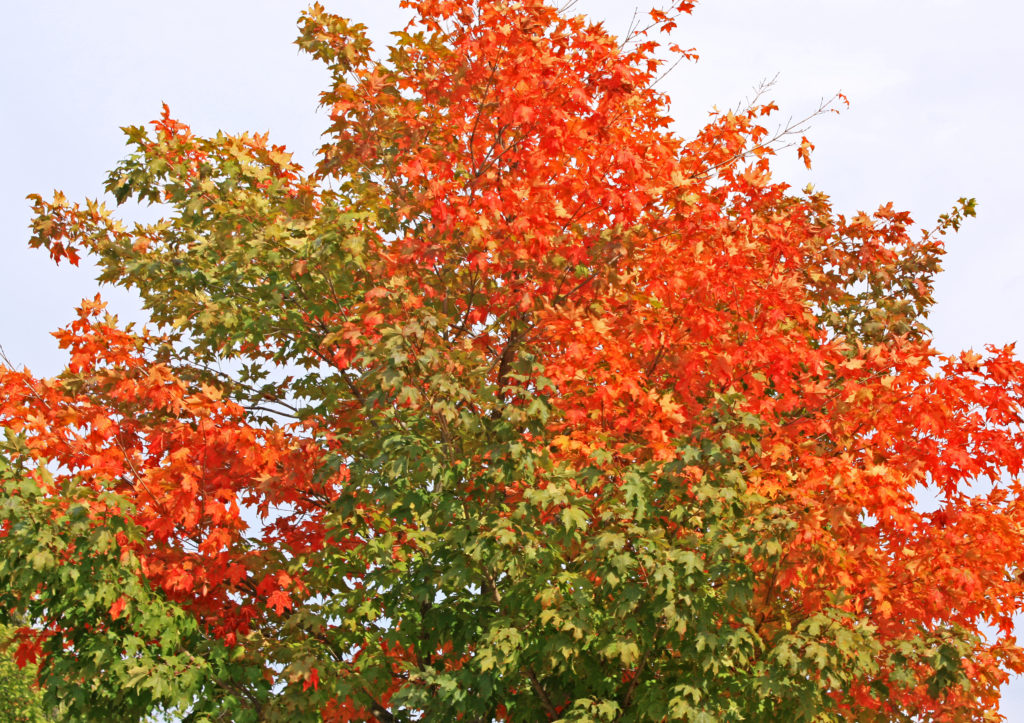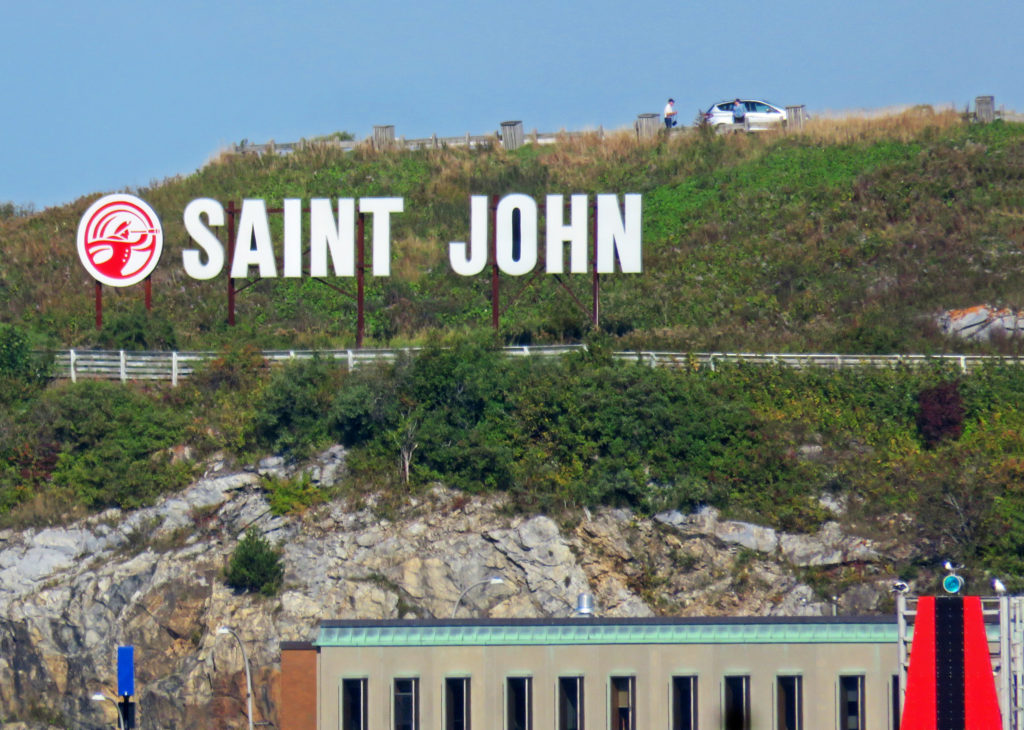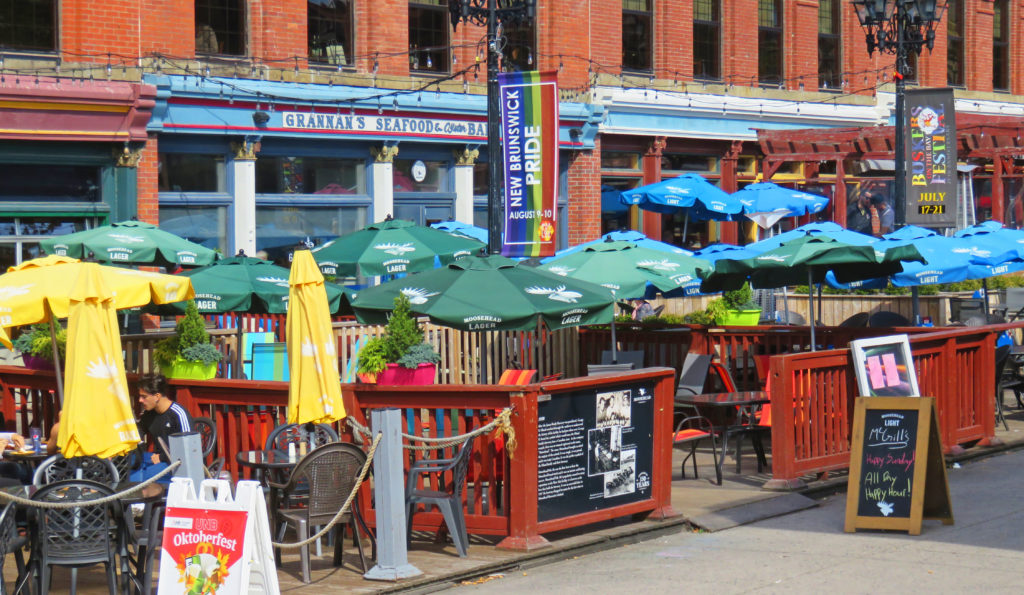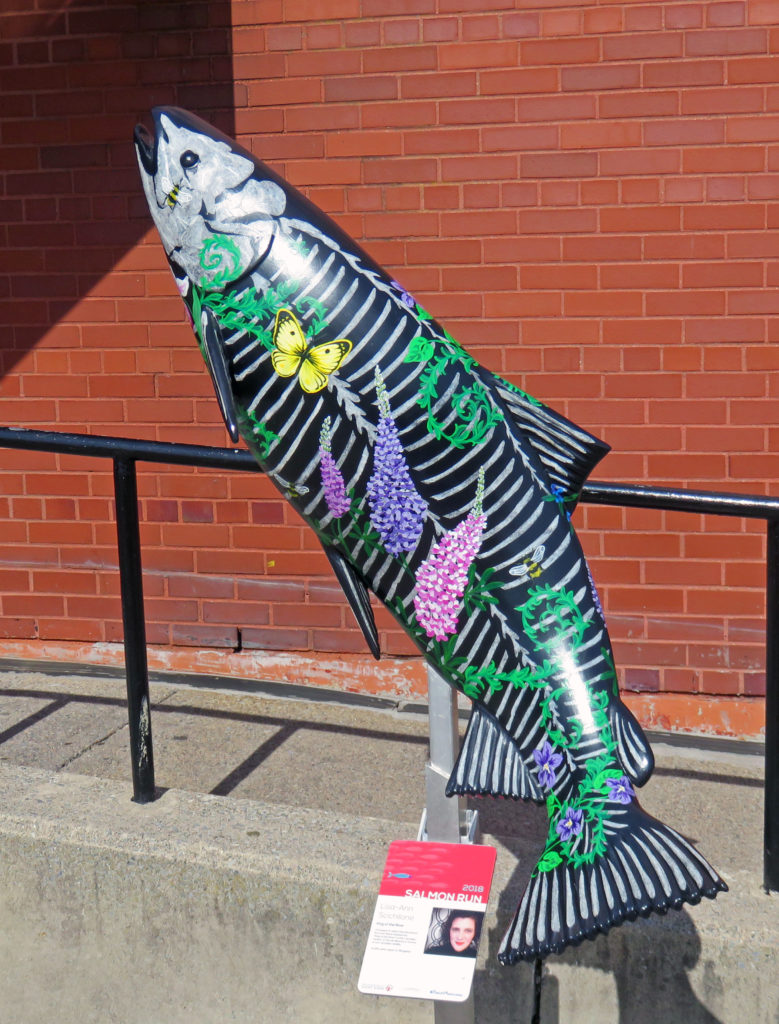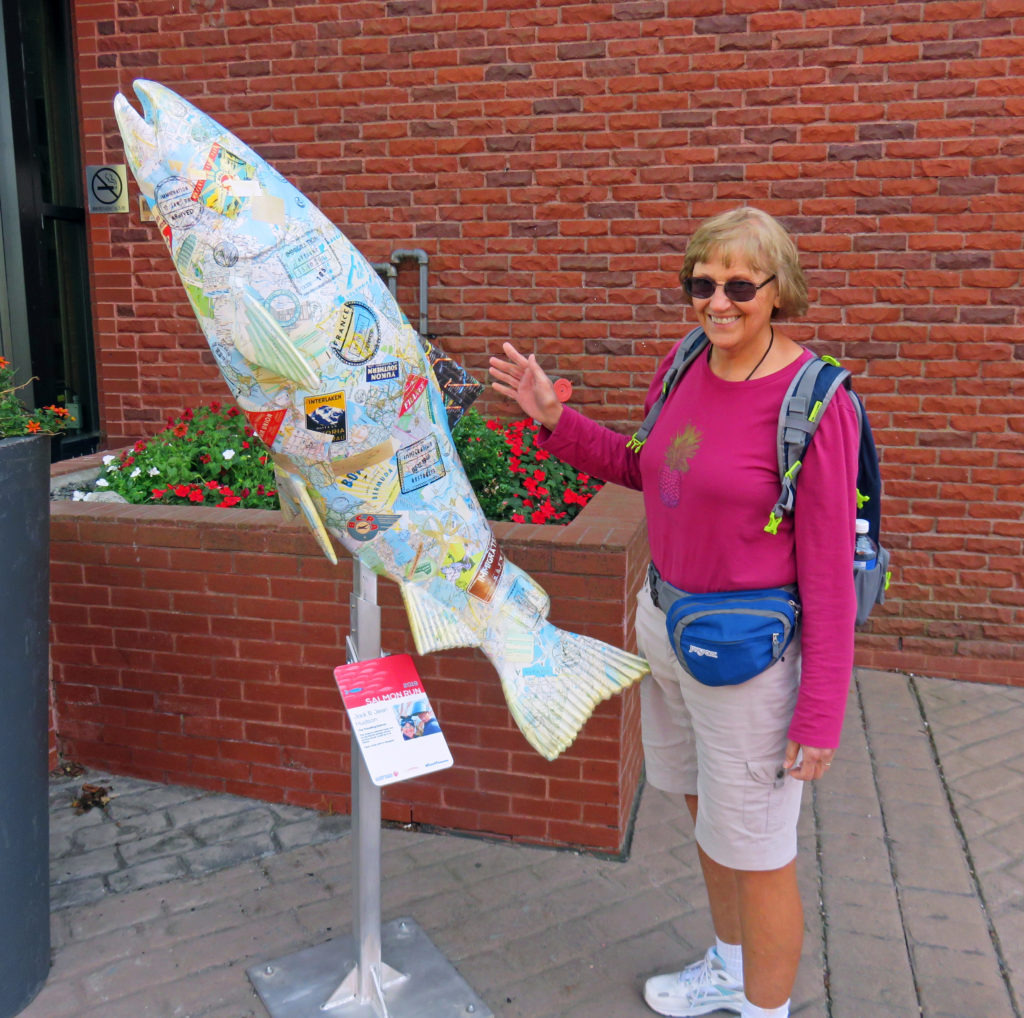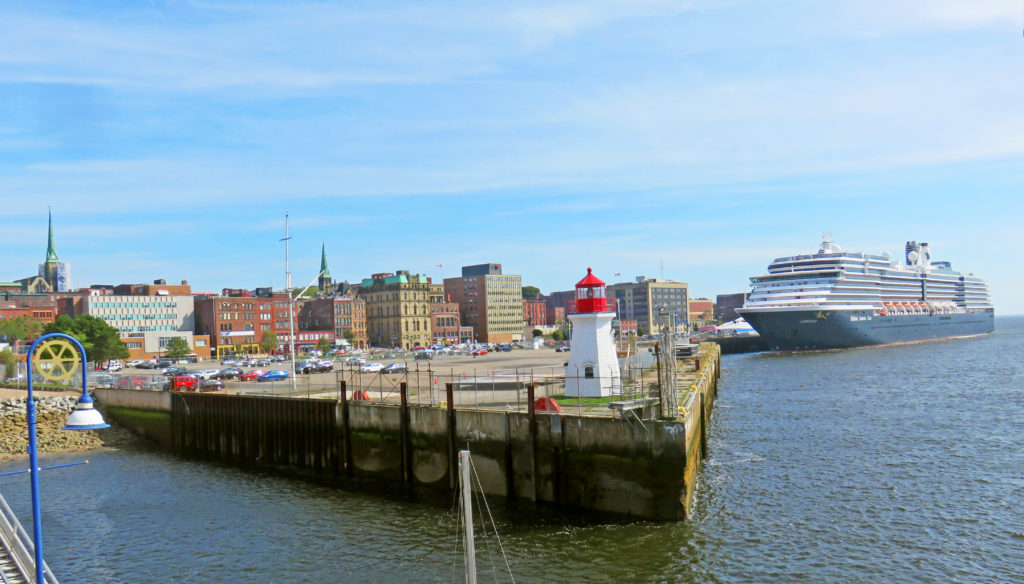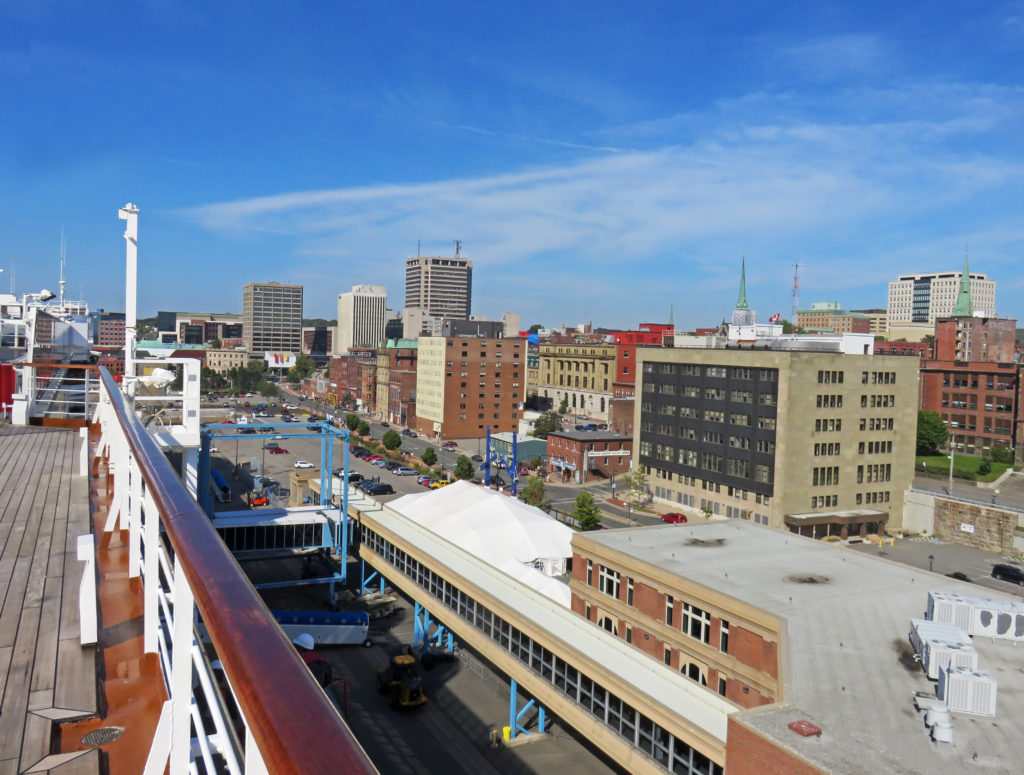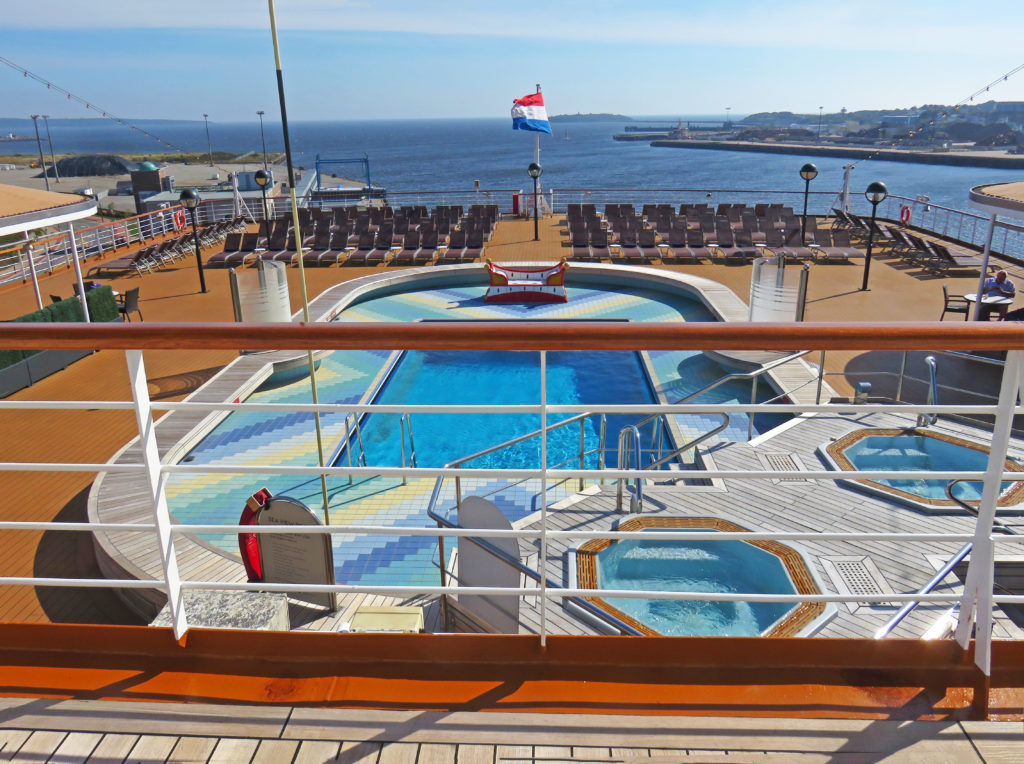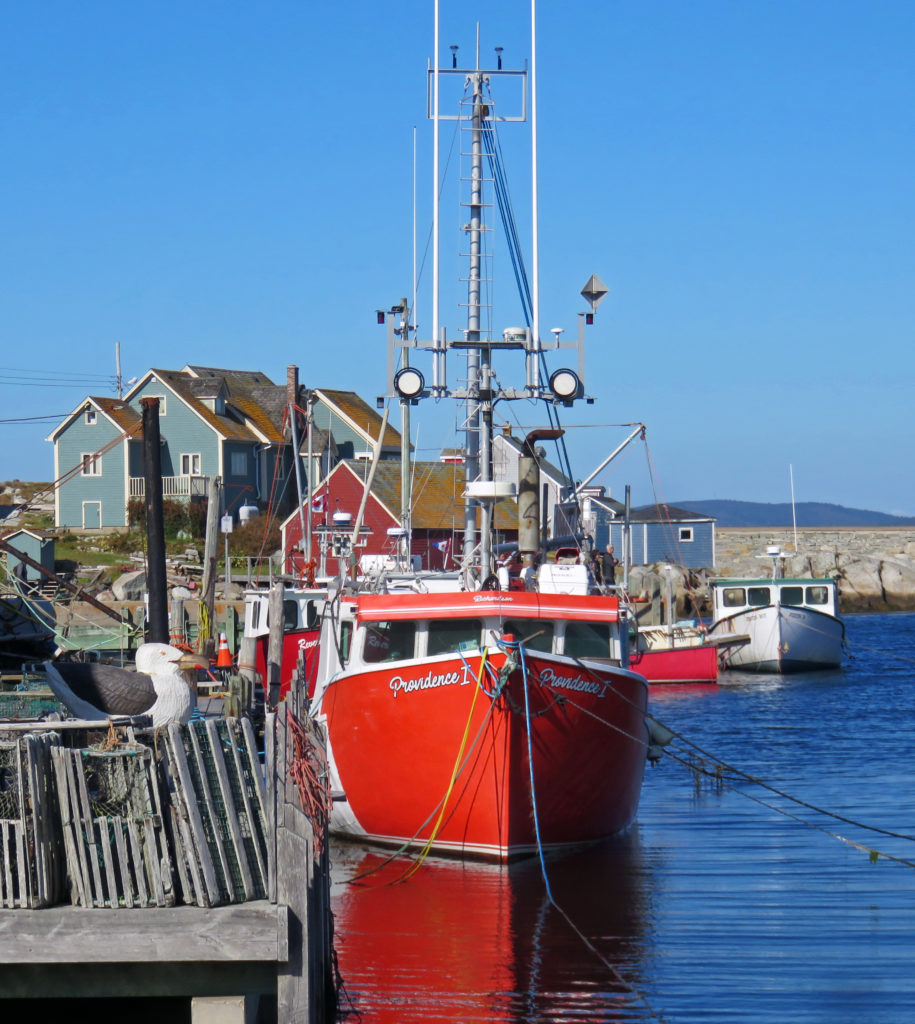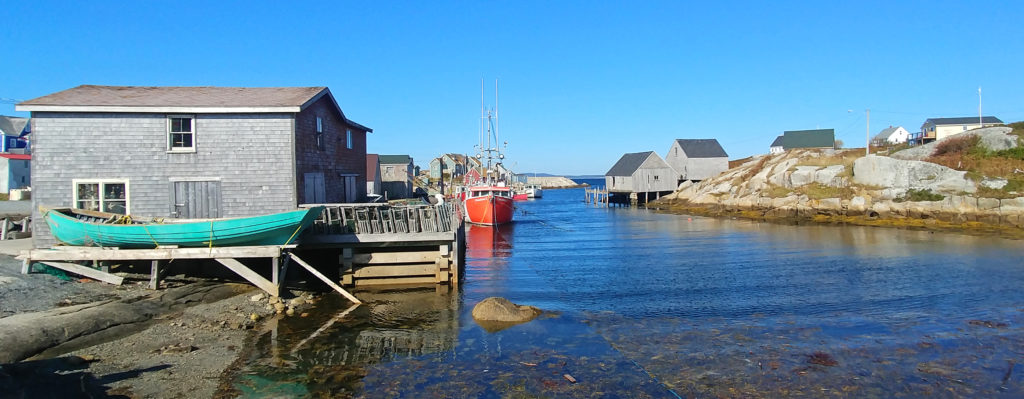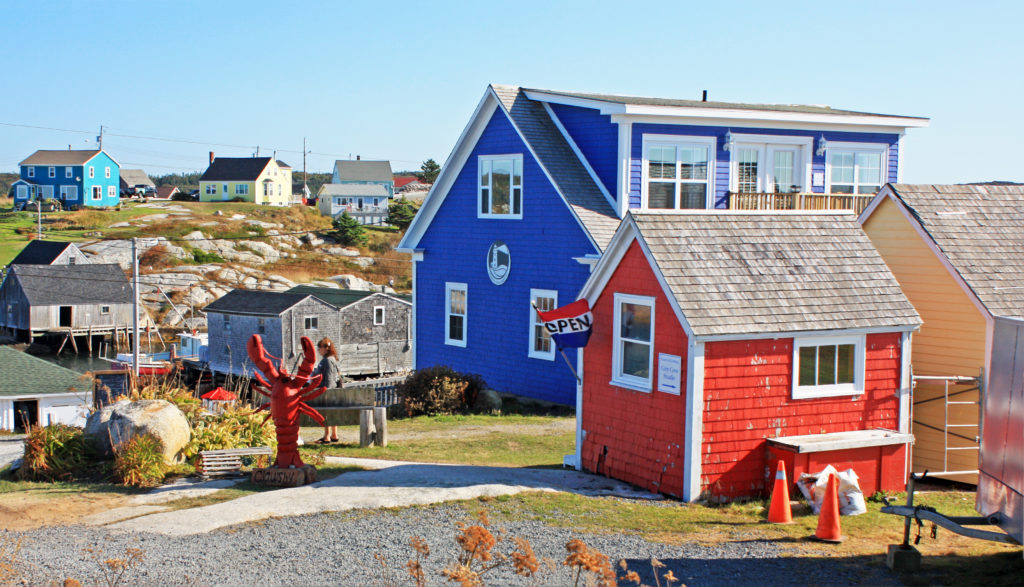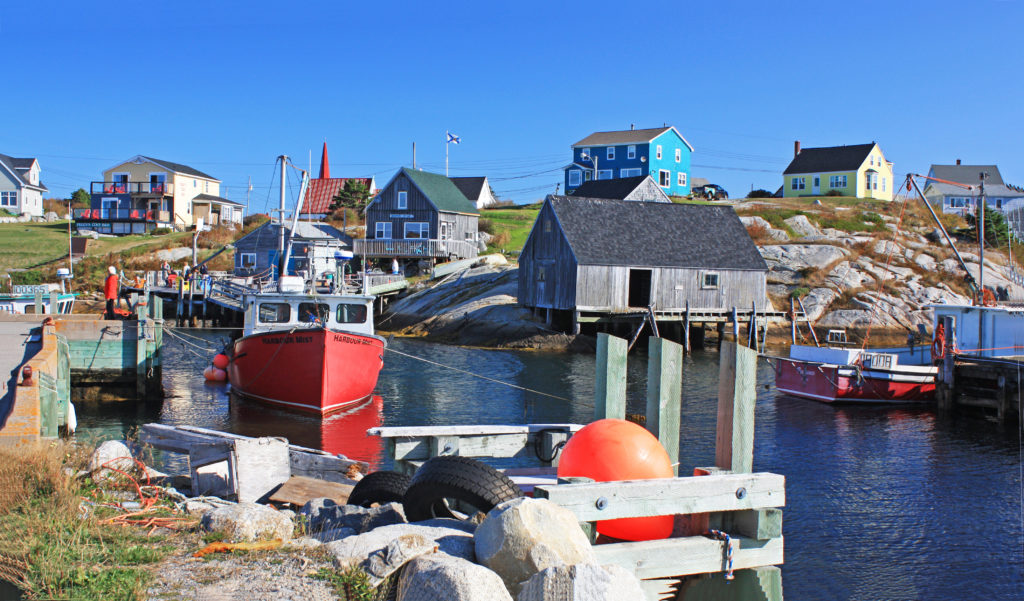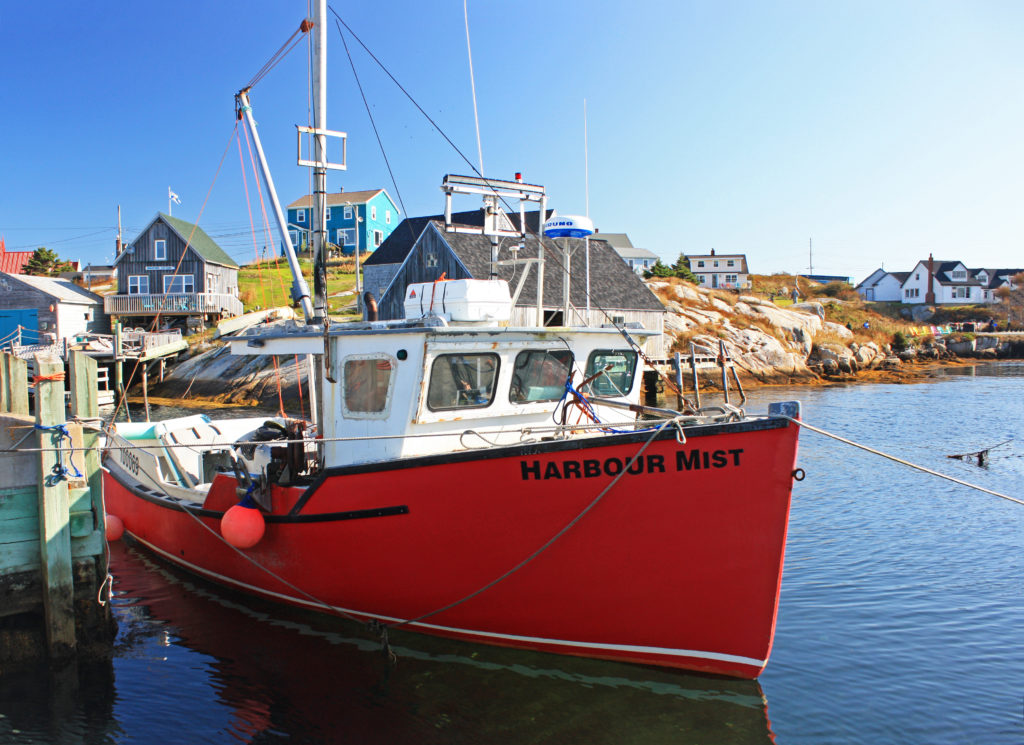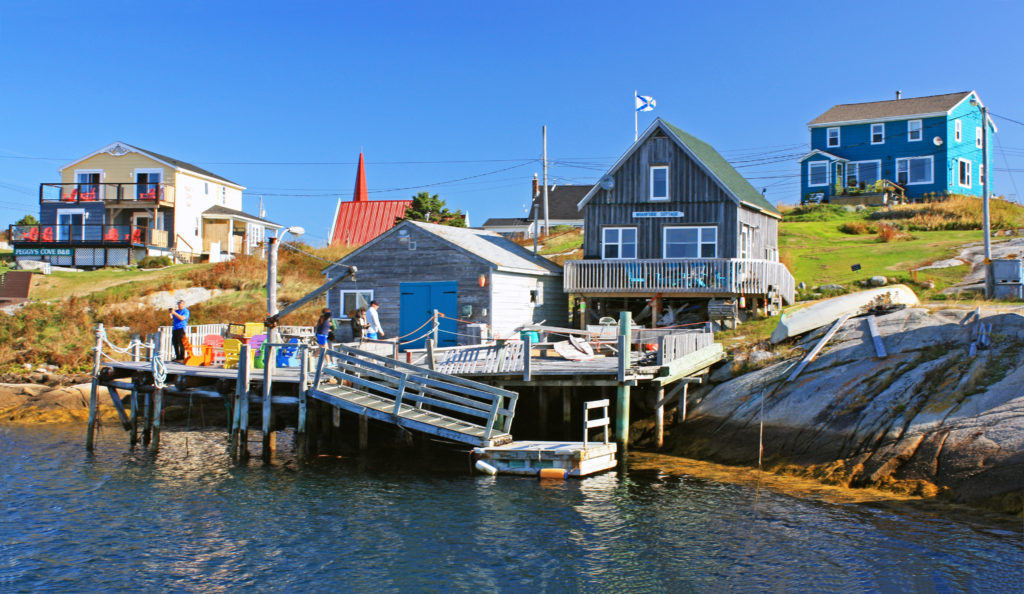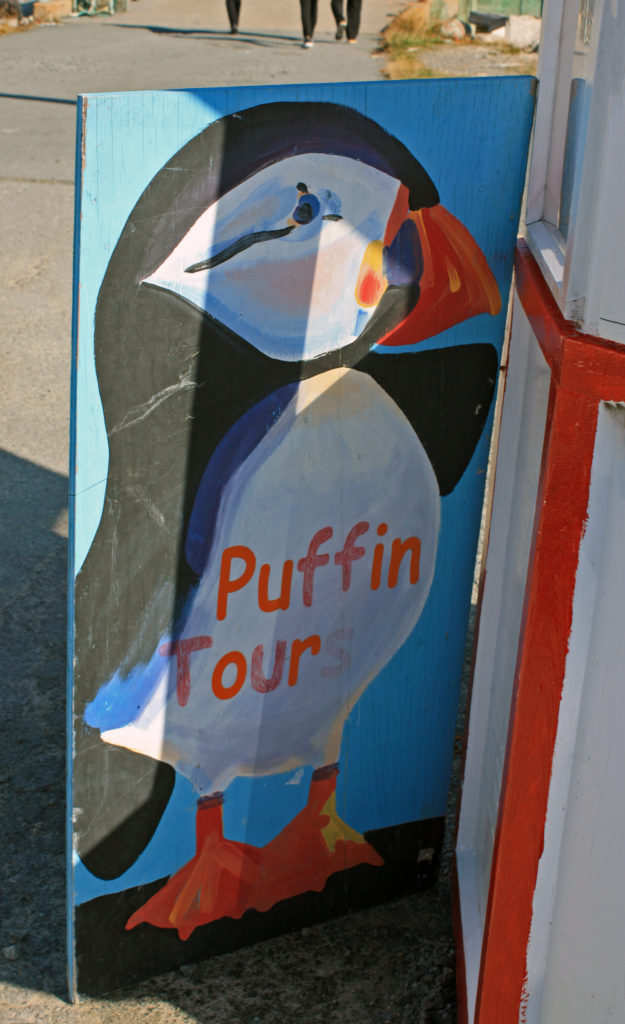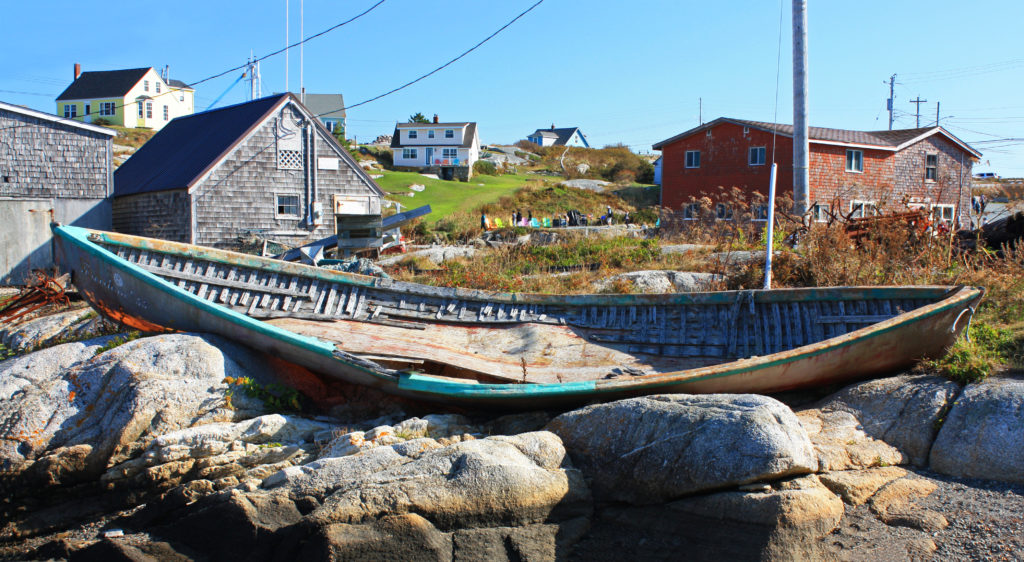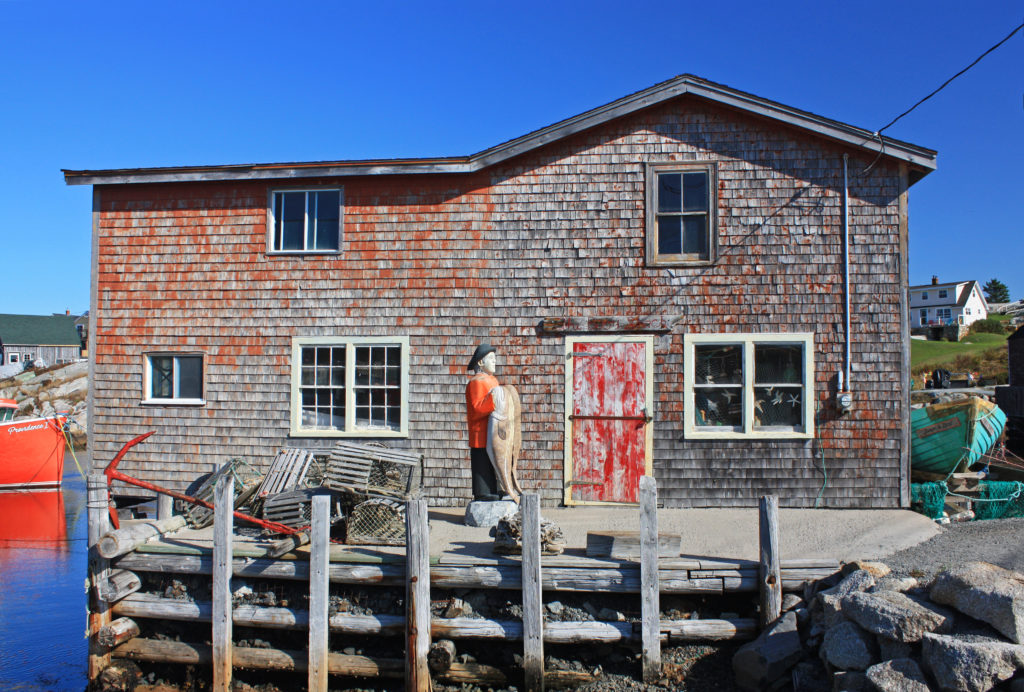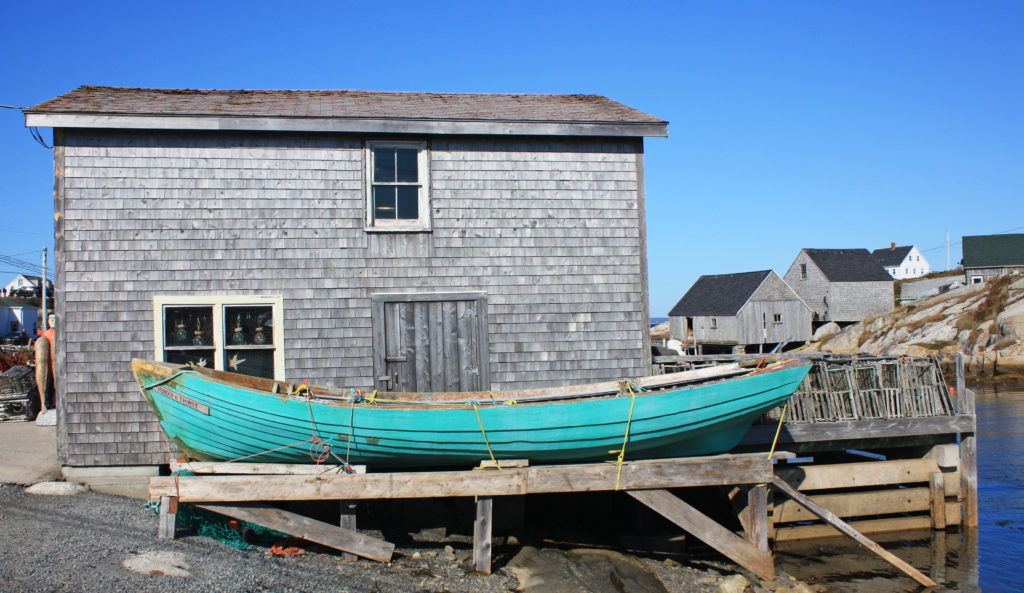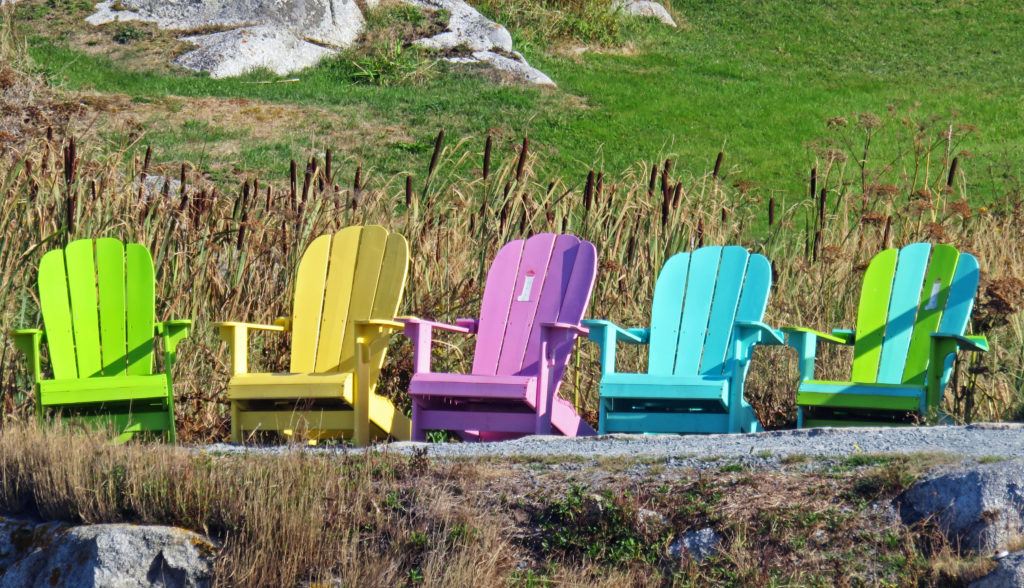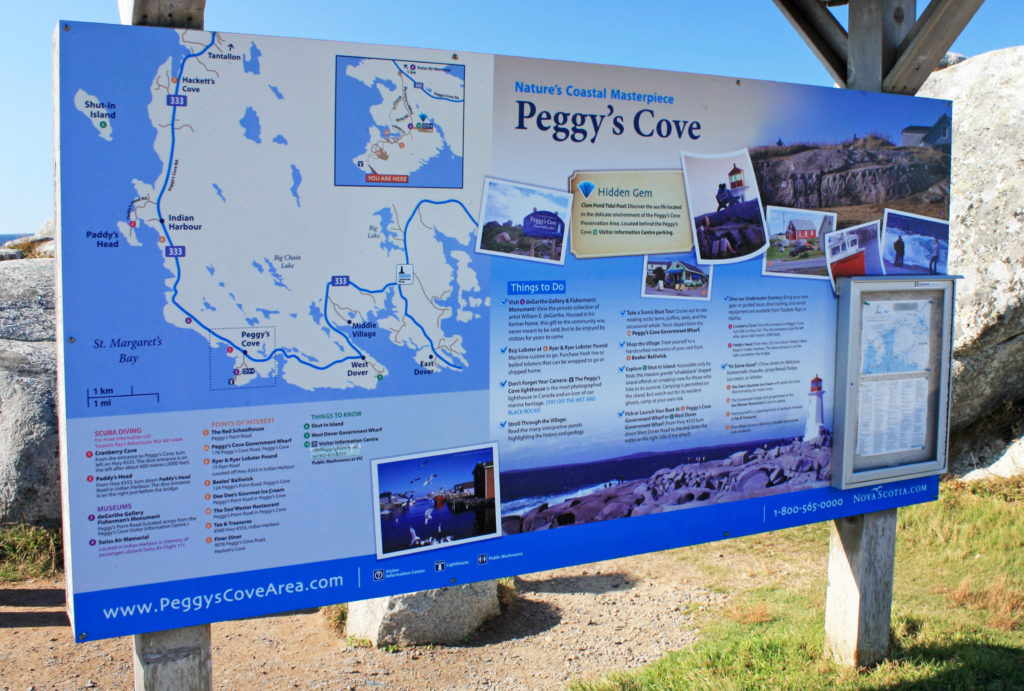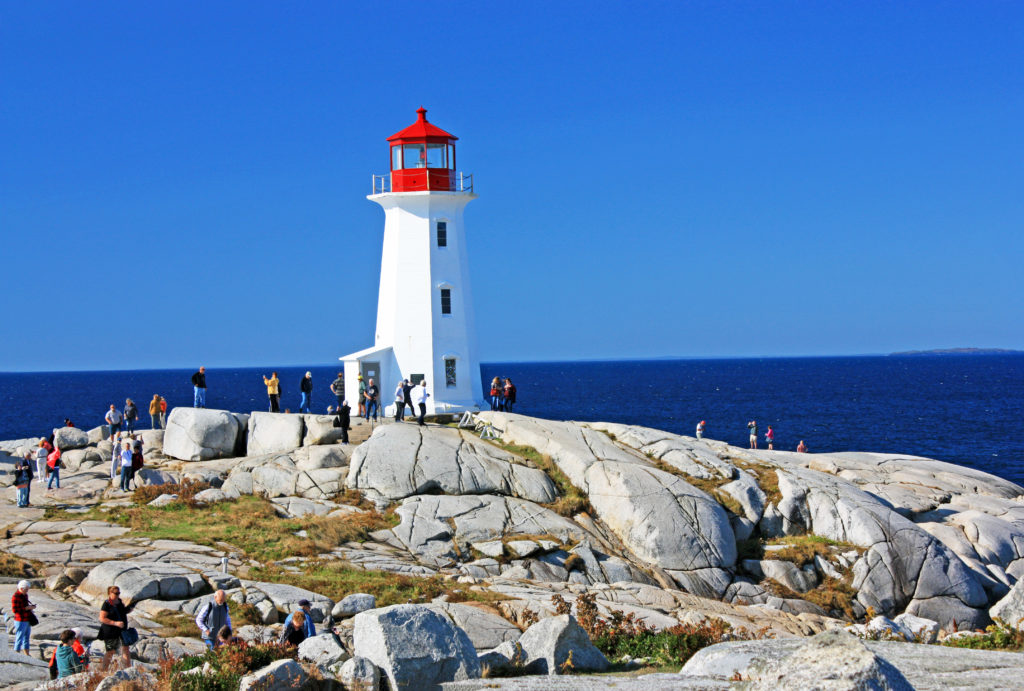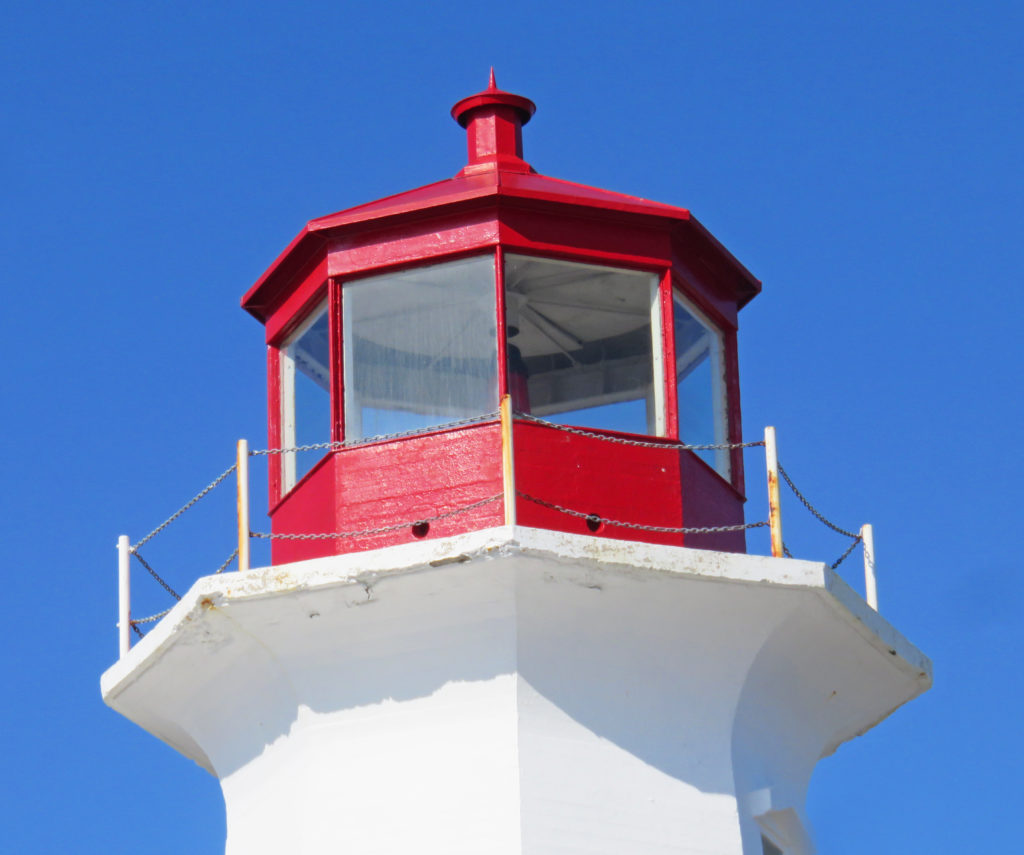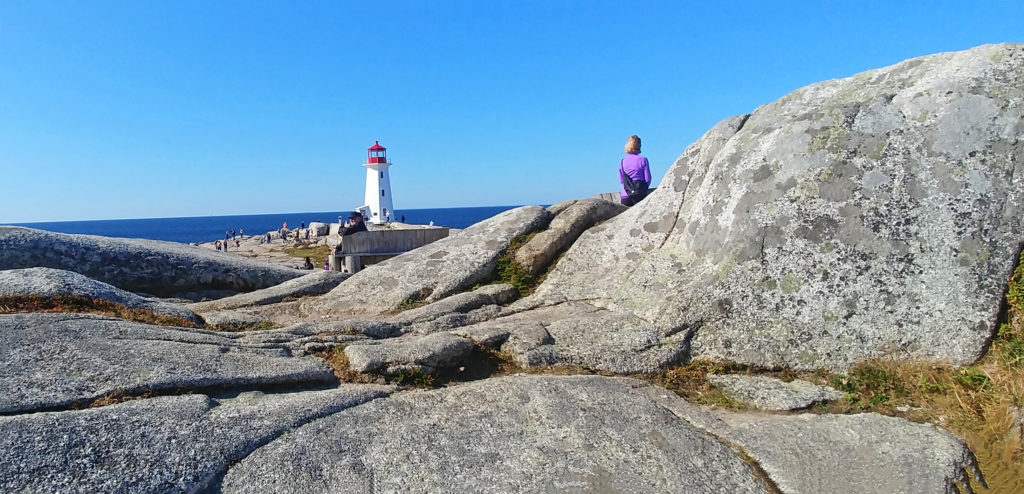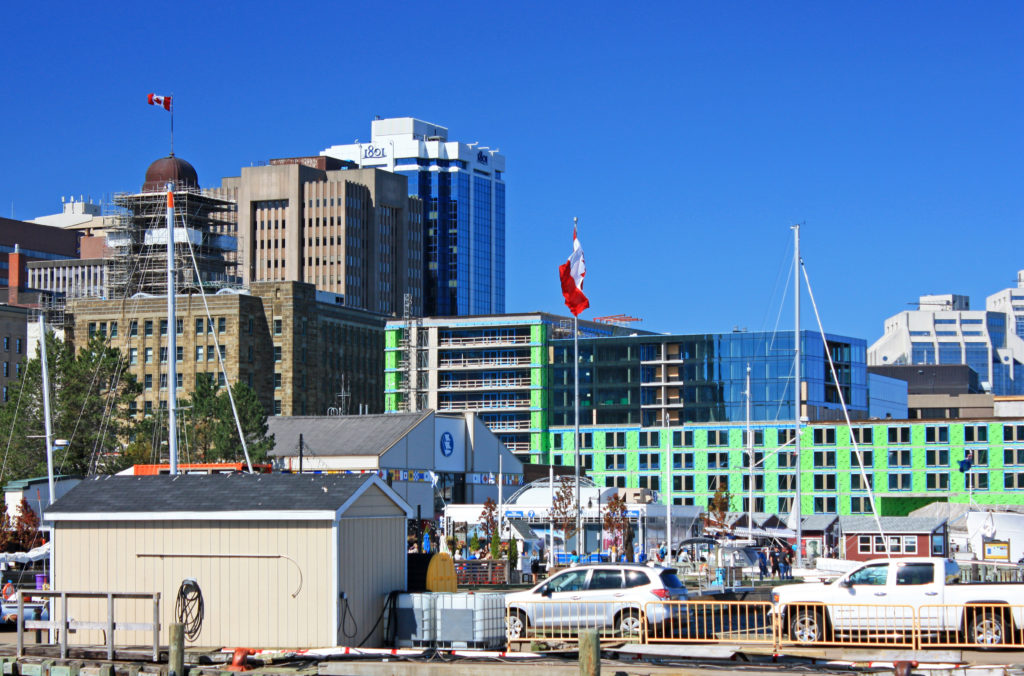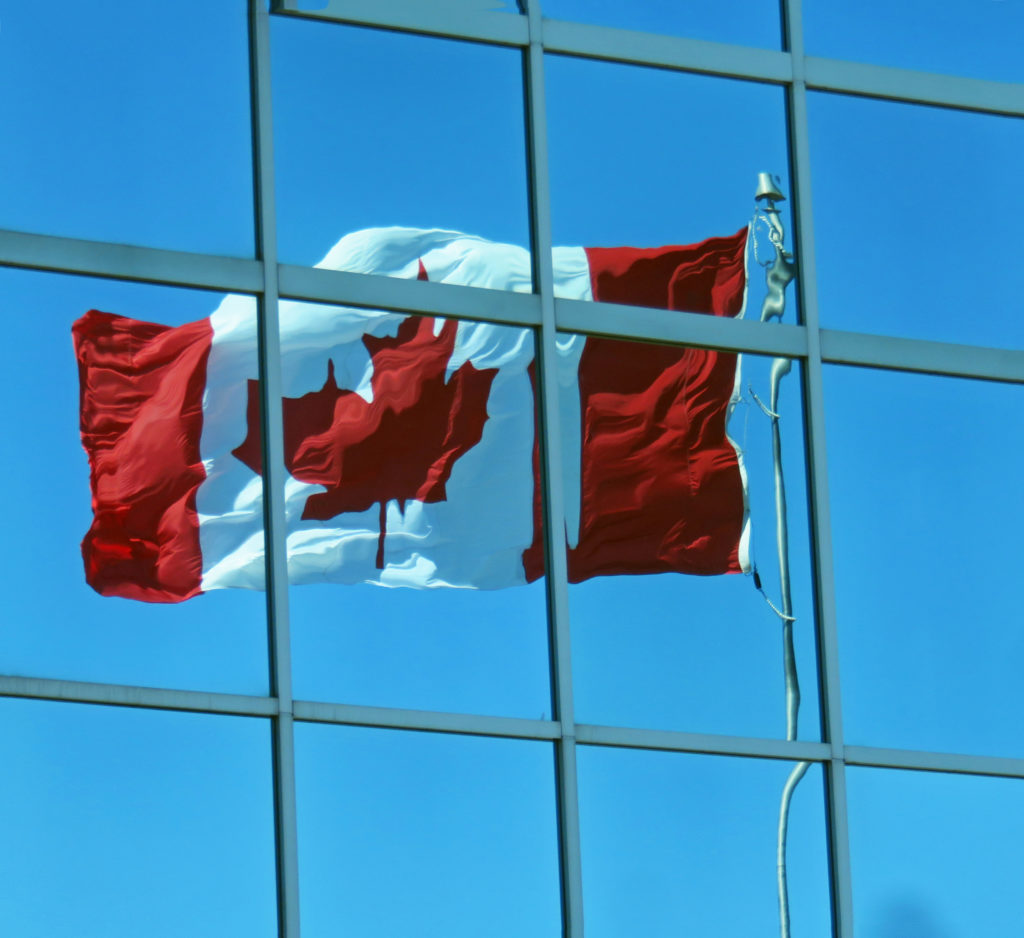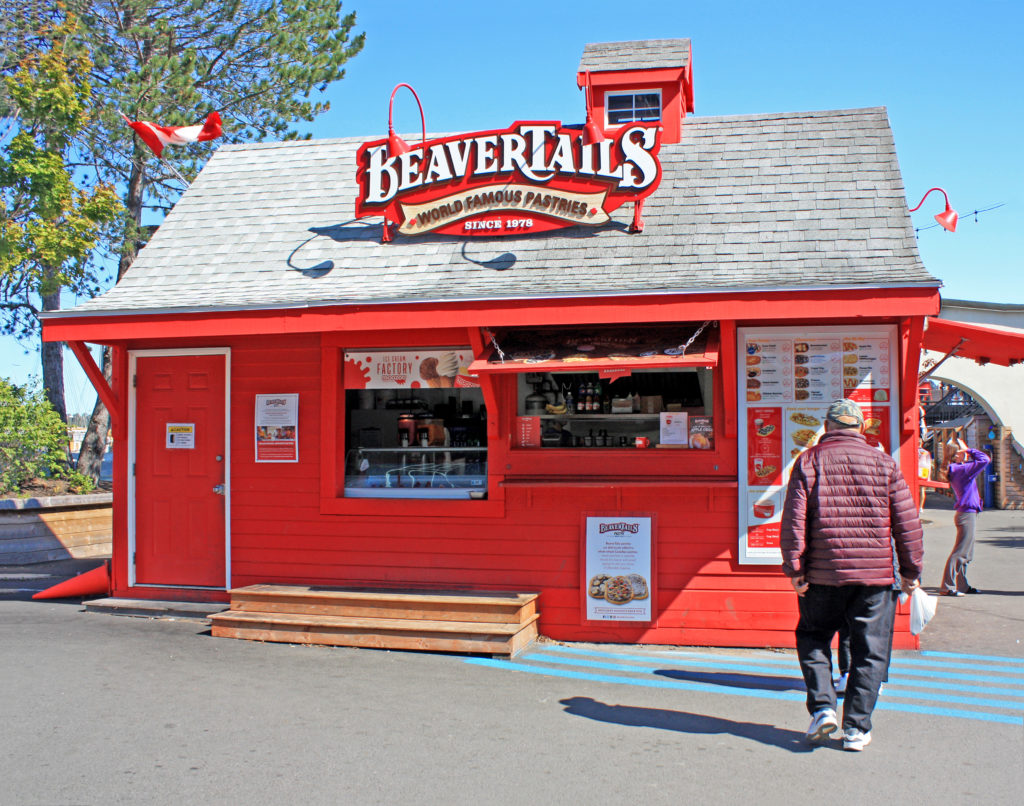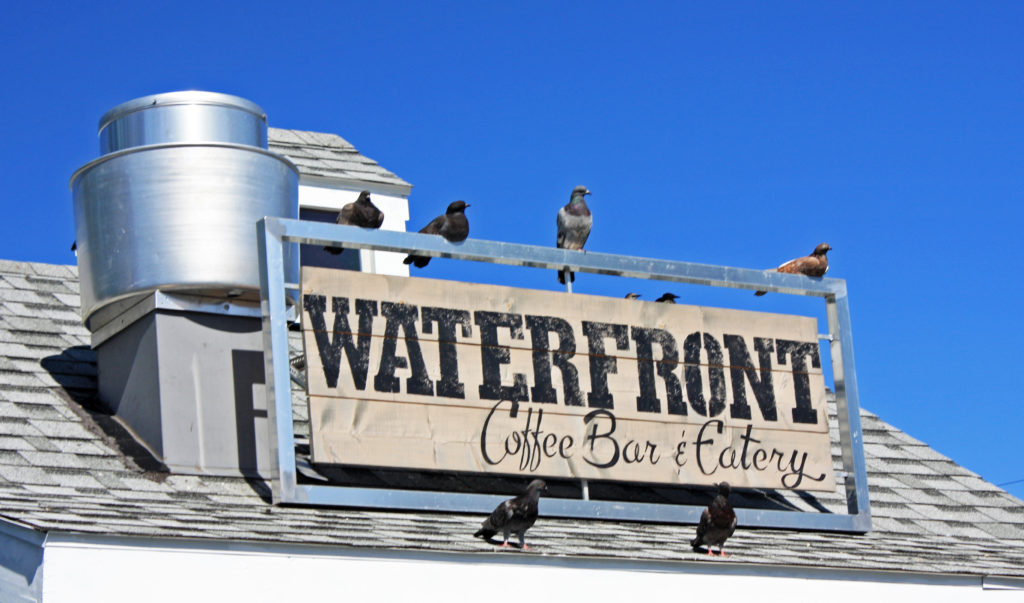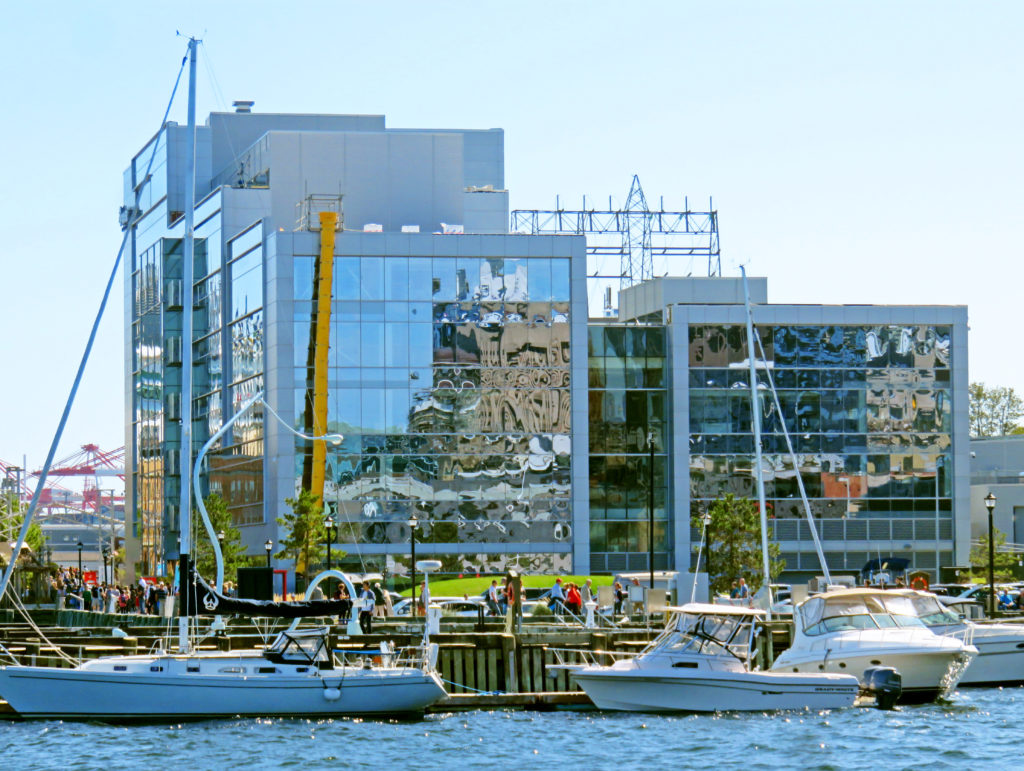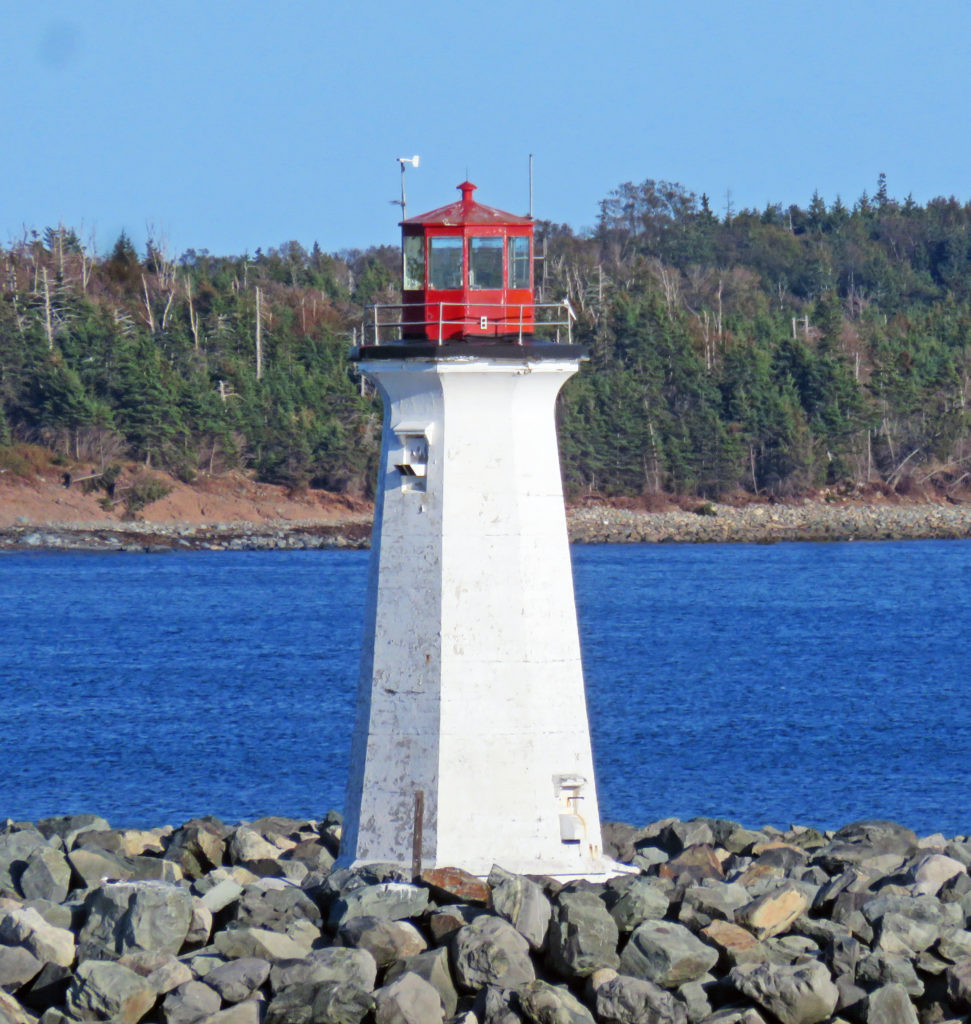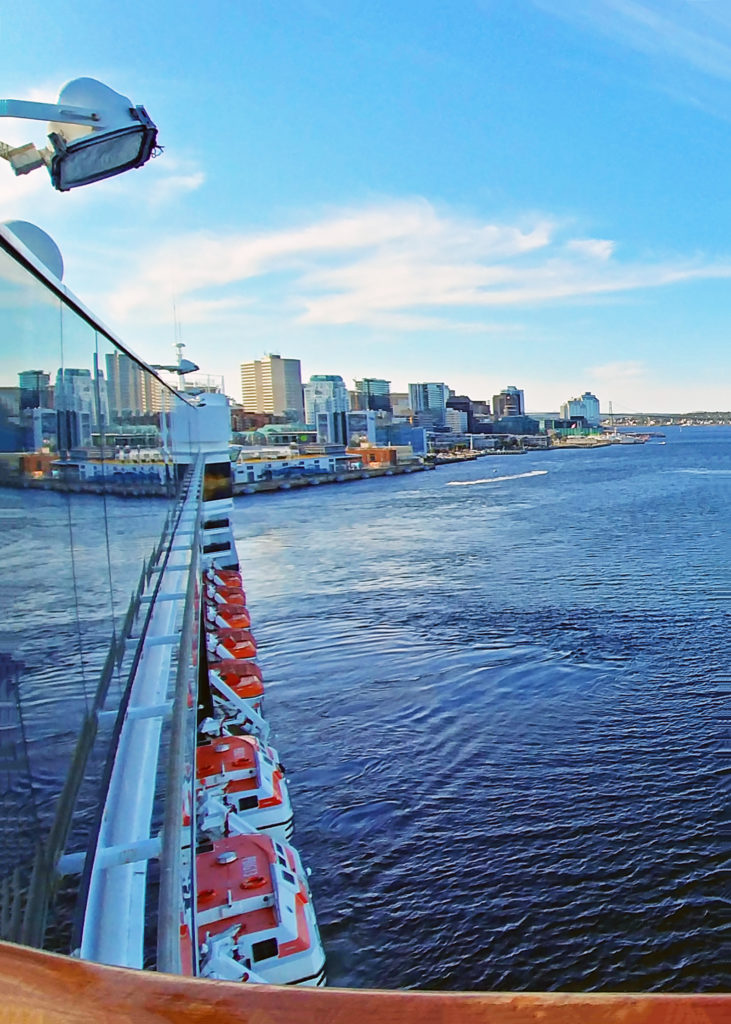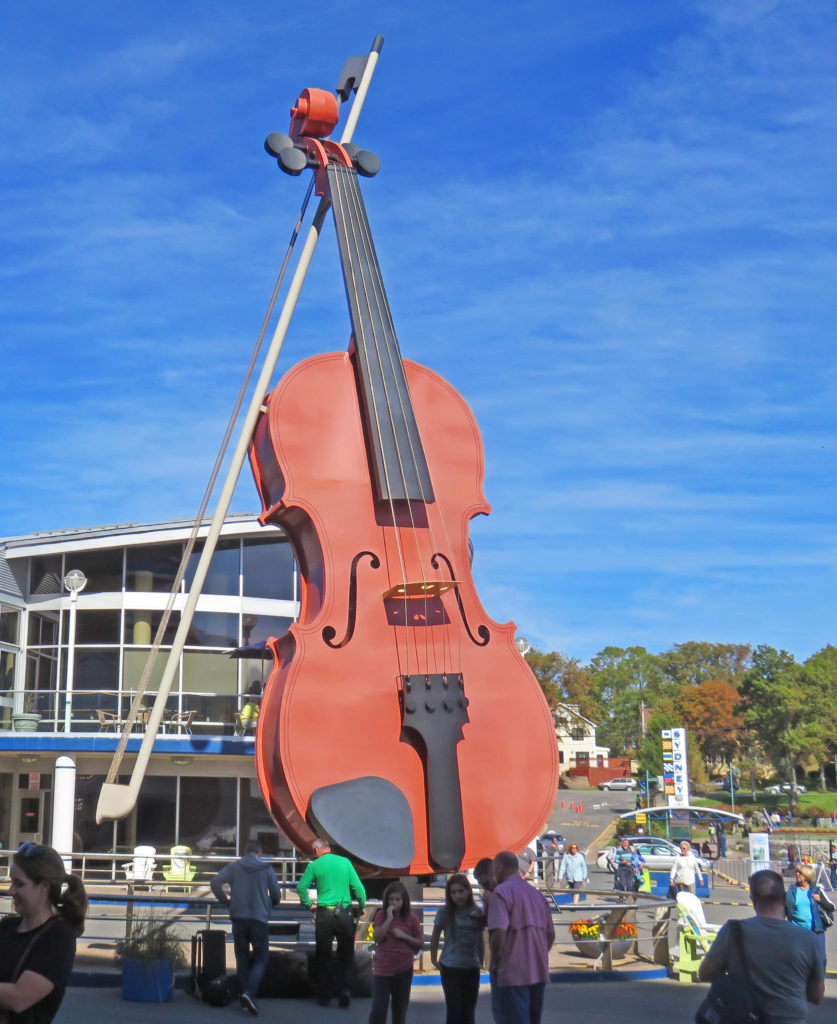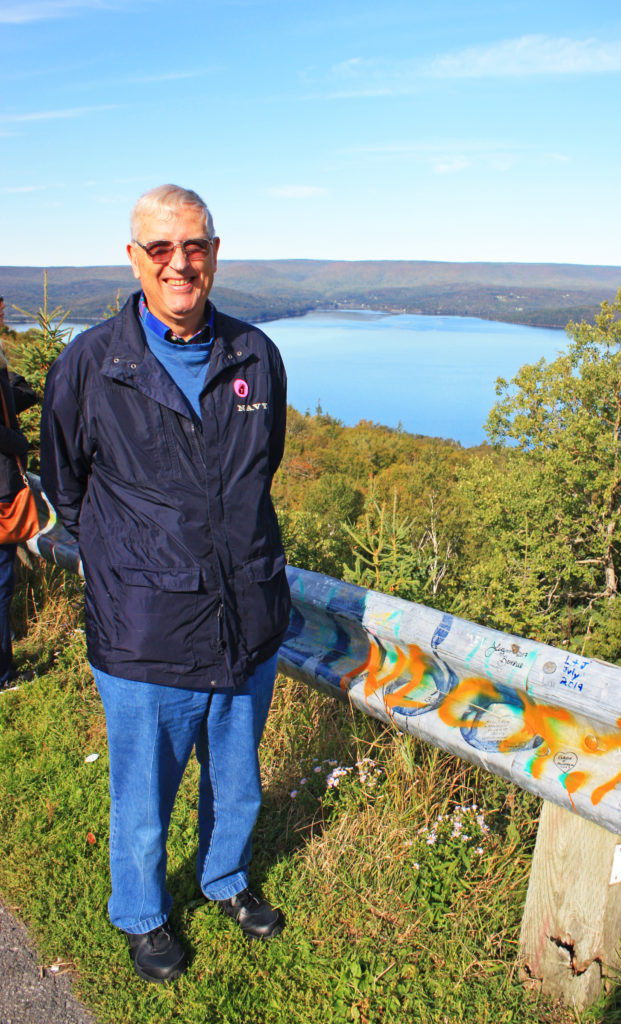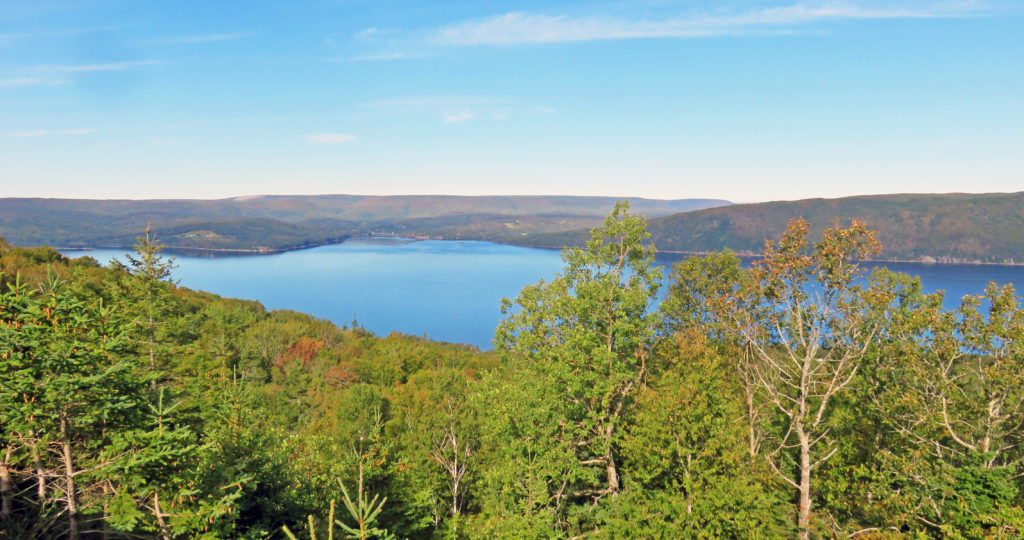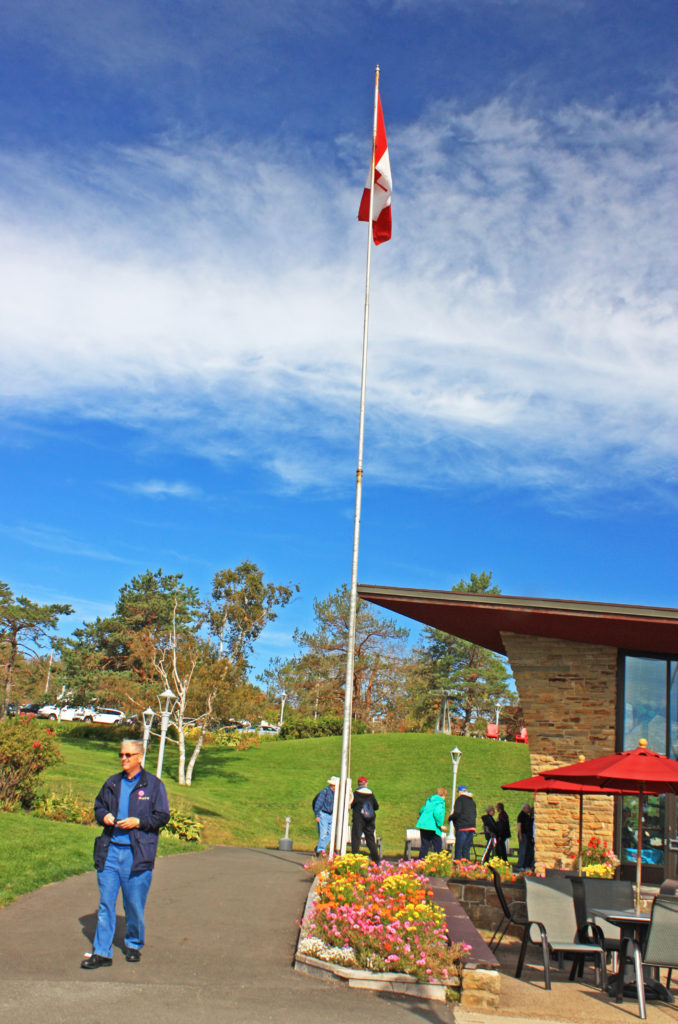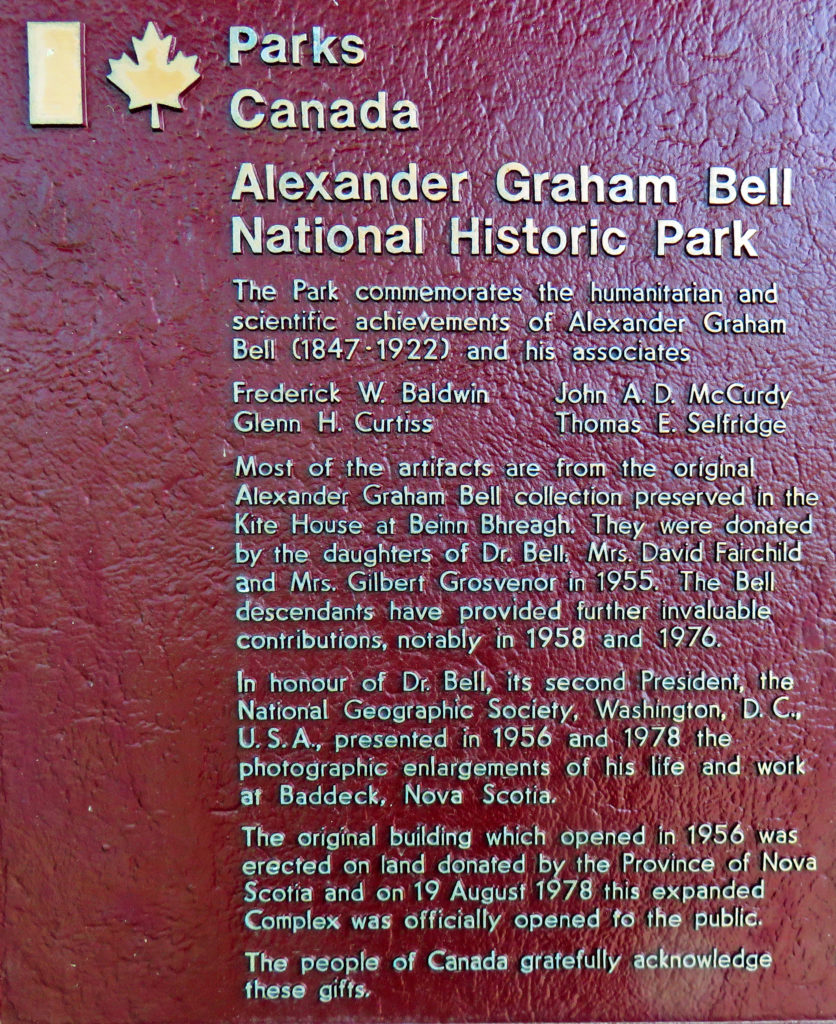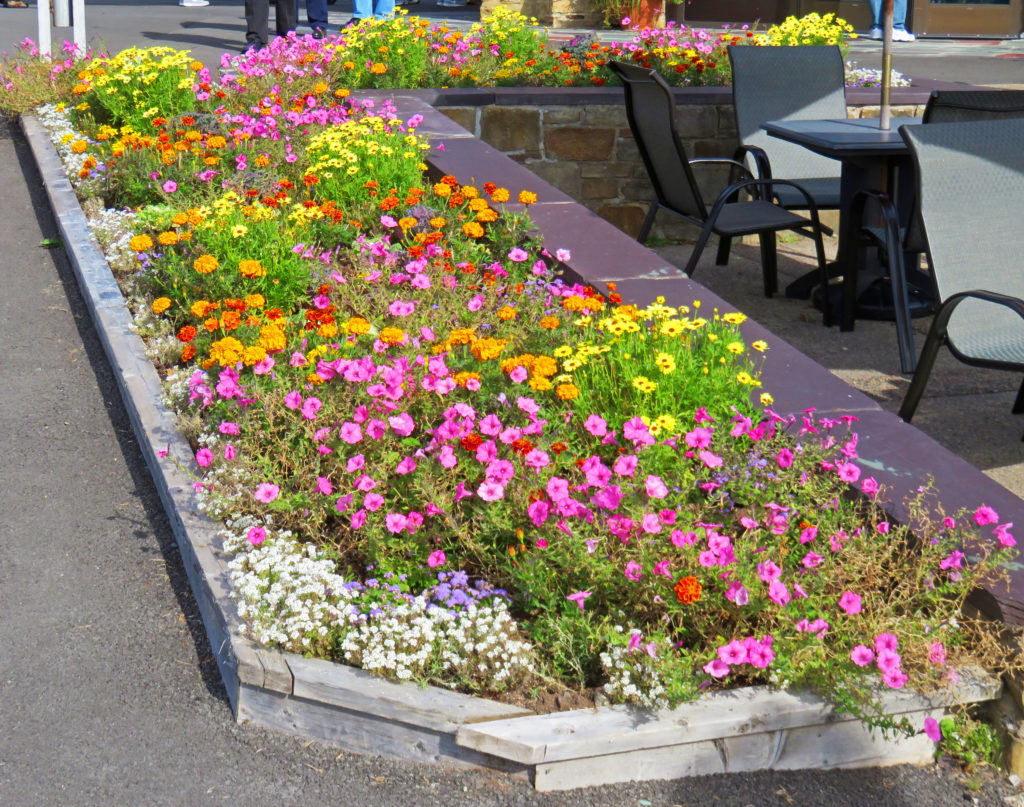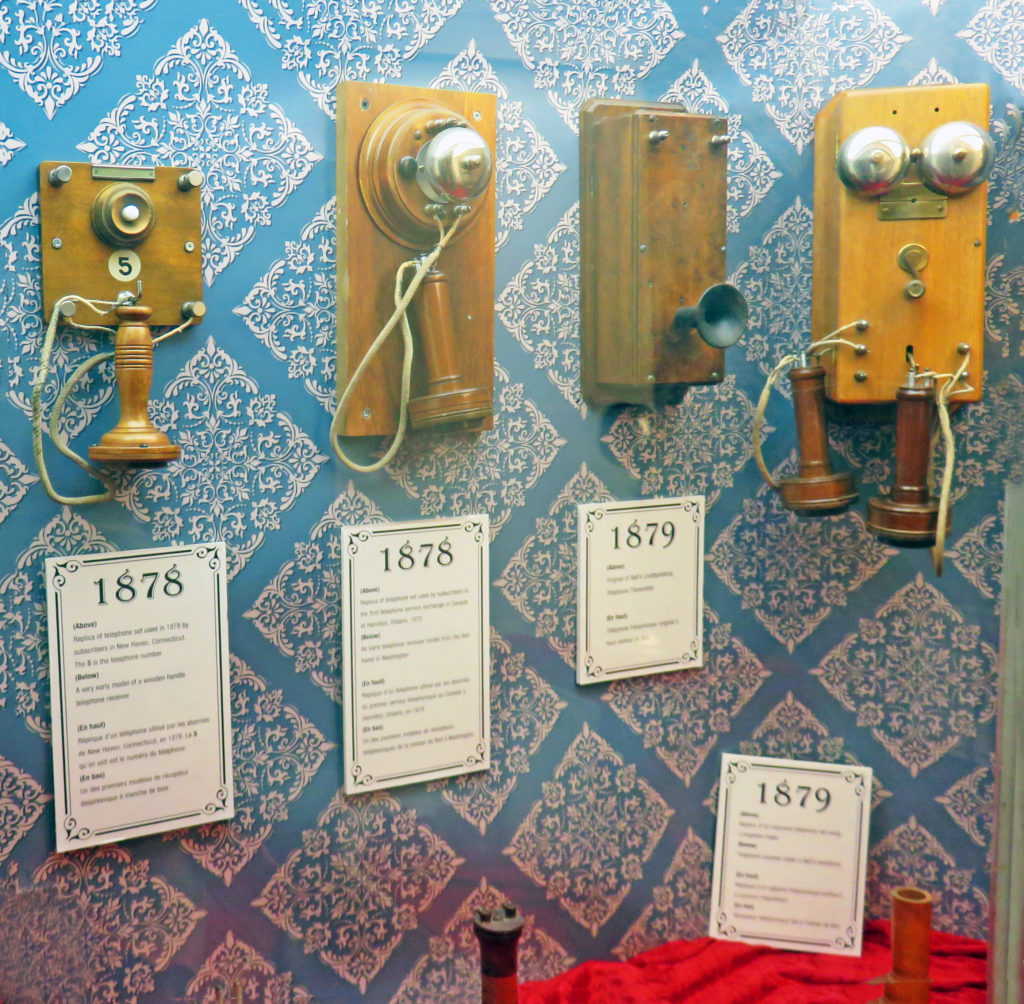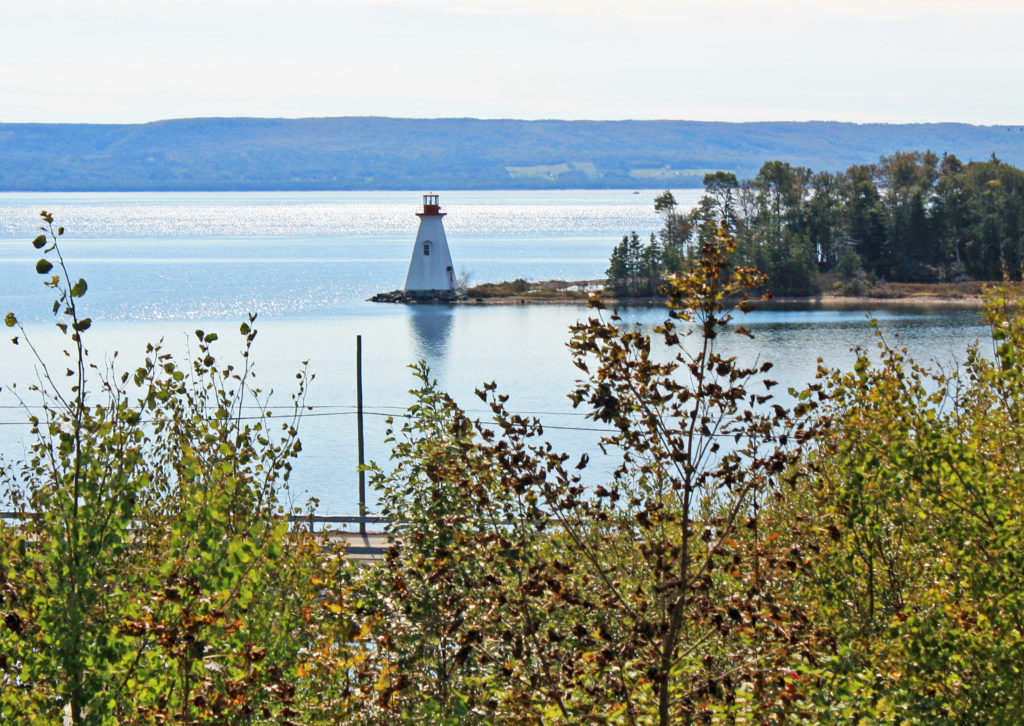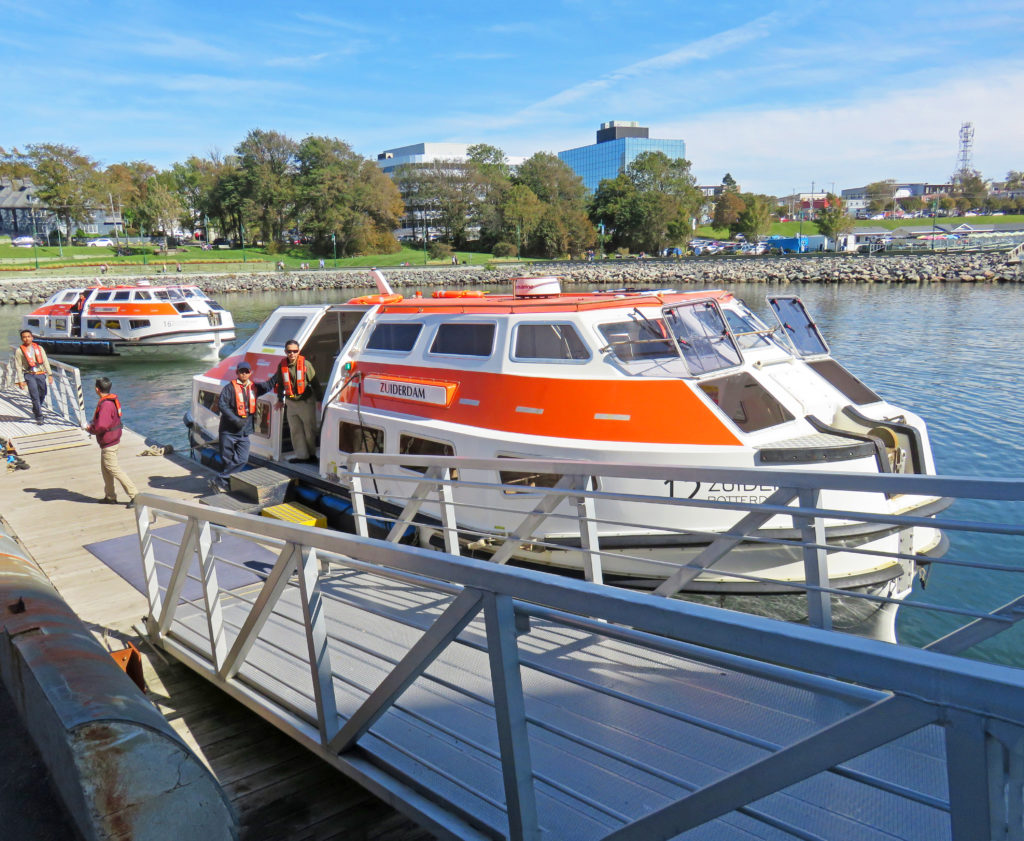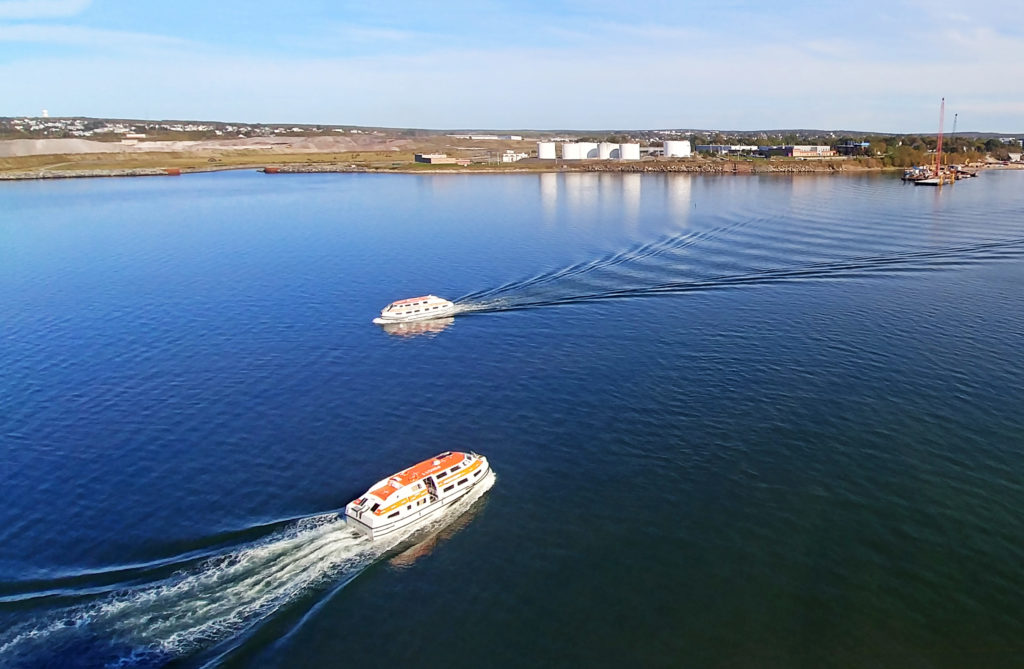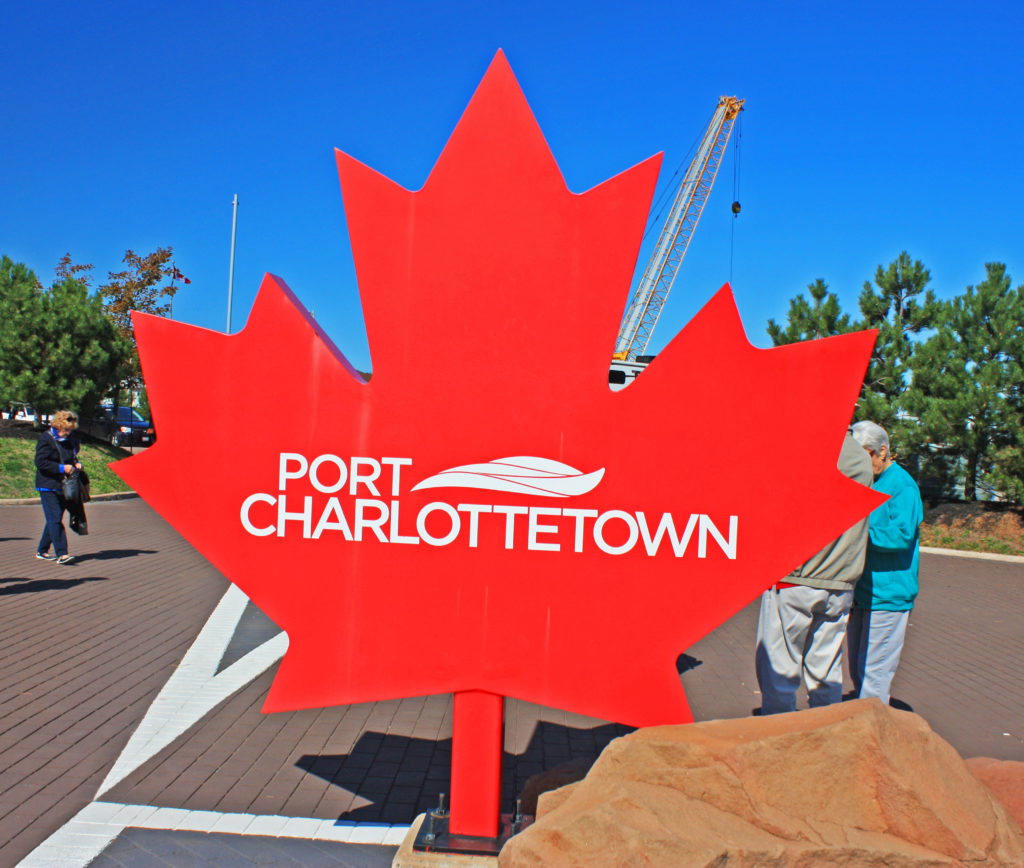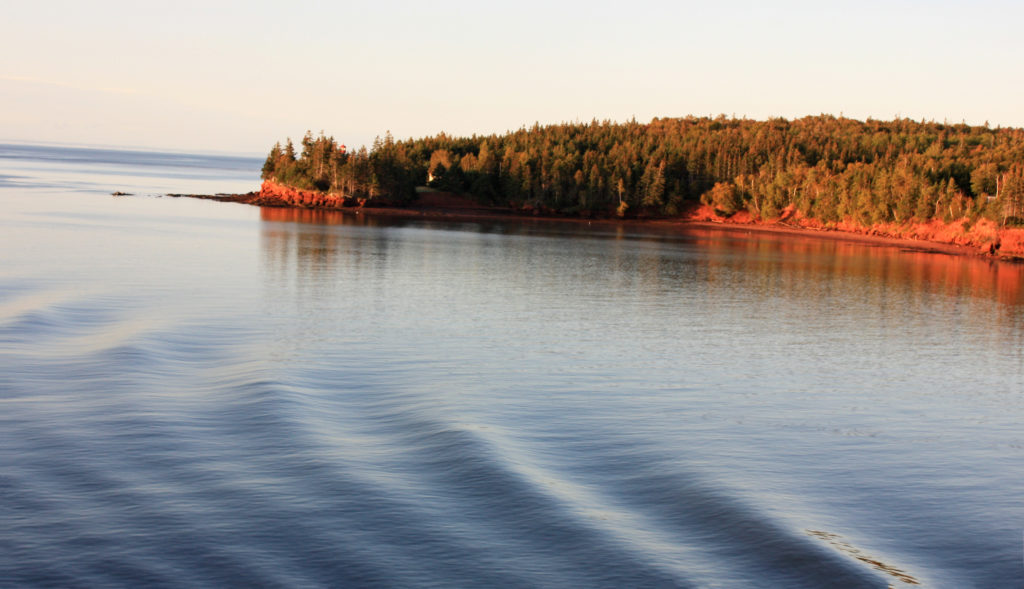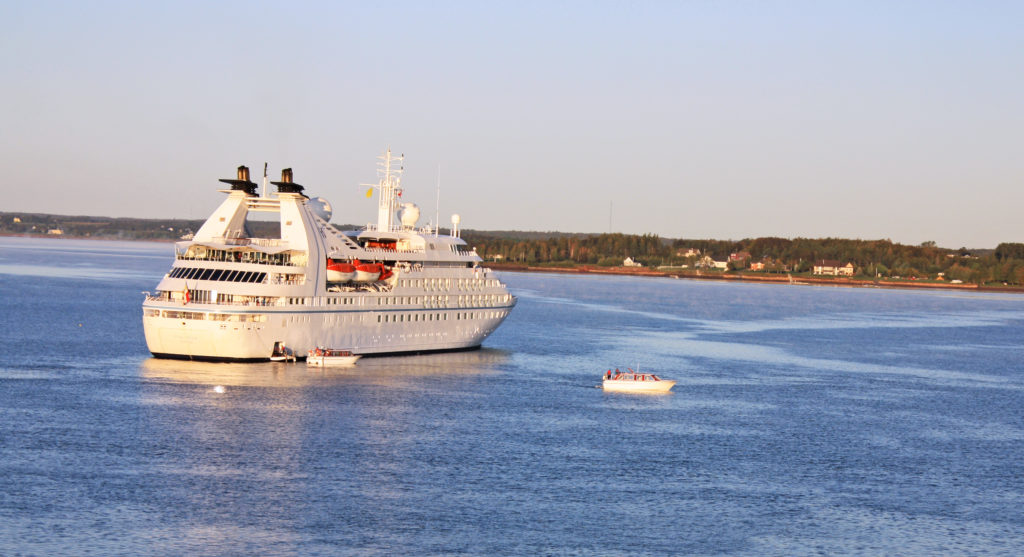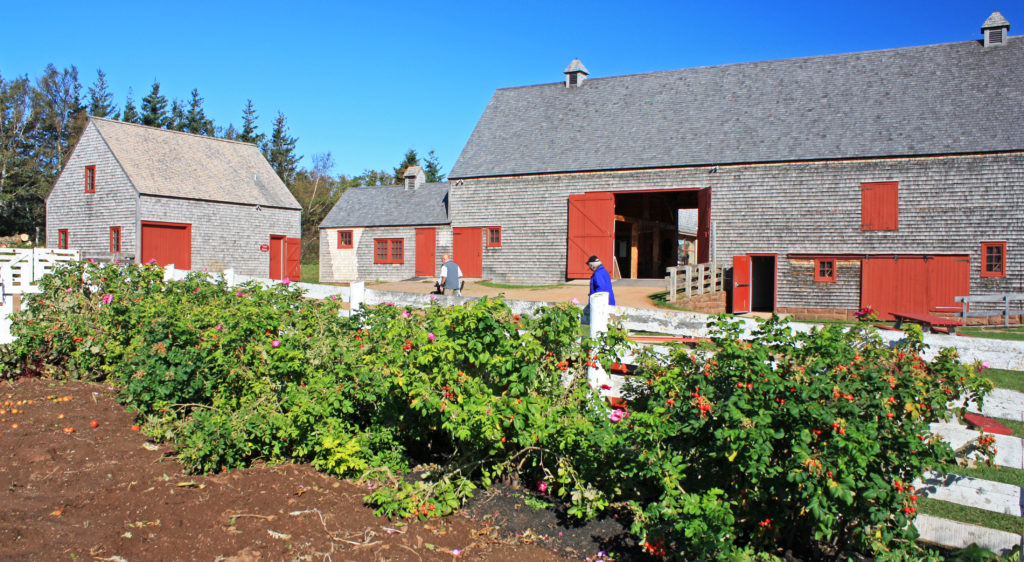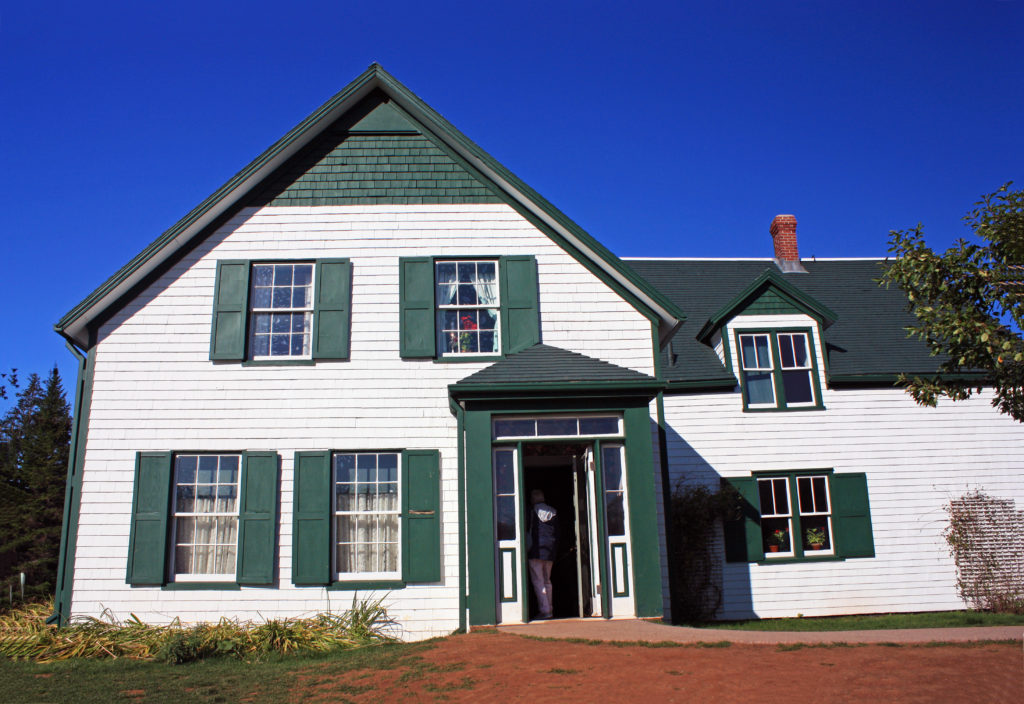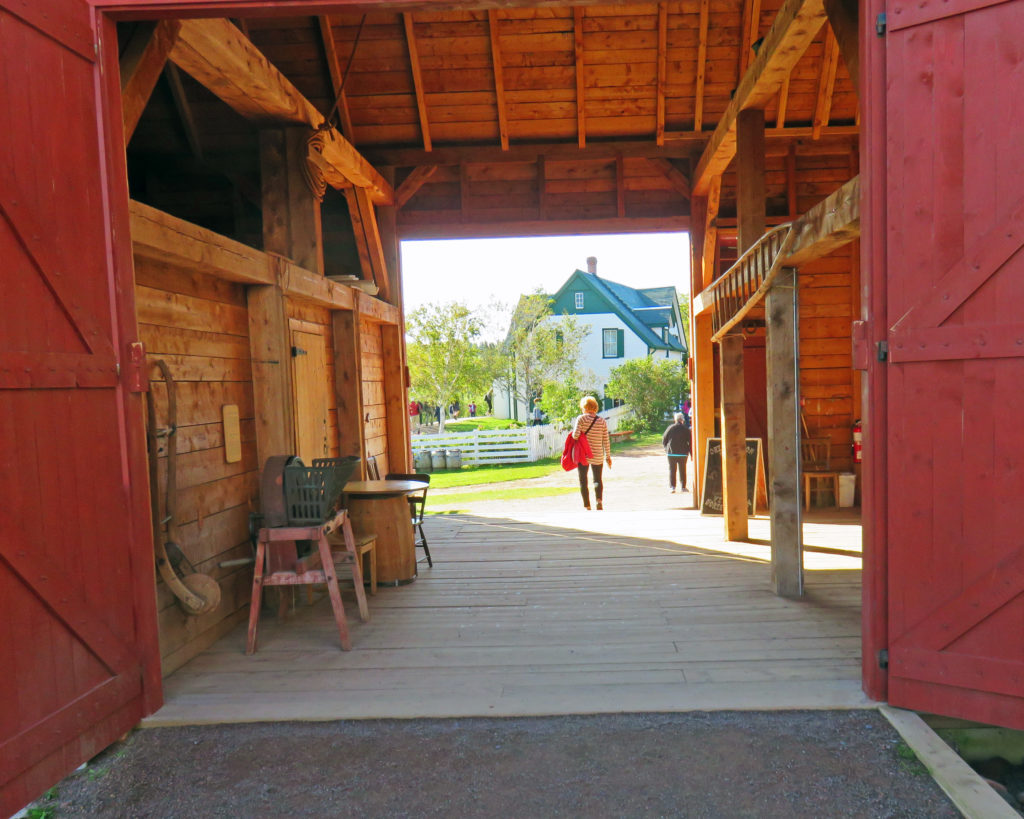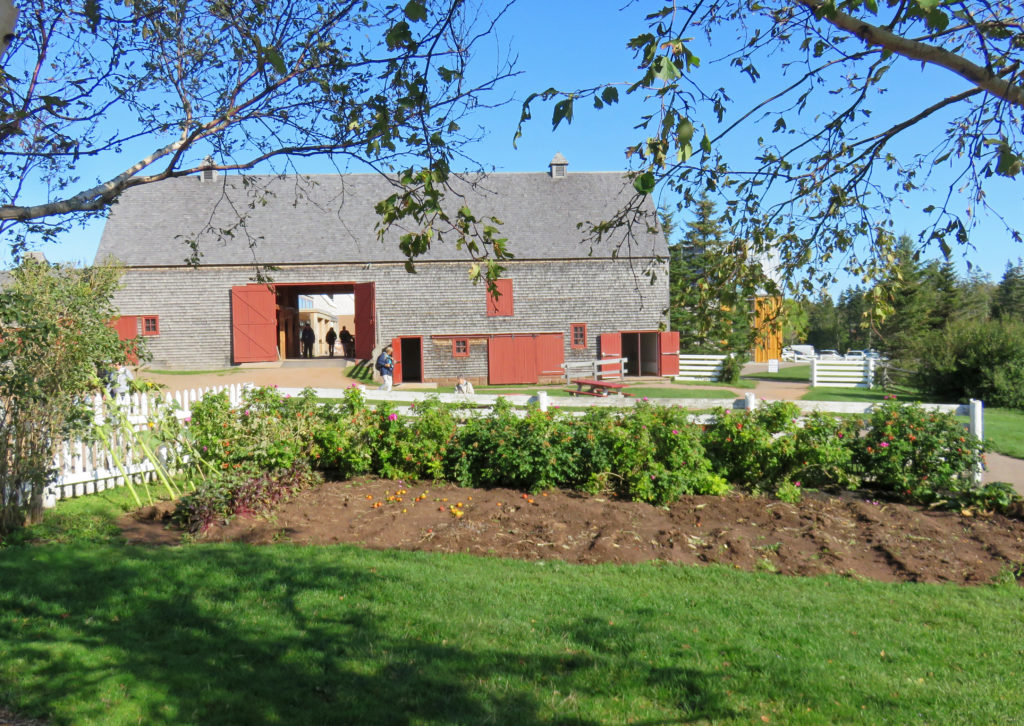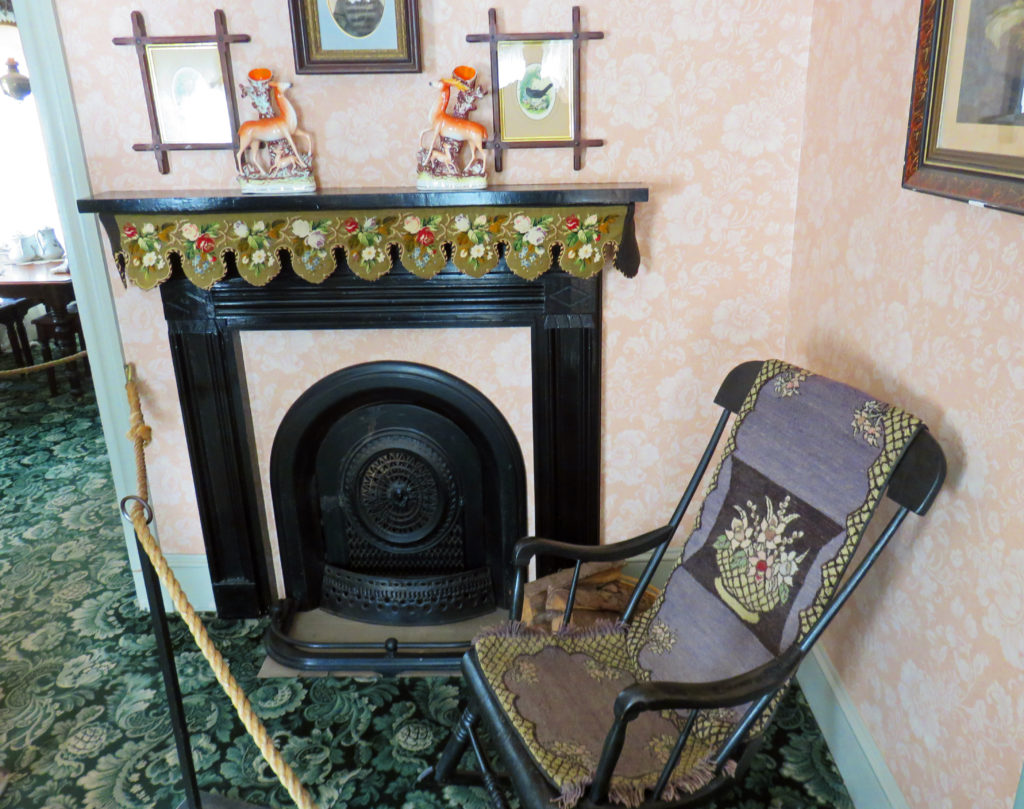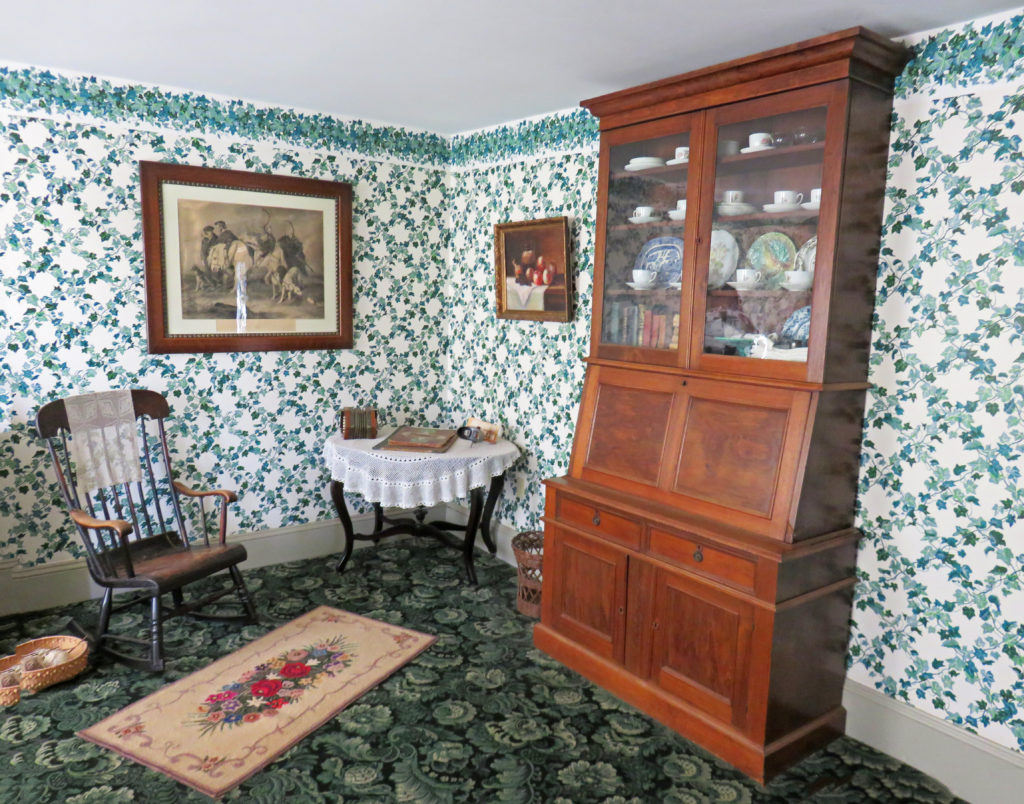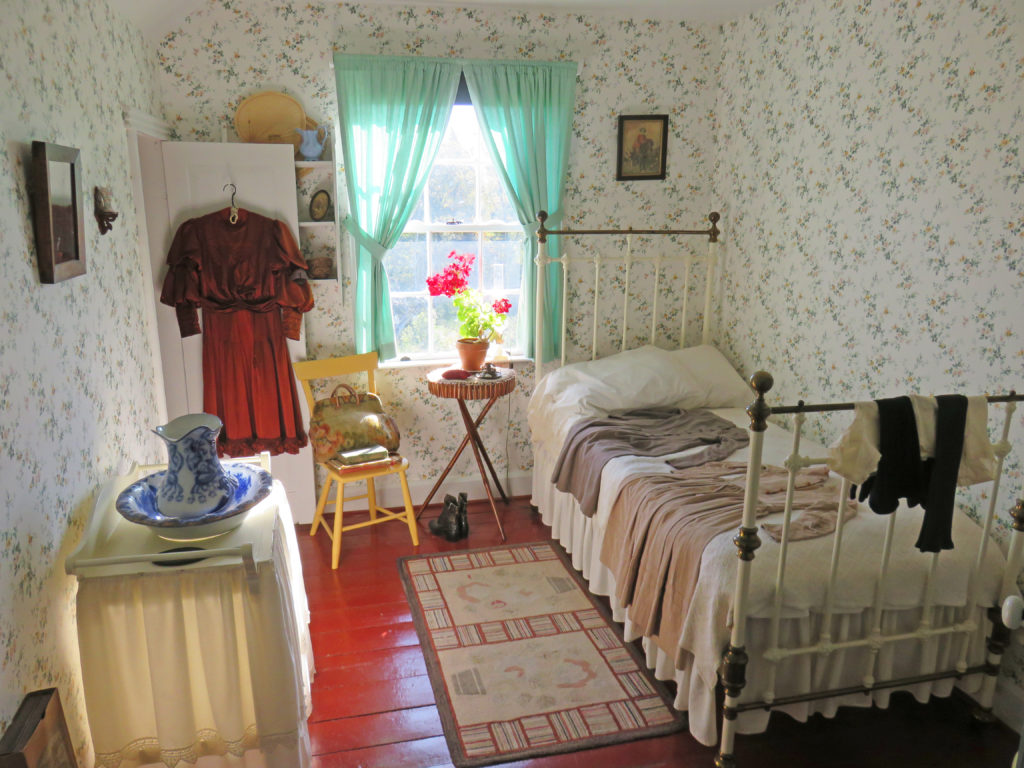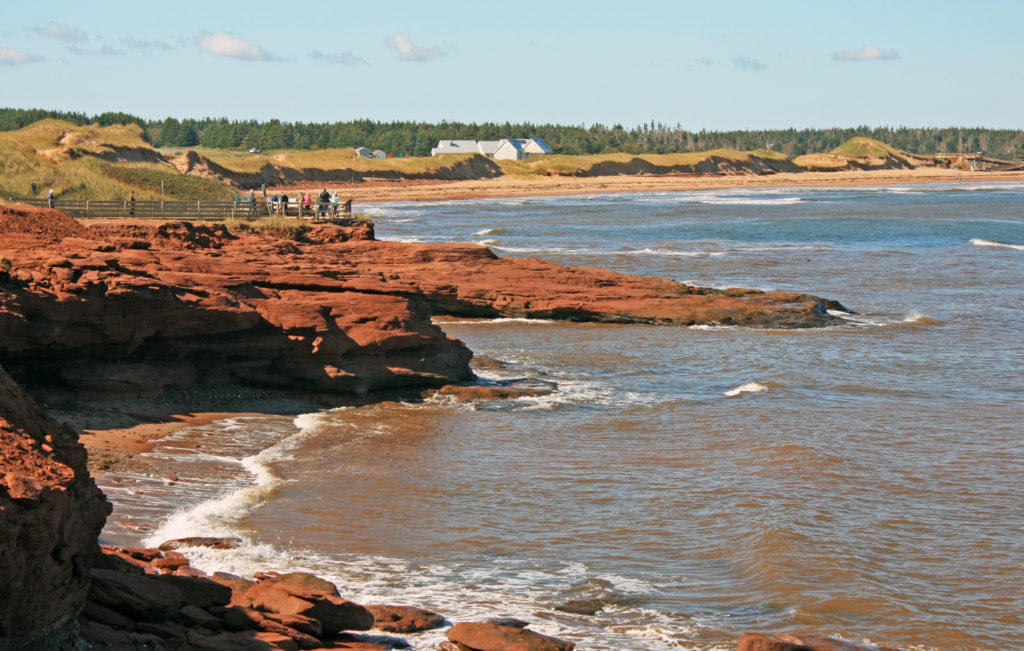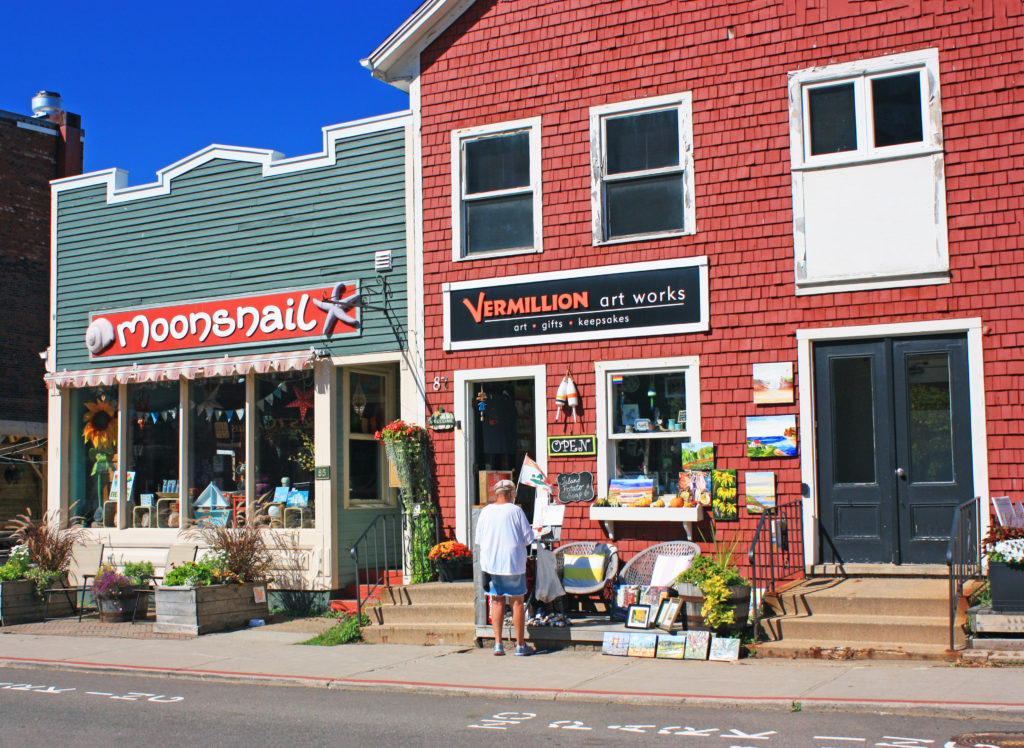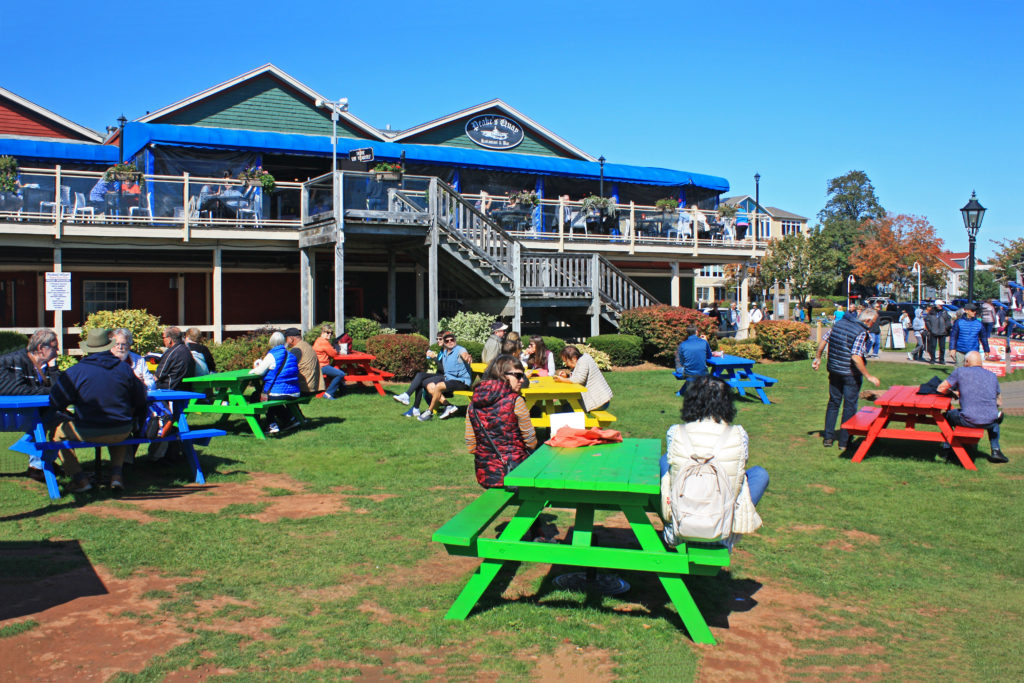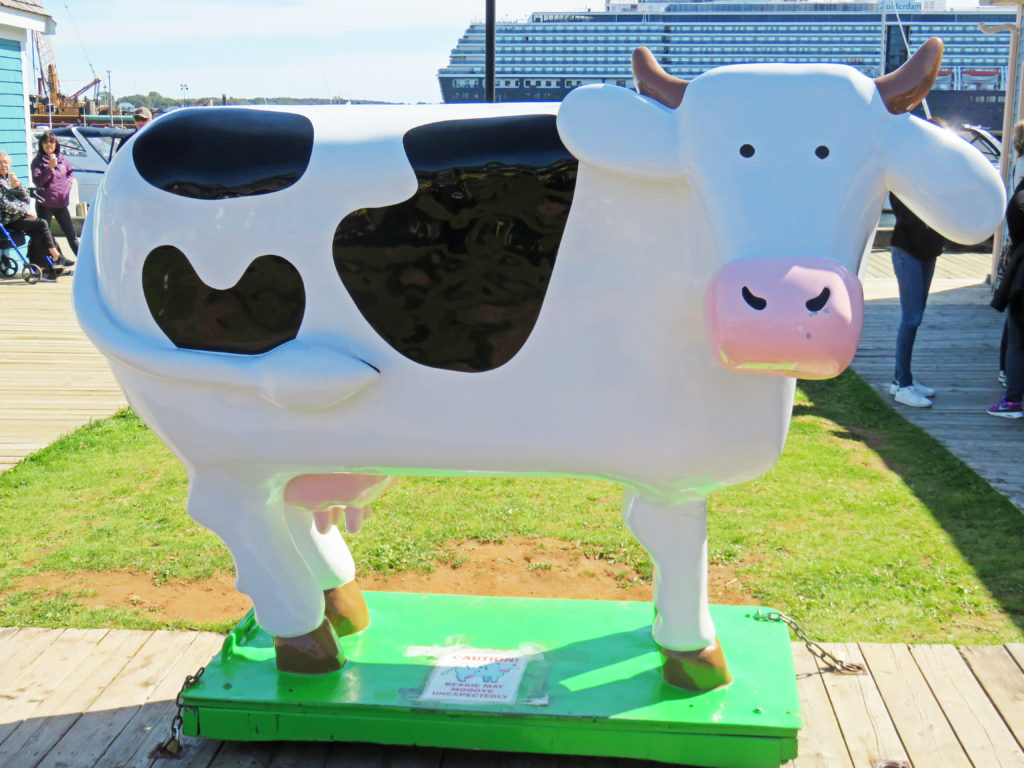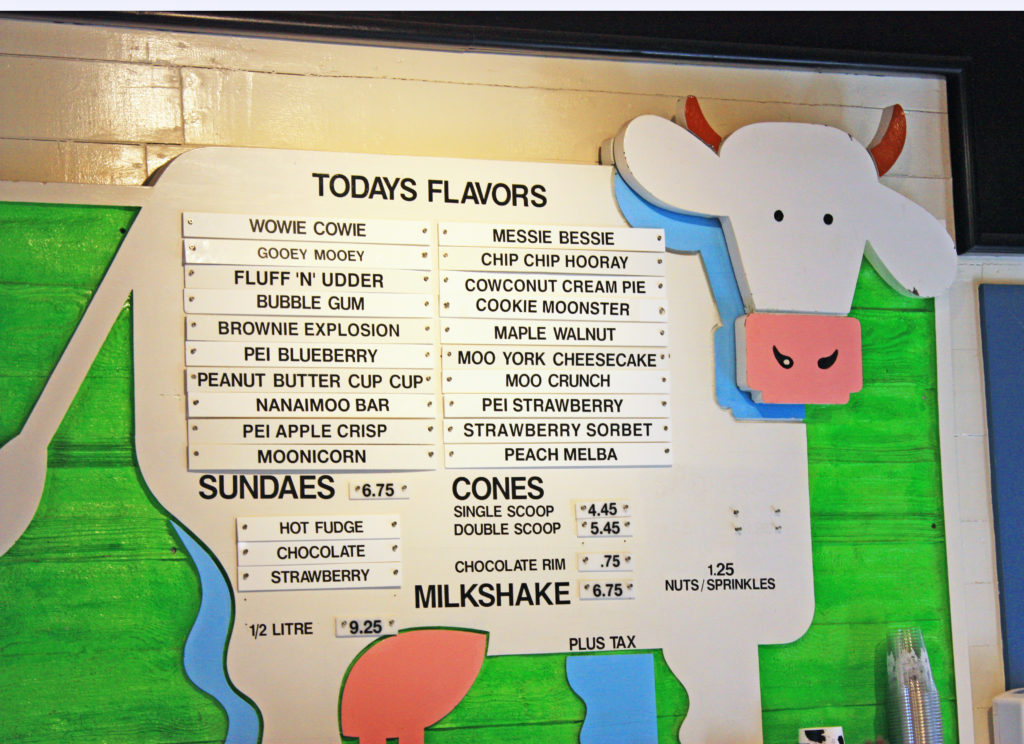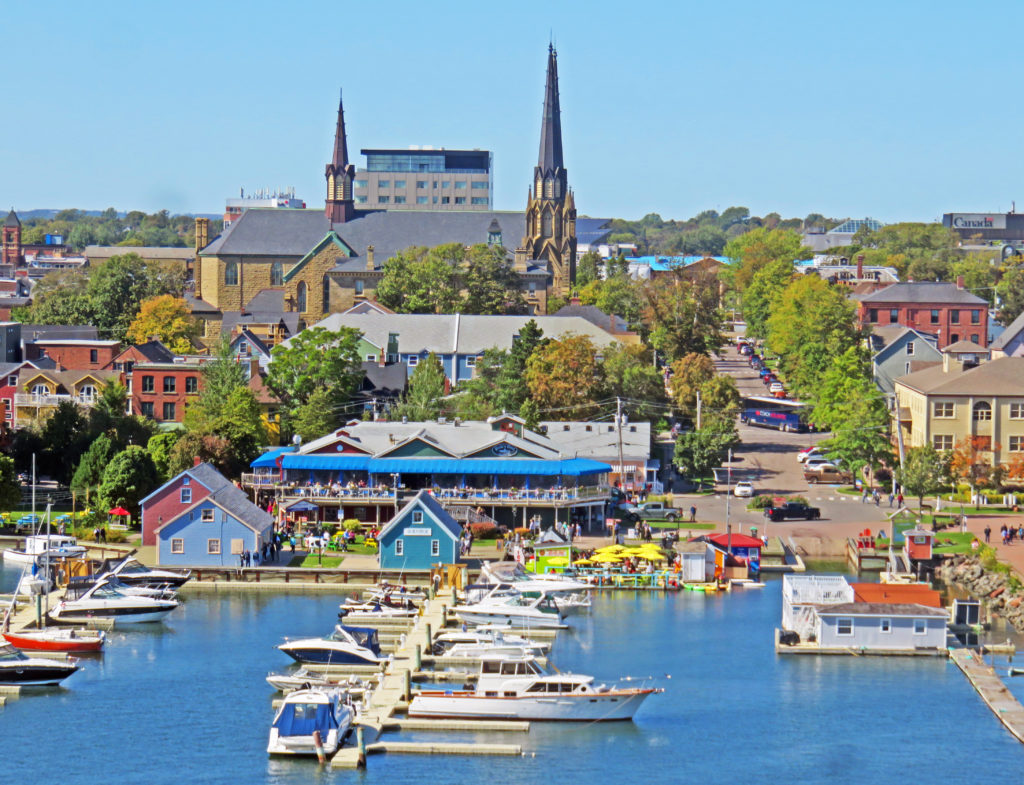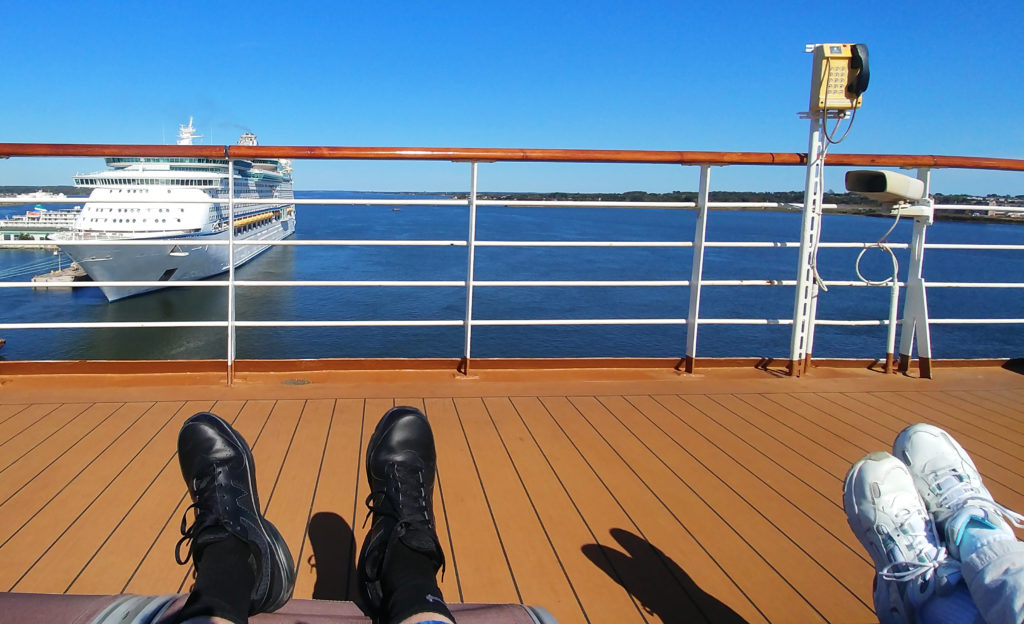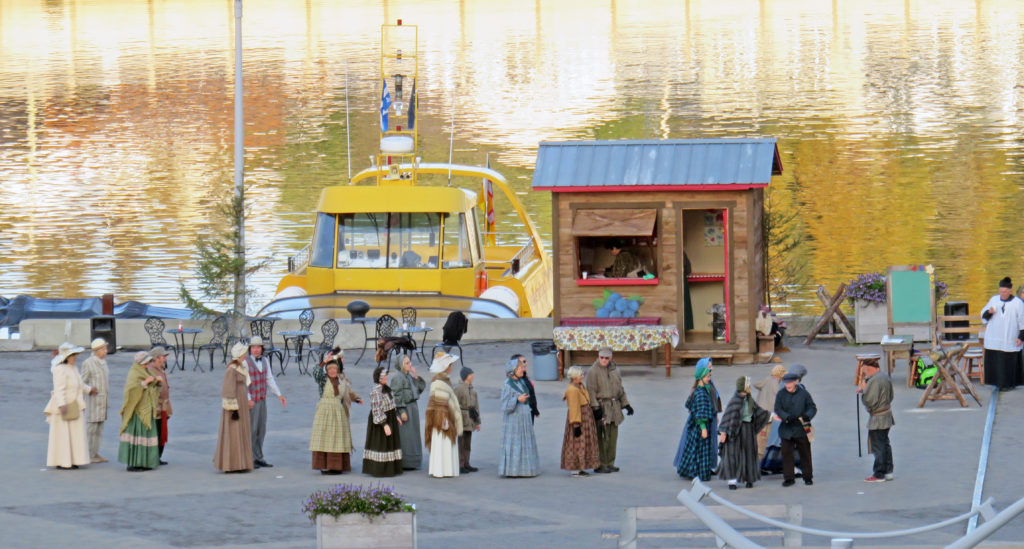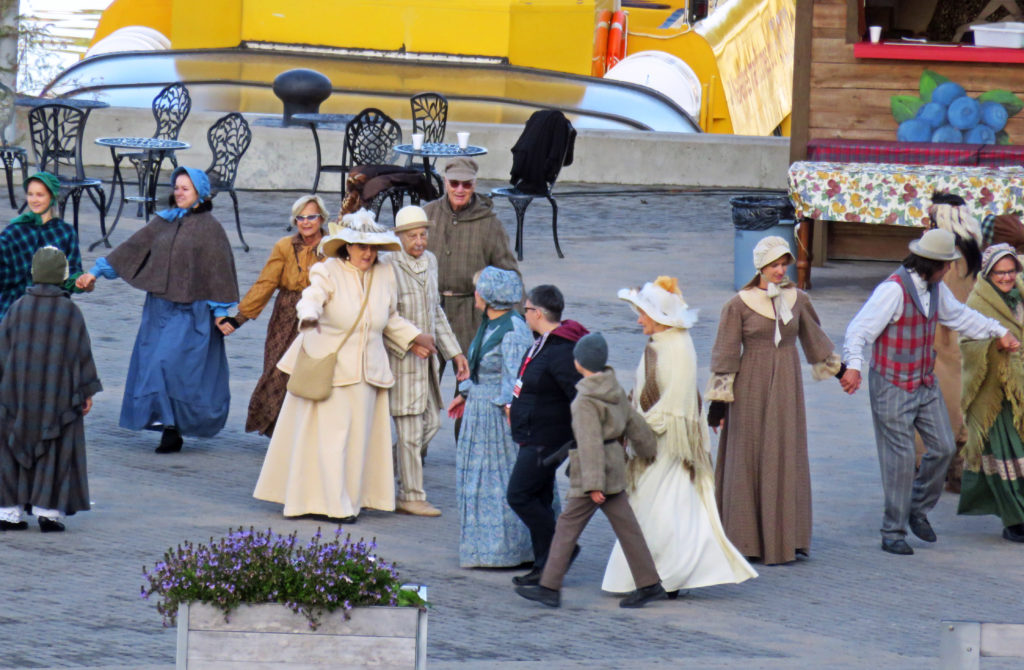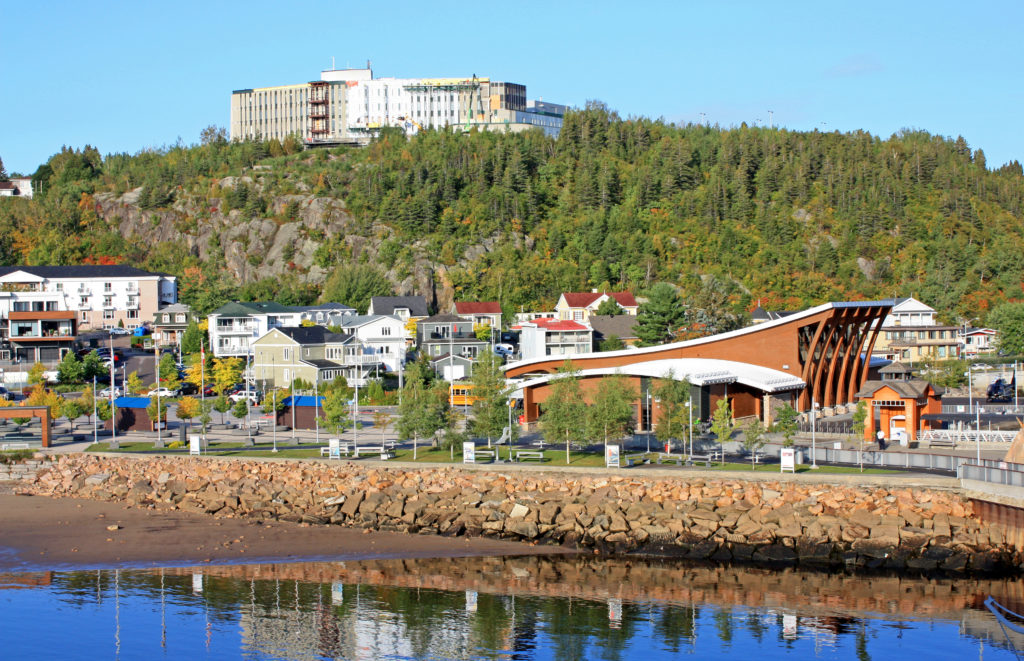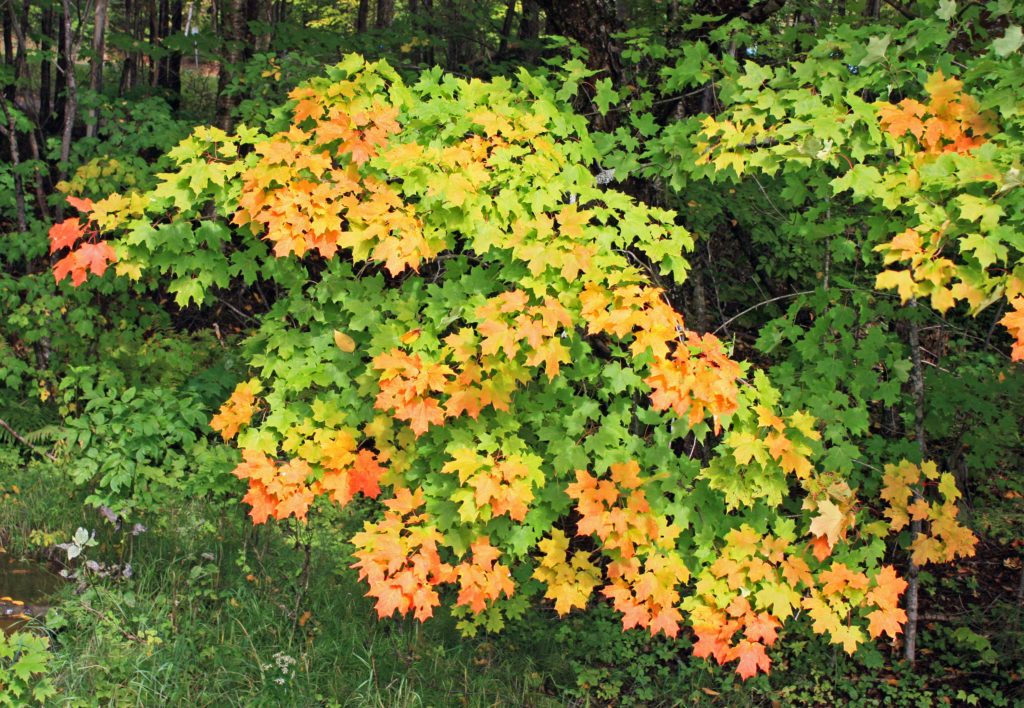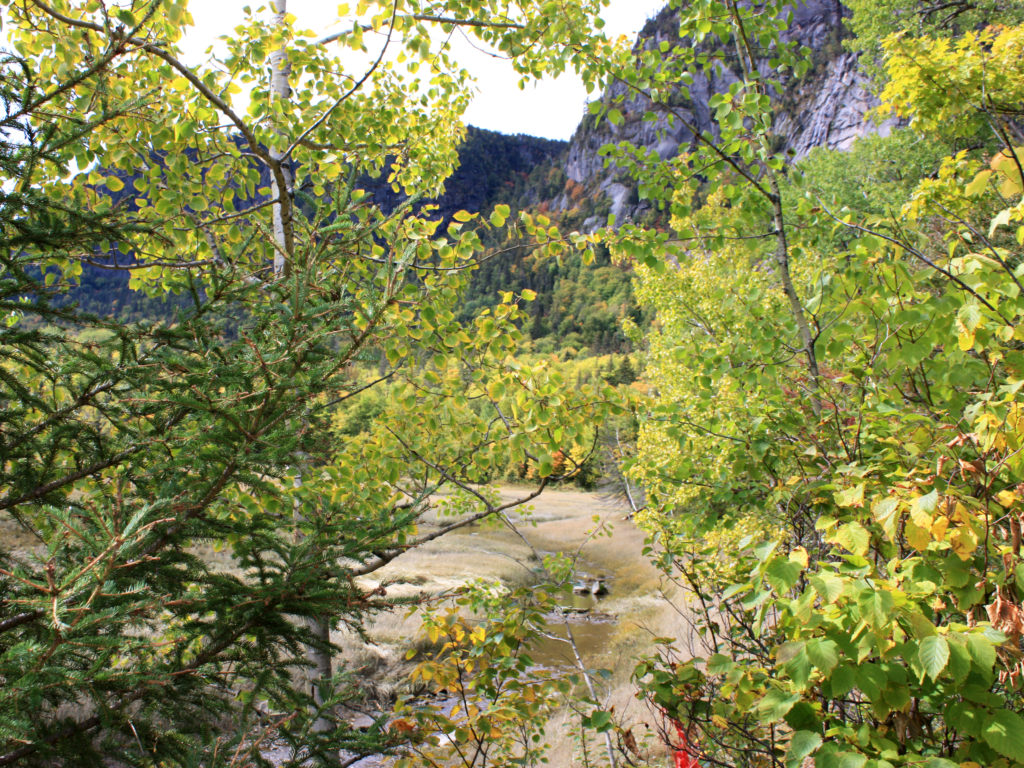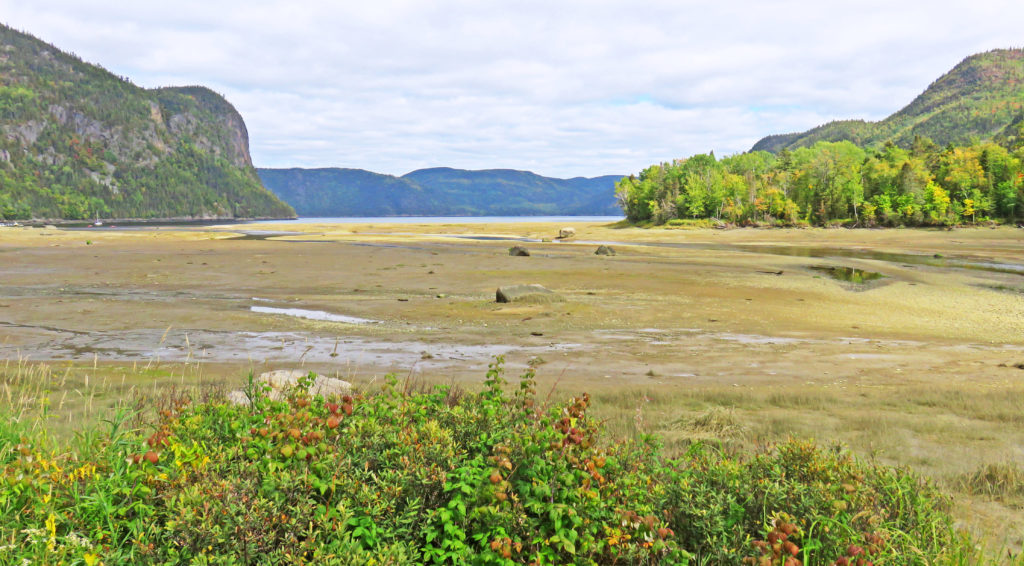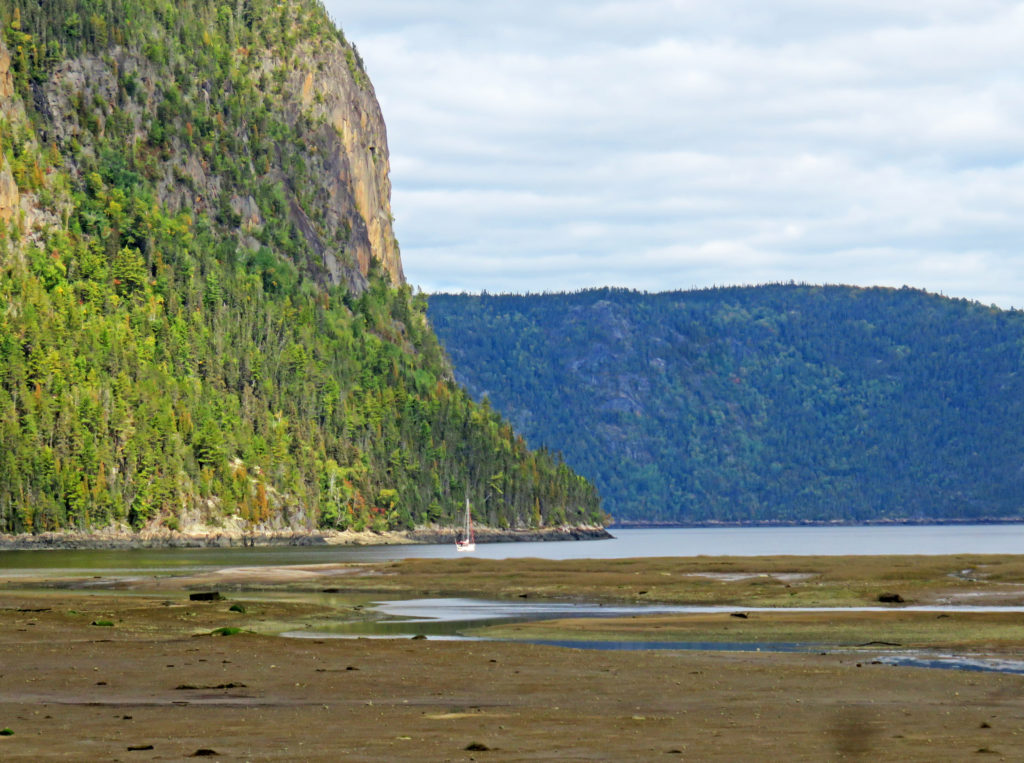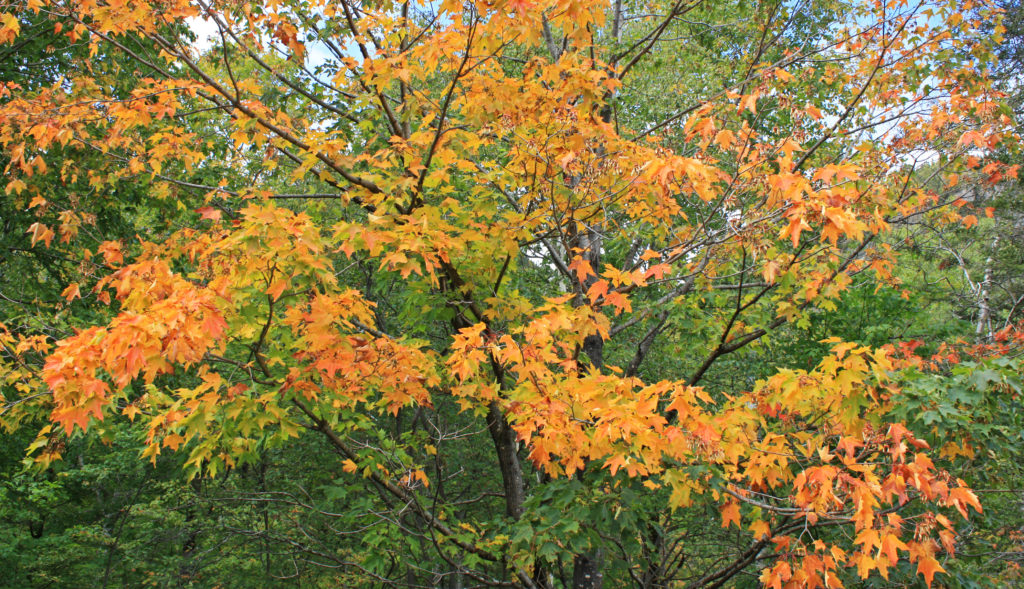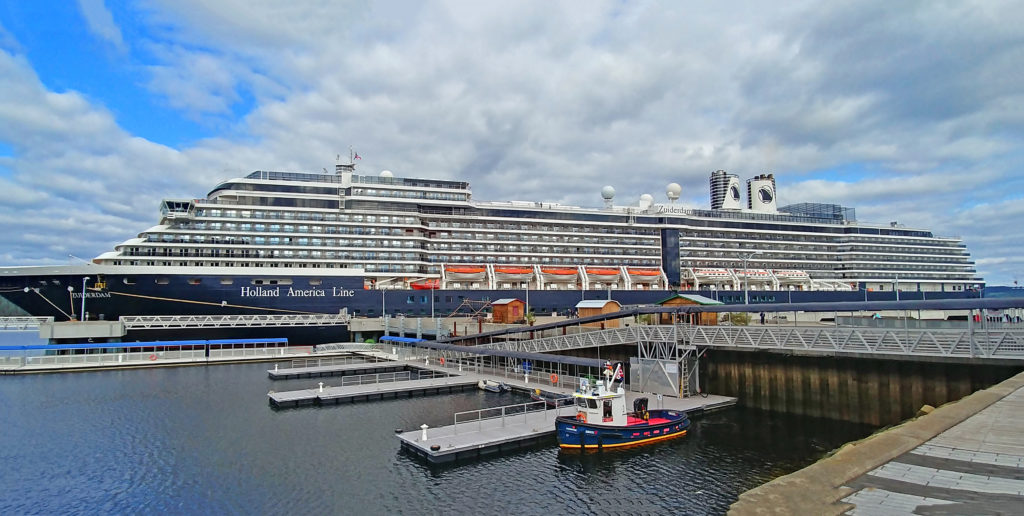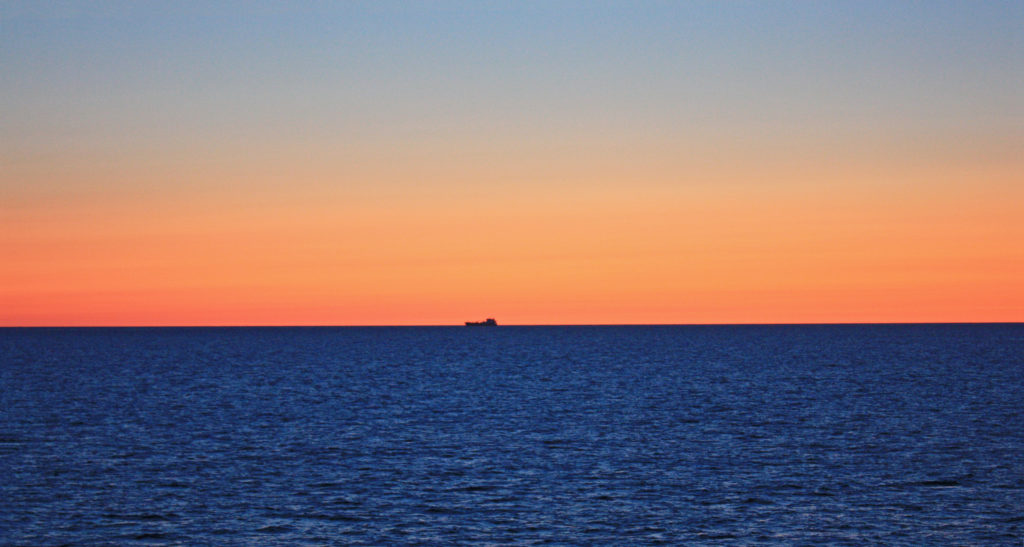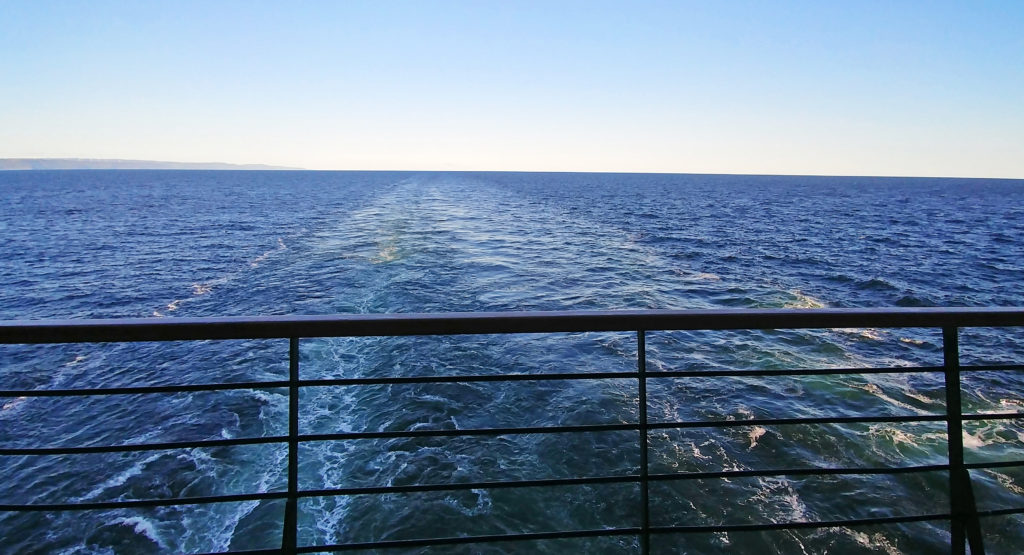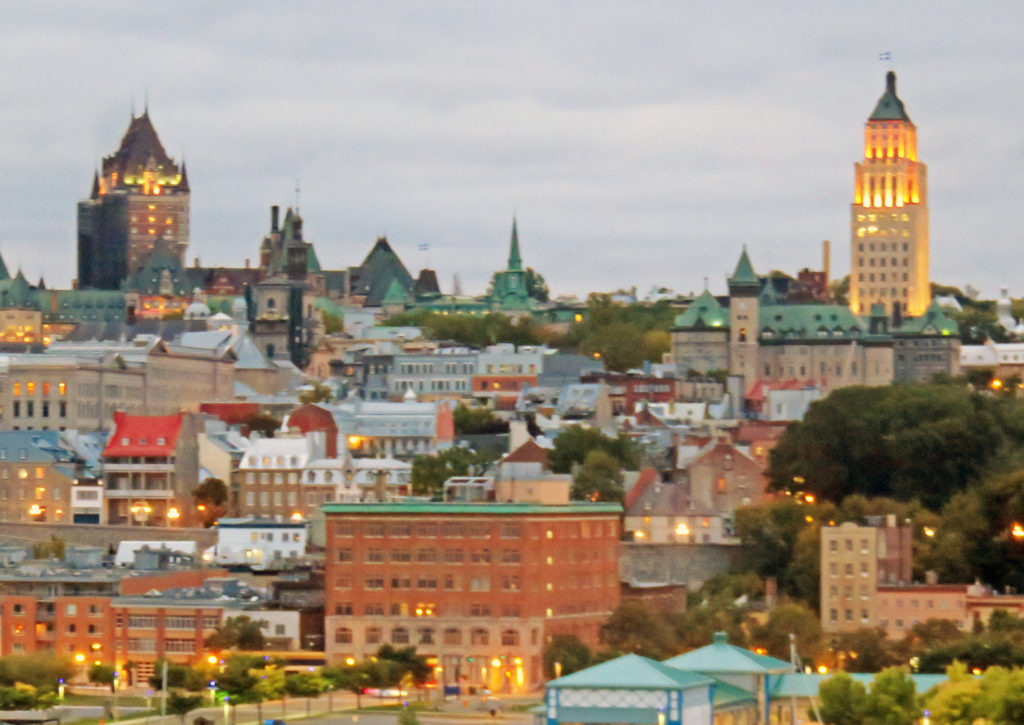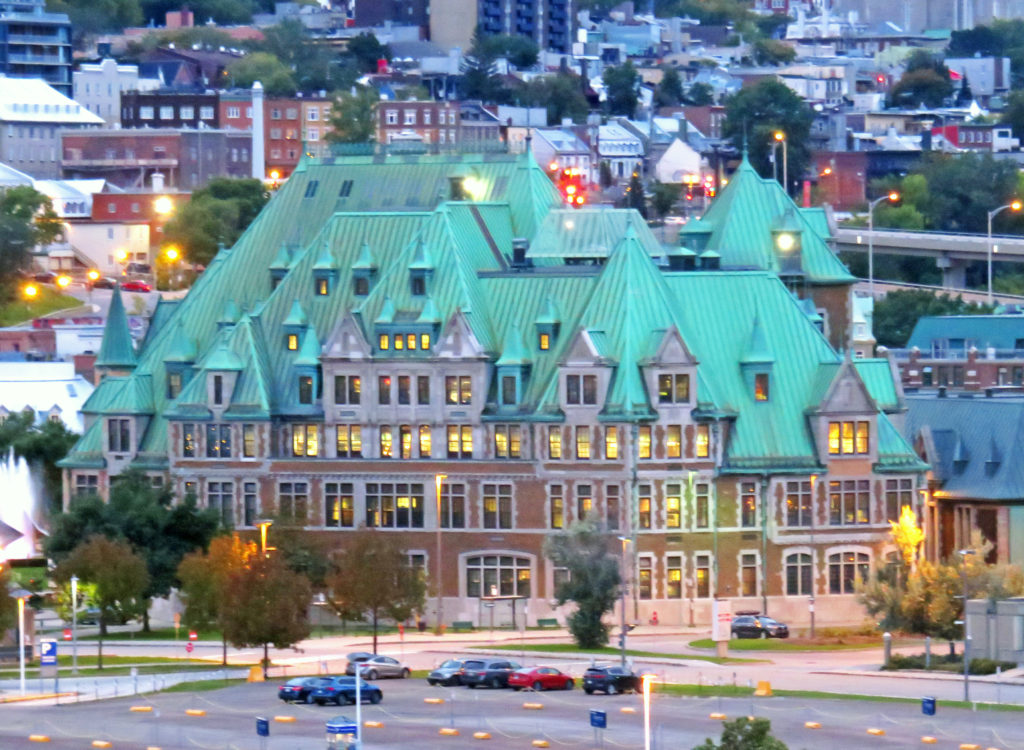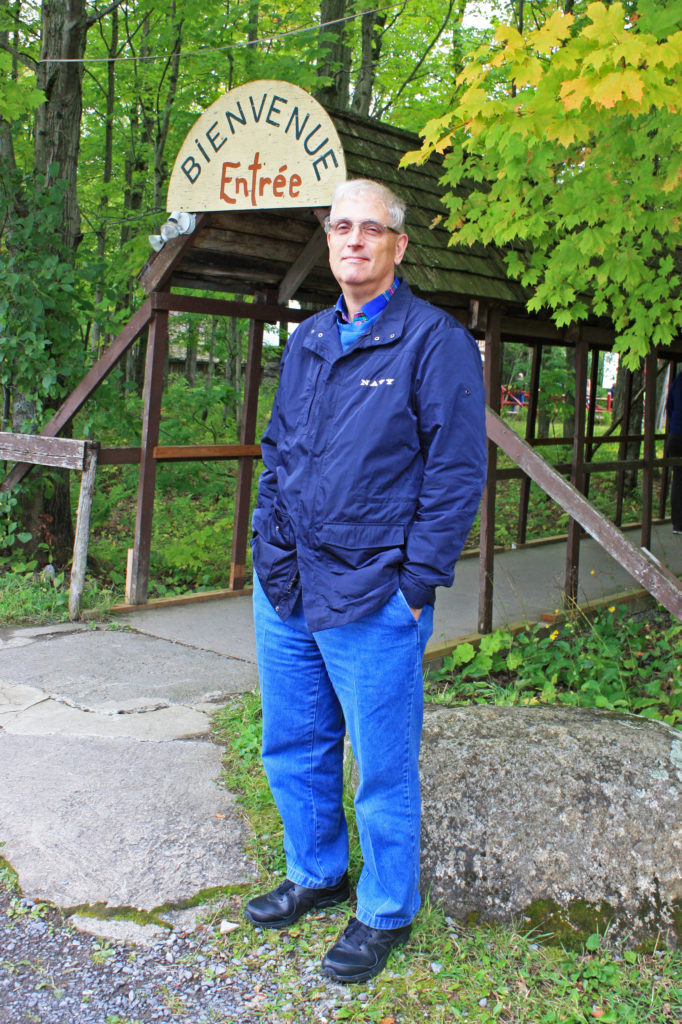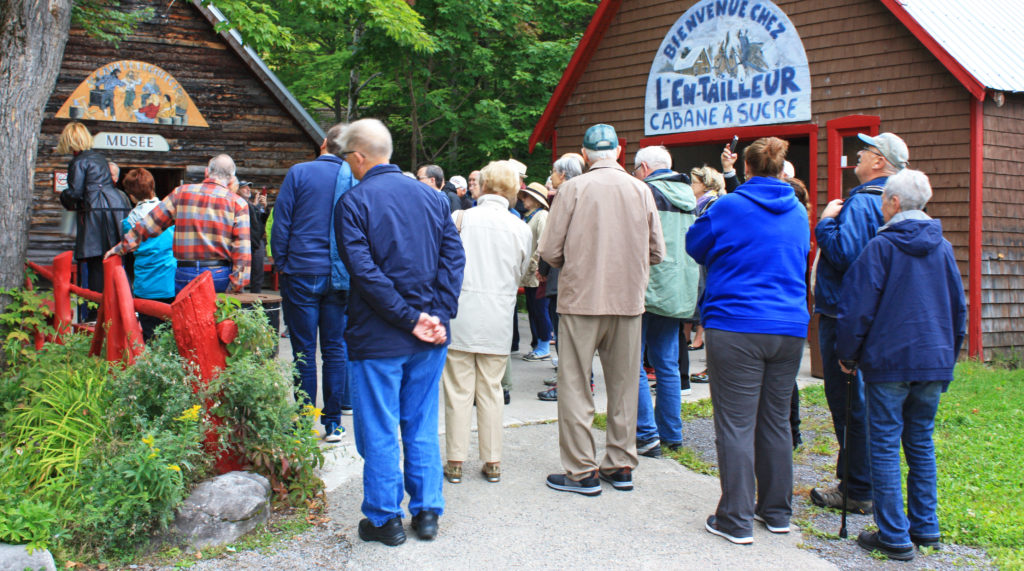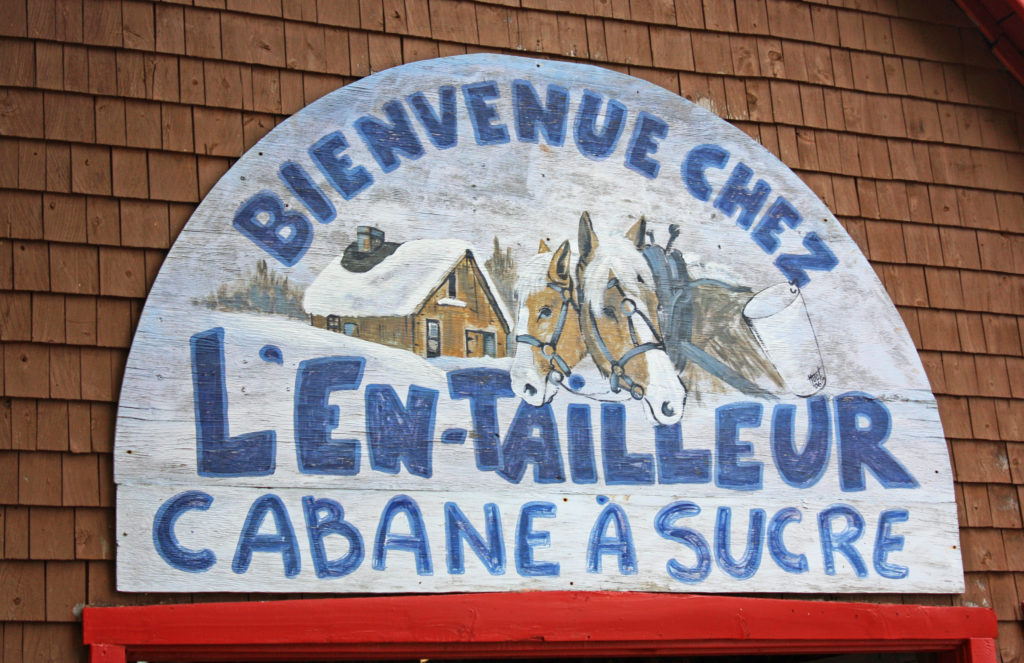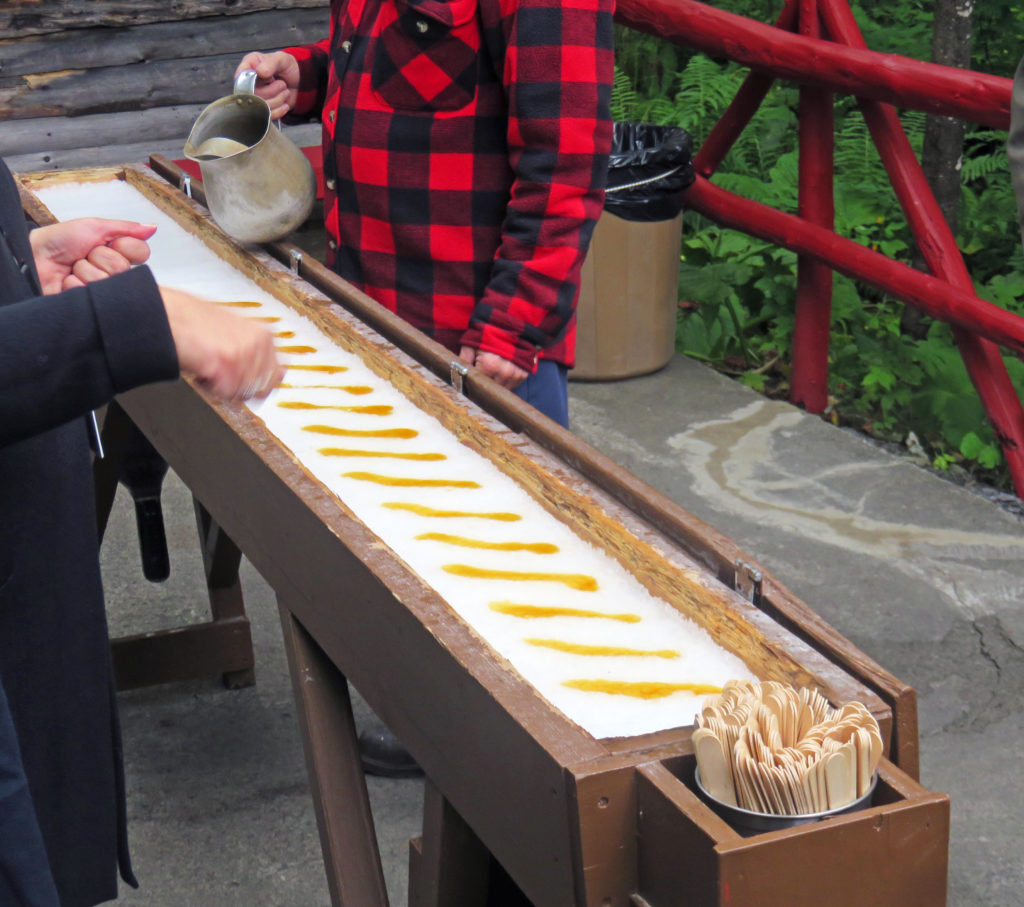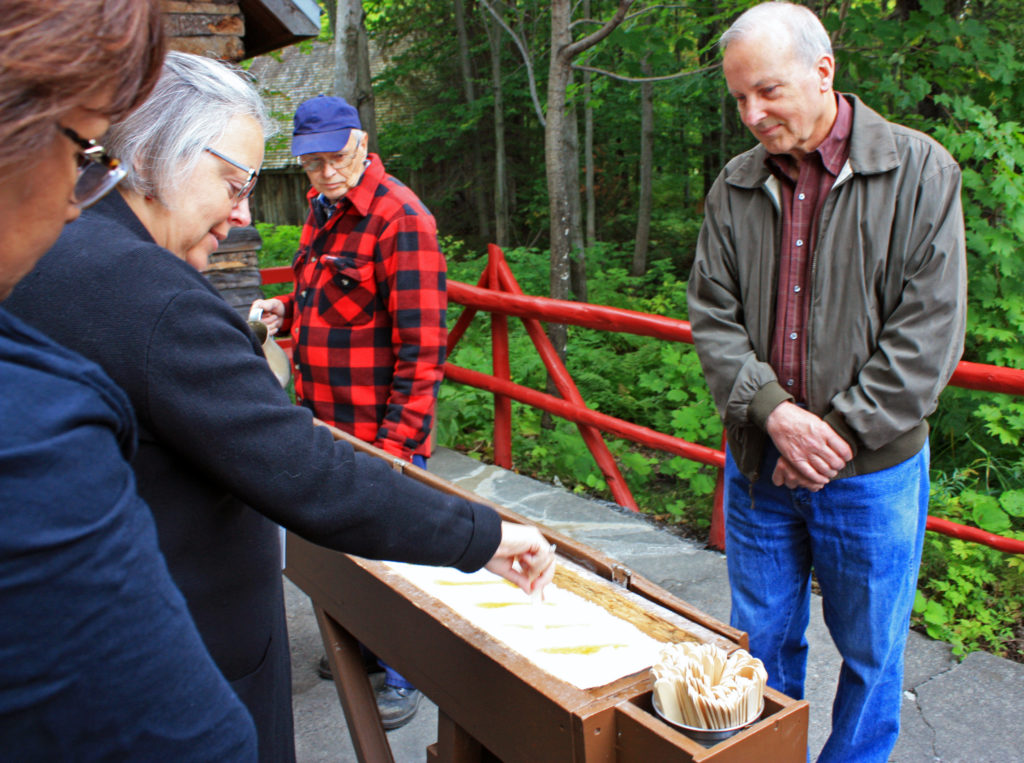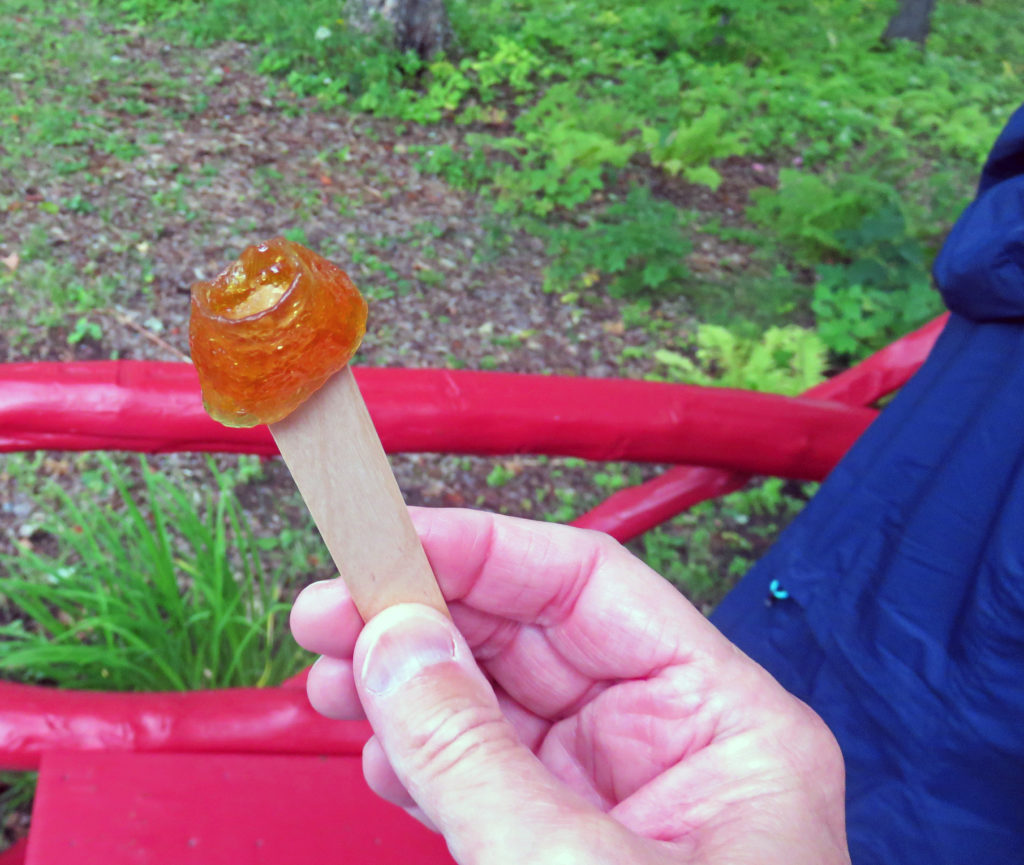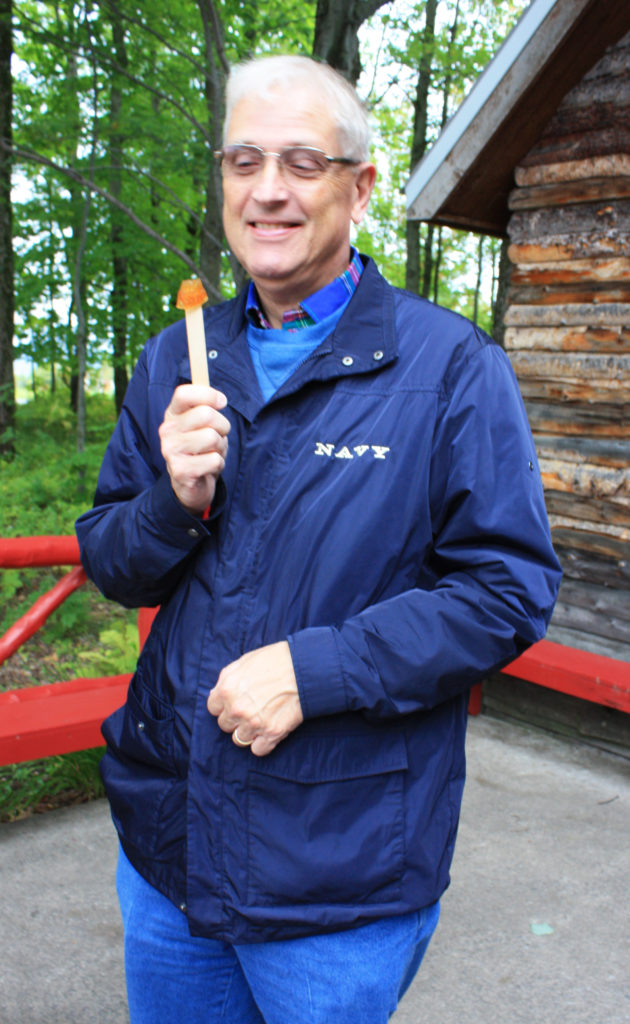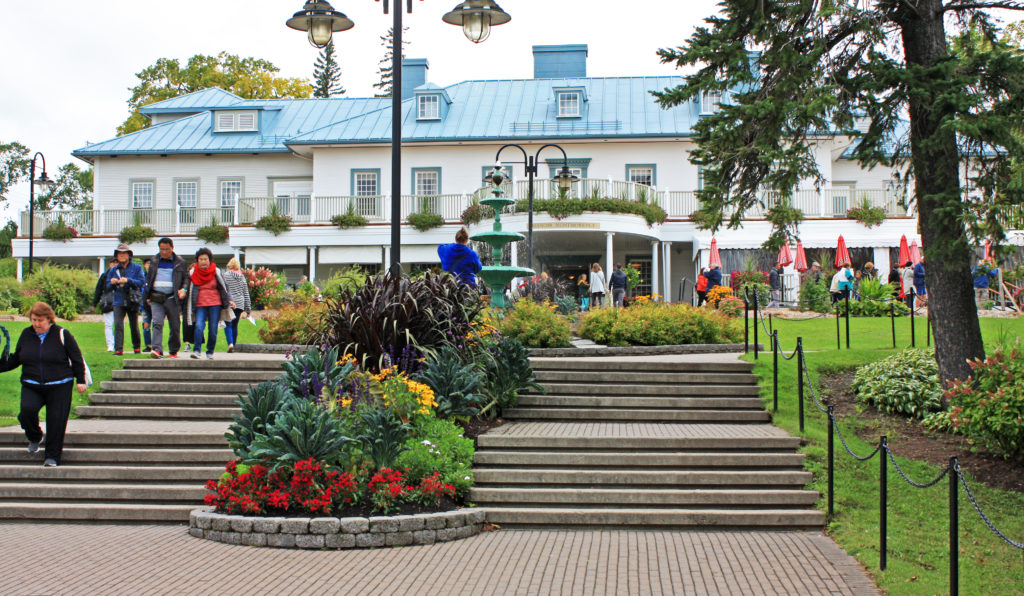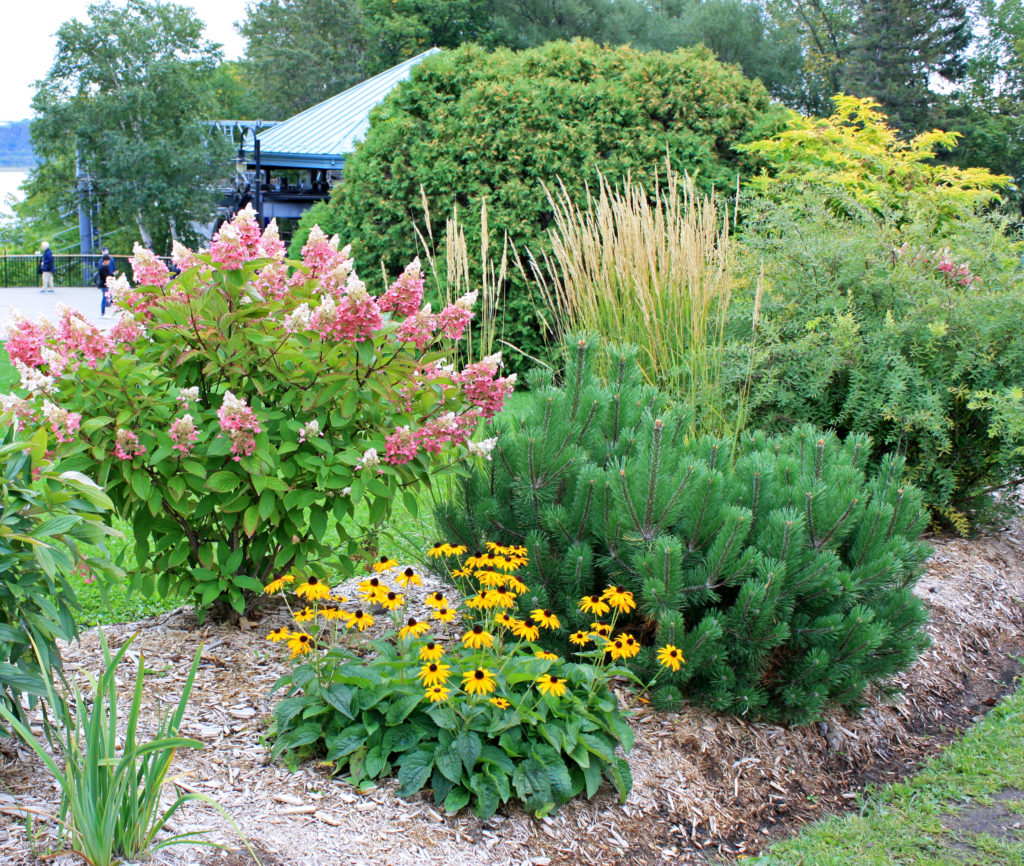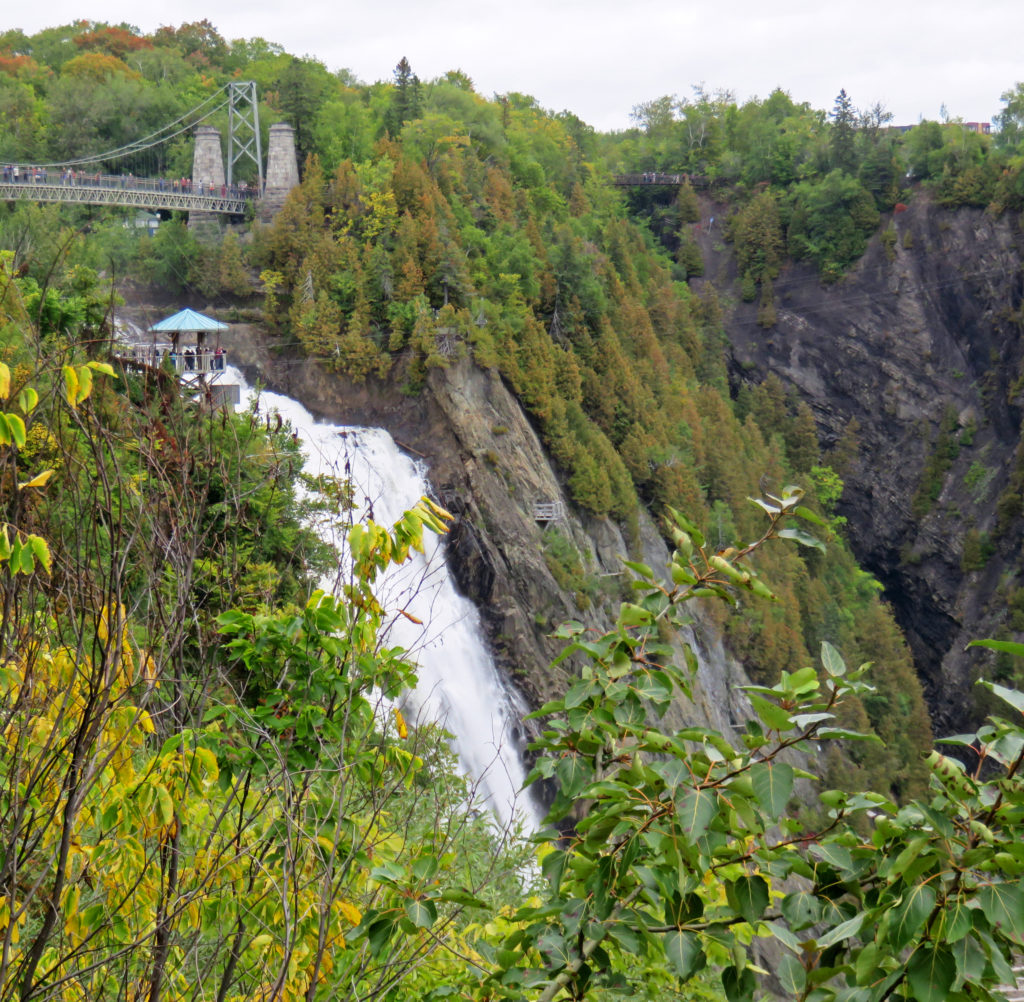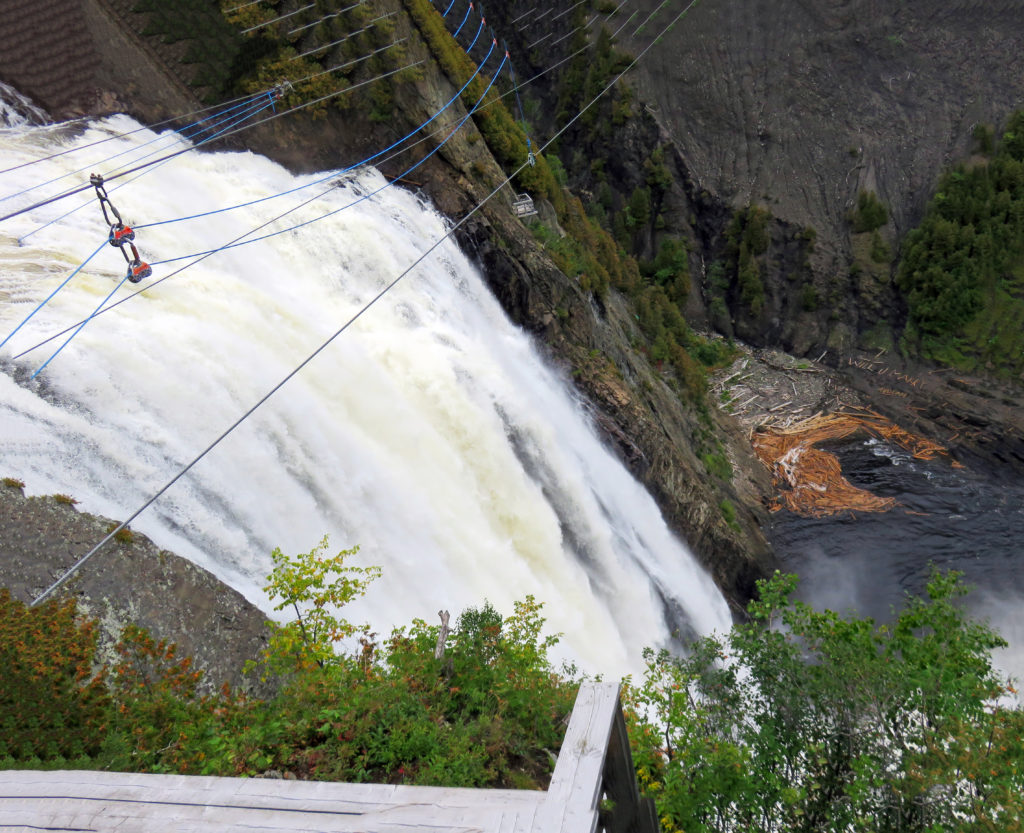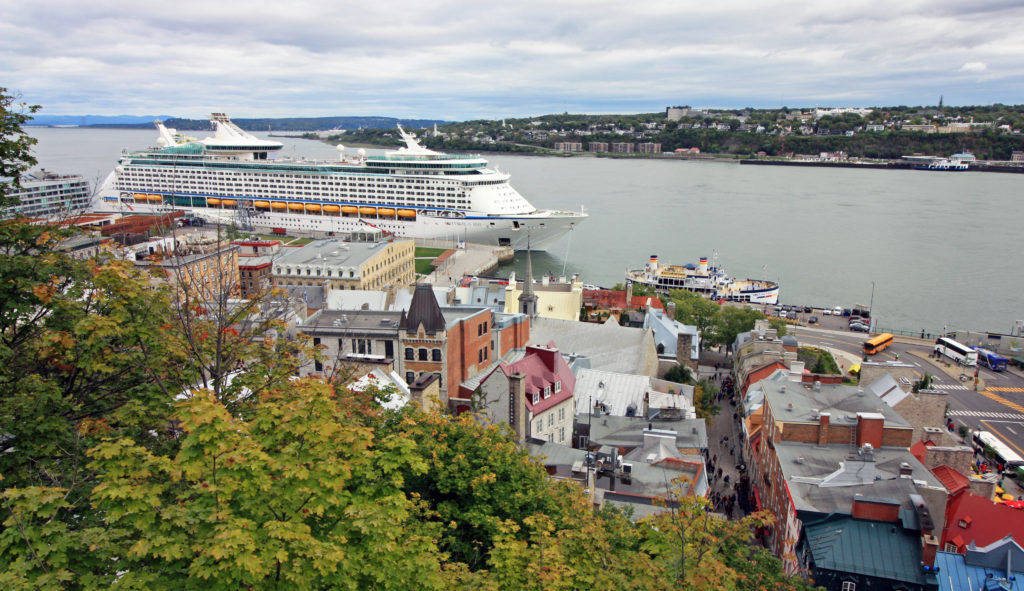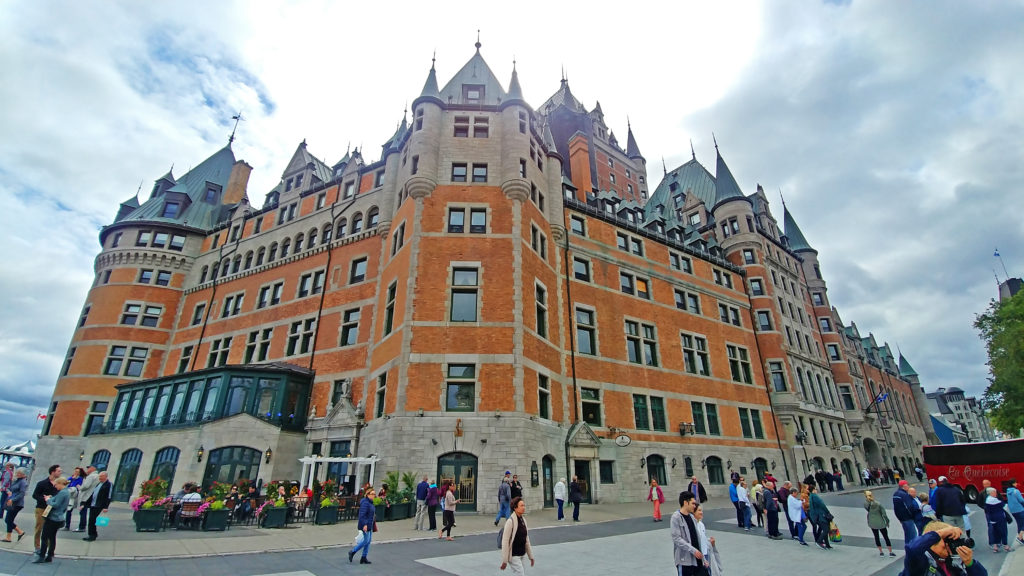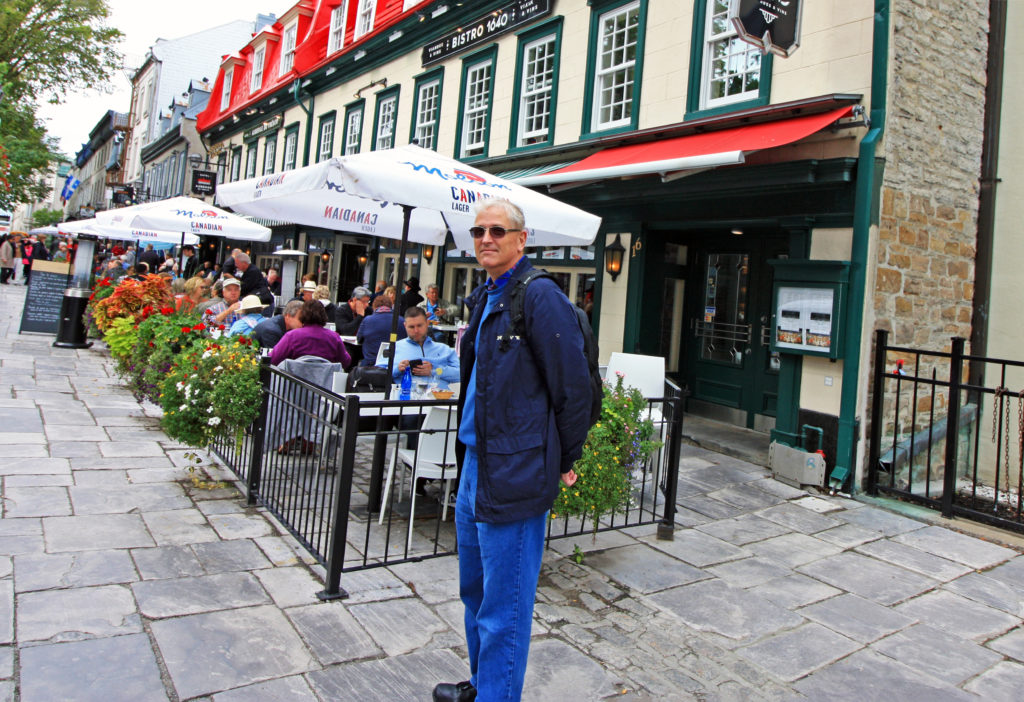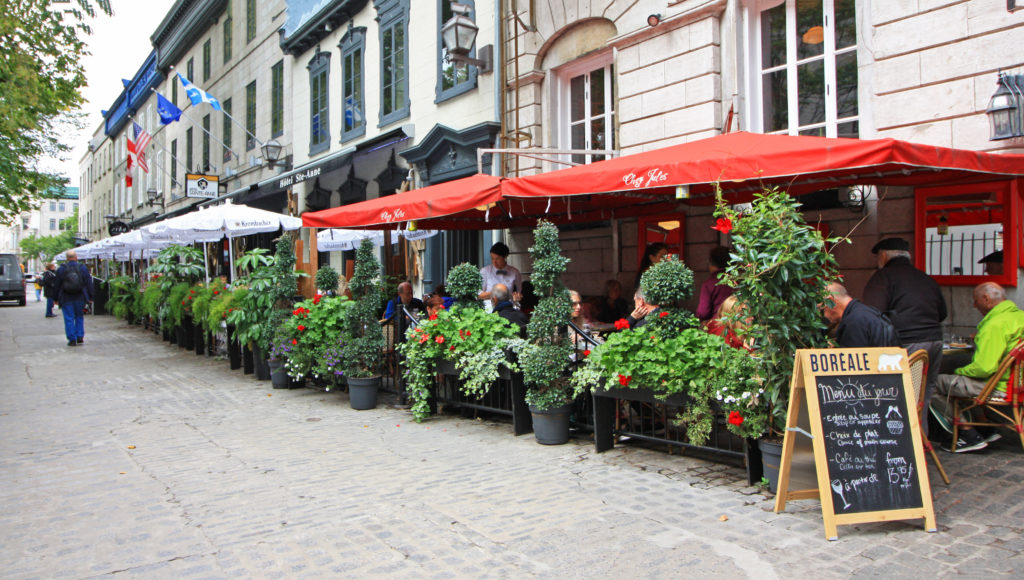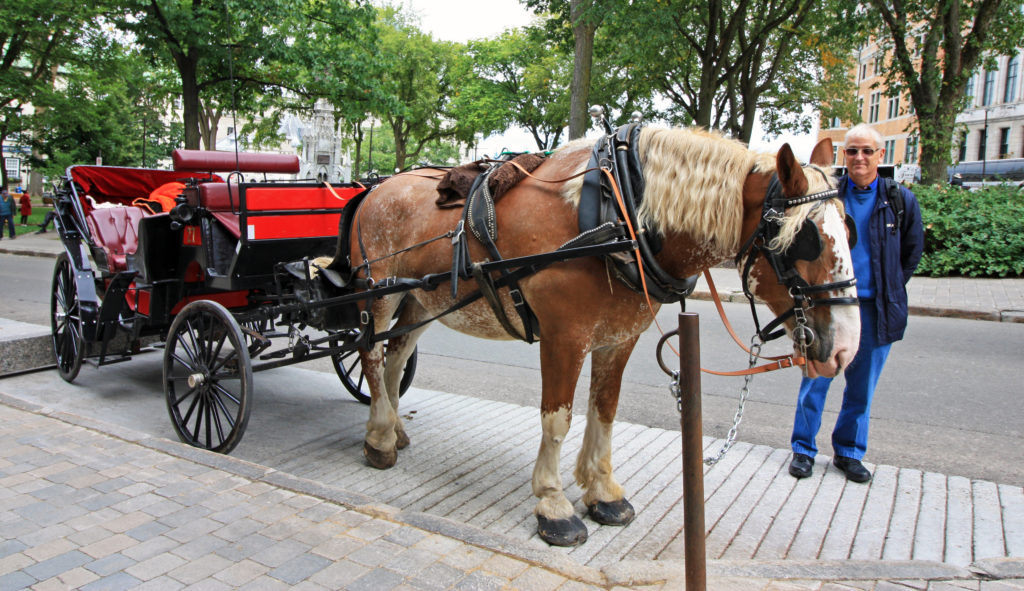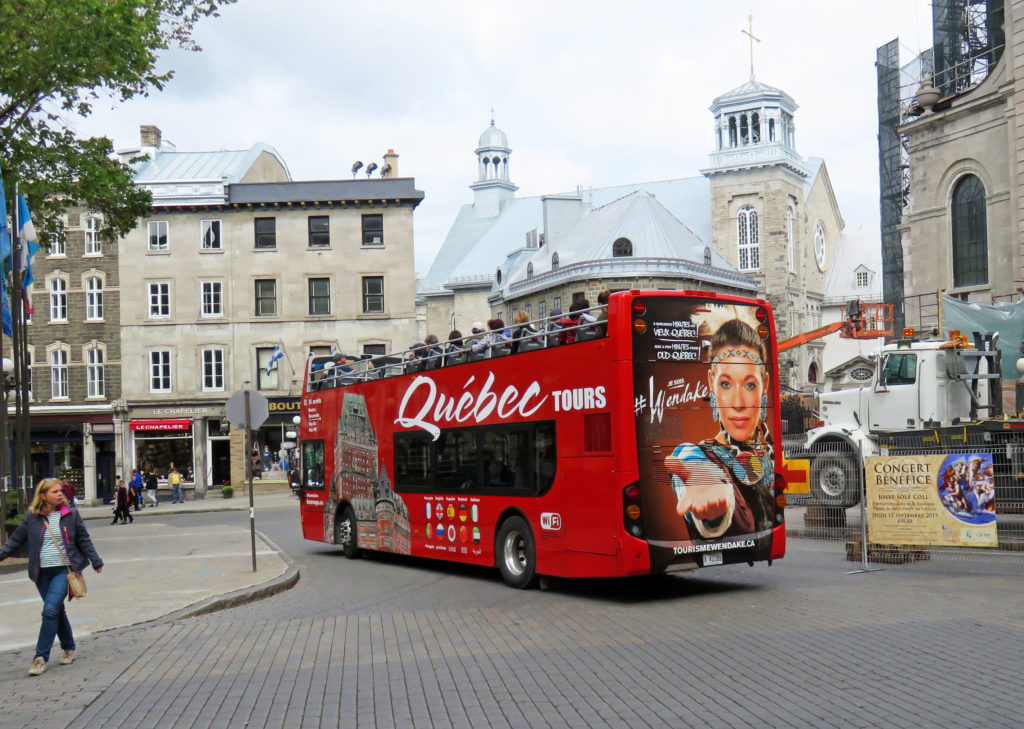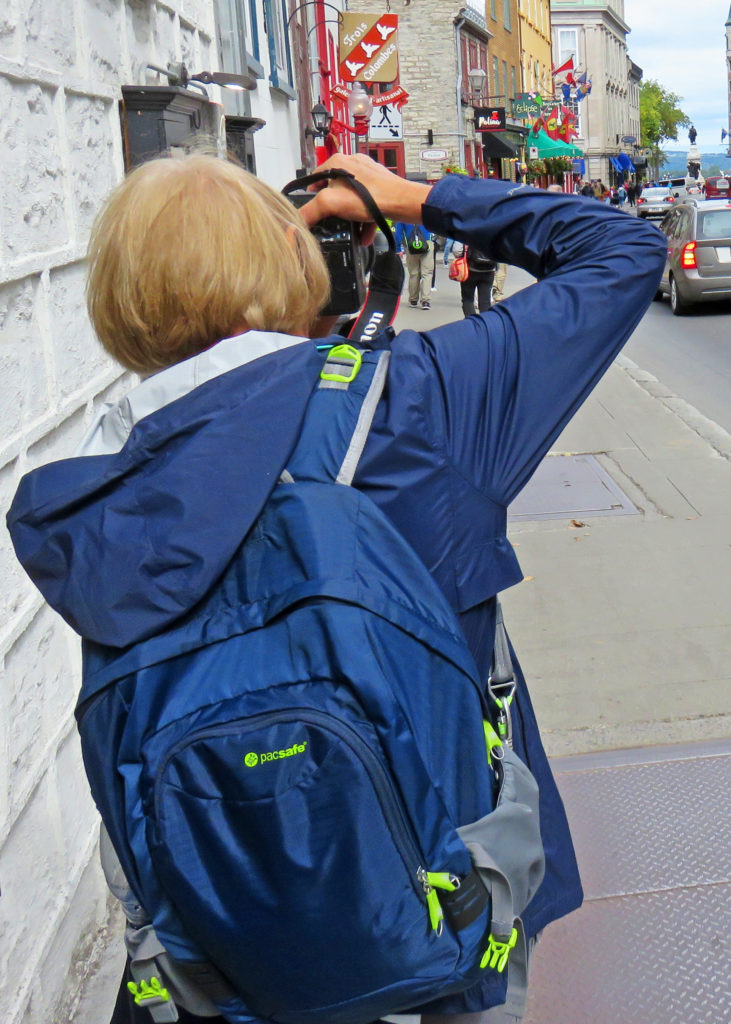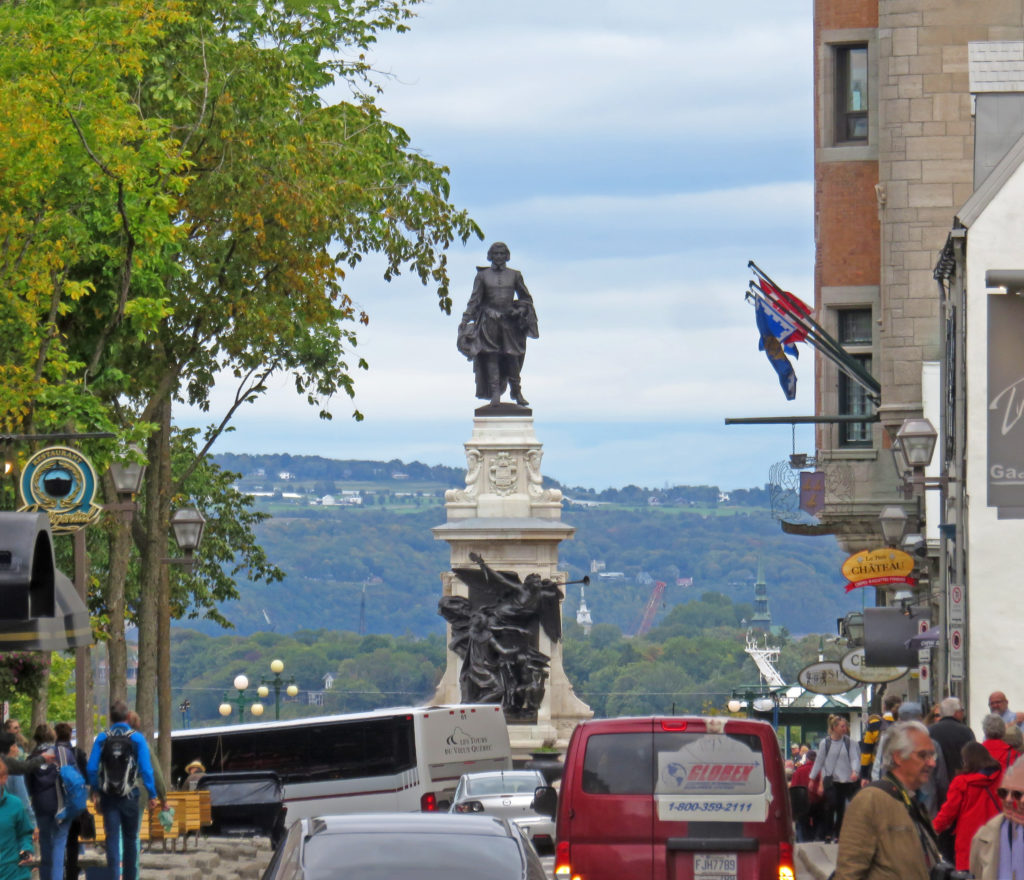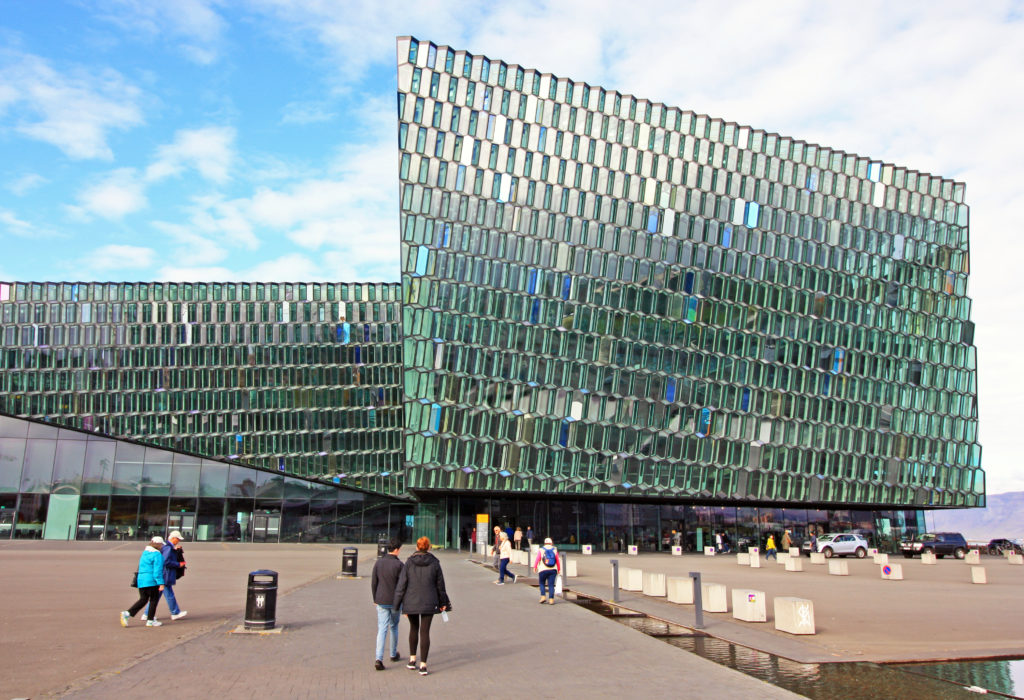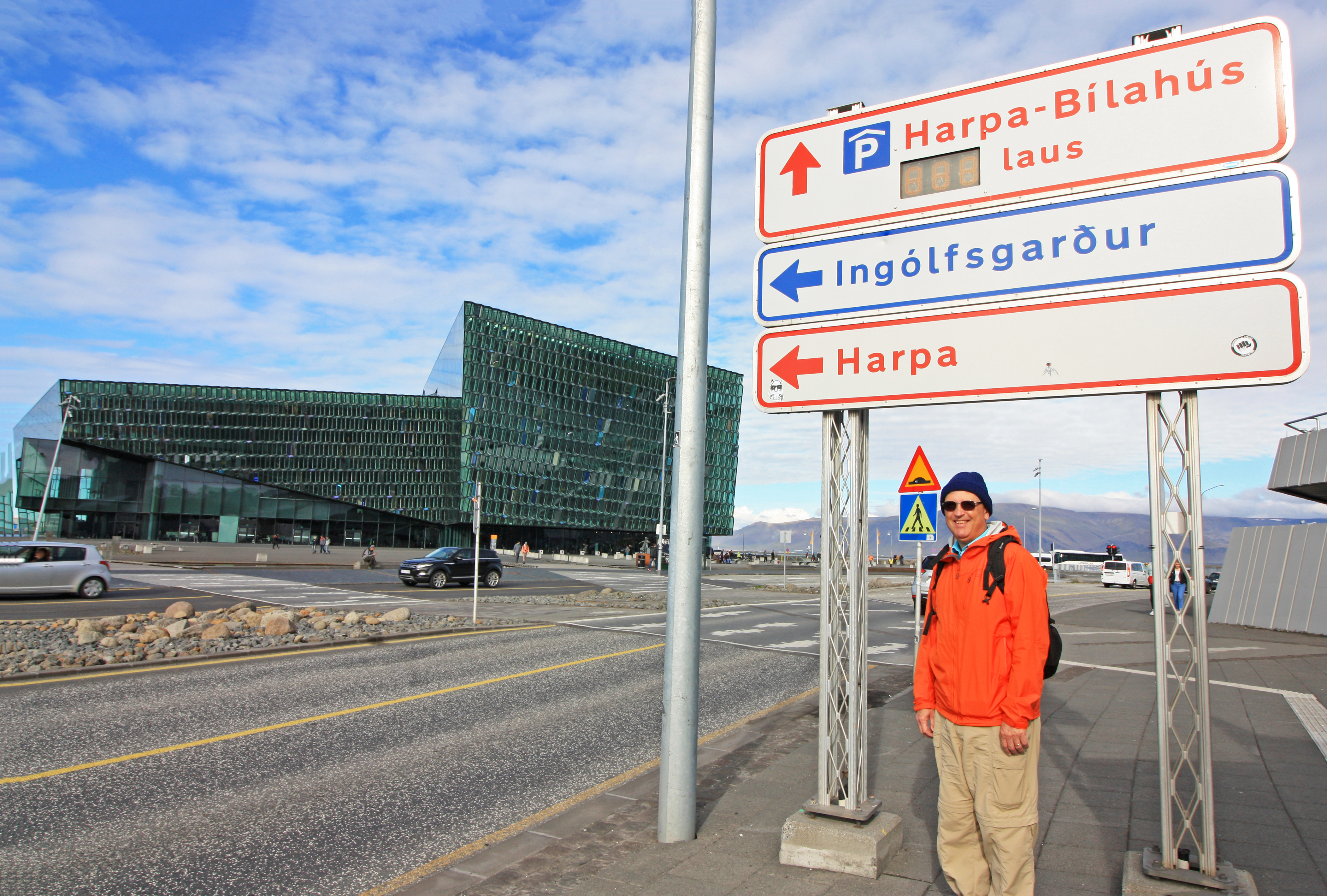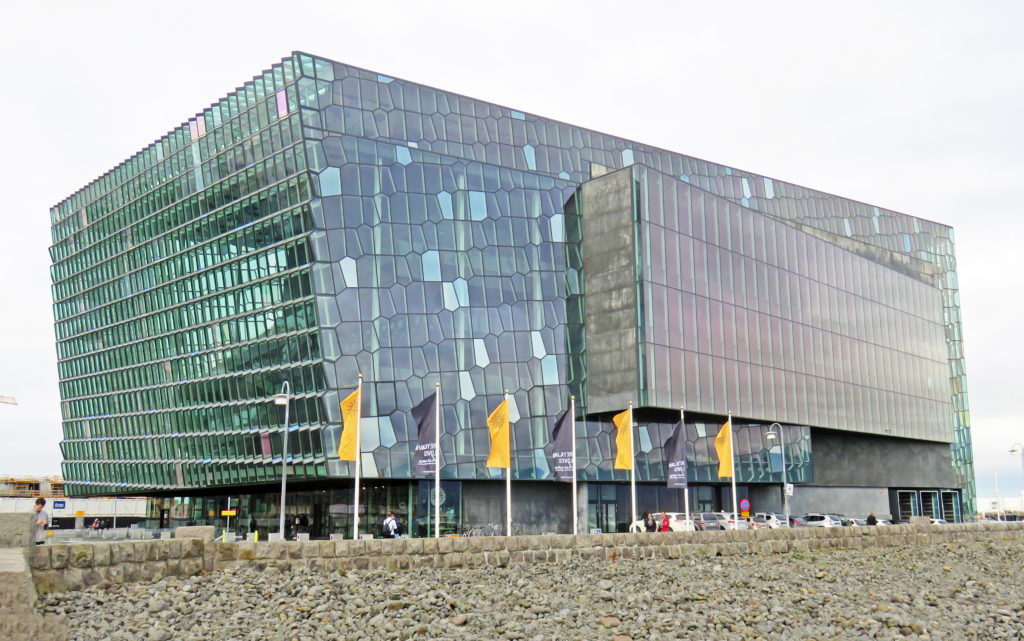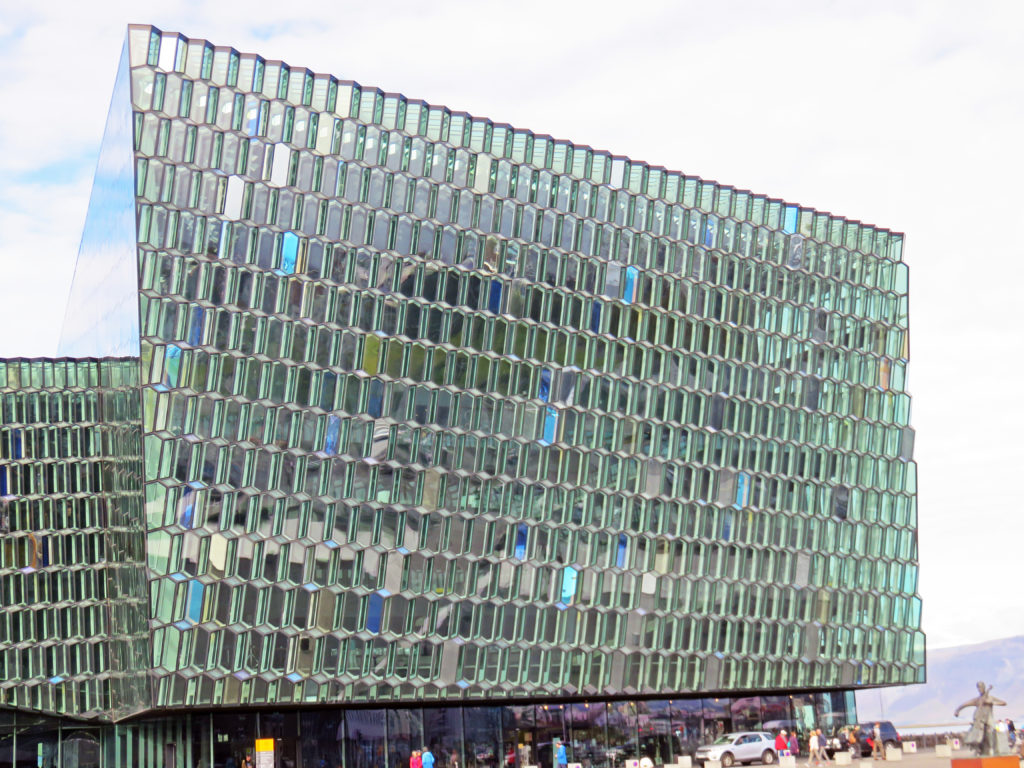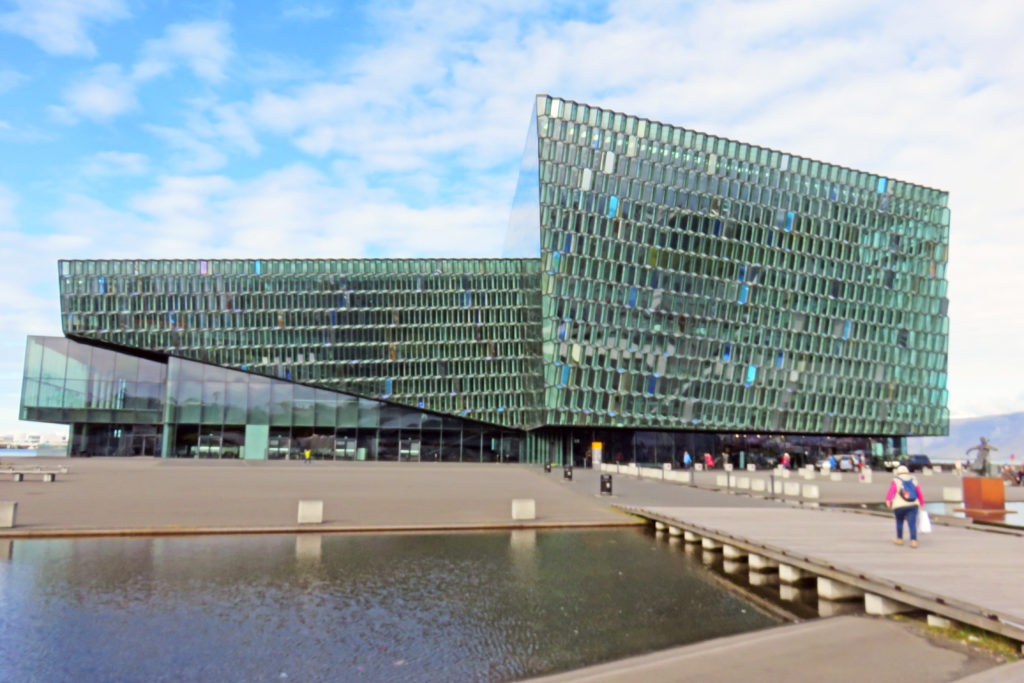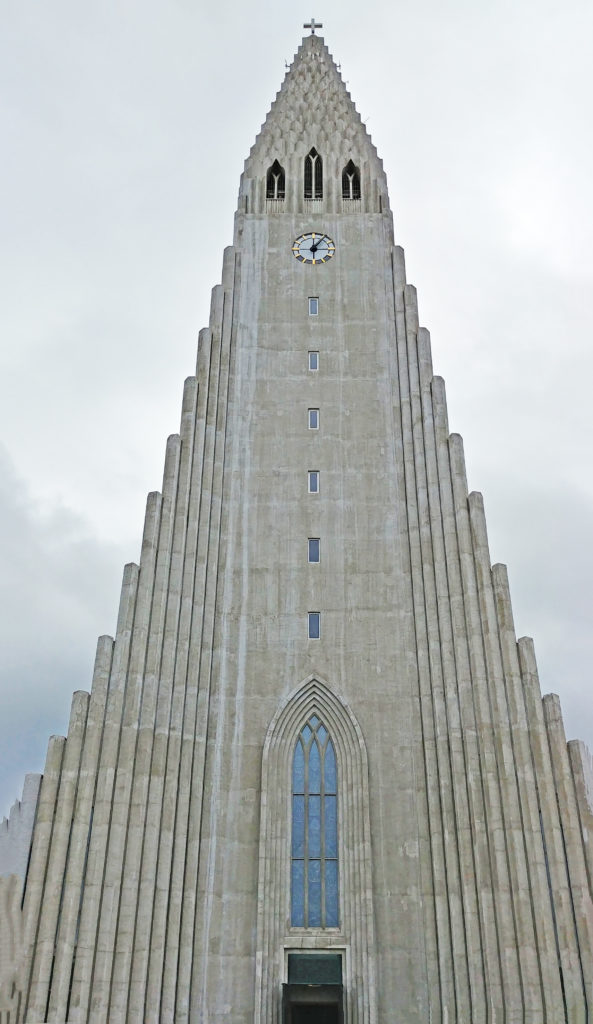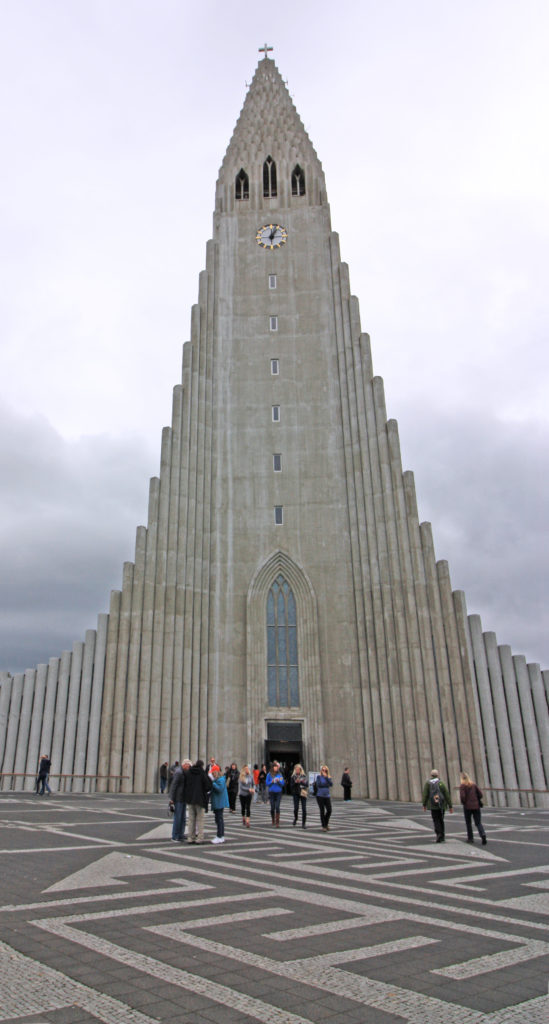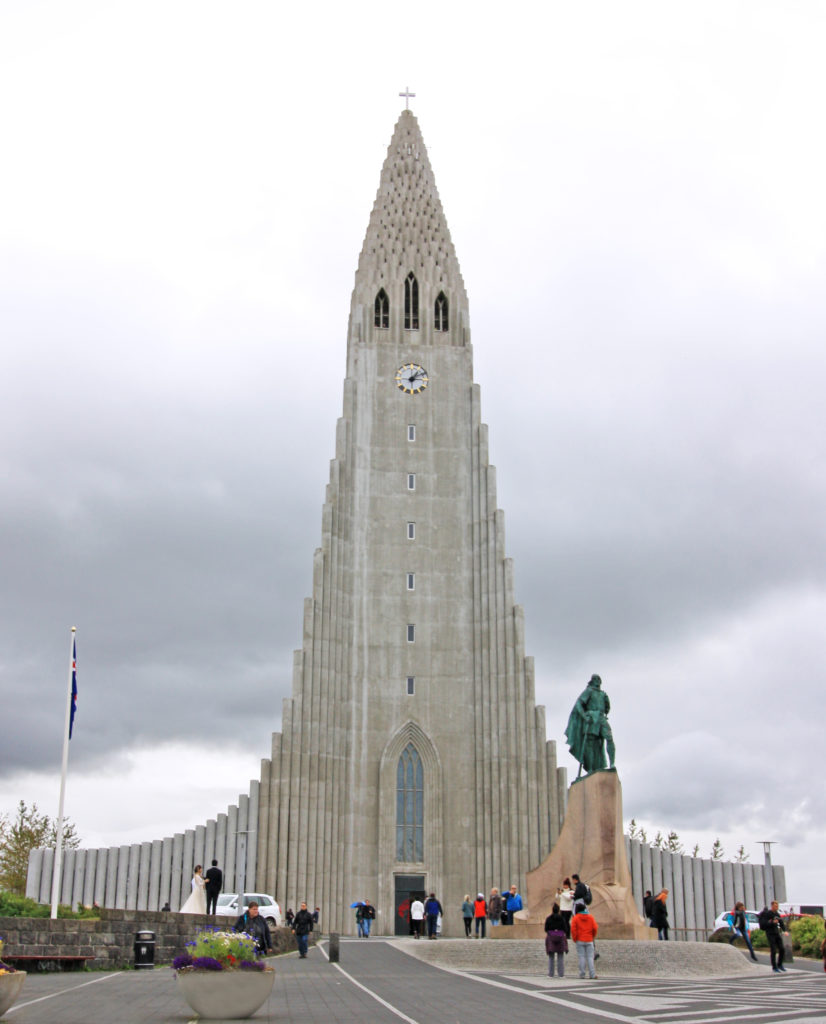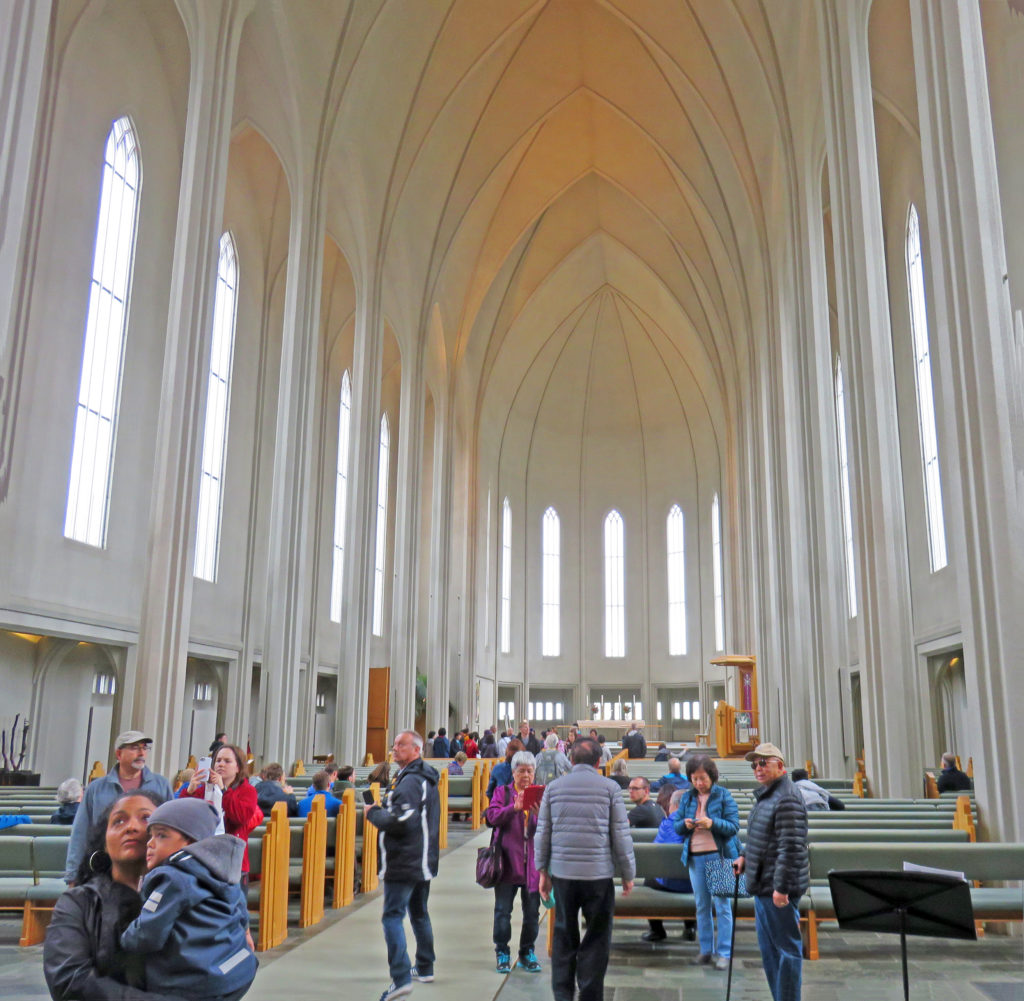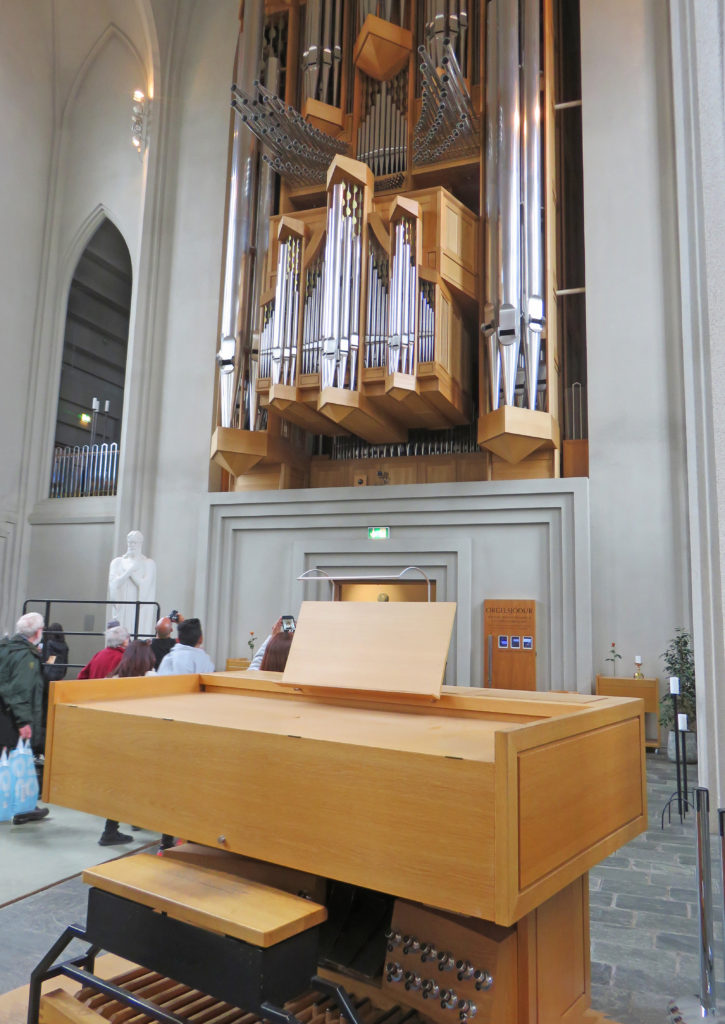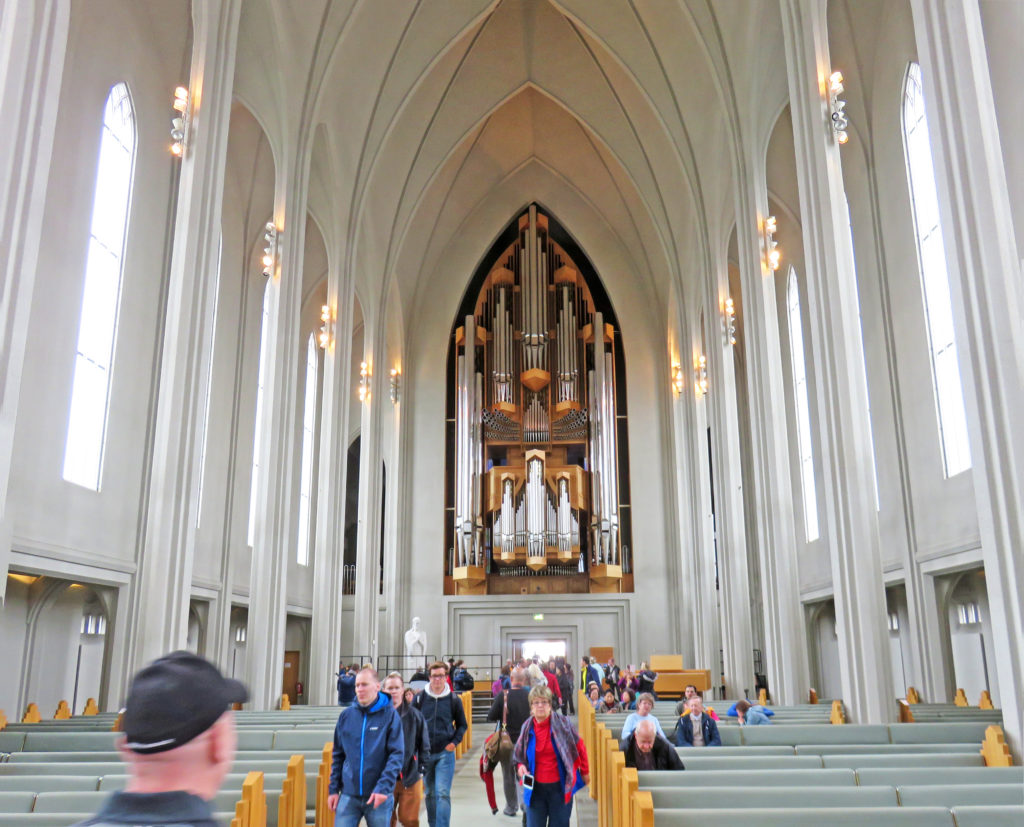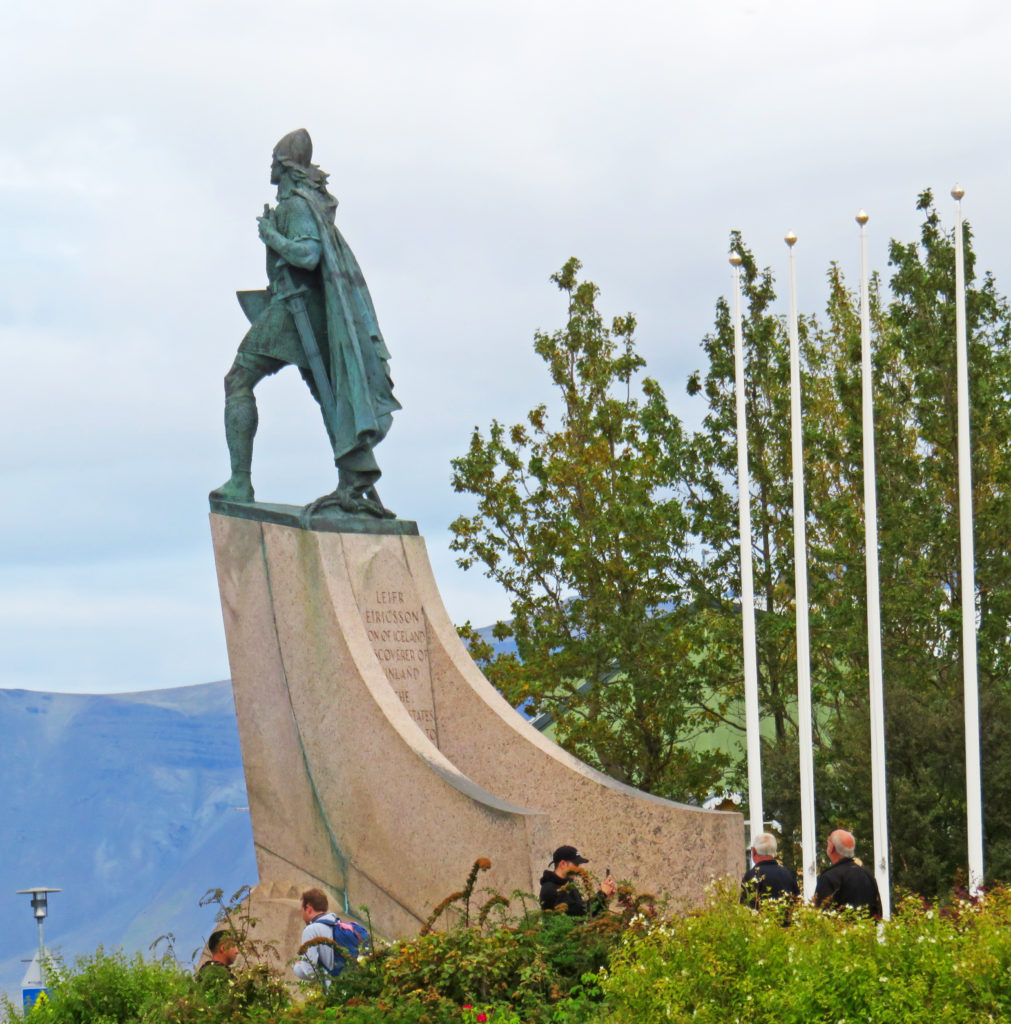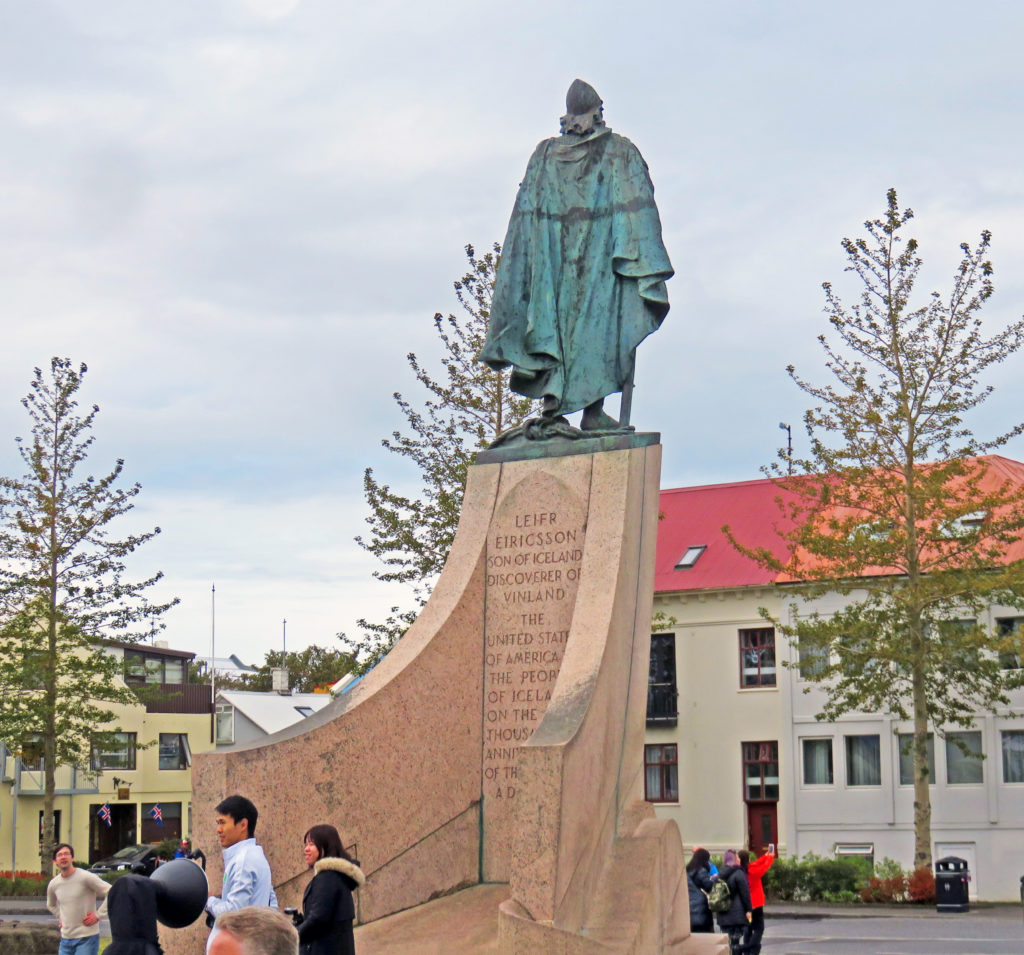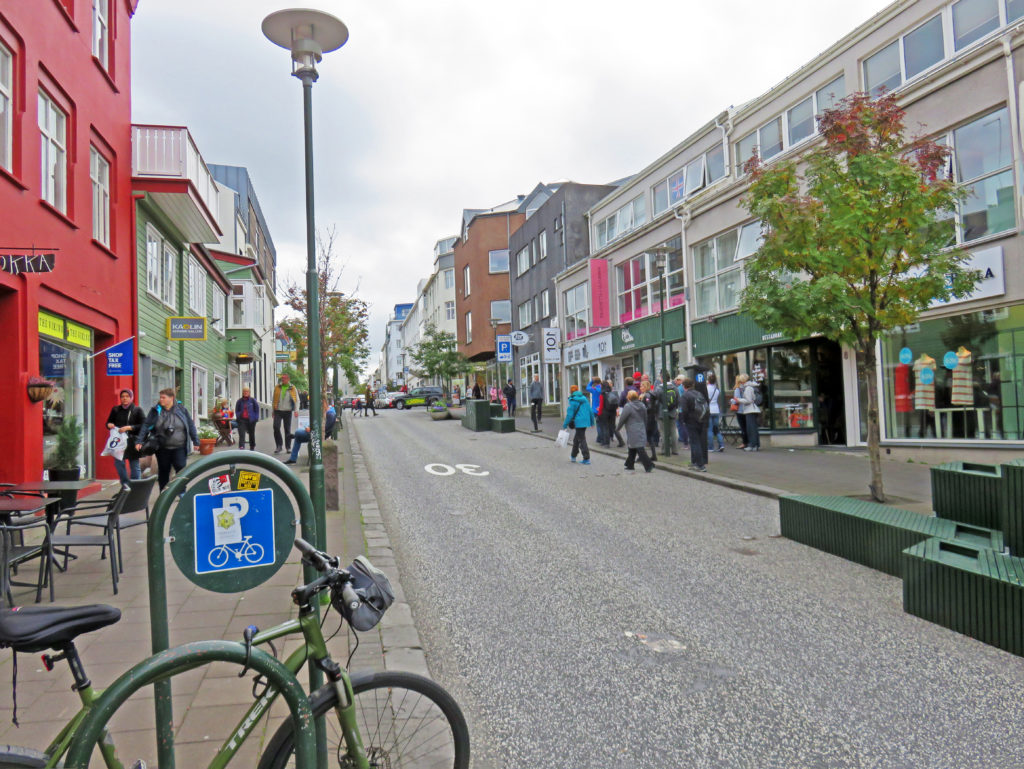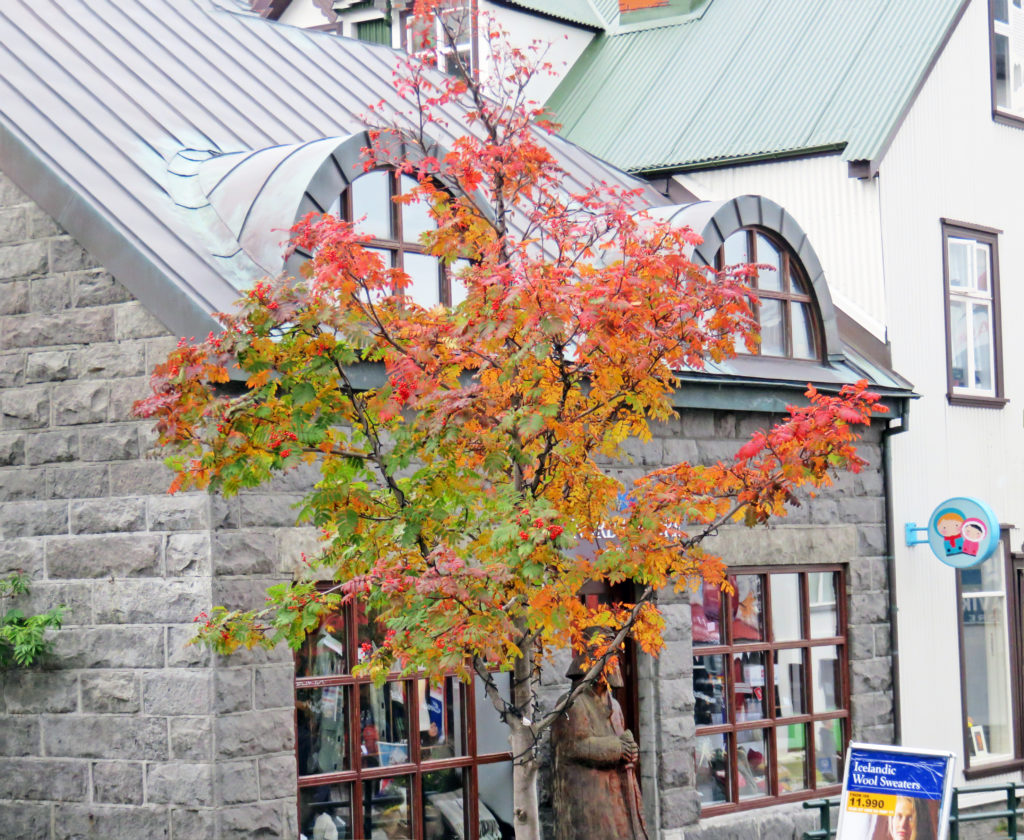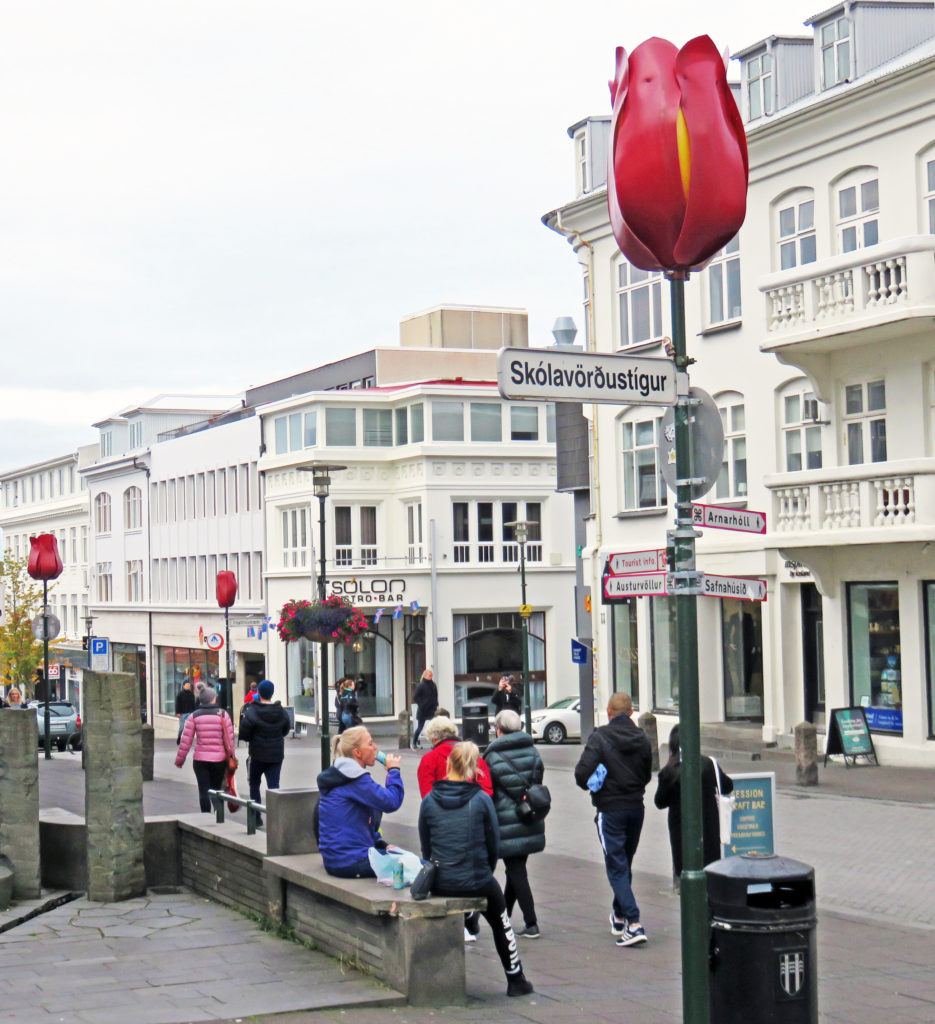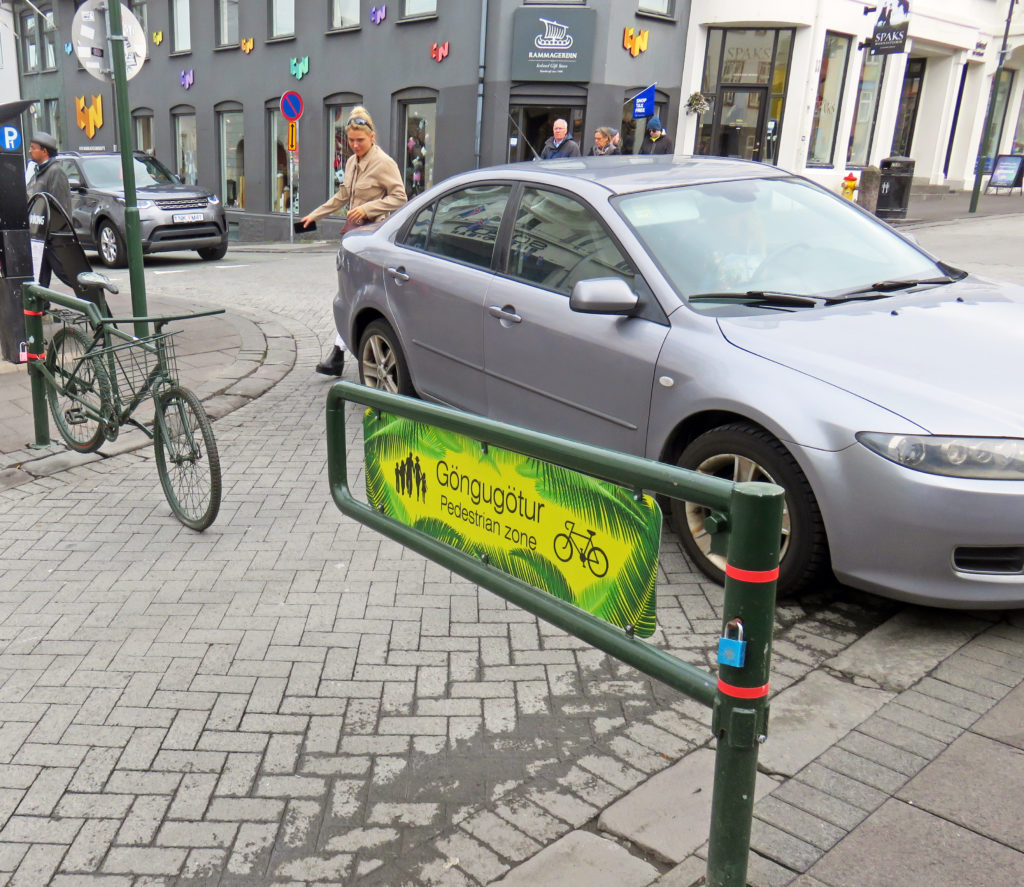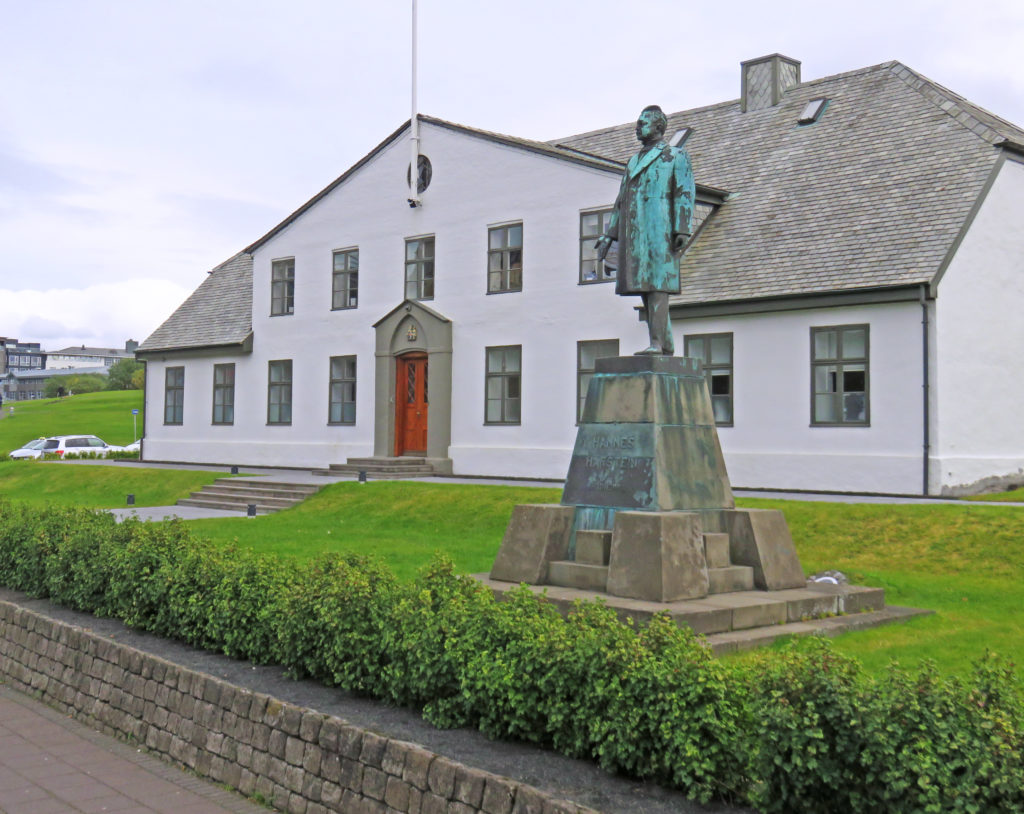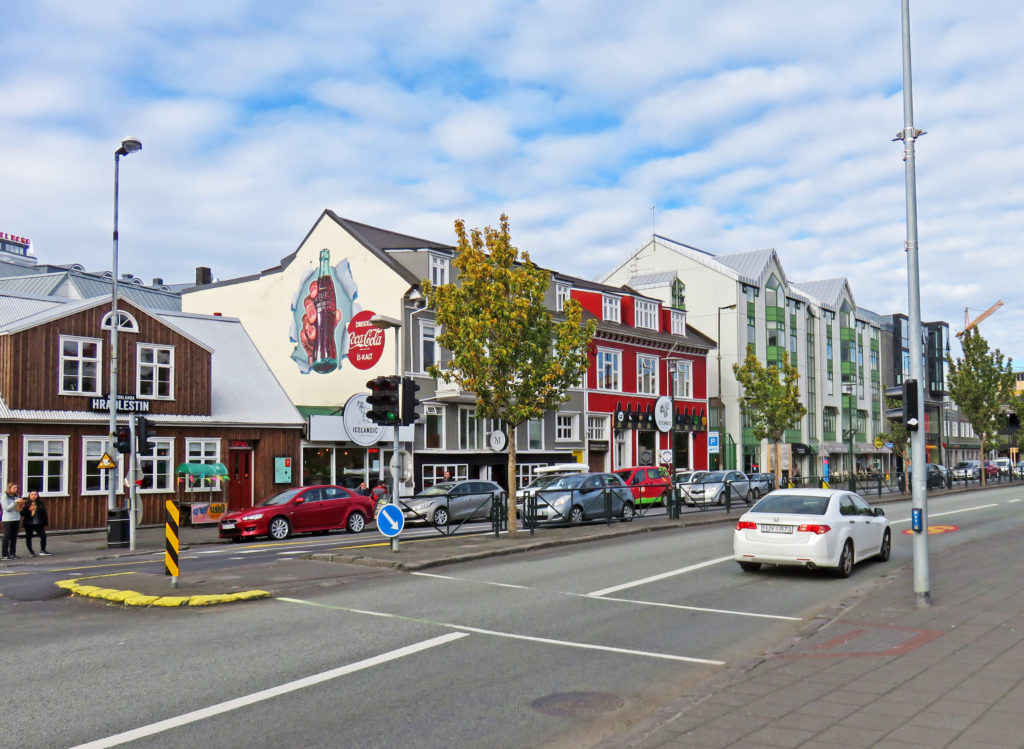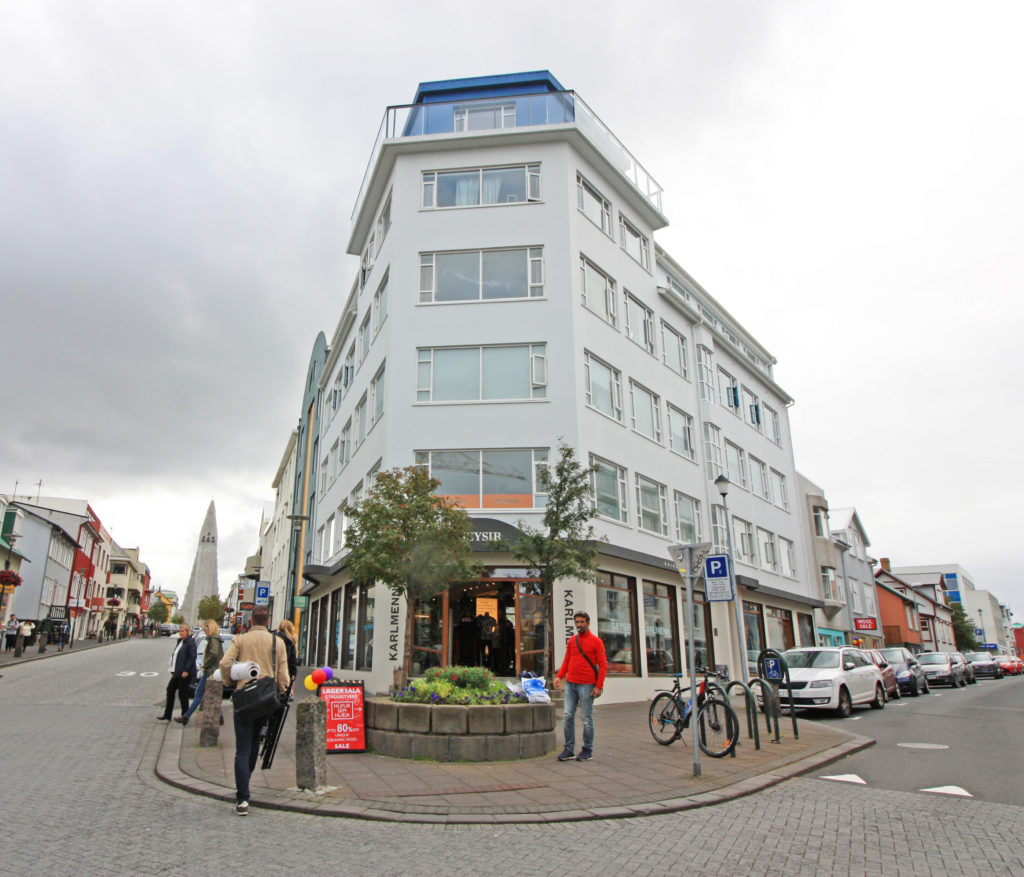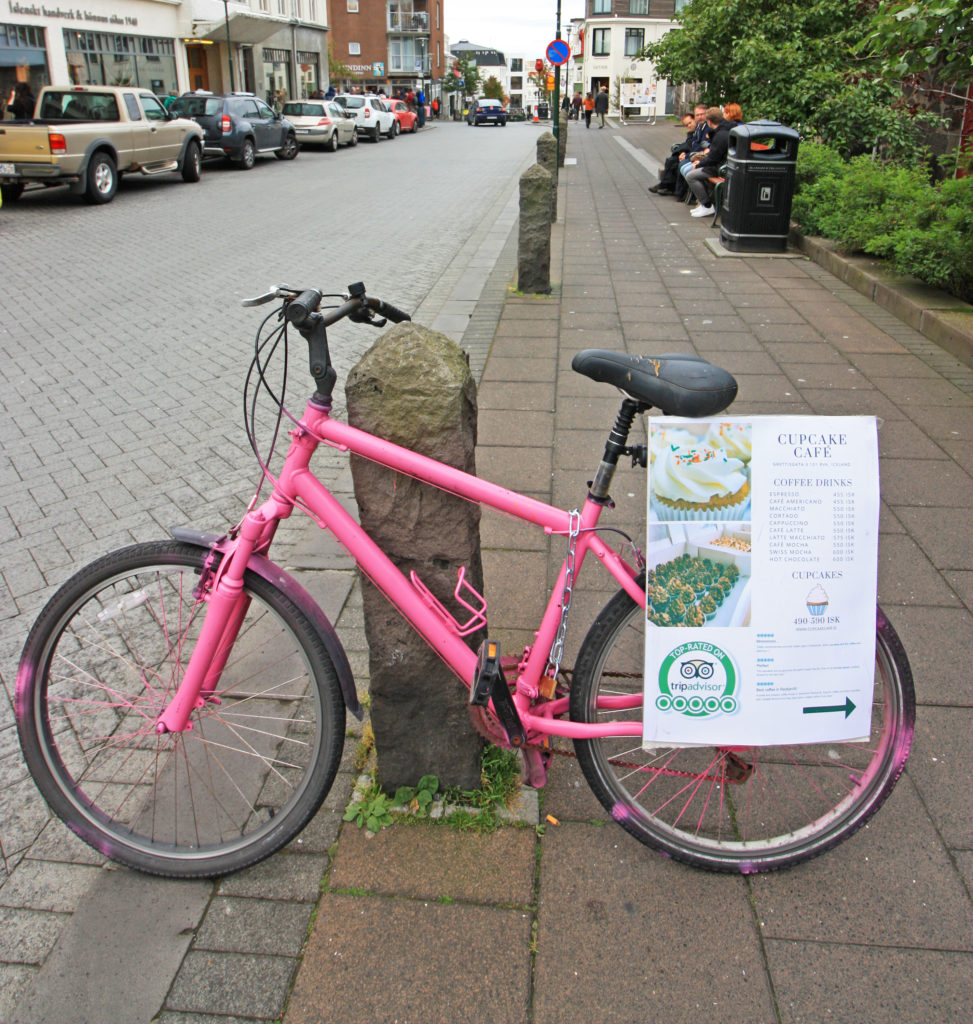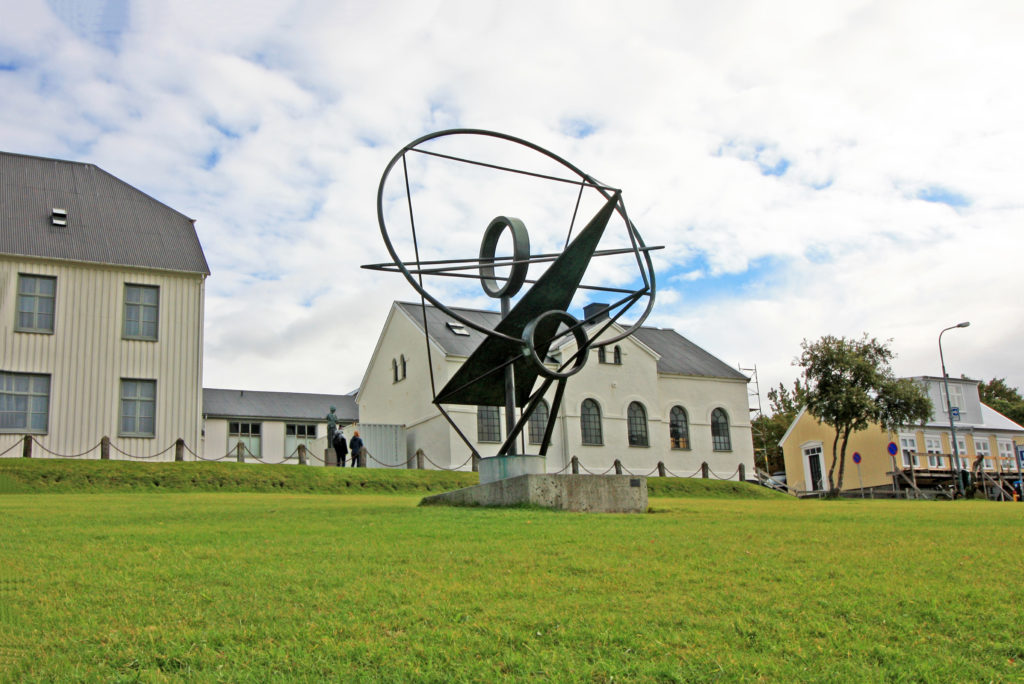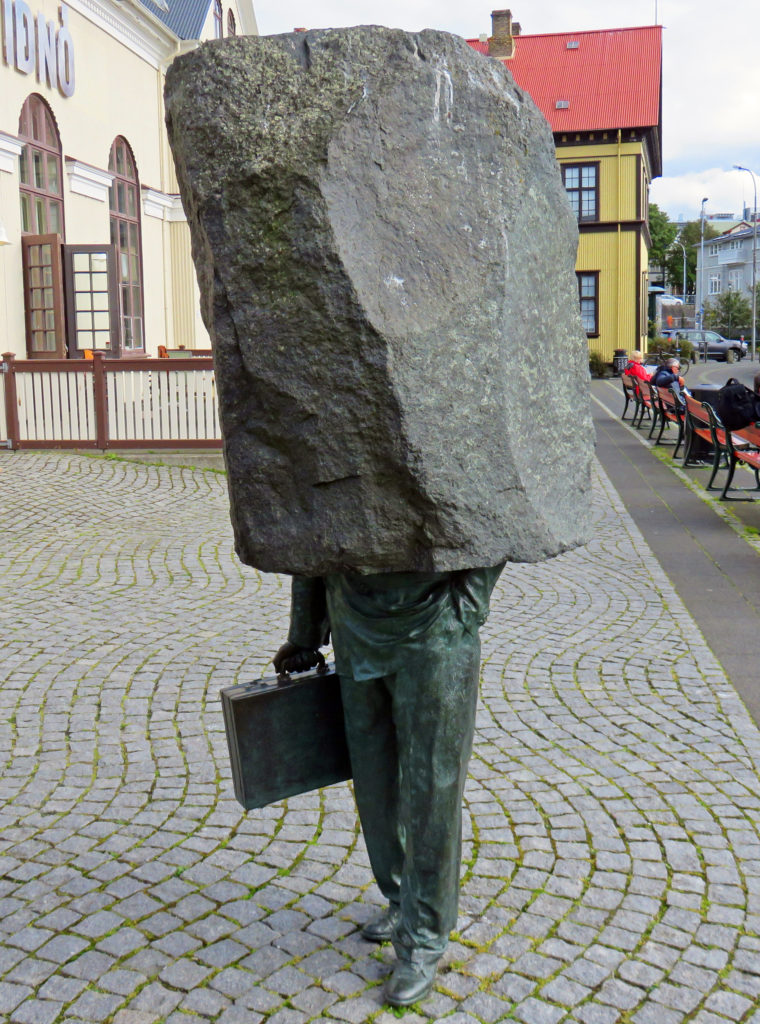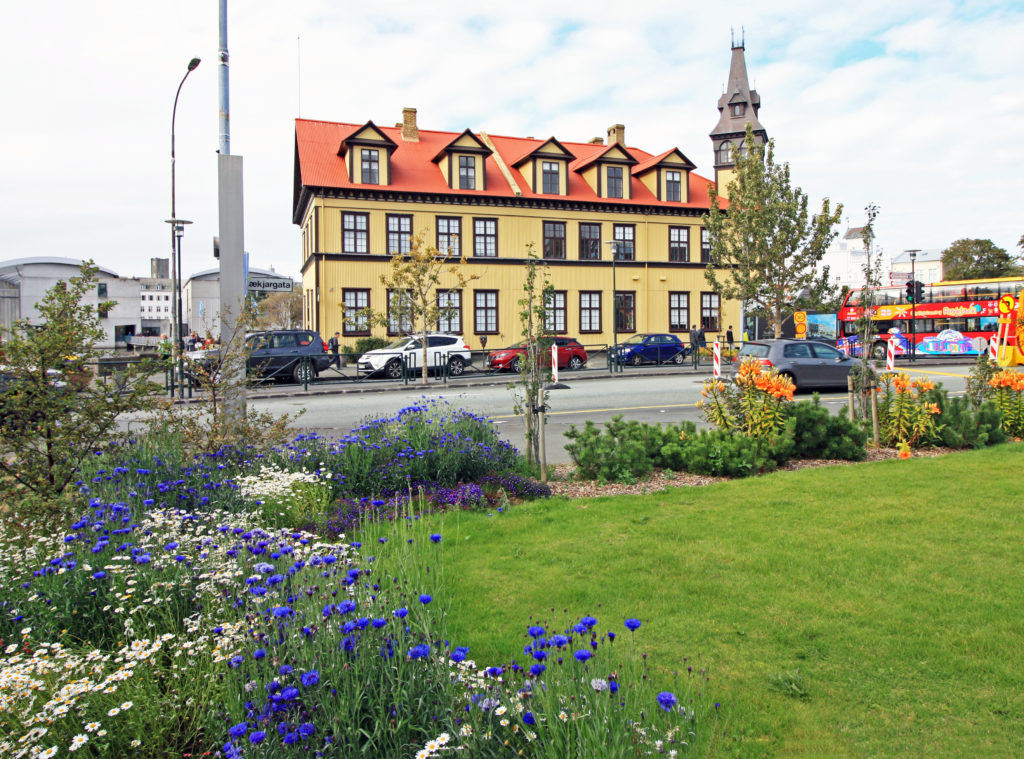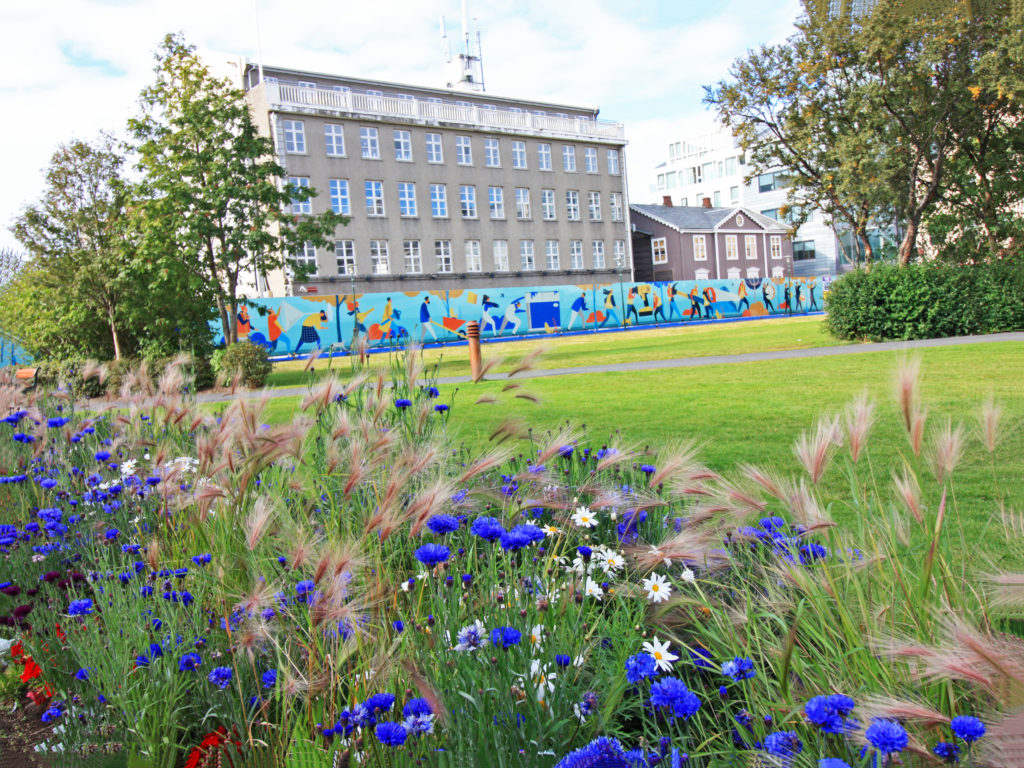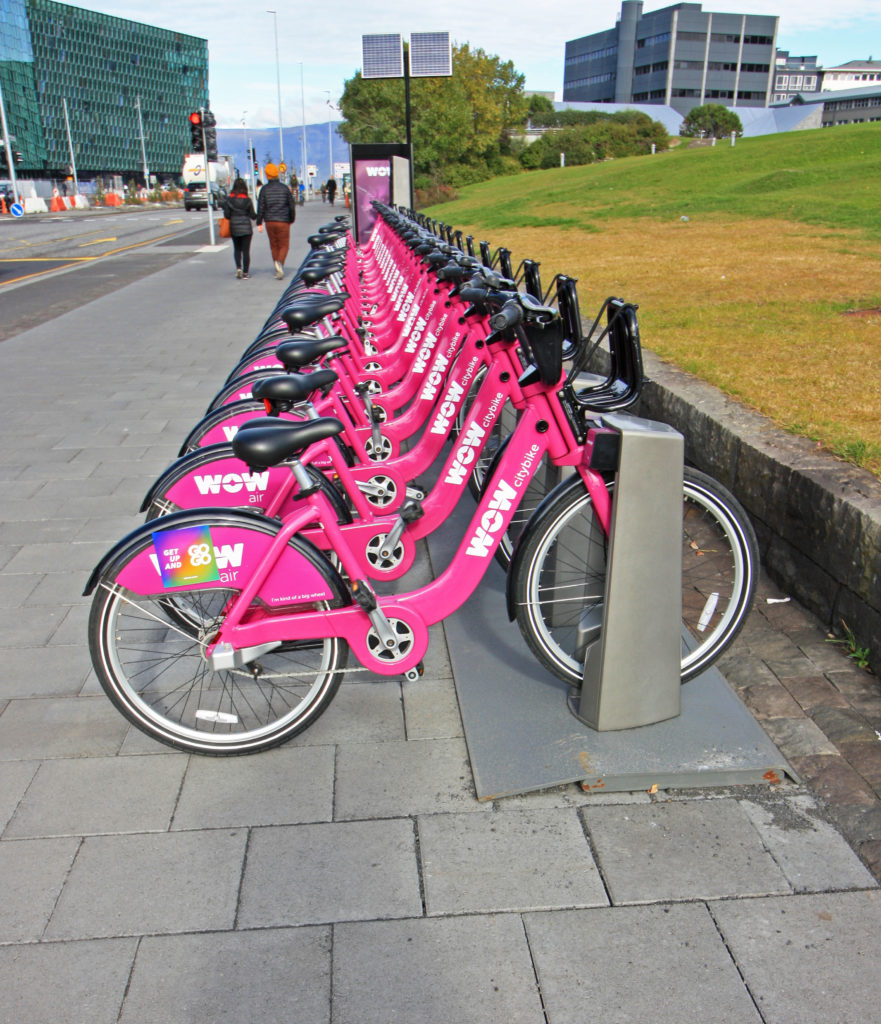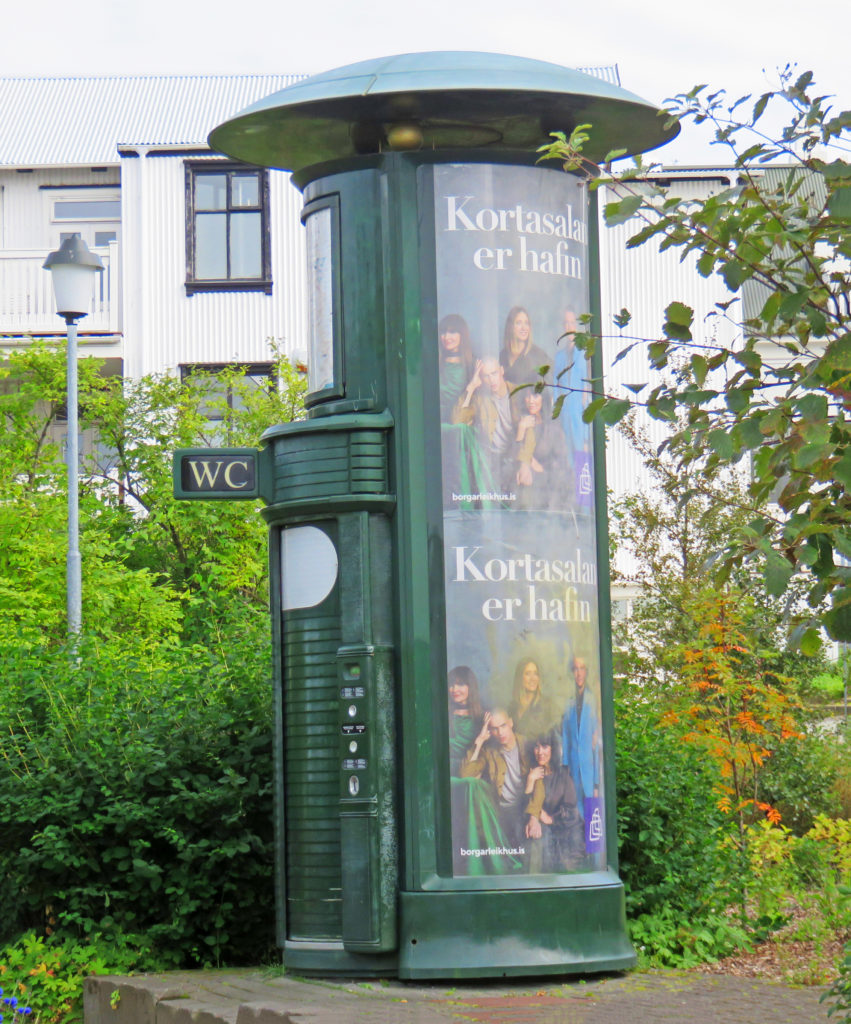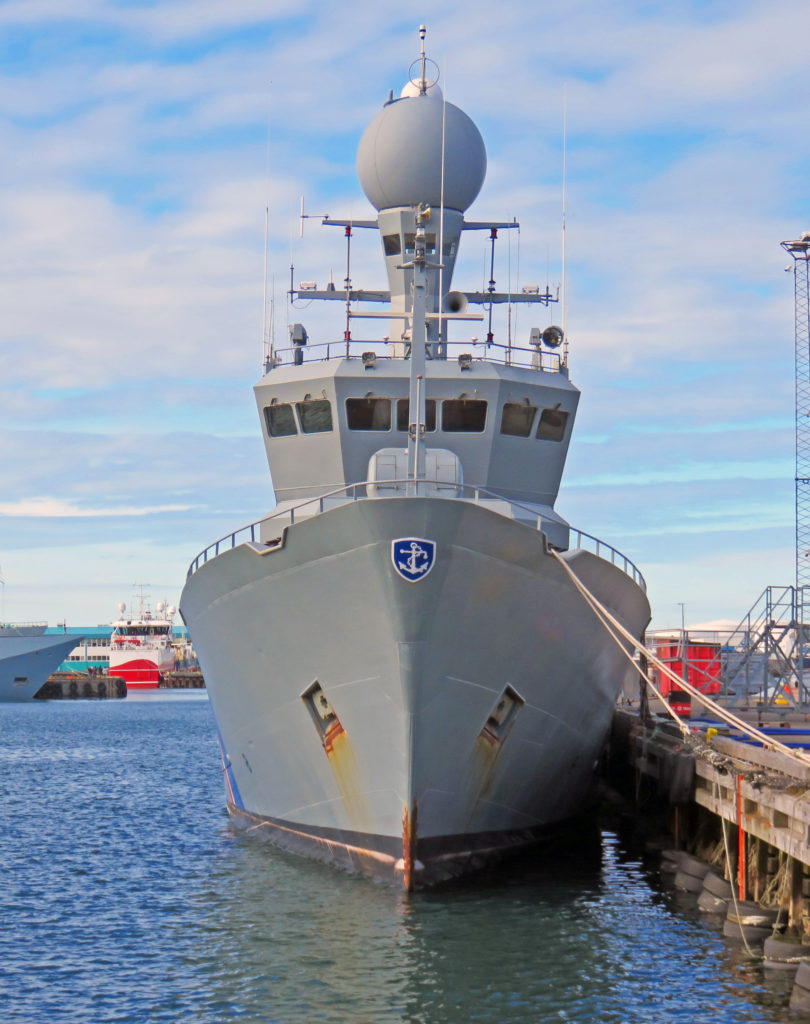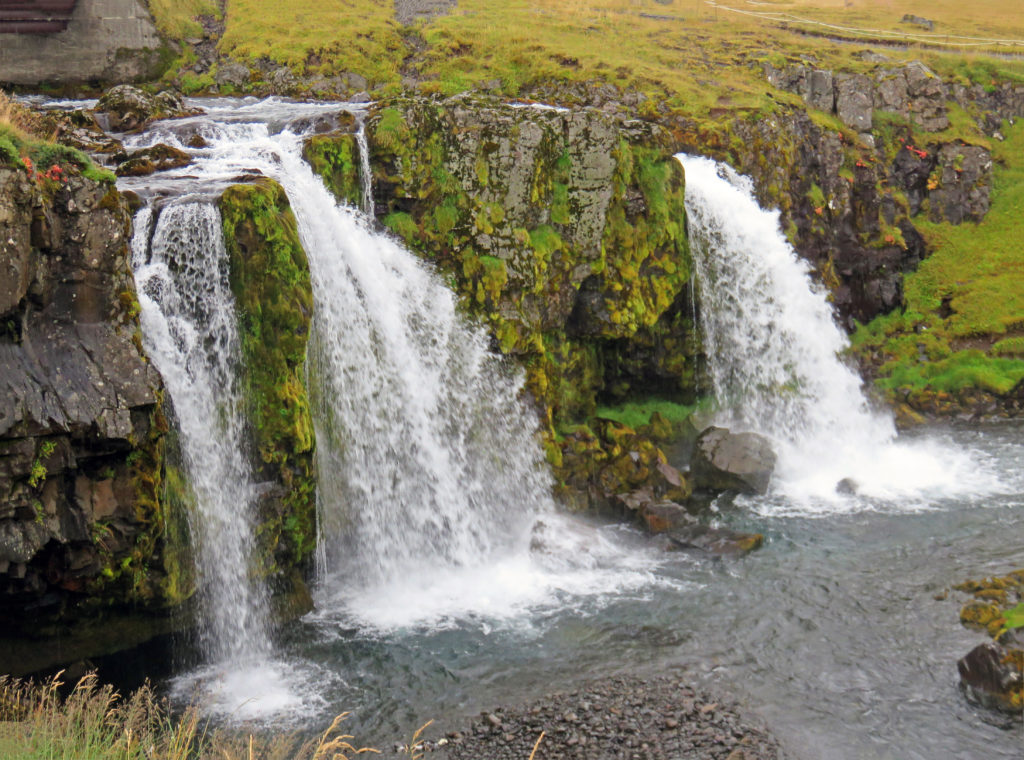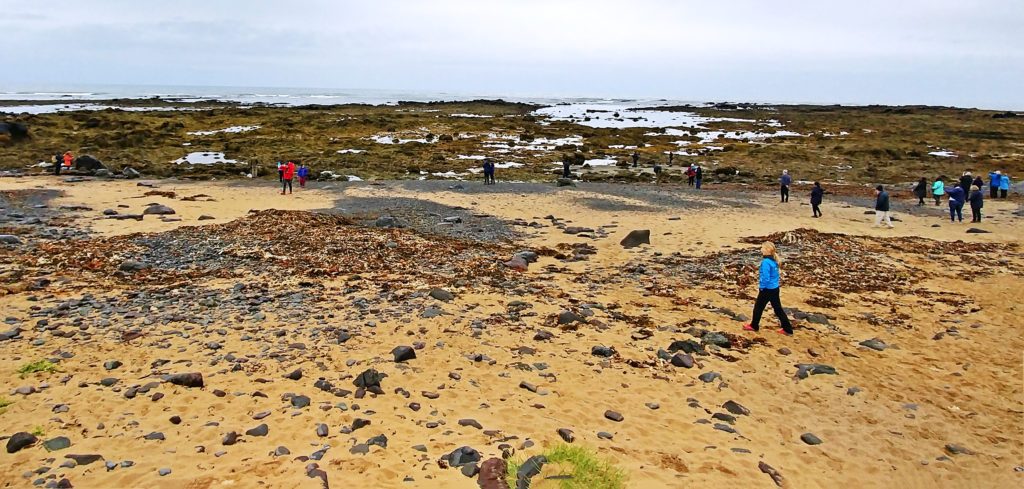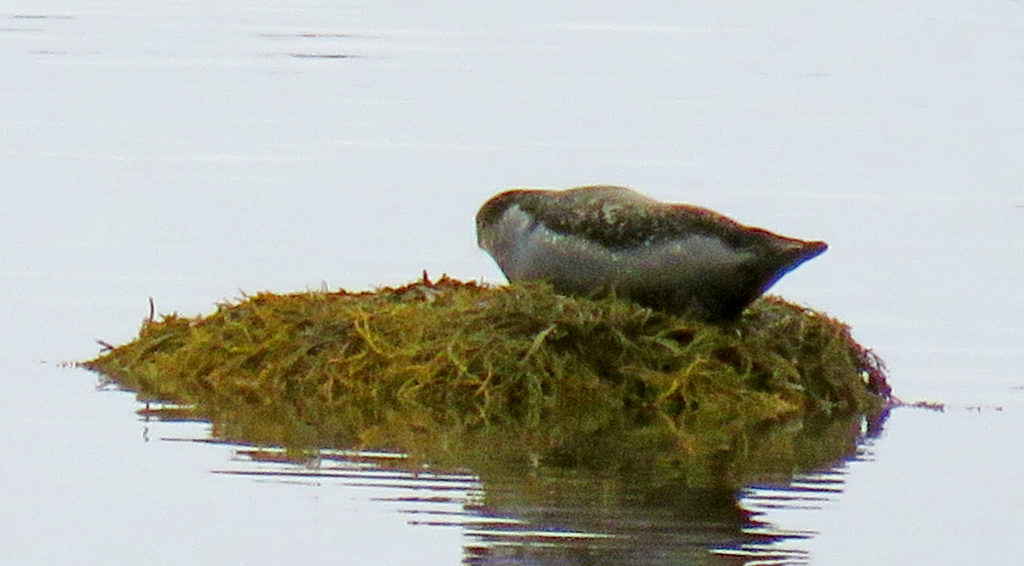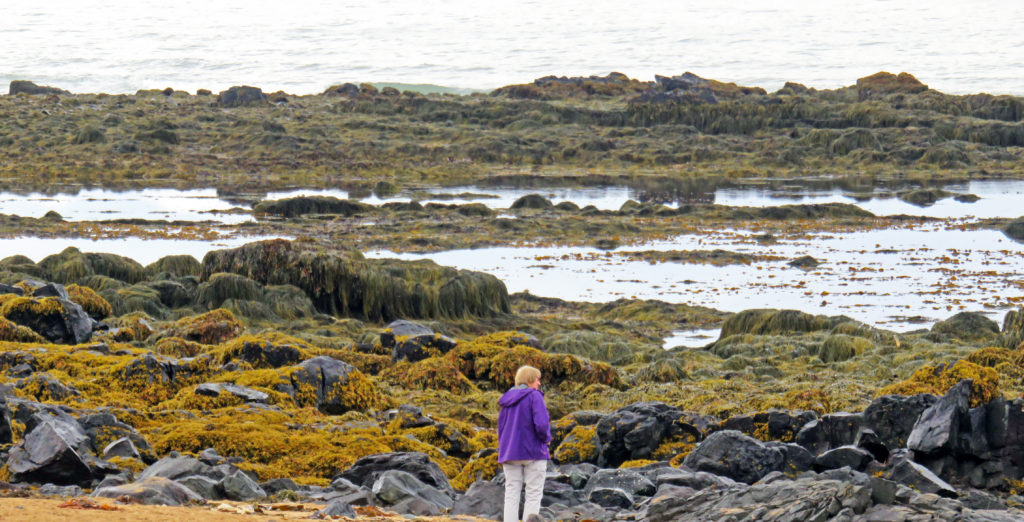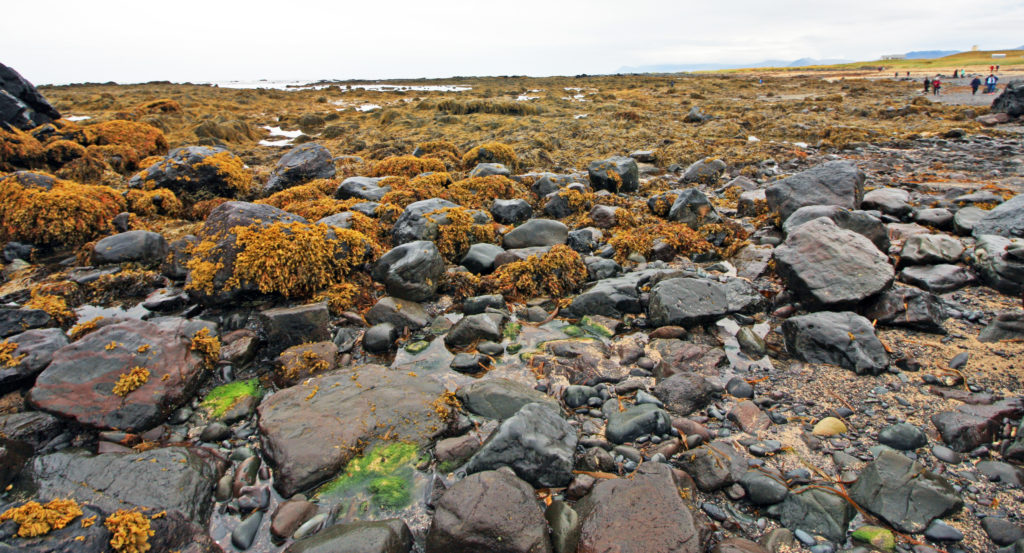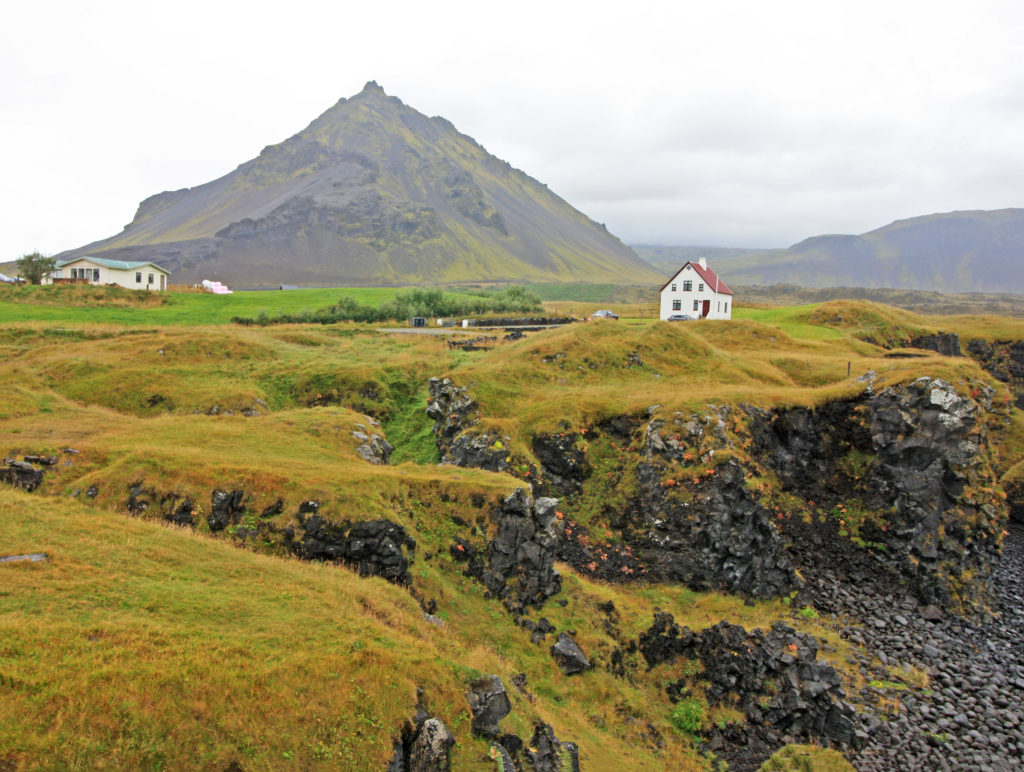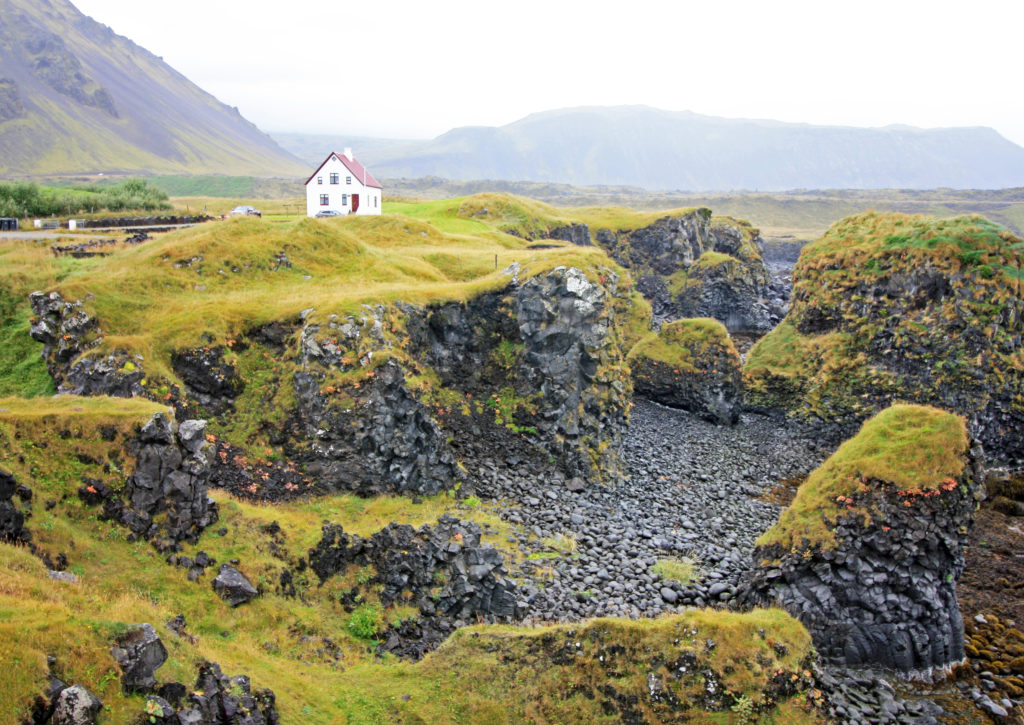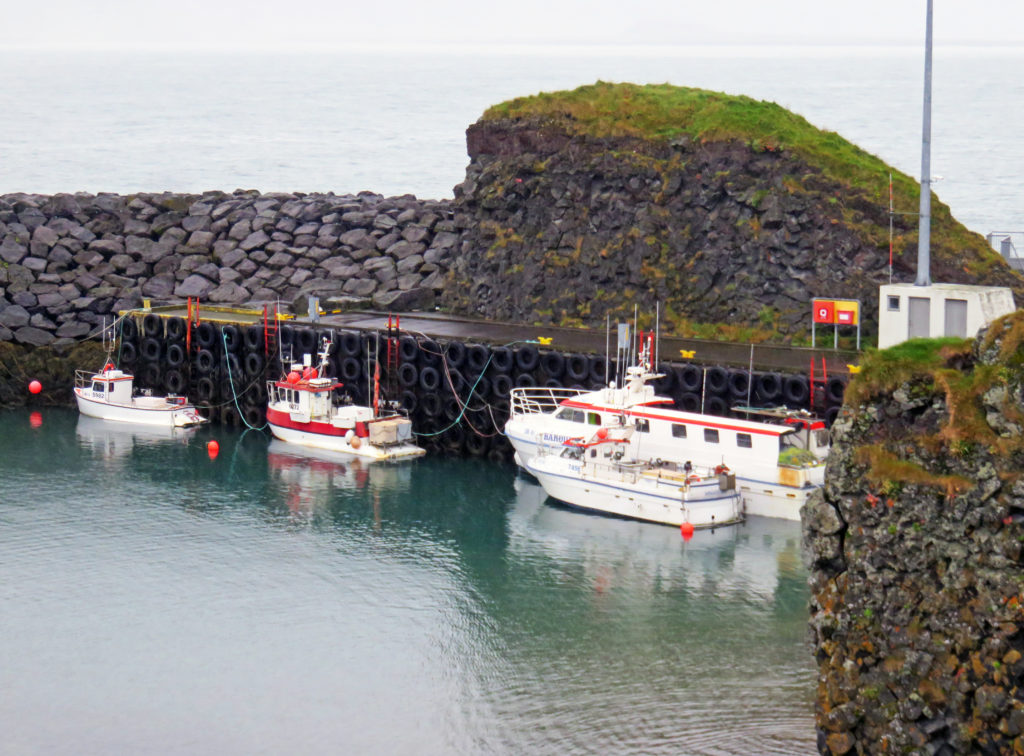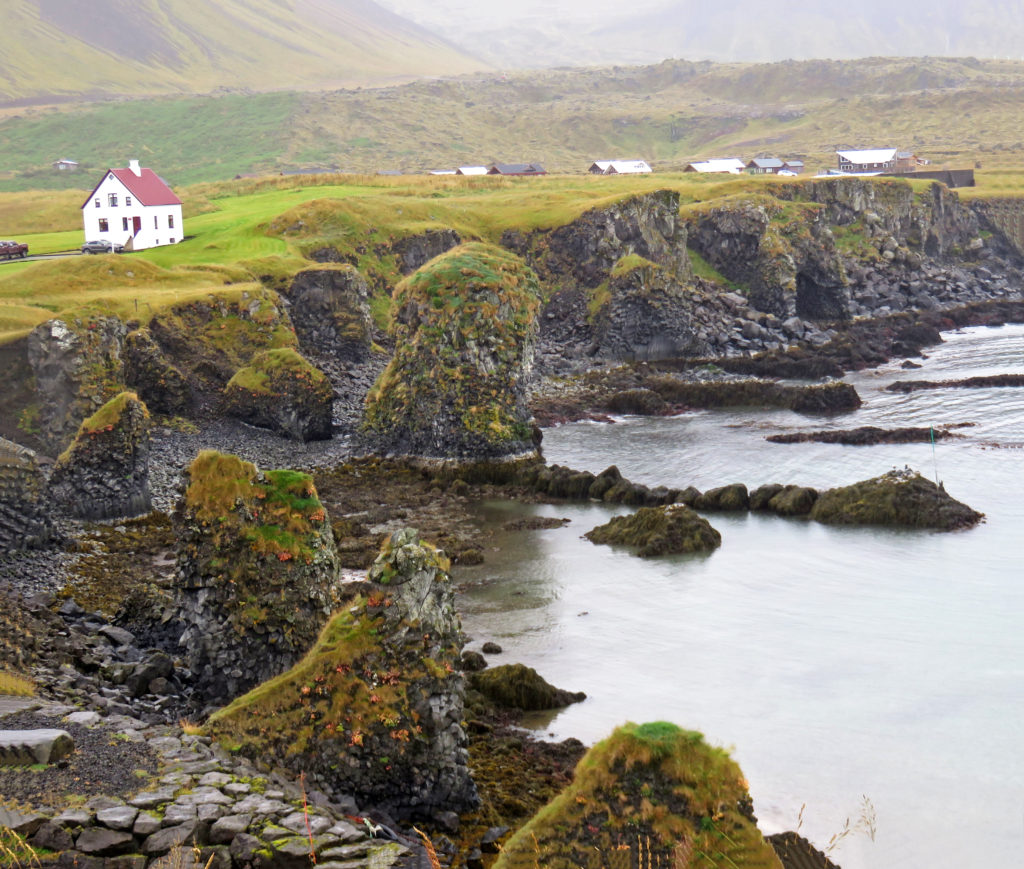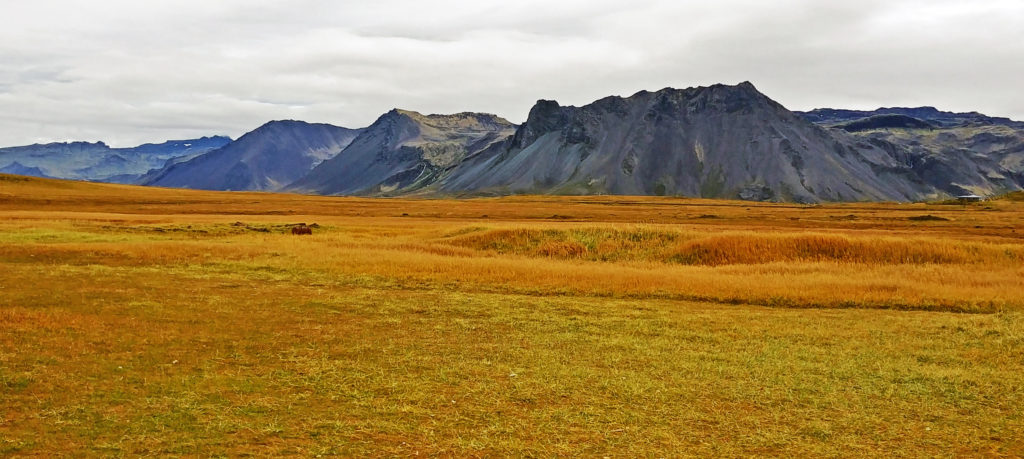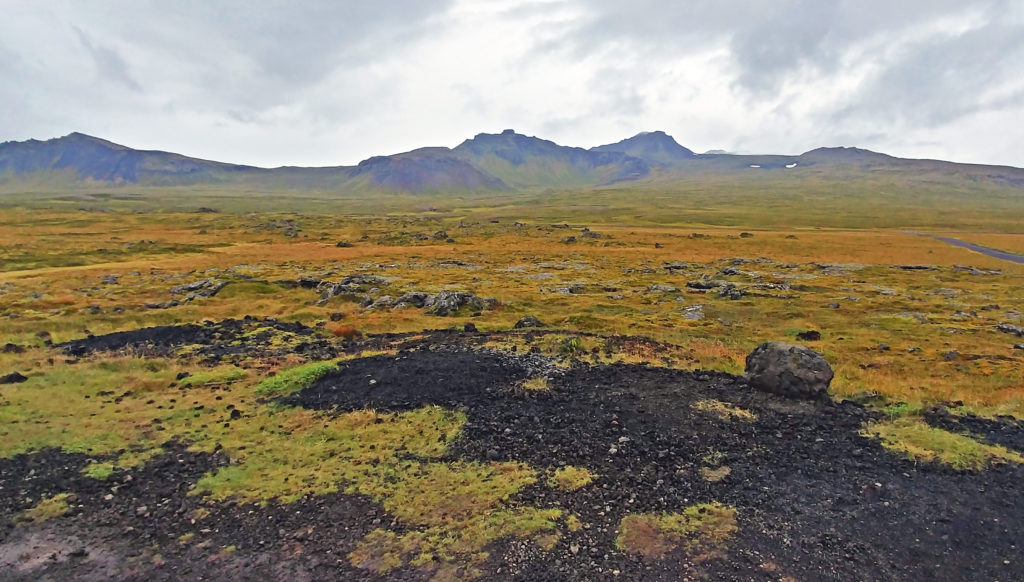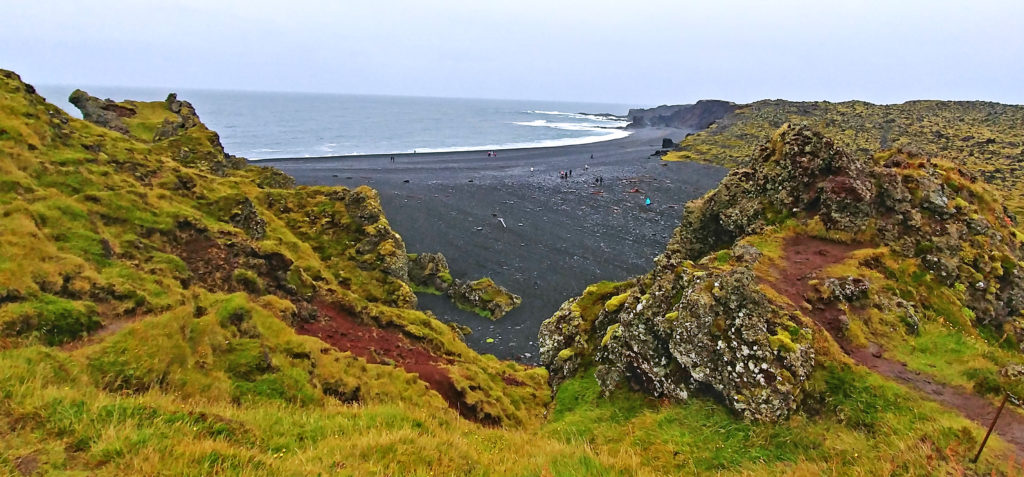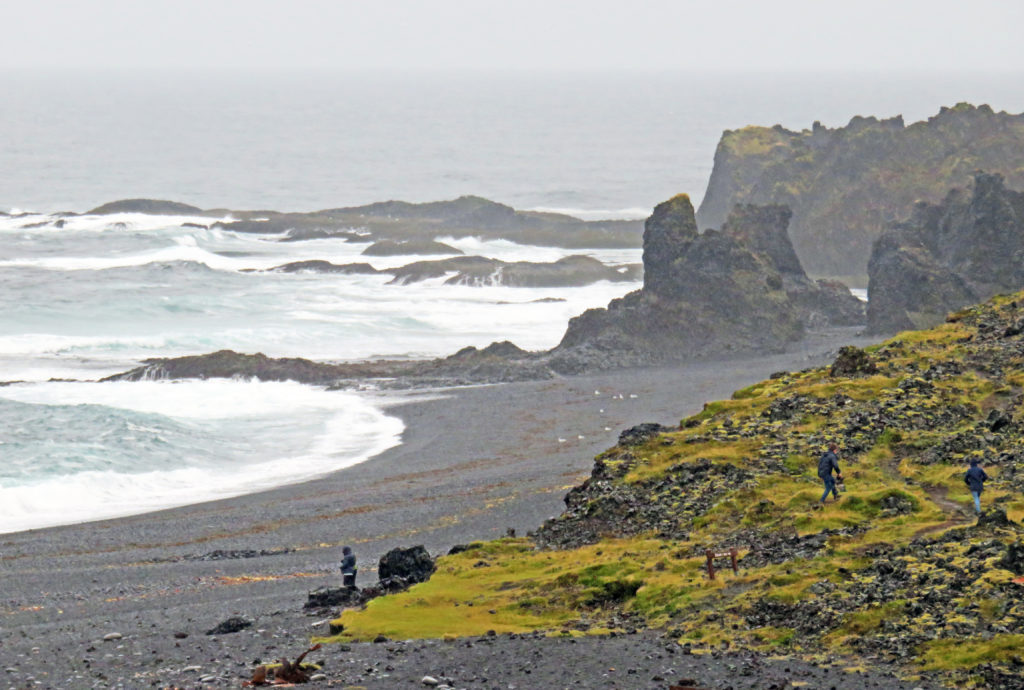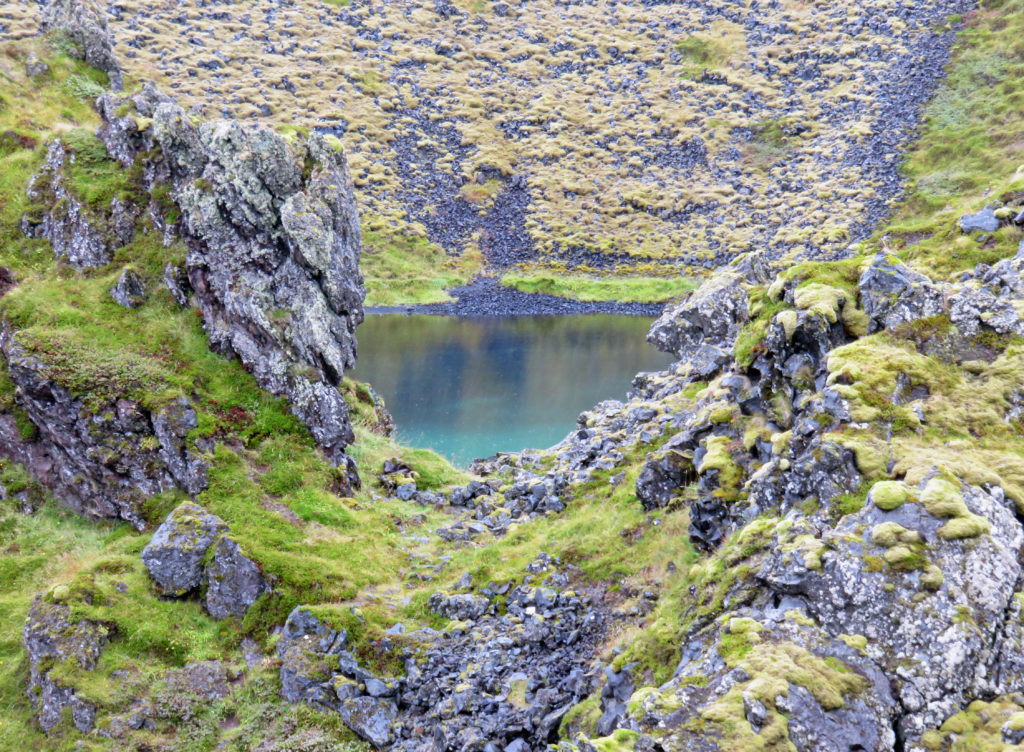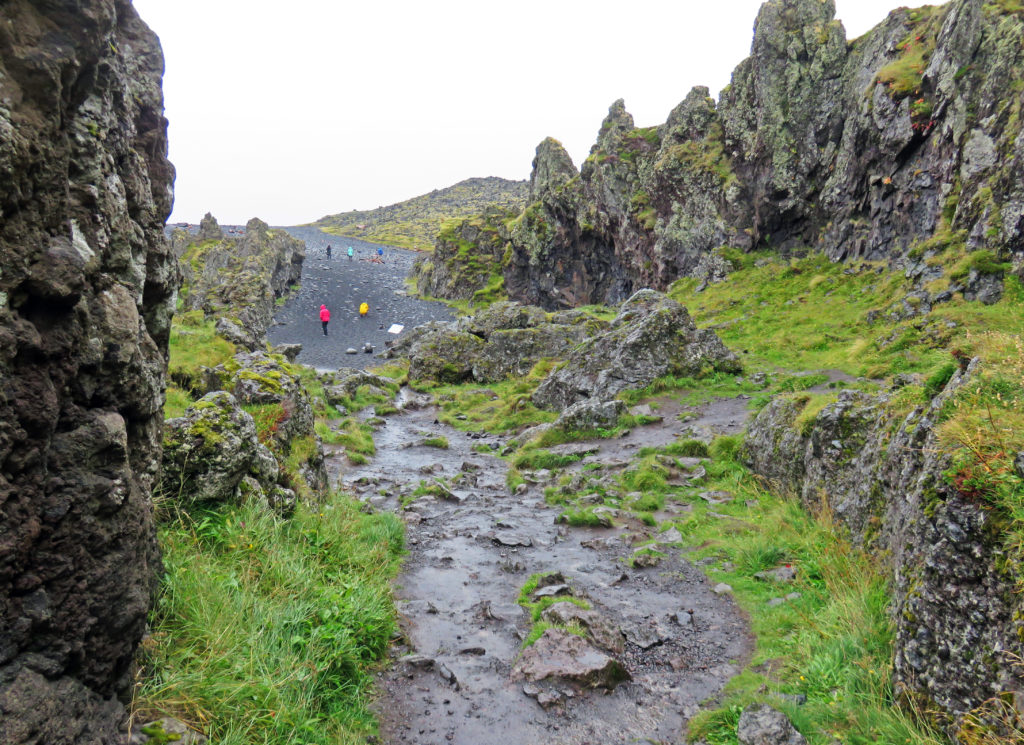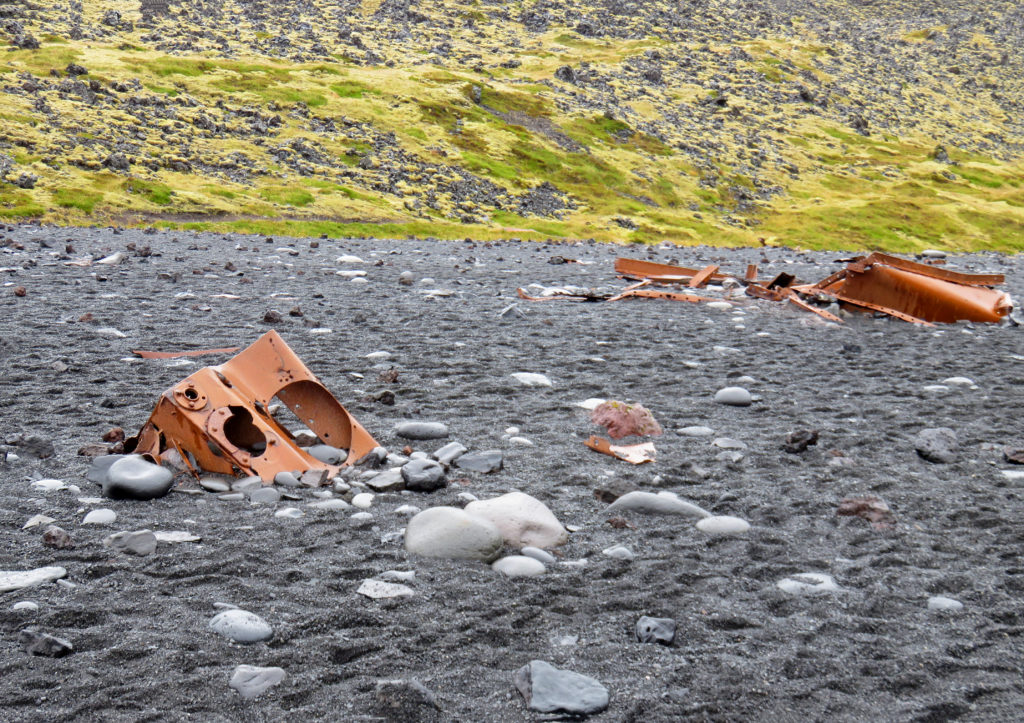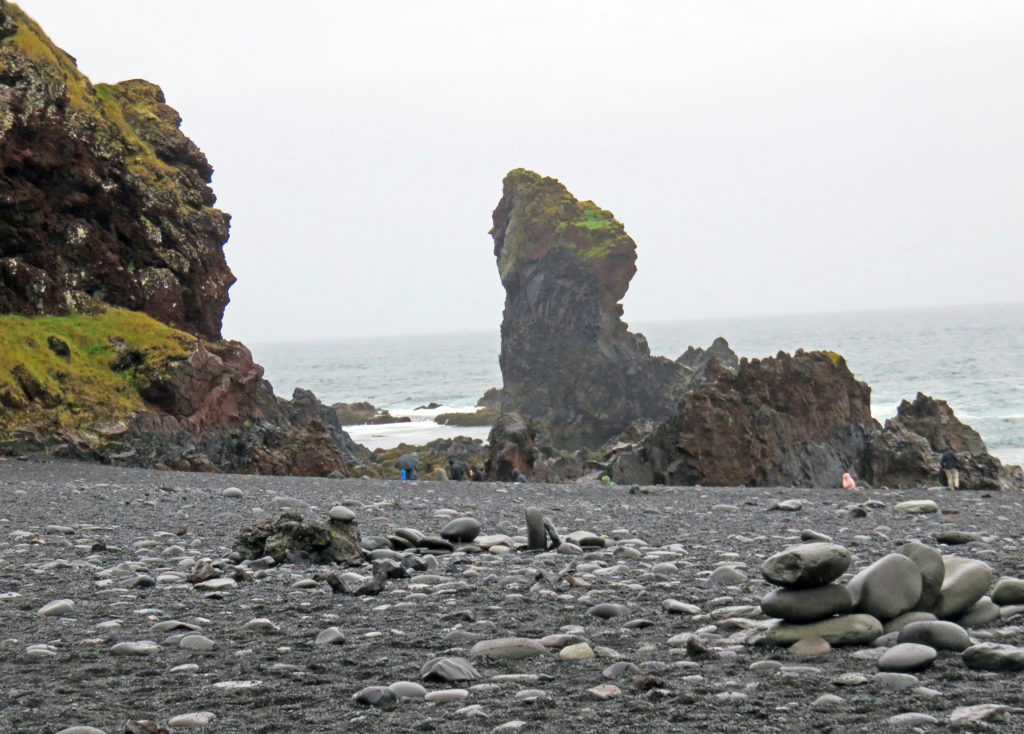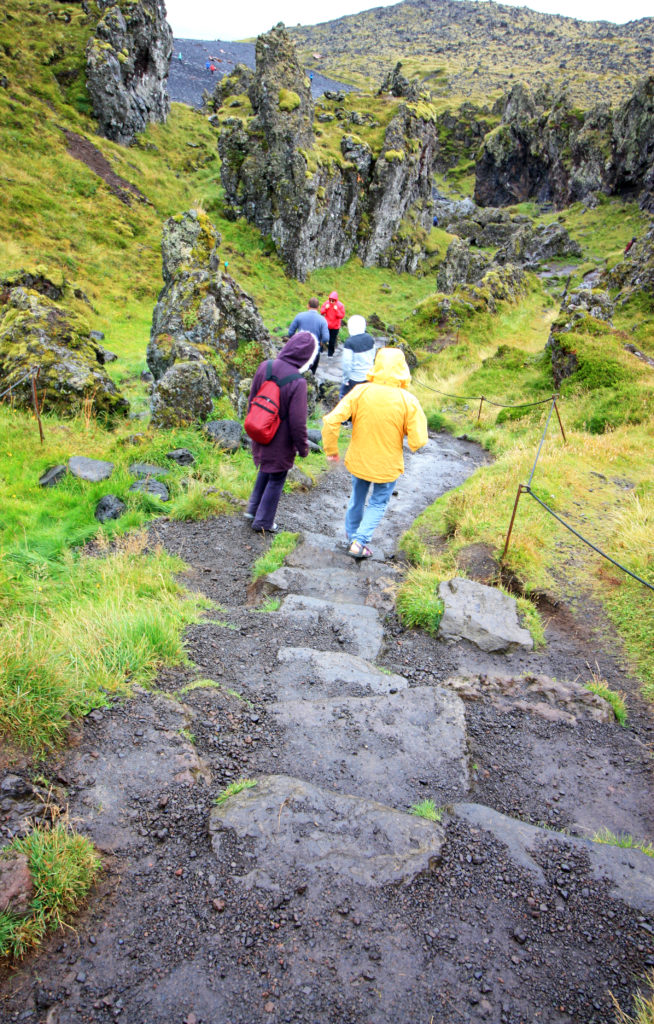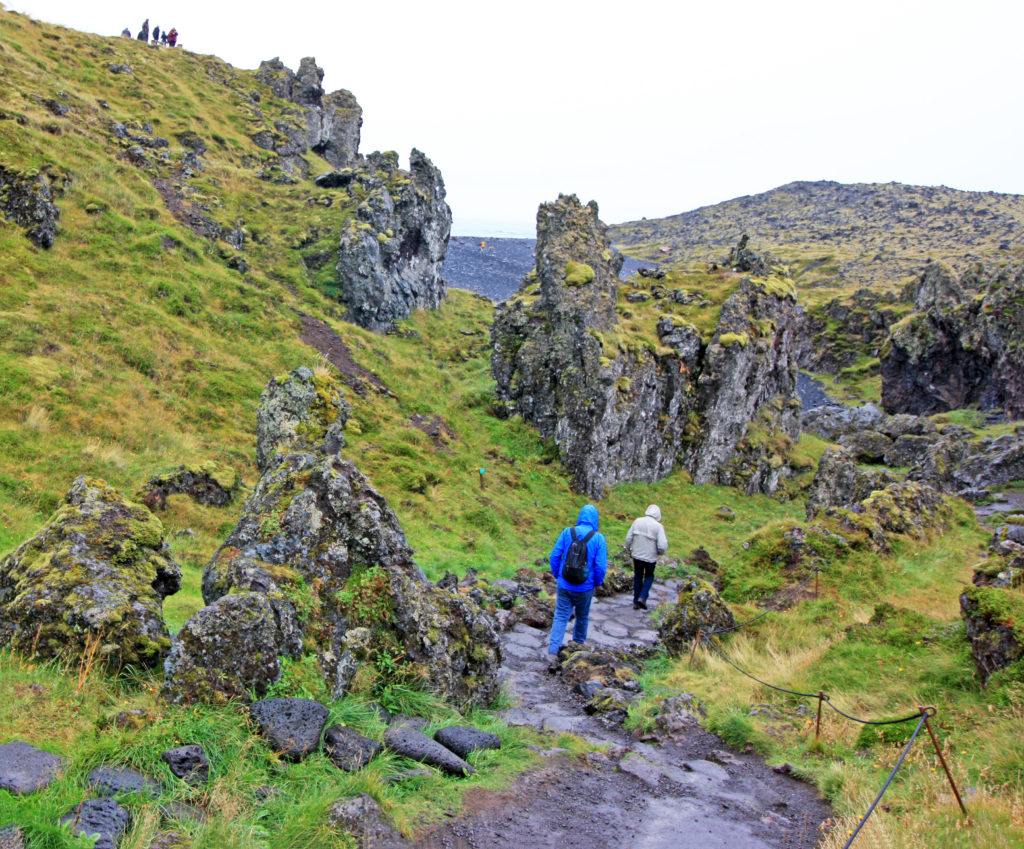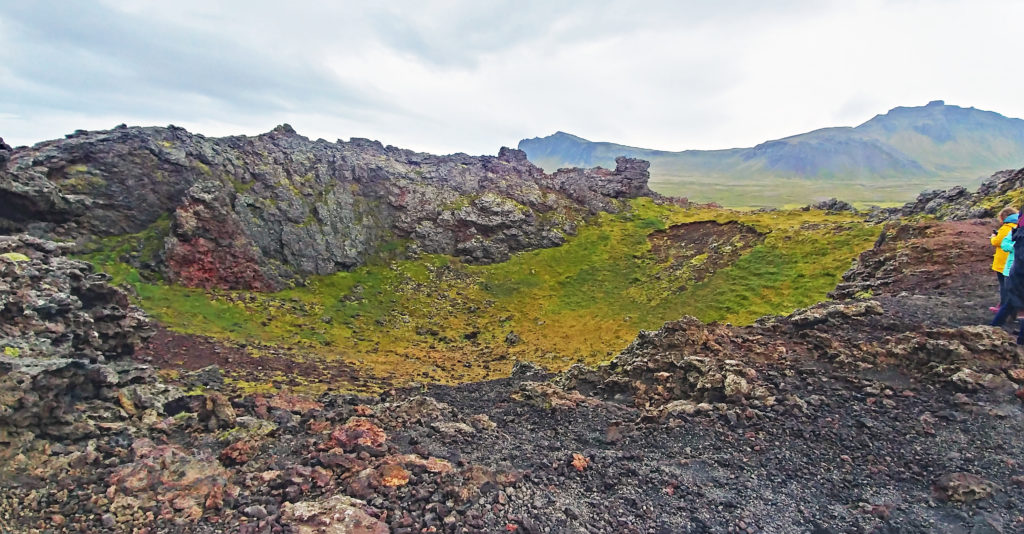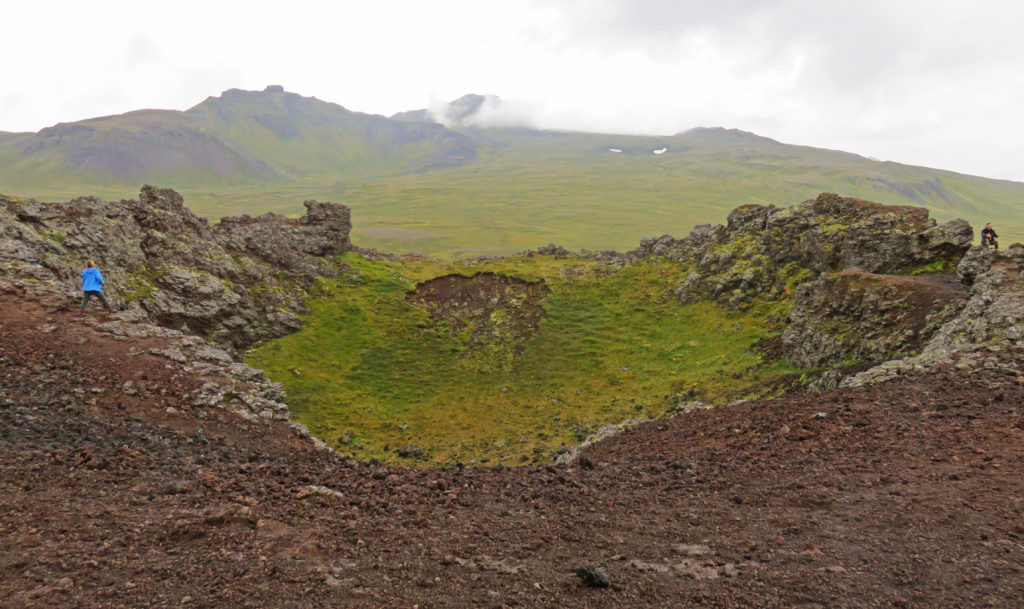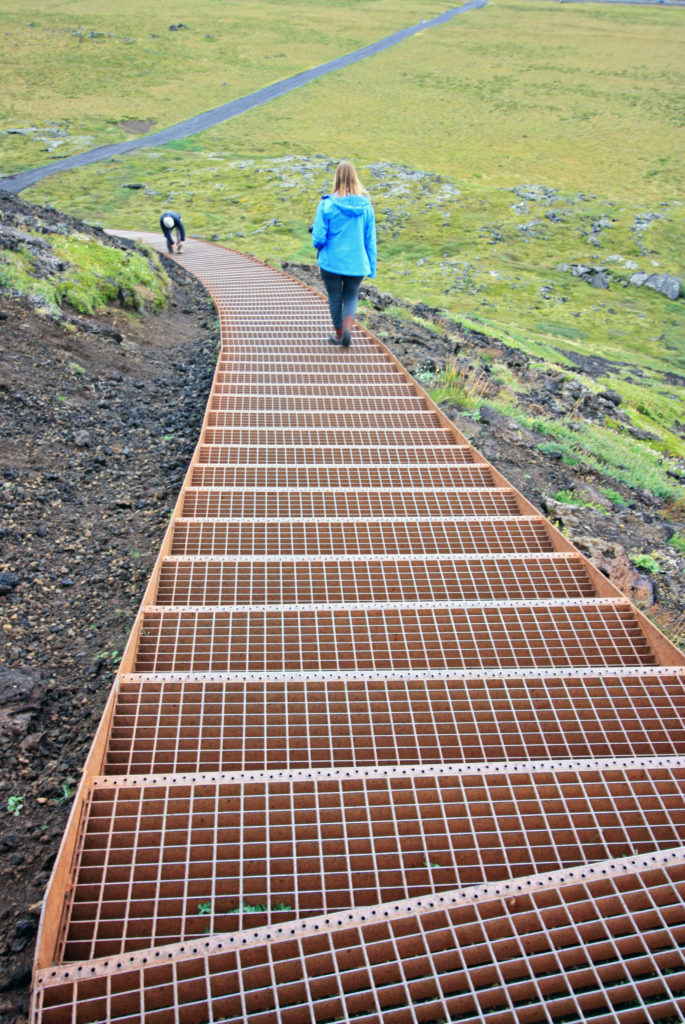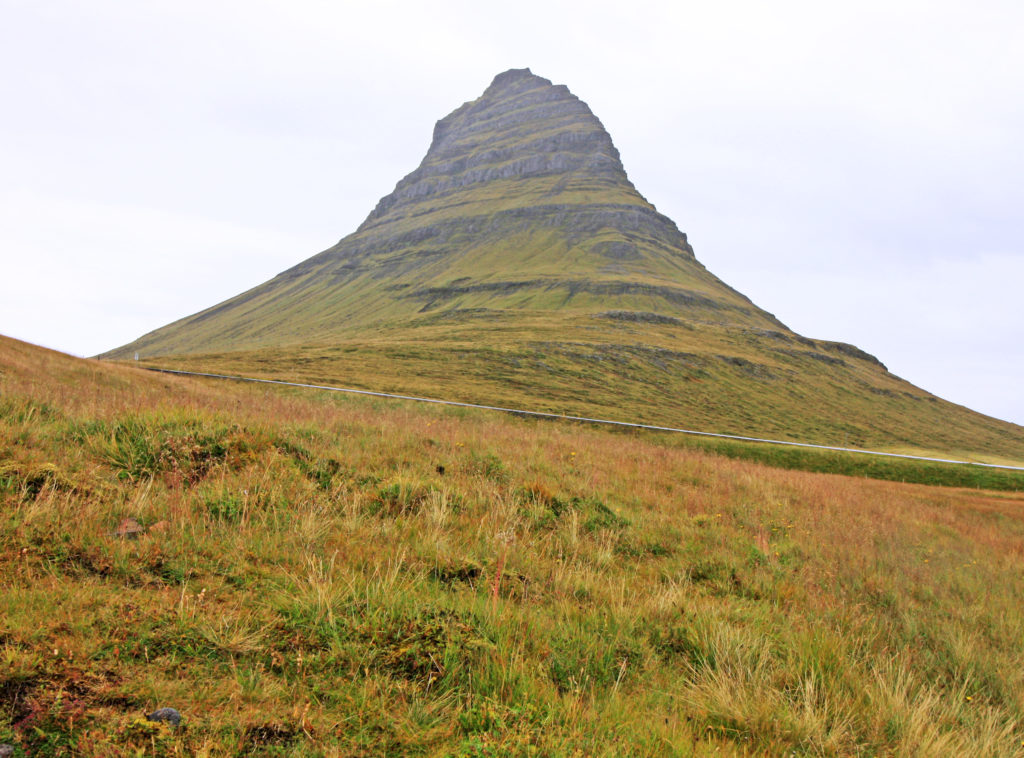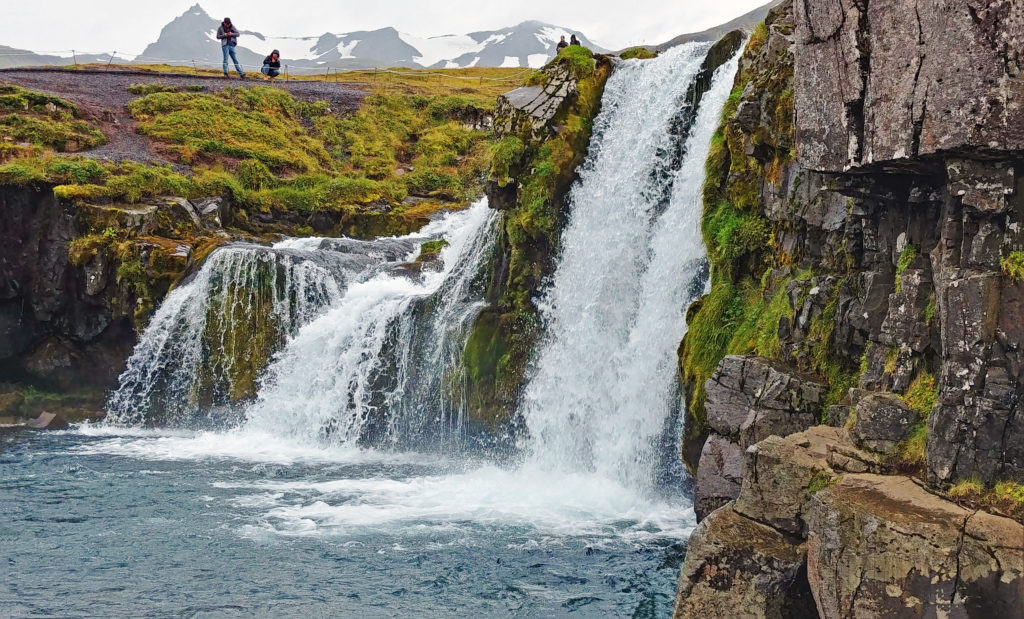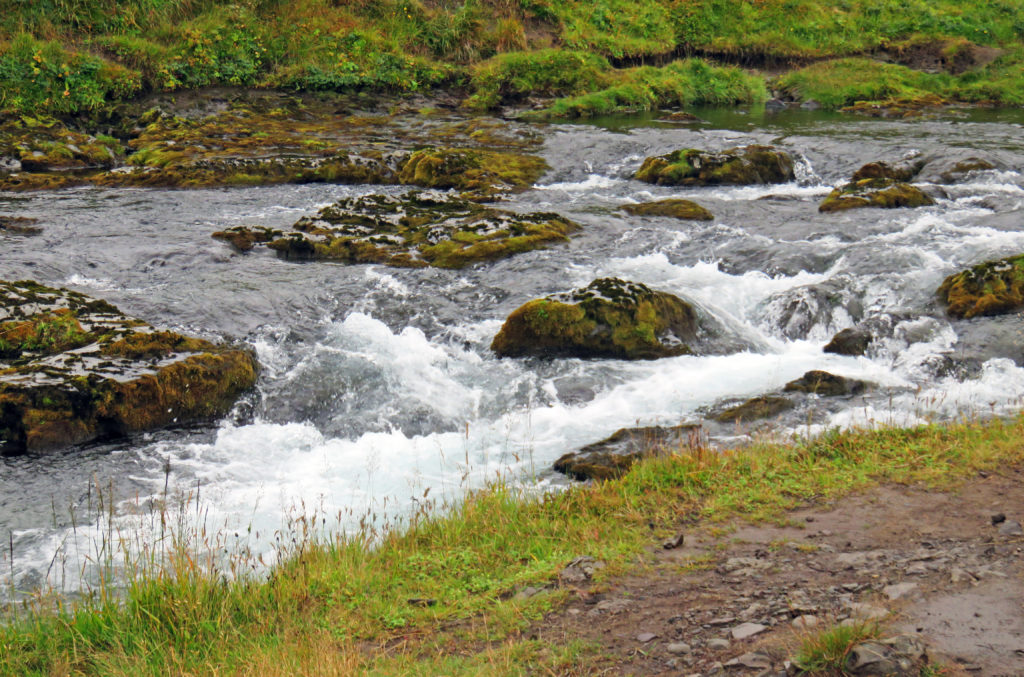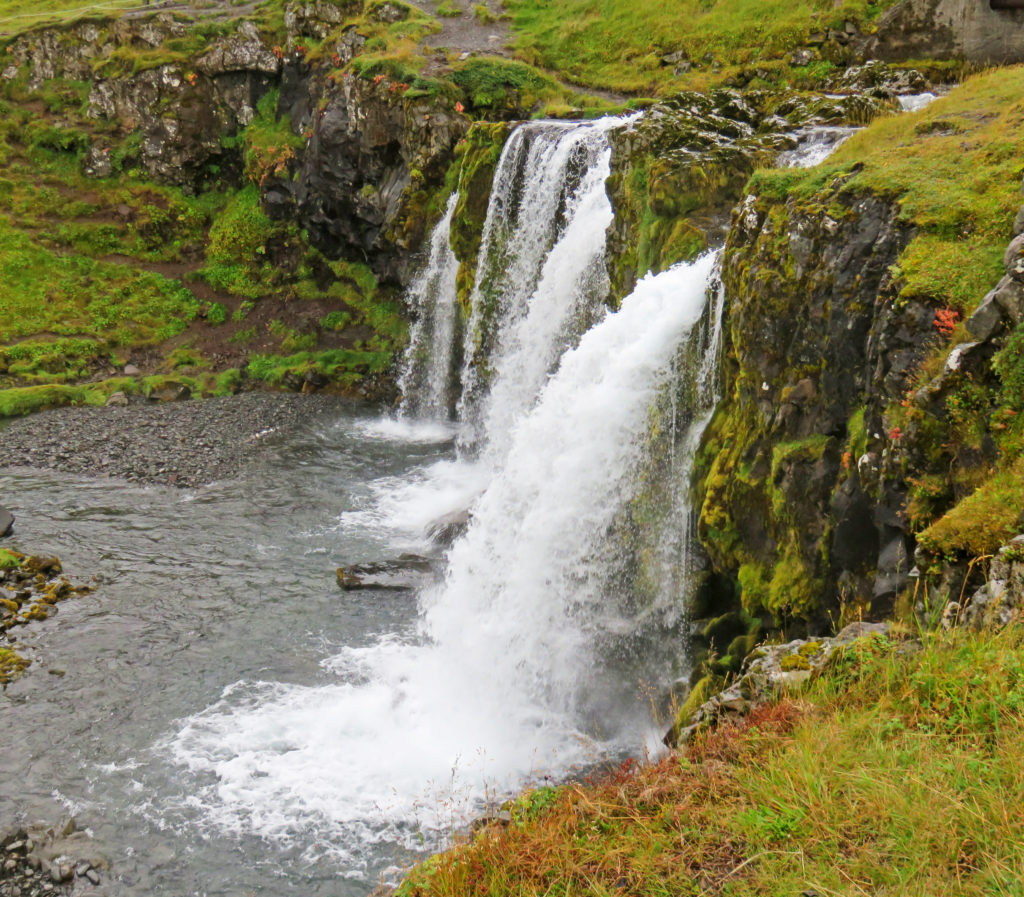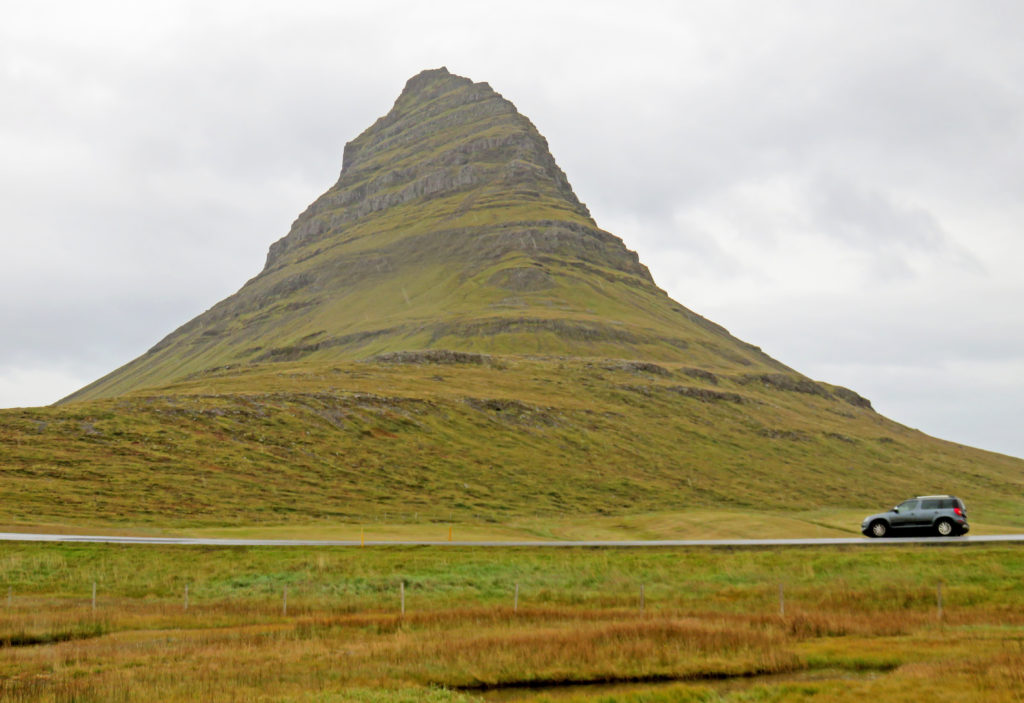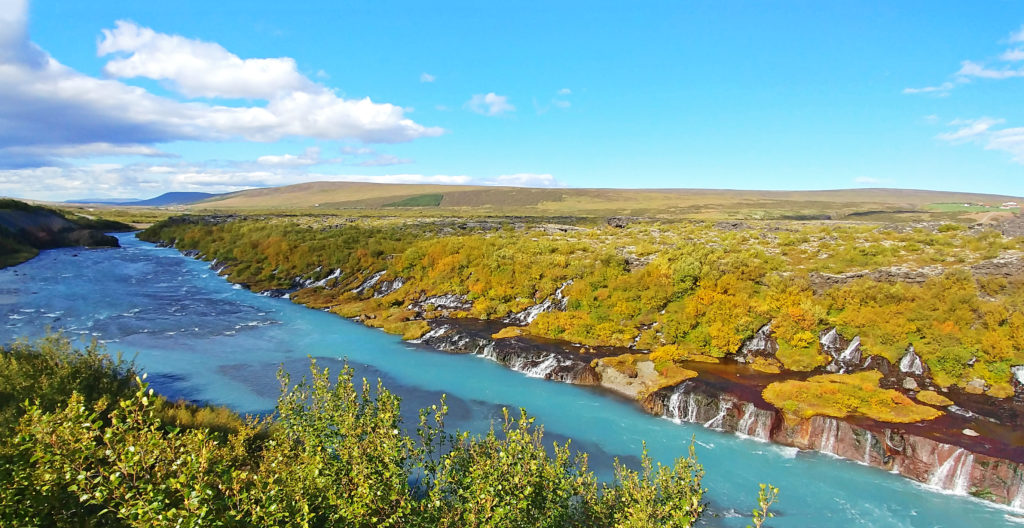
A view of the Hvita River in the Borgarfjordur Area of Iceland.
September 7, 2018
We awoke to a beautiful sunny and warm day but it would be bittersweet. Exploring the Borgarfjordur area of West Iceland would be incredible but it would be our last day with our guide and most of our tour group. Our first stop was at the Grabrok volcano craters. The volcanoes last erupted 3,000 years ago. We climbed up ~300 vertical feet via wooden steps and ash paths to the top of the tallest cone, Grabrok. It had a conical crater in the center – a perfect shape. There were amazing views of a smaller cone, Grabrokarfell, from the rim of Grabrok. We walked all around the rim of Grabrok and viewed its extensive lava field in the distance. Most of the terrain was draped in yellow moss.
Next, we were on our way to an Icelandic horse farm. When we arrived, we were greeted by a very friendly dog who loved having his belly scratched. The owners bred and maintained sixty horses and opened up their facility for visitors. There was a hot spring on the property – hot water was piped to heat the home, horse barns, etc. The horses were wonderful, docile creatures – very friendly. They provided lots of opportunities for selfies. The owner led us on a tour of the property (horse barns, hot spring), told us all about Icelandic horses, introduced us to several of them, and provided guidance and encouragement for up-close photo opportunities.
The farm had been in her family since 1886. At the end of the tour she served us coffee, hot cocoa, and rye bread (a special family recipe) that she baked for 25 hours in the hot spring. It was all very good. The farm only used about 5% of the hot spring water. The rest simply flowed into the watershed. What a wonderful time…one of my favorites.
A 1:30 p. m., we arrived at a park containing a very unique waterfall called Hraunfossar Waterfall. A short-paved walk from the parking area brought us to a scenic river overlook with the waterfall on the far side of the Hvita River. The waterfall was fed by the Langjokull Glacier. The glacial meltwater traveled to the Hallmundarhraun lava field where it flowed under the rock and then poured out in thousands of rivulets, forming the very wide picturesque falls. I’d never seen nor heard of anything like it. If there are any other such waterfalls on the planet, I’d be surprised.
Further along the path was the smaller but very dramatic waterfall, Barnafoss, comprised of a substantial flow moving down a snake-like channel carved in the surrounding lava. We remained long enough for a quick lunch break at a nearby restaurant for those needing refueling.
Later that afternoon we stopped briefly at Reykholt, the site of a 1,000-year-old settlement. The main attraction was “Snorri’s Pool”, an old stone-faced hot water pool used and written about 1,000 years ago by Snorri Sturluson, who is the very famous author of Icelandic sagas. There was an underground tunnel from the outdoor pool to Snorri’s nearby home. The tunnel was a hundred feet or so long and had a spiral staircase inside. Nearby, we viewed the old foundations of Snorri’s dwelling and other buildings.
Next to the hot pool was a large modern building that was a boarding school our guide attended as a child. He lived there with 120 or so other children from mid-September to Christmas, and then from January to Easter. Boarding was the only option since the weather made commuting impossible. The nearby hot spring was steaming; it supported this small community. There has been a Lutheran church on the site since 1,000 A.D. or so. The small structure was typically plain but inside was a truly beautiful wooden organ. The prominent manufacturer’s nameplate indicated that the organ was built in Washington, New Jersey (probably in the late 19th or early 20th century).
Five minutes down the road, we arrived at Deildartunguhver Hot Springs, Europe’s most powerful hot spring. It was awesome to see it bubbling up along a long stretch enshrouded in steamy mist. The water from this spring is captured and piped many miles to the surrounding towns of Borgarnes and Akranes where it is used for central heating. The hot spring gushes out fifty gallons of boiling water per second and its thermal output is 62 megawatts!
We ended our day in the coastal town of Borgarness, ninety minutes northwest of Reykjavik. At our hotel for the night we said goodbye to our tour guide and all but one of our companions. The rest of them were on a six-day tour and would be dropped off in Reykjavik. We then relaxed in our room, went out to a nearby restaurant and then called it an early night.
Bless,
Kathy
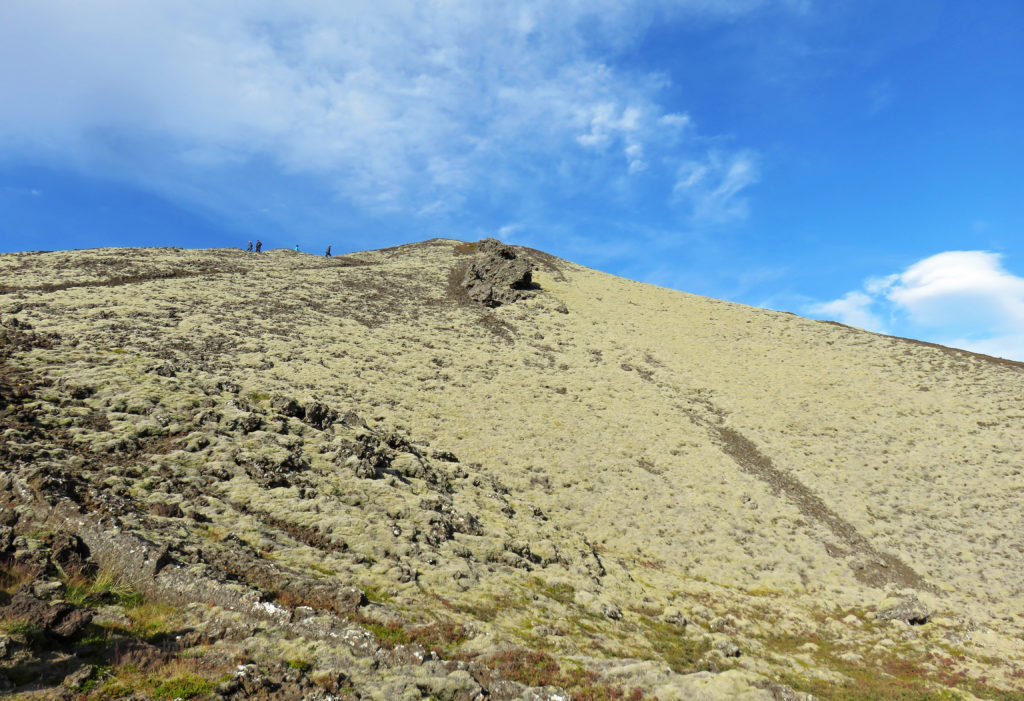
The cone of Grabrok is draped in yellow moss.
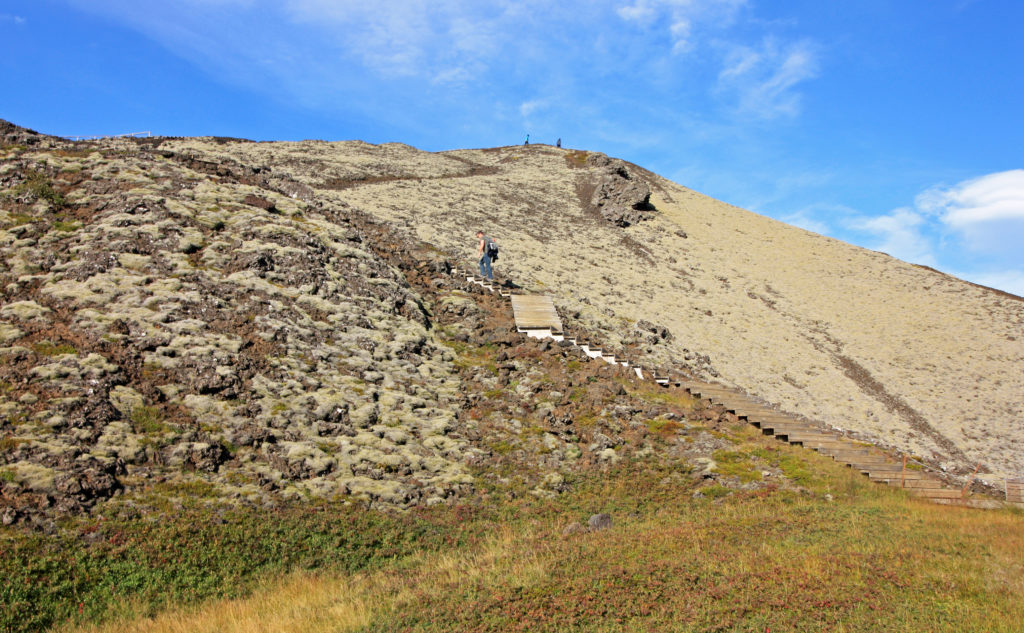
Looking at the twenty minute climb ahead of us.
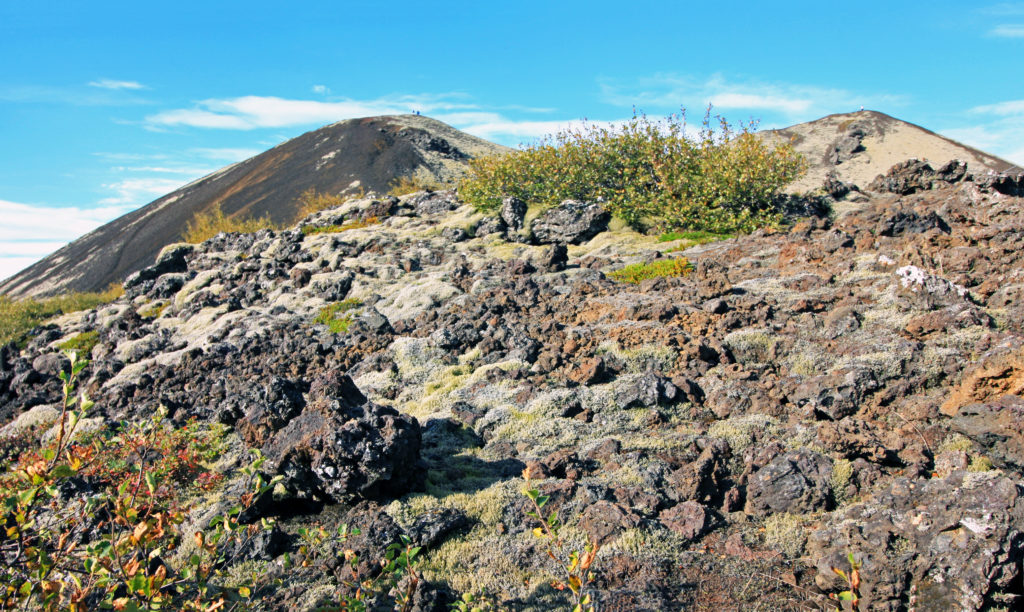
Some of the rugged rocks from the volcano’s lava field.
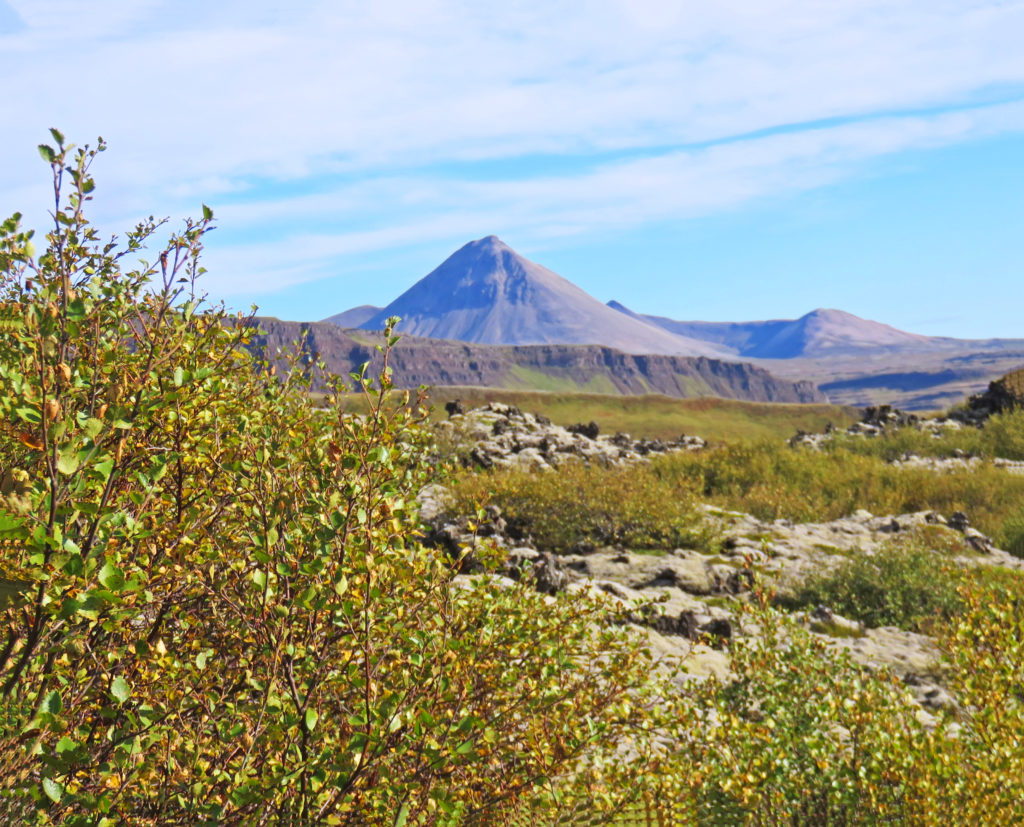
A view of Baula Mountain near Grabrok Crater.
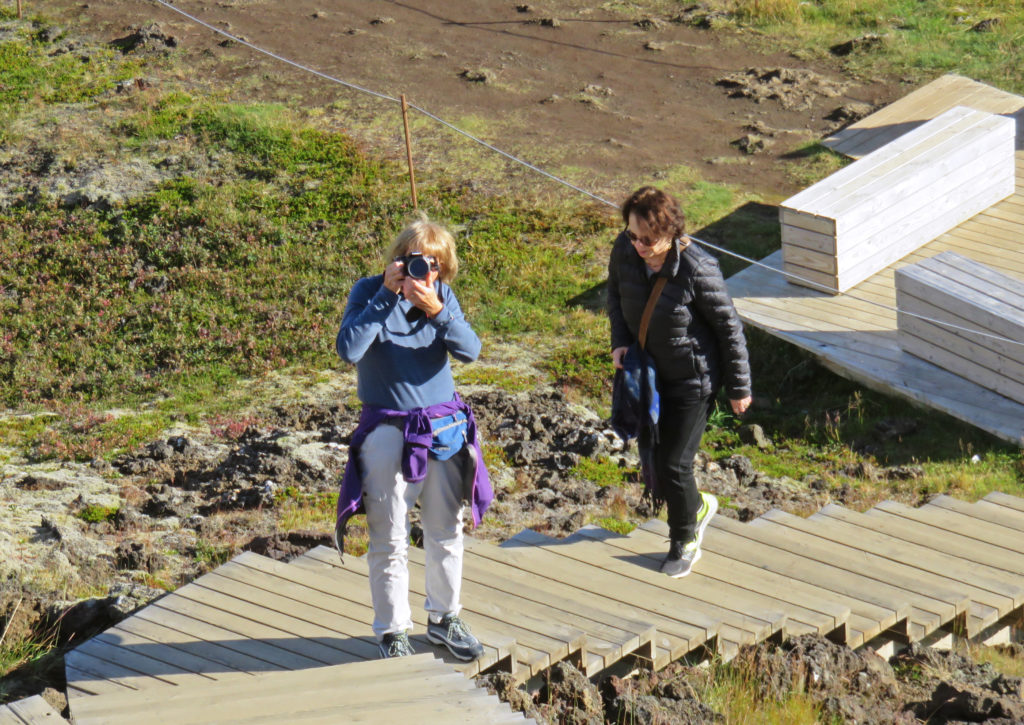
Kathy taking a picture of the wooden path.
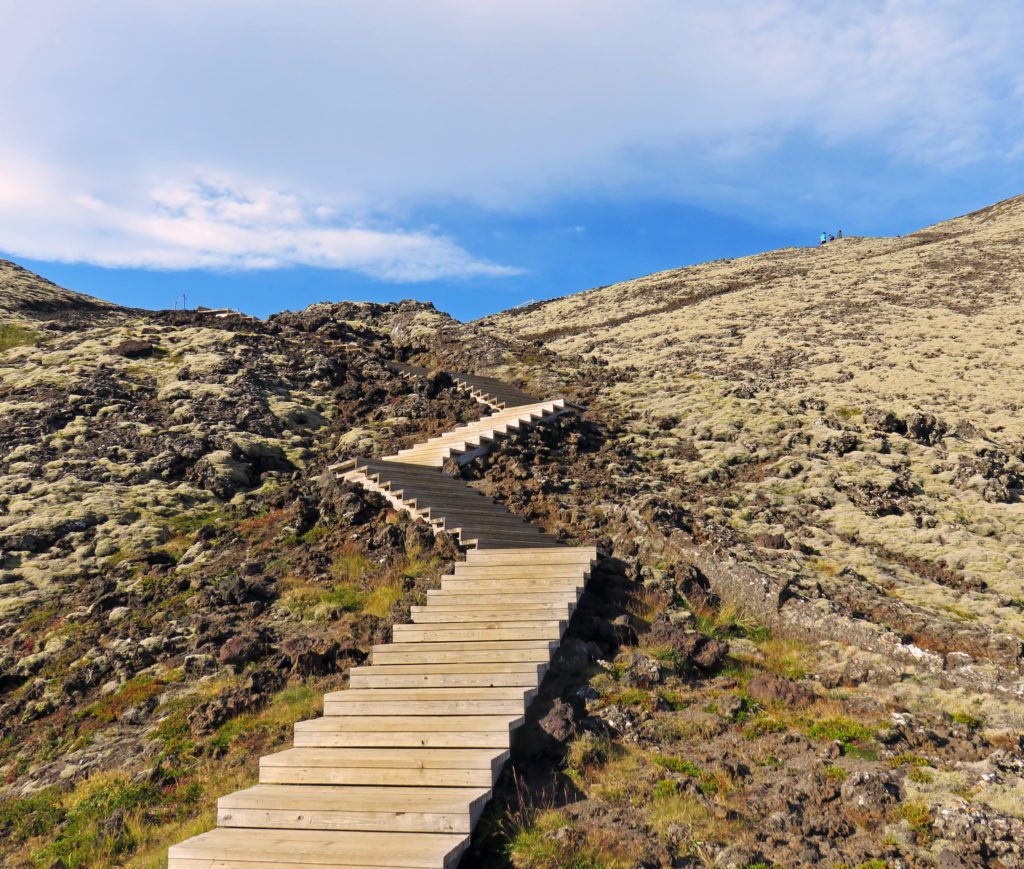
Part of the wooden path to the top of Grabrok.
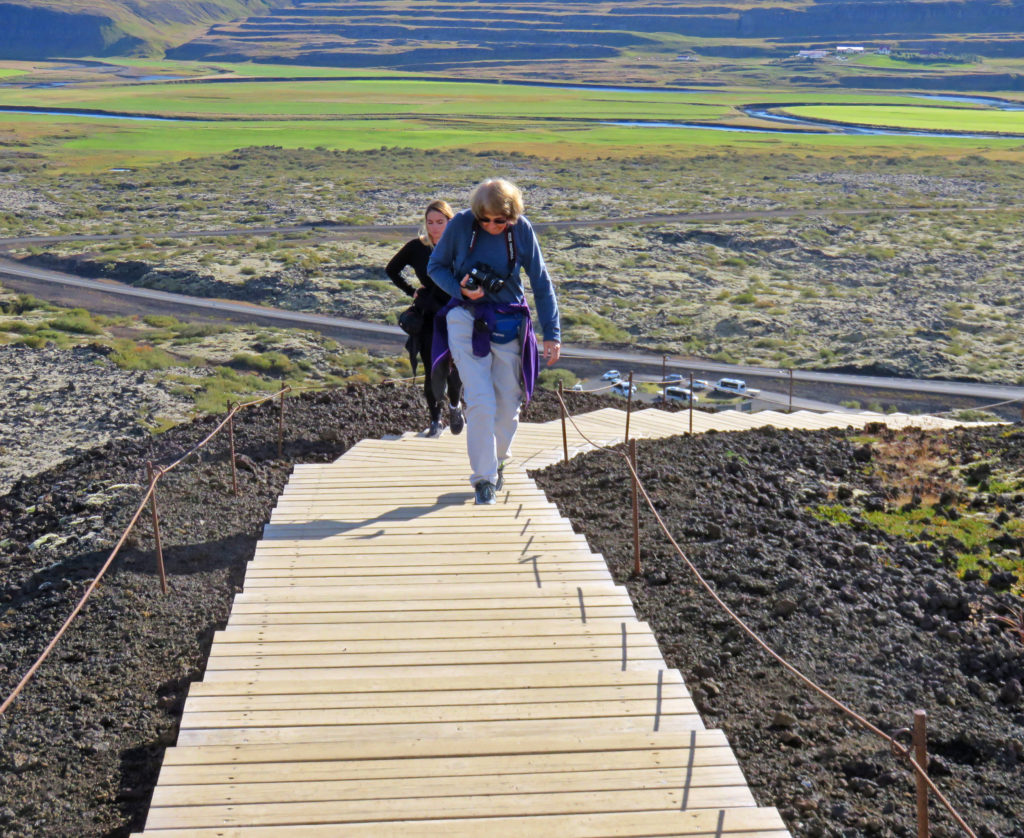
Kathy climbing 300 vertical feet up to the Grabrok crater.
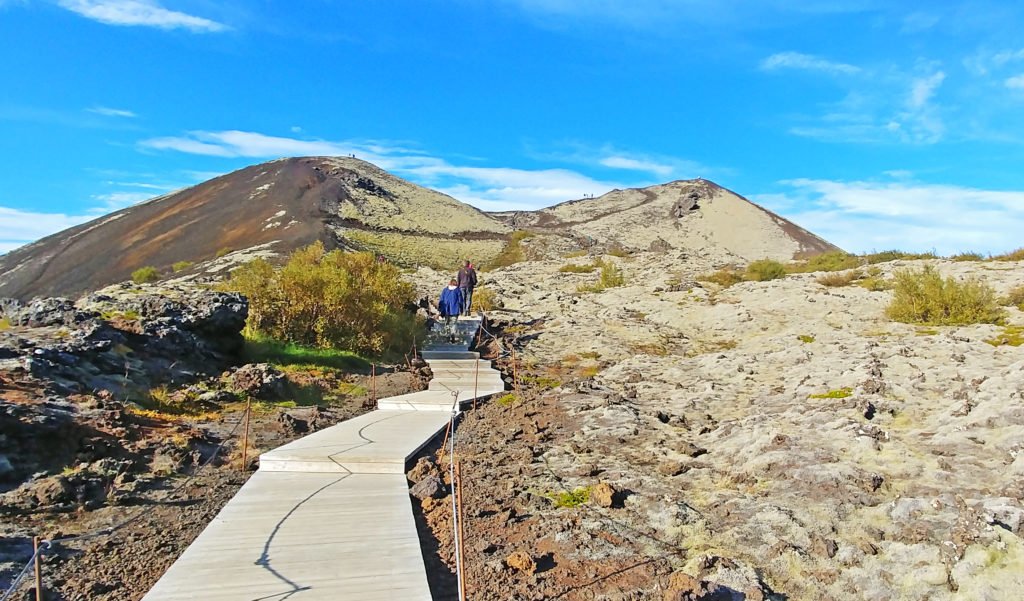
Still climbing up the volcano on a well constructed wooden path.
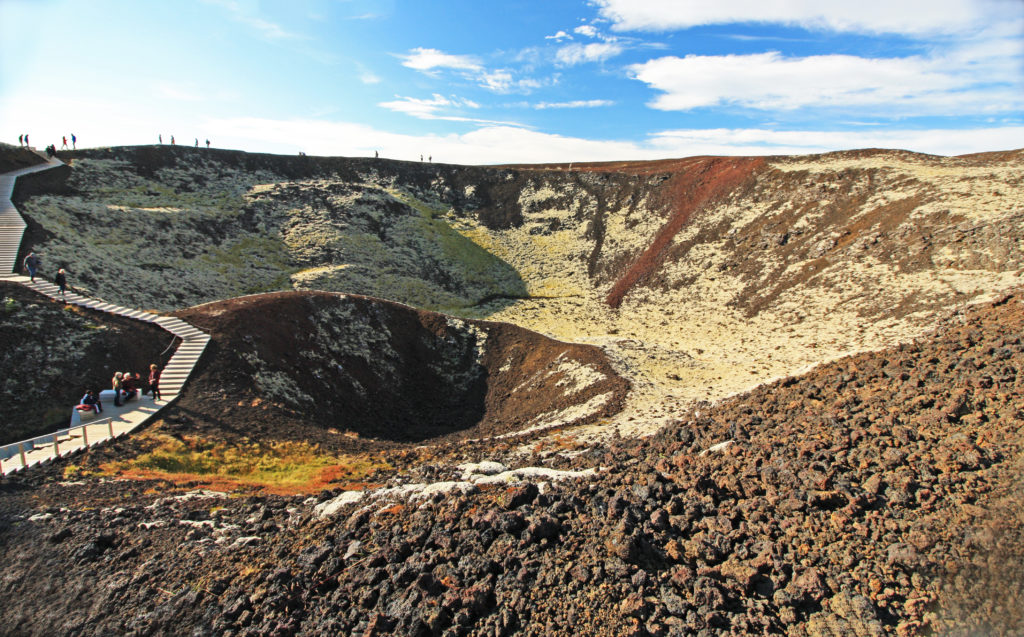
At the top of the volcano and looking into the massive crater.
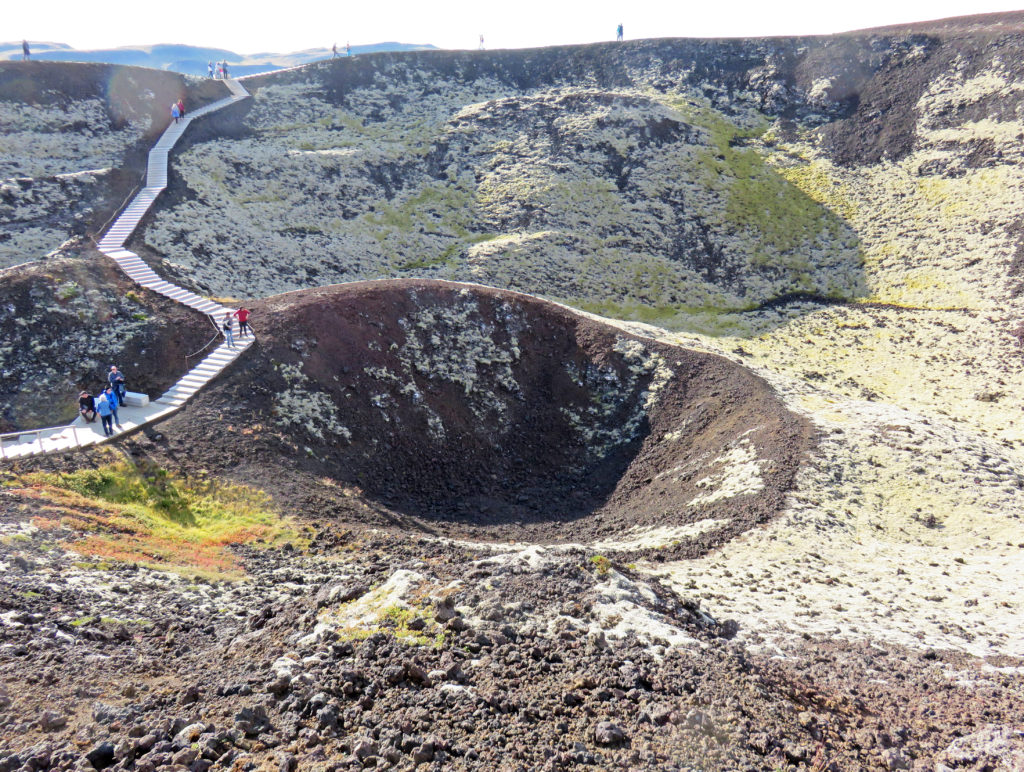
Another little crater within the big Grabrok crater.
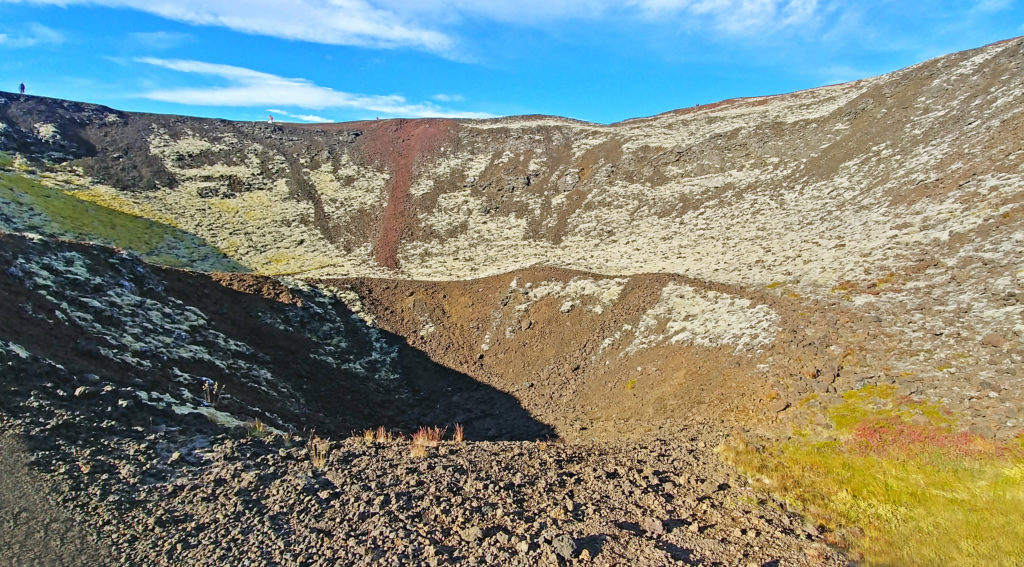
Another shot of the mini crater.
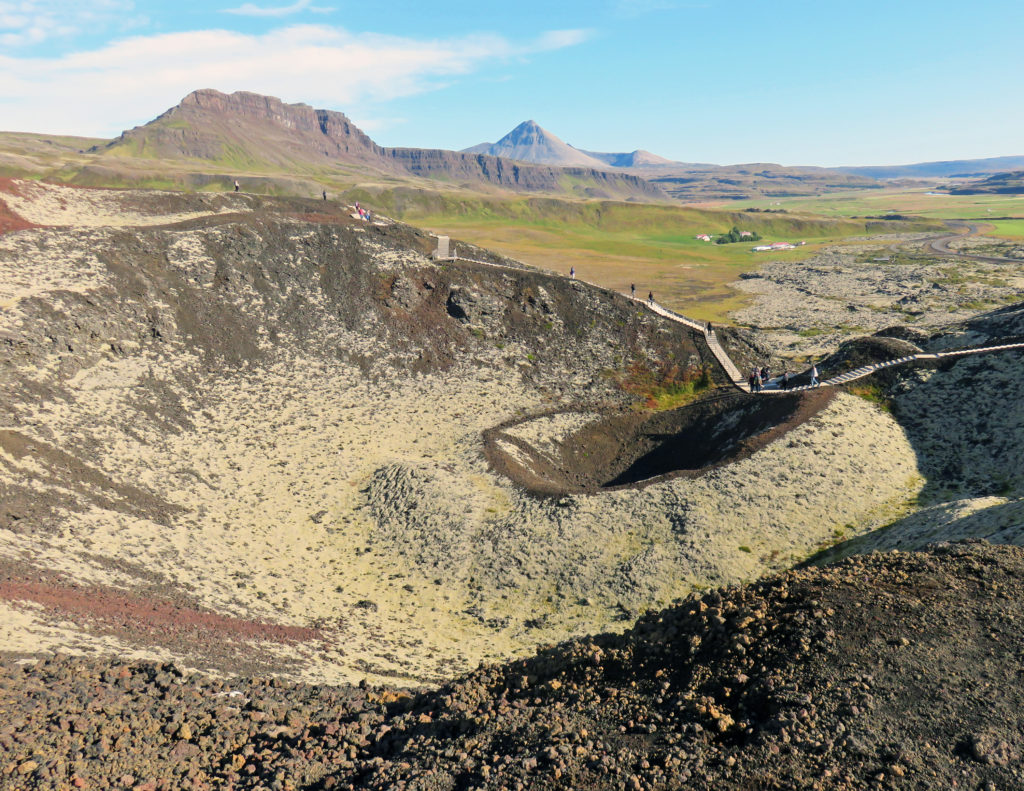
A rim shot of the crater covered in yellow moss
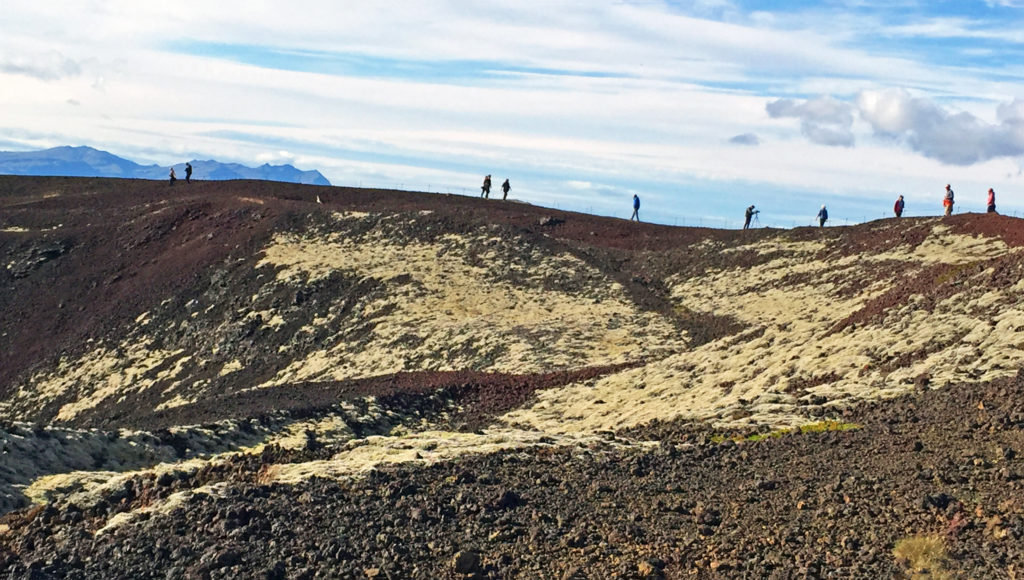
Tourists hiking around the rim of the crater.
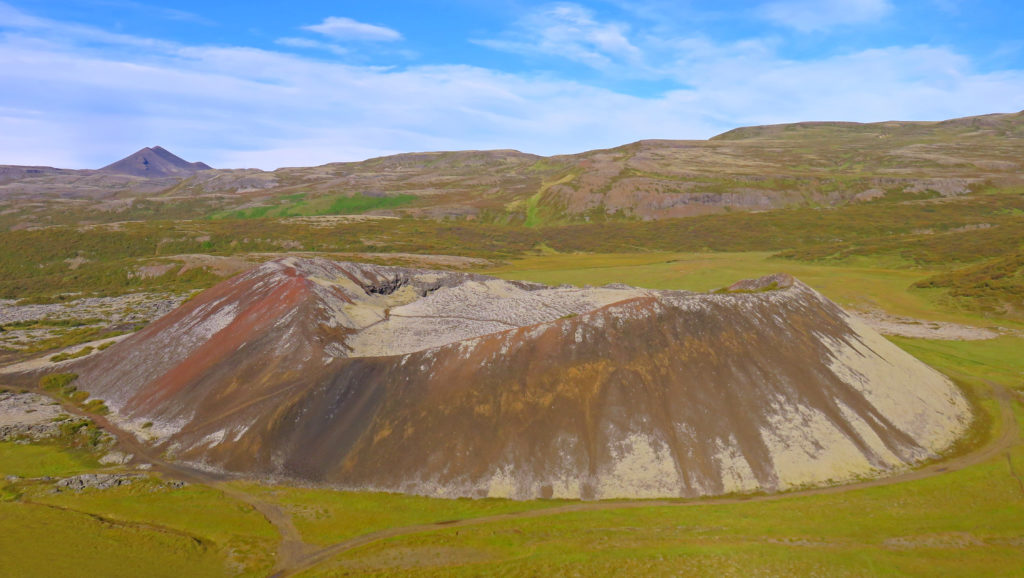
A view of the smaller cone Grabrokarfell from the rim of Grabrok.
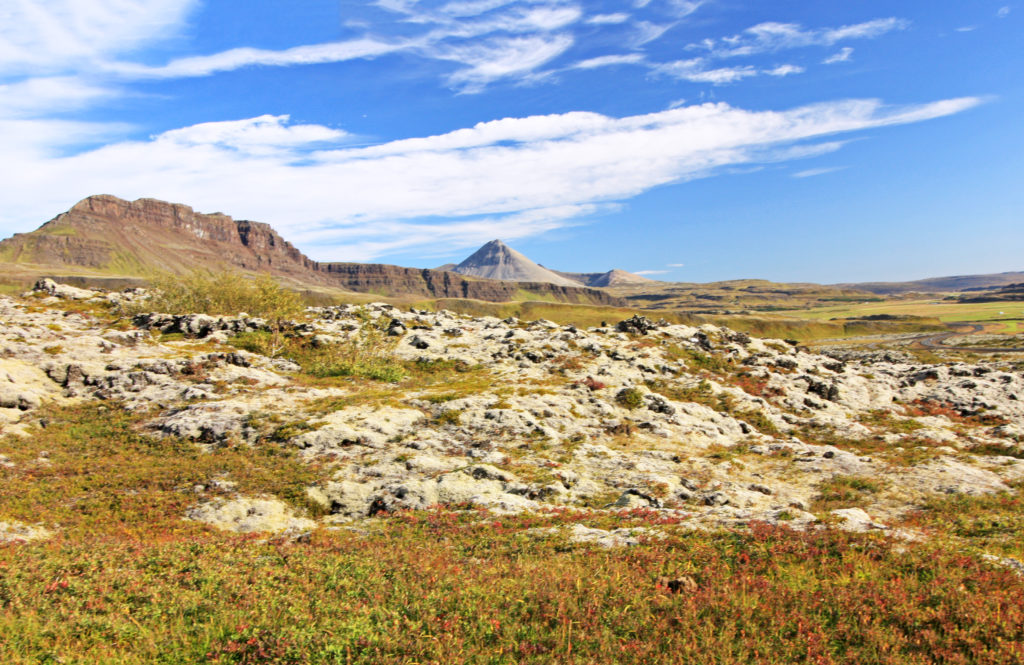
A lava moonscape with Baula Mt. and Hraunsnefsoxl Ridge in the distance.
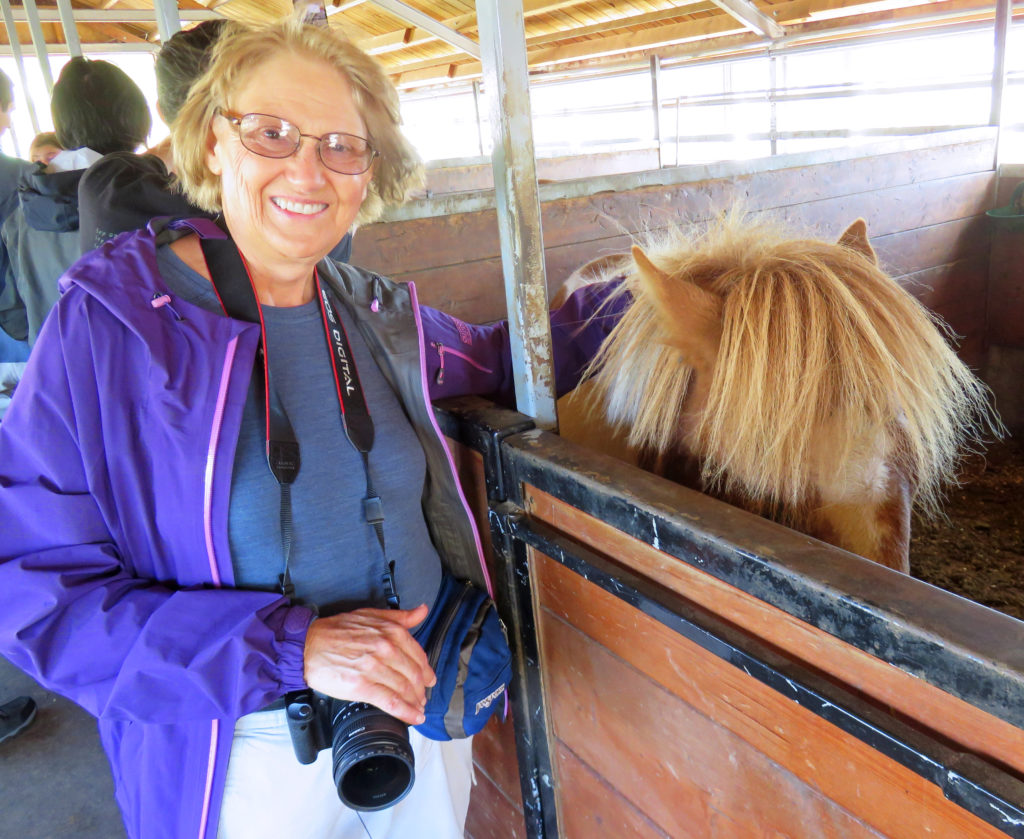
Kathy enjoying the Icelandic horses.
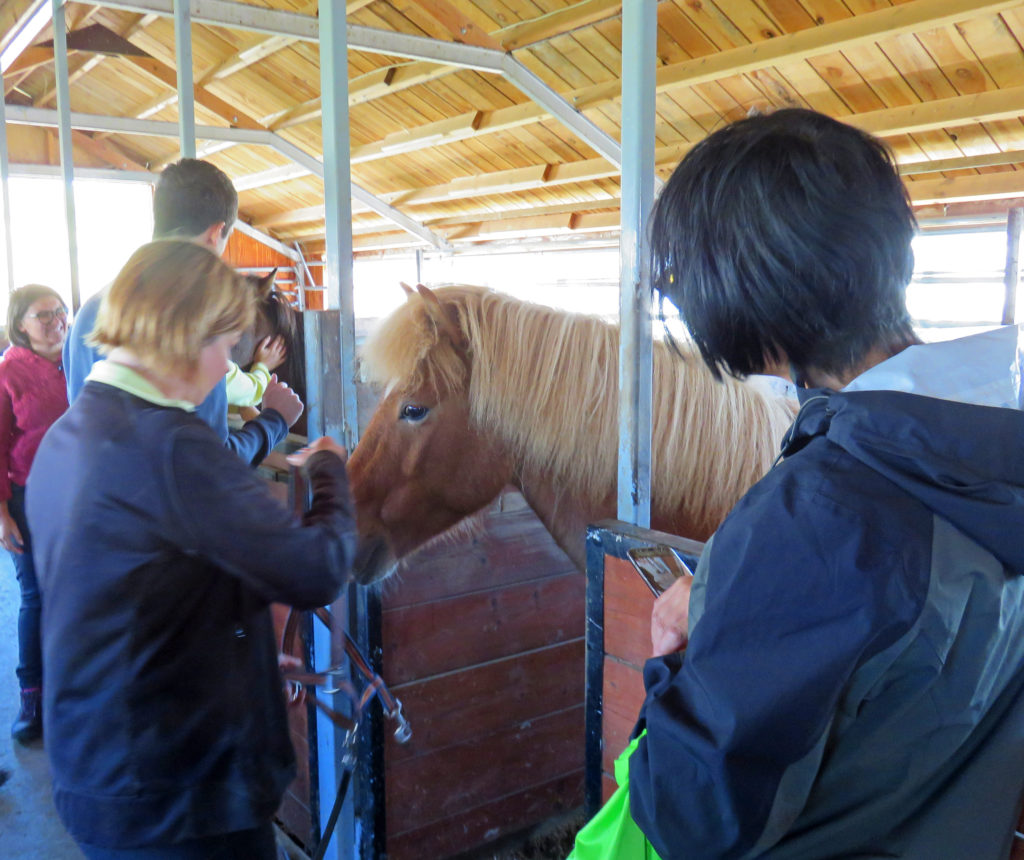
The owner getting a horse ready to leave the barn.
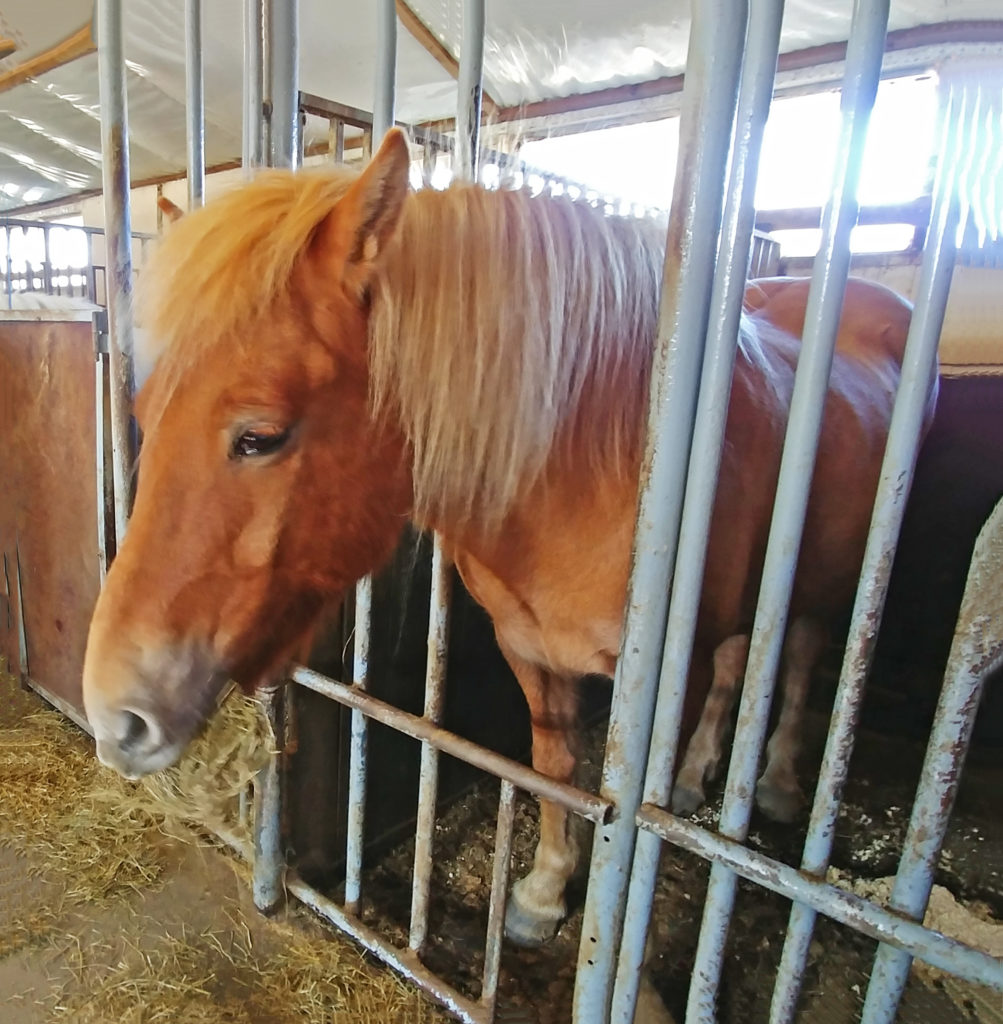
A beautiful horse waiting to be petted.
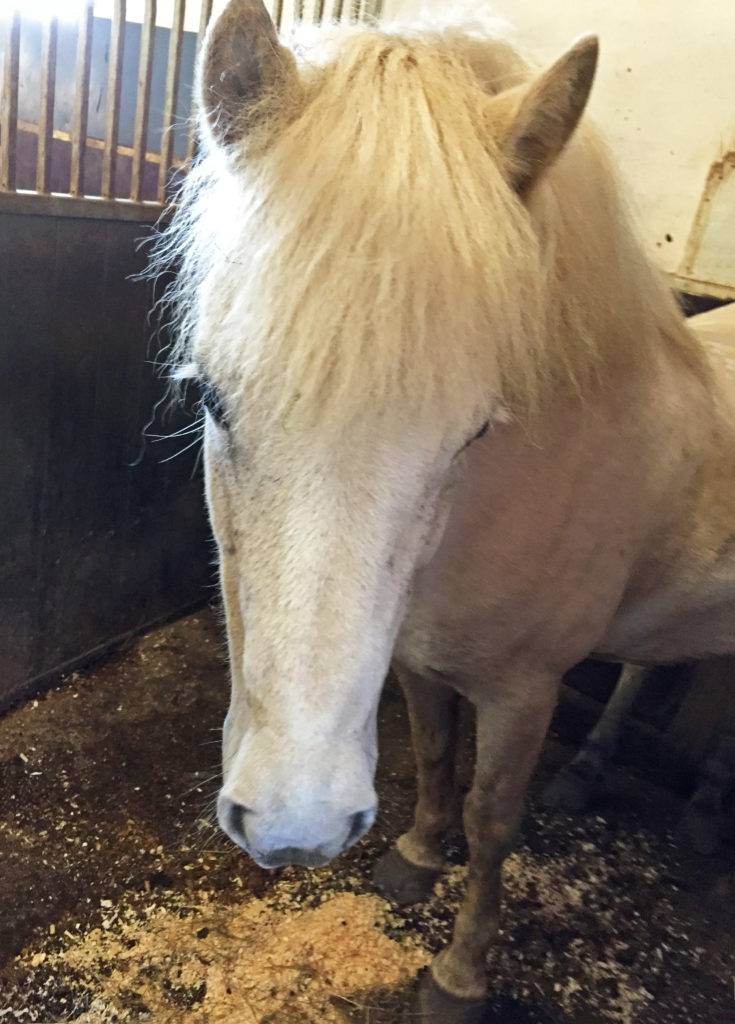
Another sweet horse posing for us.
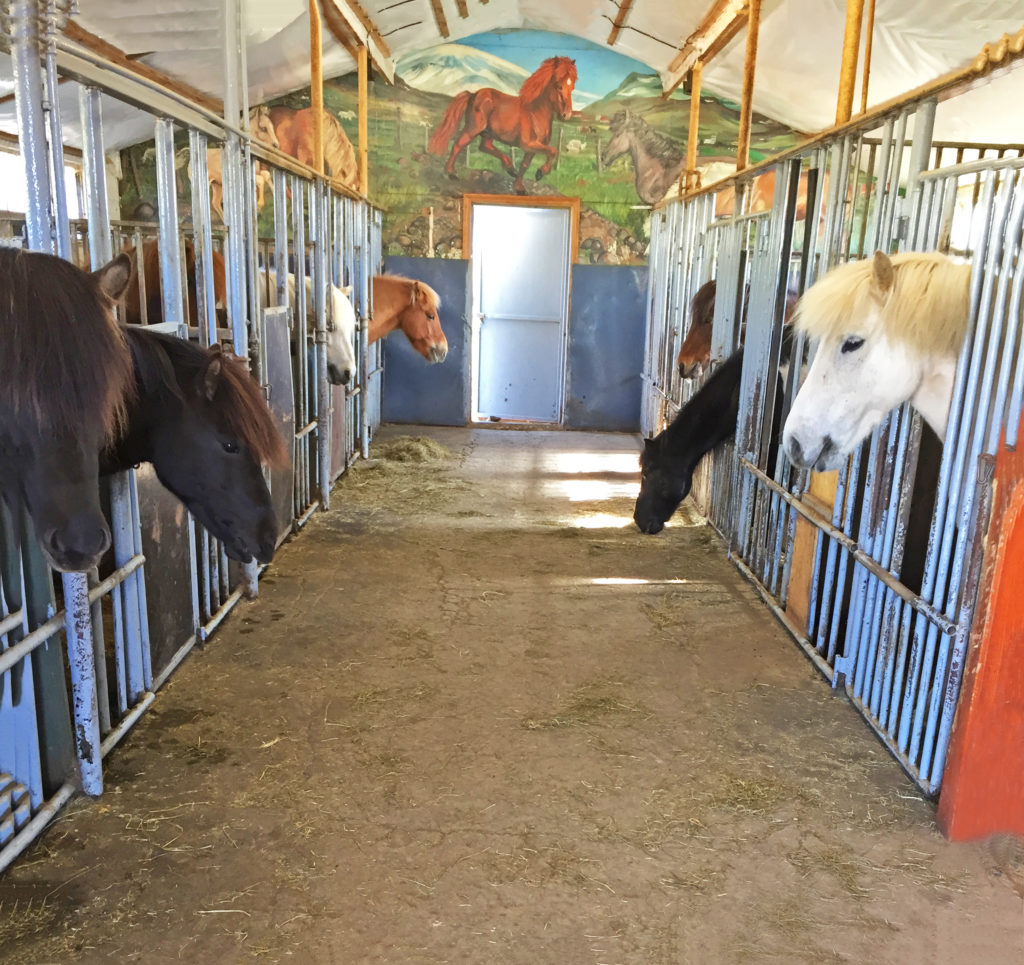
One of horse barns we got to visit.
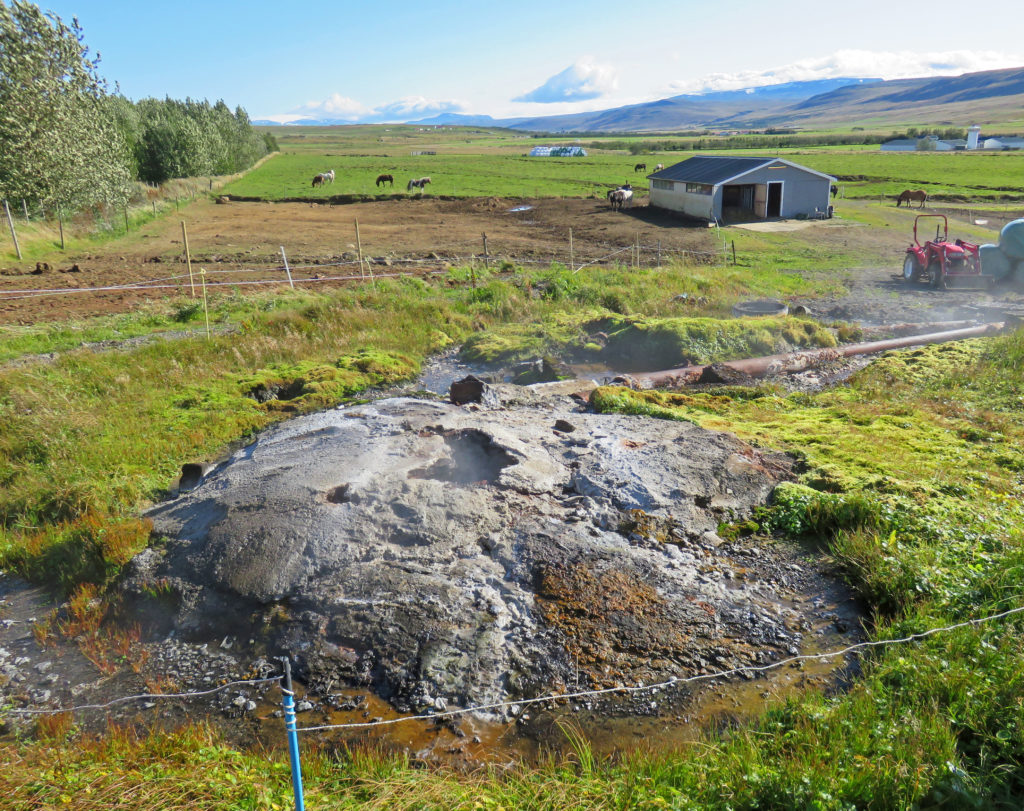
The hot springs on the property heats the house and barns.
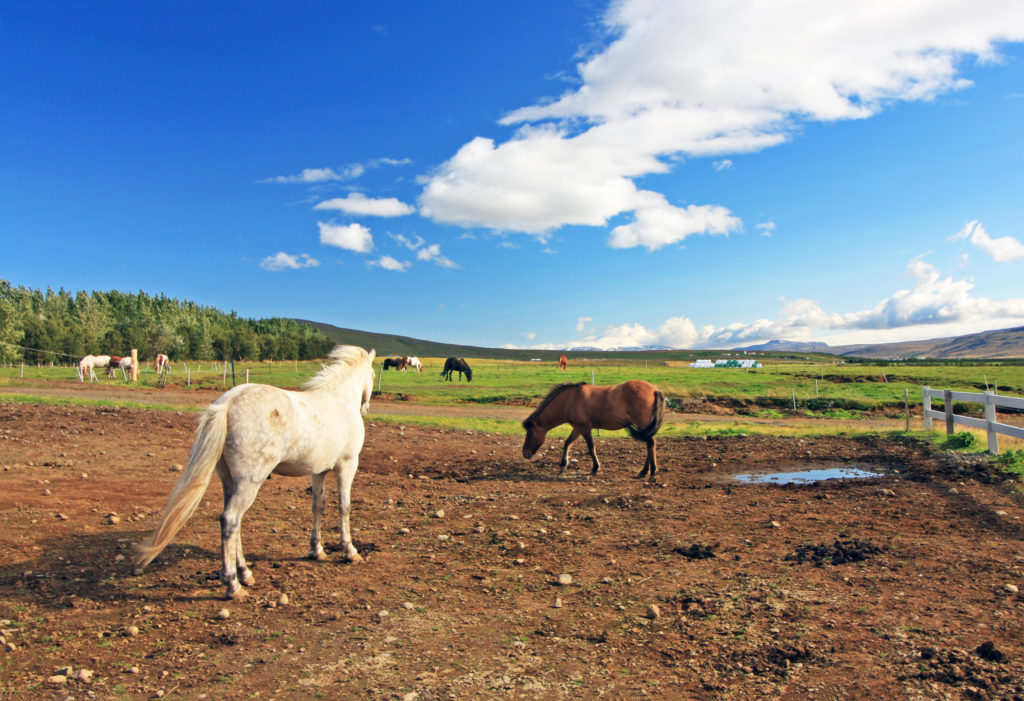
Horses out in the pasture enjoying a gorgeous day.
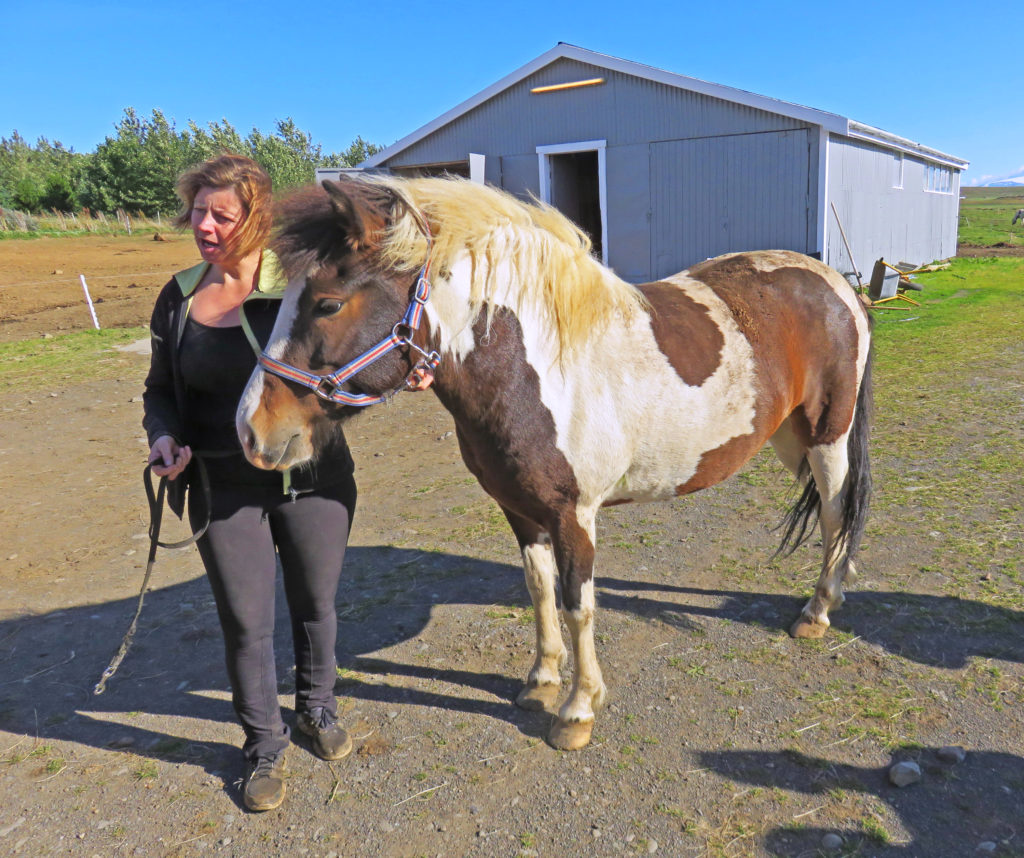
The owner introducing us to one of her horses.
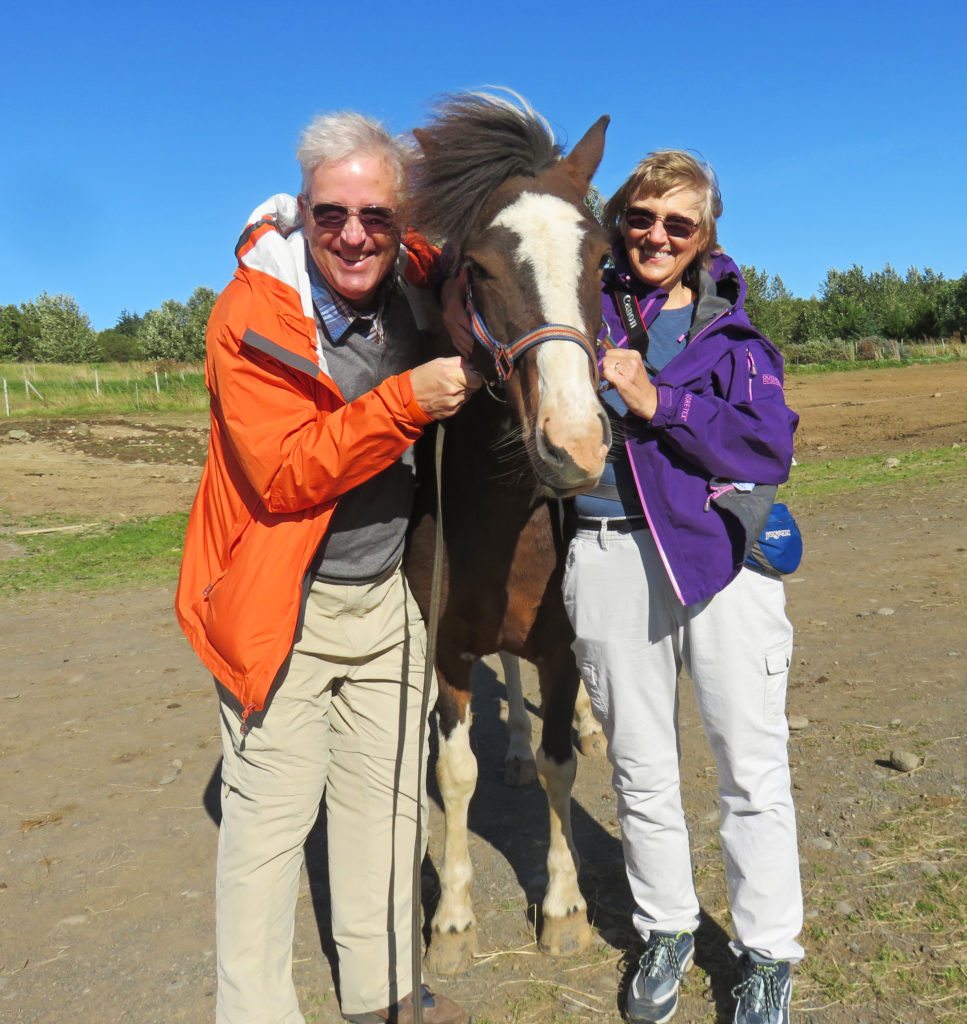
Rodge and I pose with a well mannered horse.
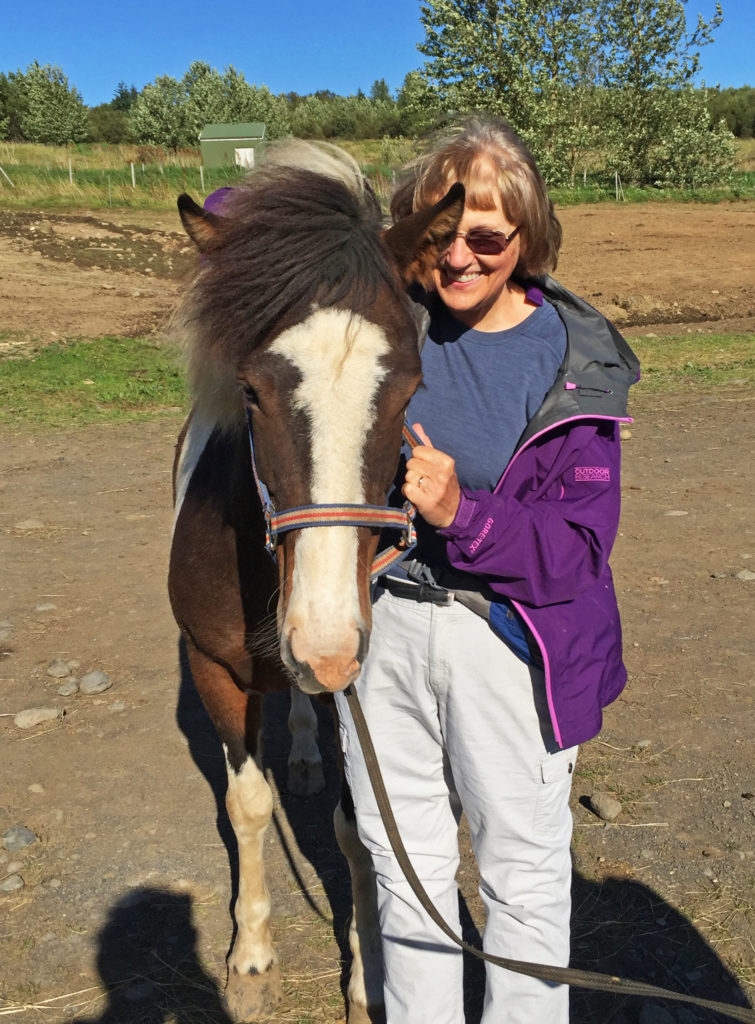
I get up close and personal with the horse.
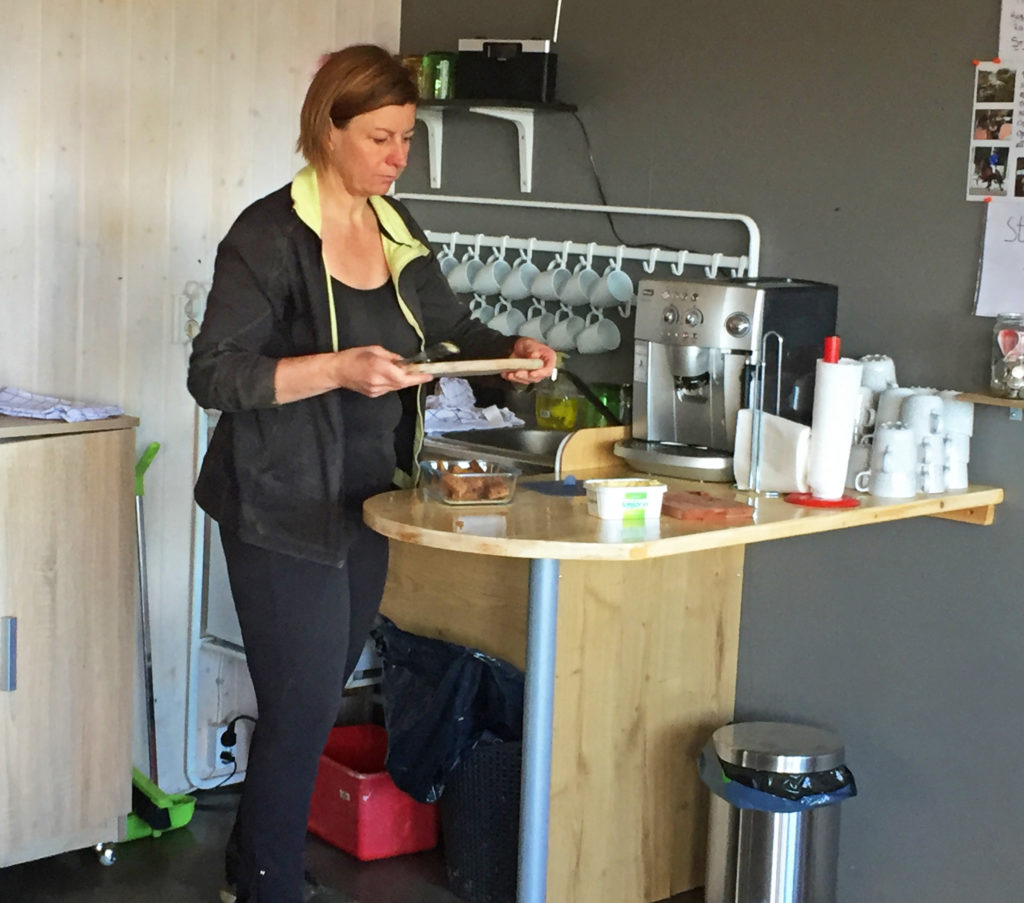
The owner serving us hot cocoa and rye bread.
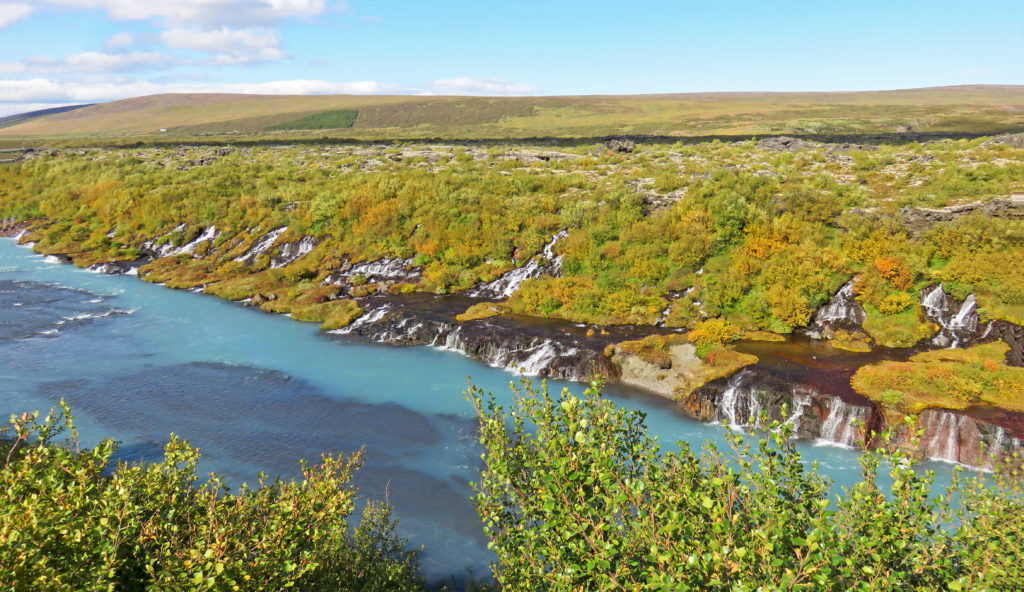
Looking down the Hvita River with the Hraunfossar waterfalls on the right.
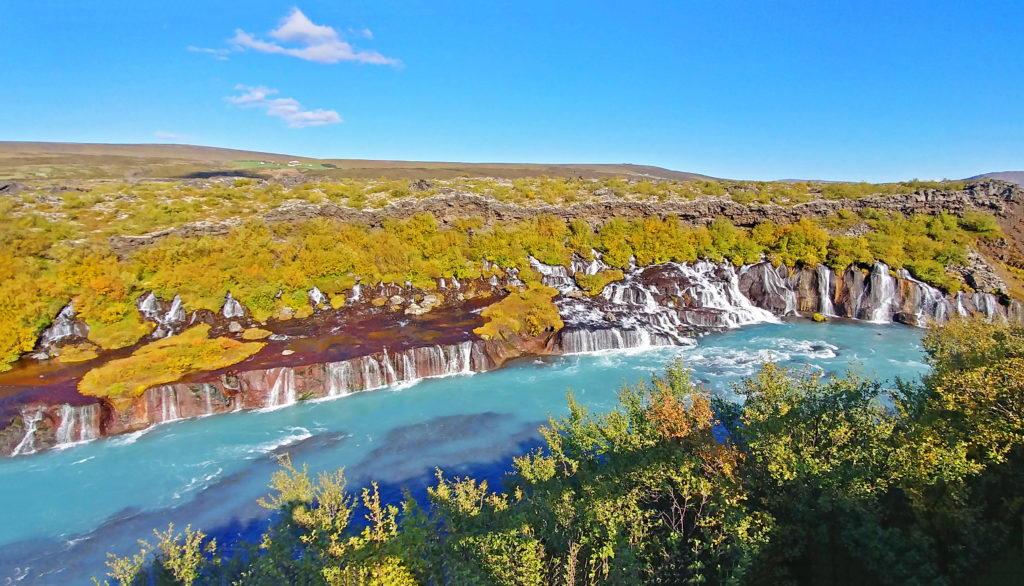
The very wide picturesque Hraunfossar (lava waterfalls).
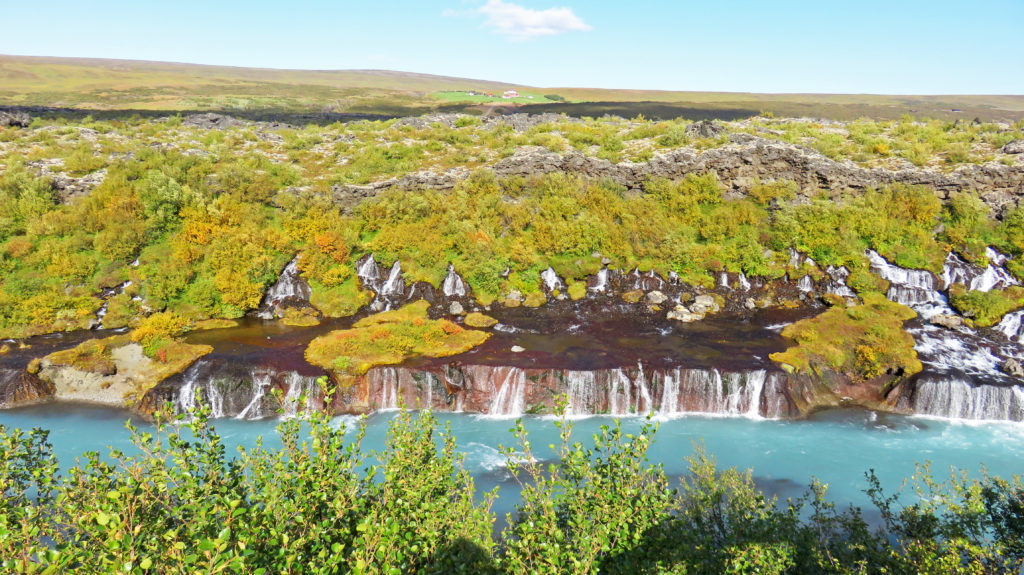
The waterfalls are fed by glacial meltwater.
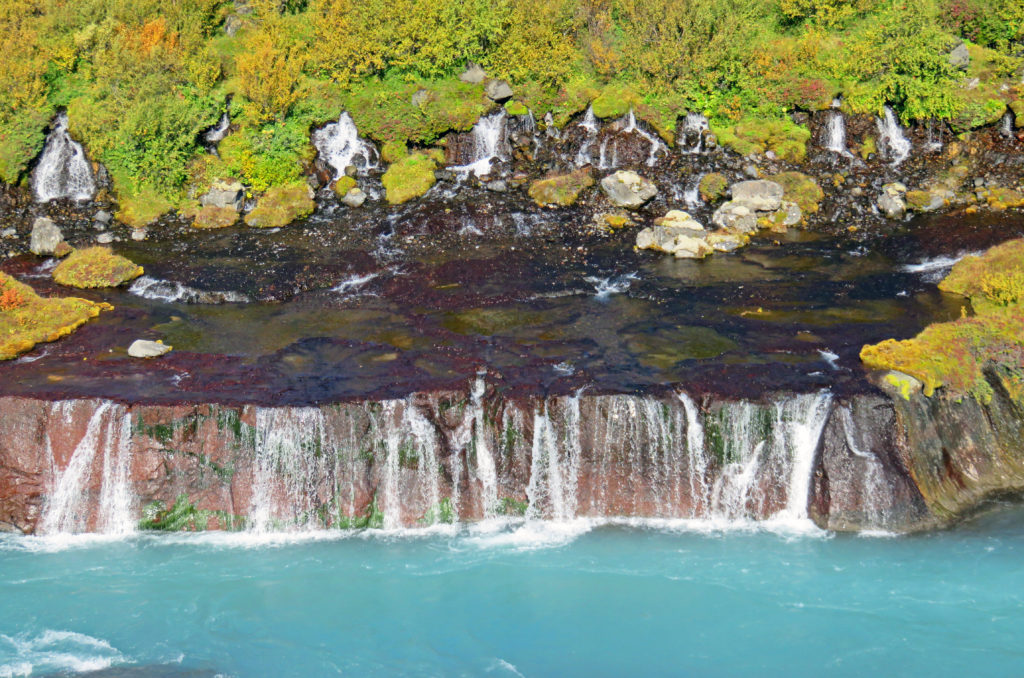
Water from the Langjokull Glacier travels under porous lava fields.
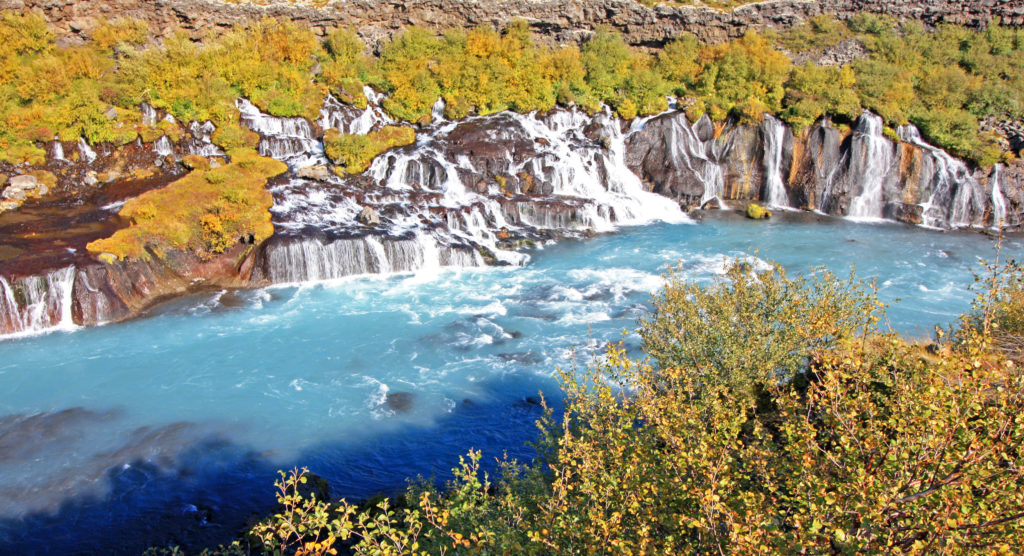
The water eventually pours out from under striped layers of lava.
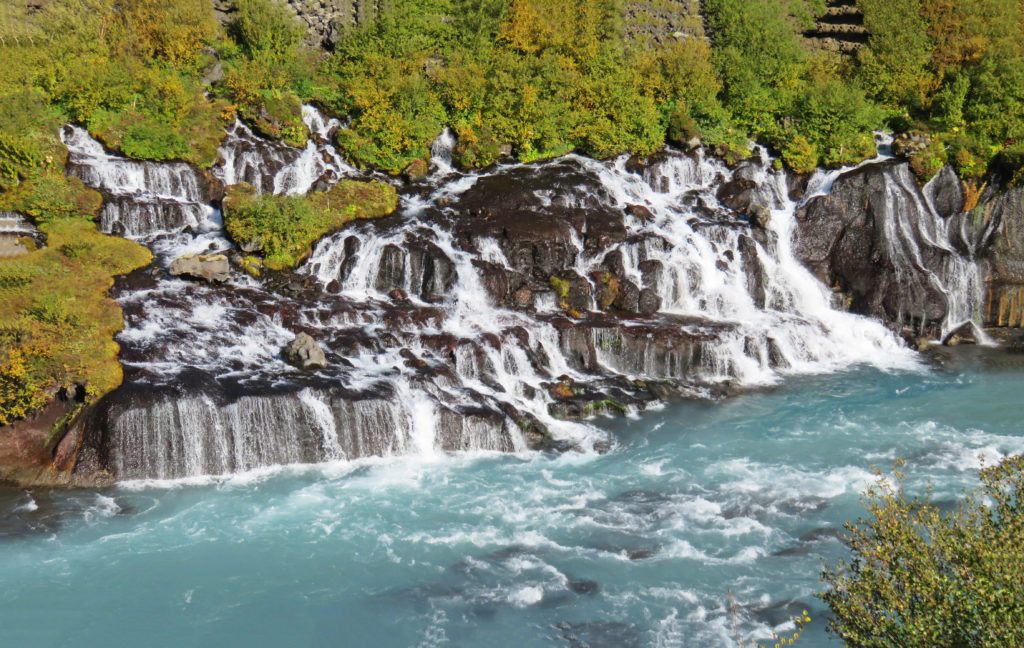
Rivulets of water flow over cliffs into the rushing Hvita River.
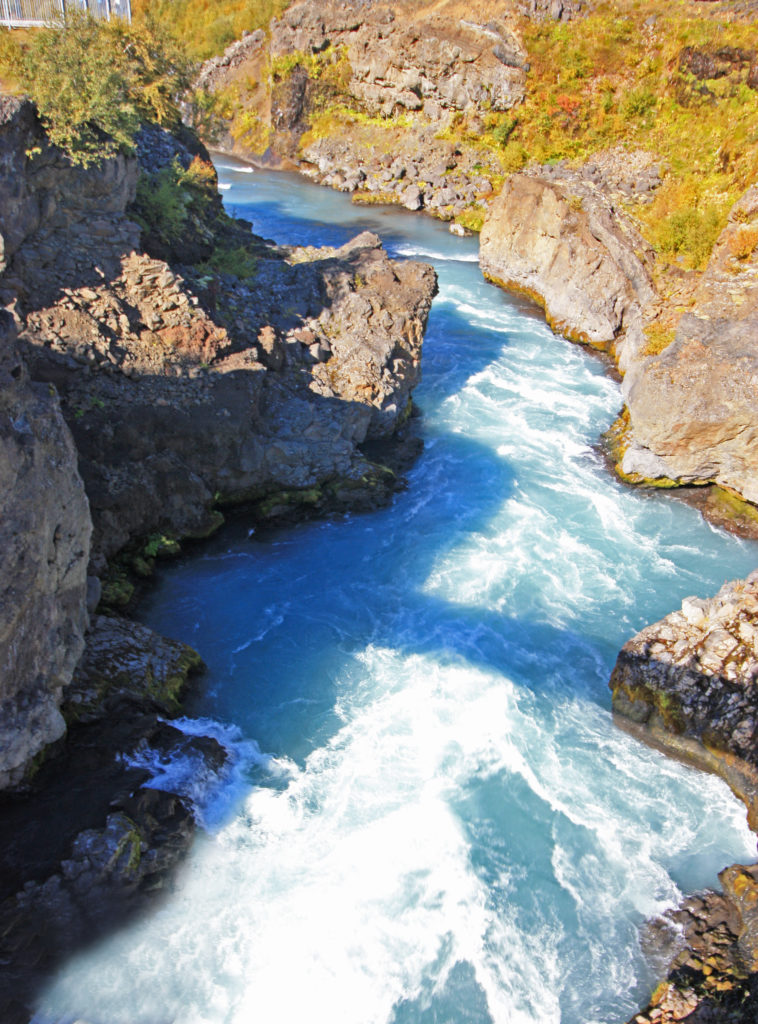
The Hvita River forms the dramatic Barnafoss waterfall.
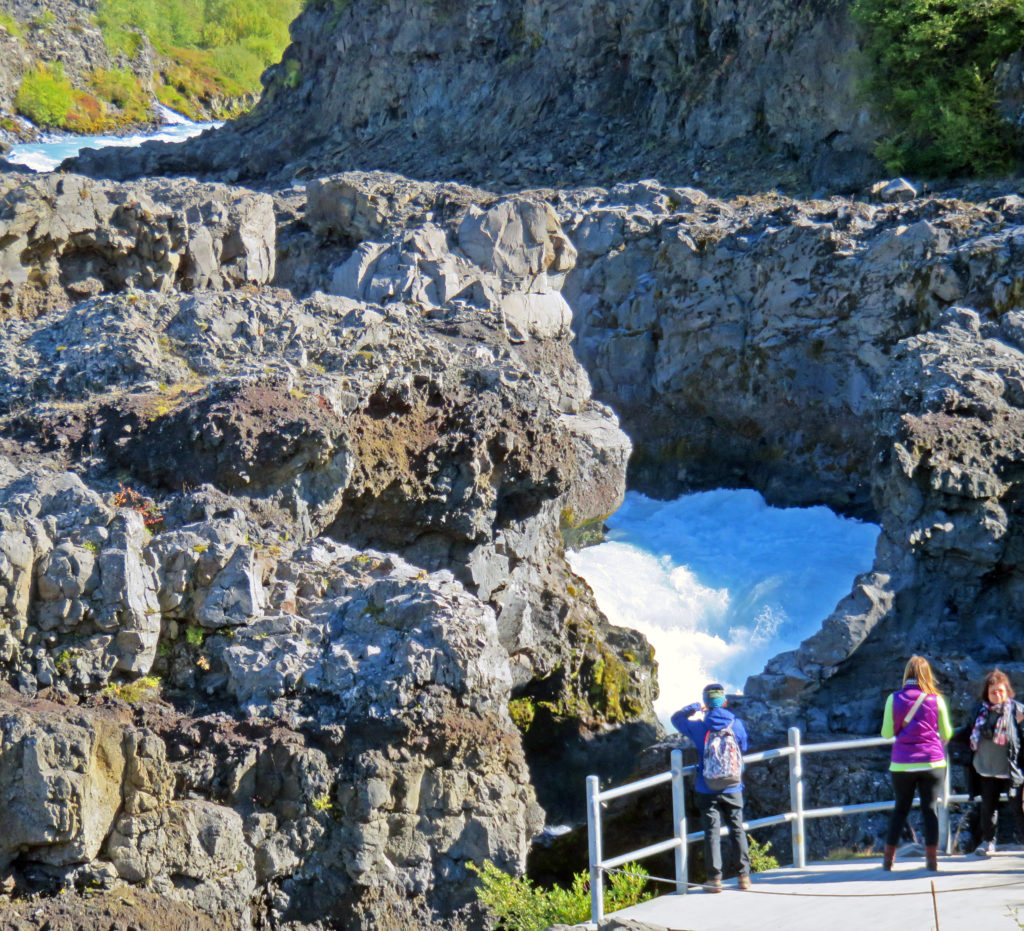
Barnafoss is formed by the Hvita River rushing through a snake-like channel.
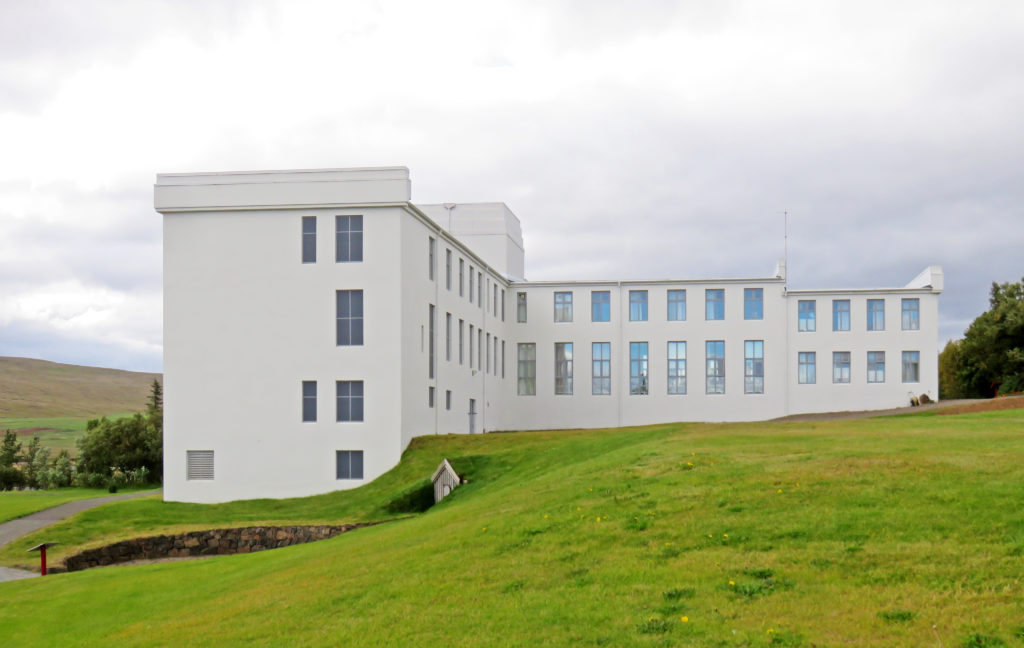
The boarding school in Reykholt that our guide attended as a child.
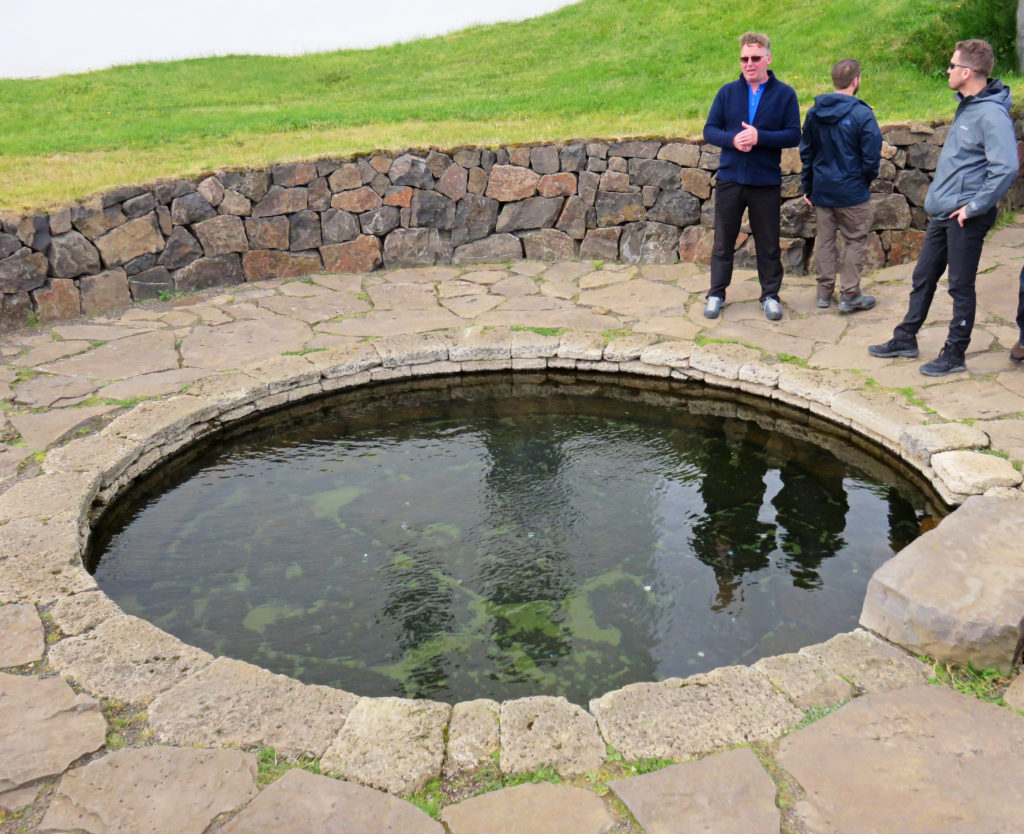
Our guide looks at Snorri’s Pool, named after Icelandic author Snorri Sturluson.
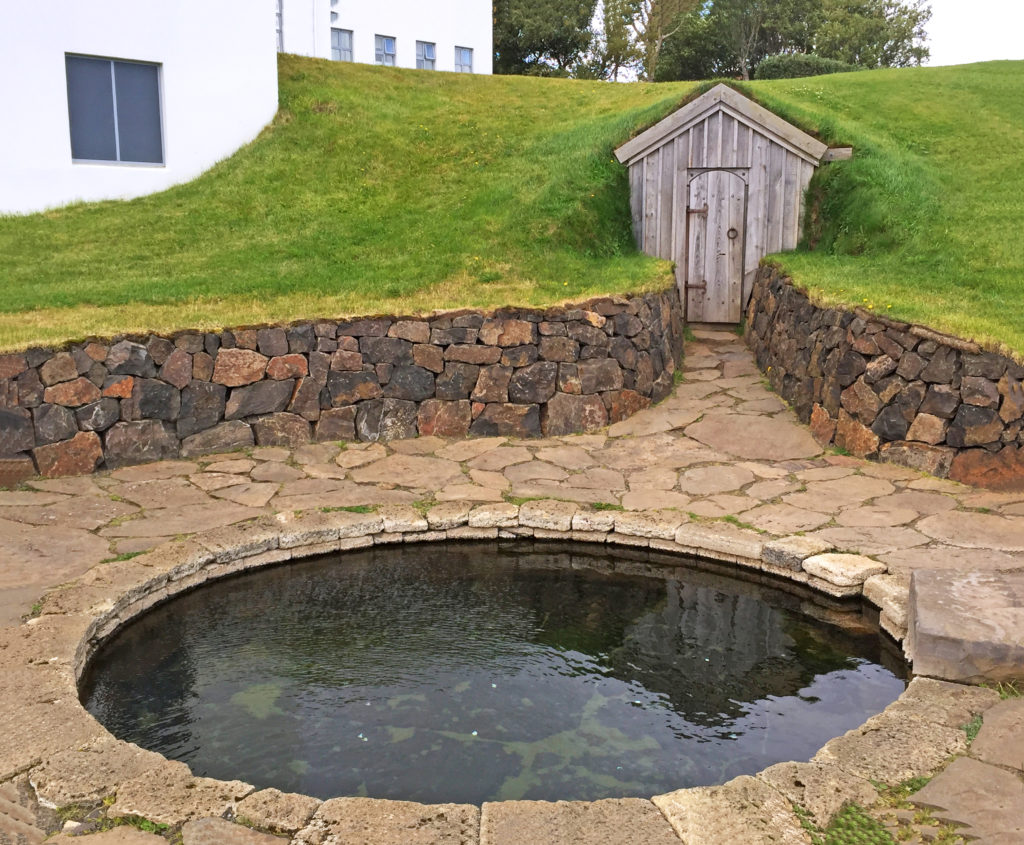
The hot water pool was used and written about 1,000 years ago by Snorri.
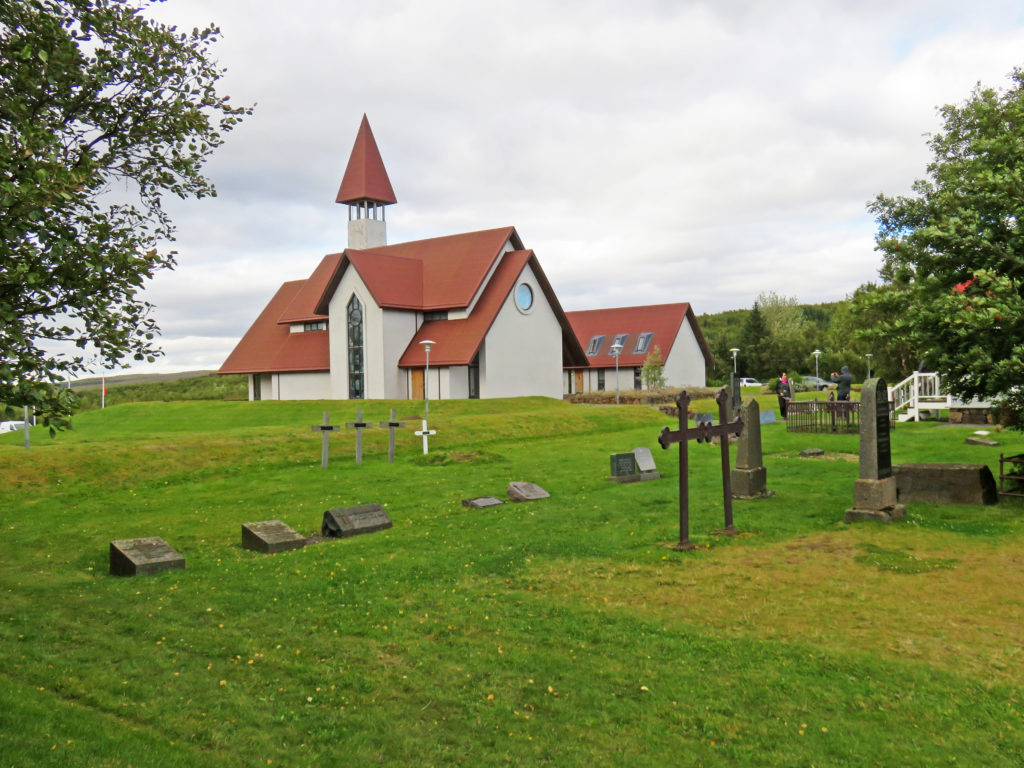
A Lutheran Church on the grounds of Reykholt.
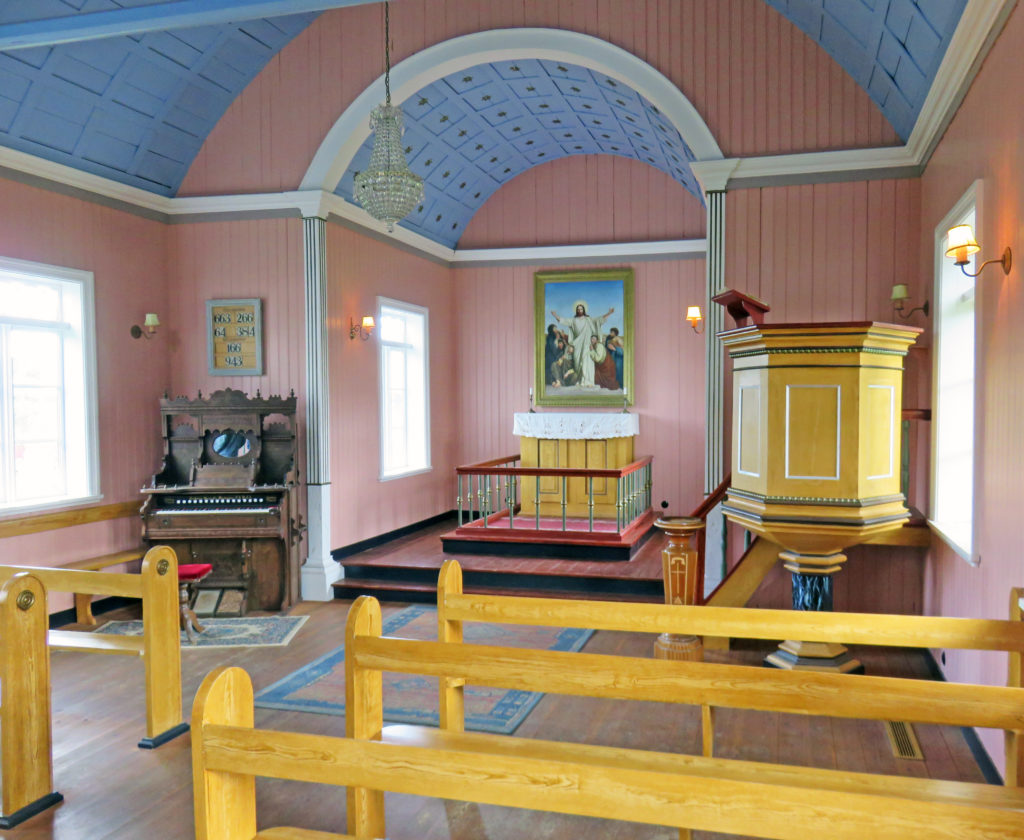
The small plain church had a truly beautiful wooden organ.
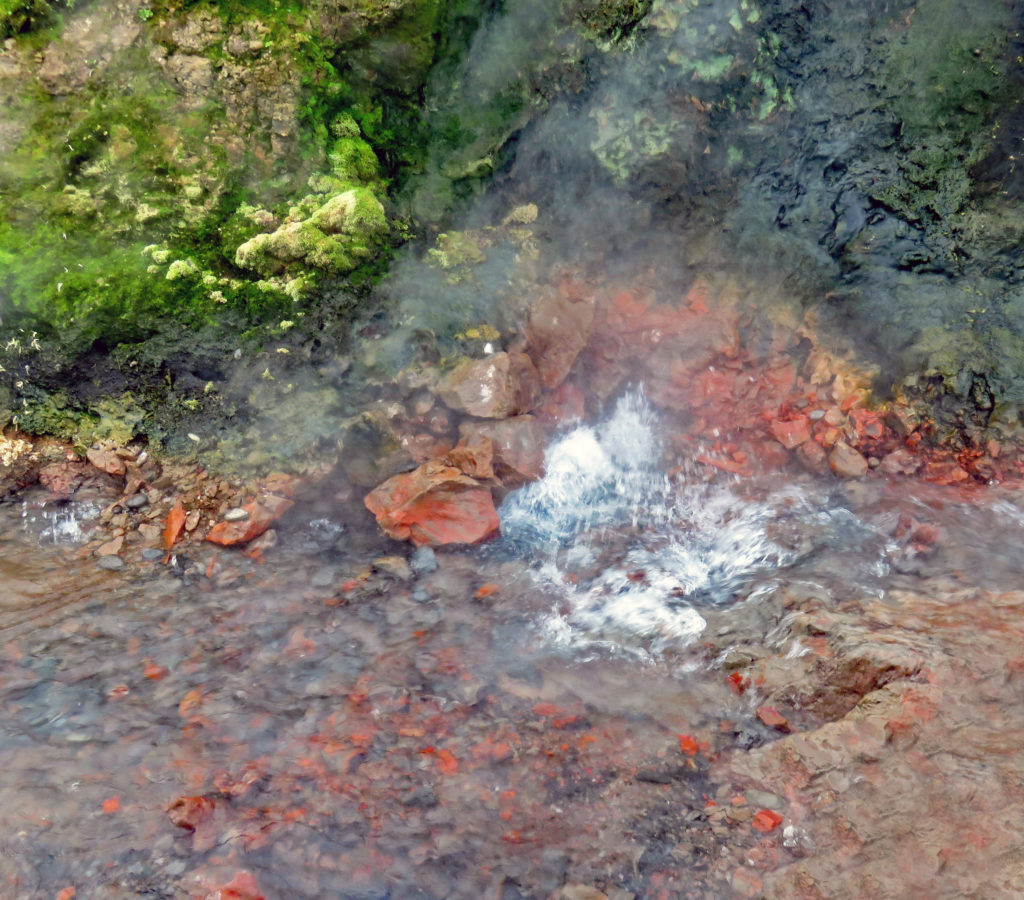
Deildartunguhver Hot Springs is Europe’s most power hot spring.
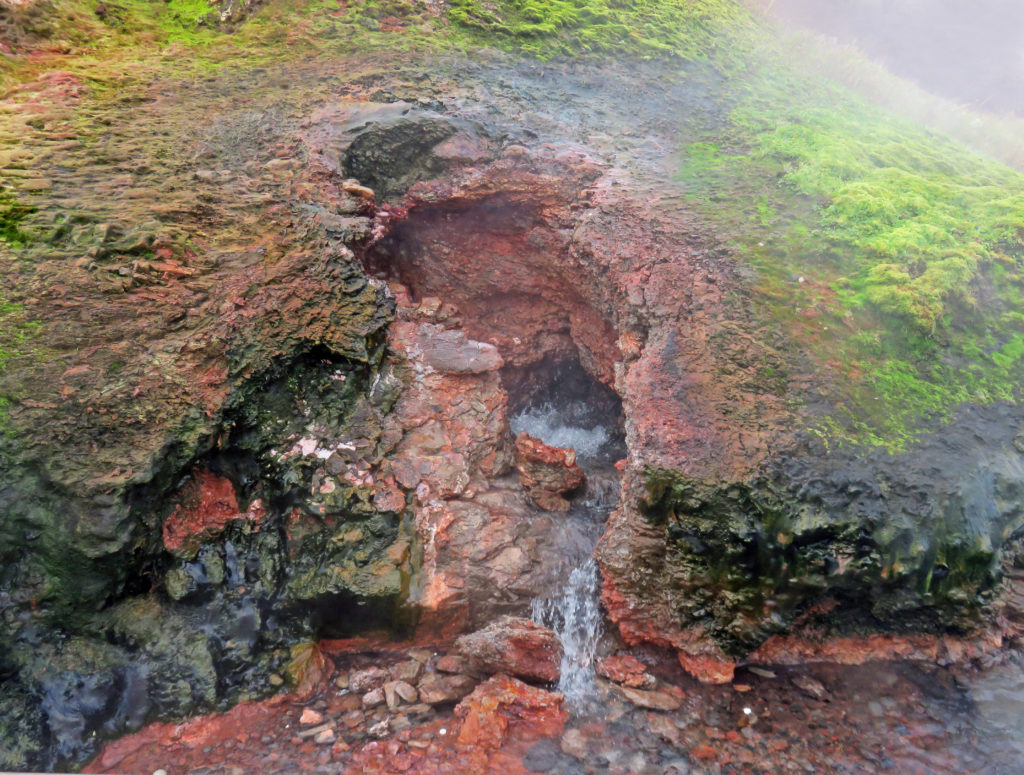
The hot water is piped to the surrounding towns of Borgarnes and Akranes.
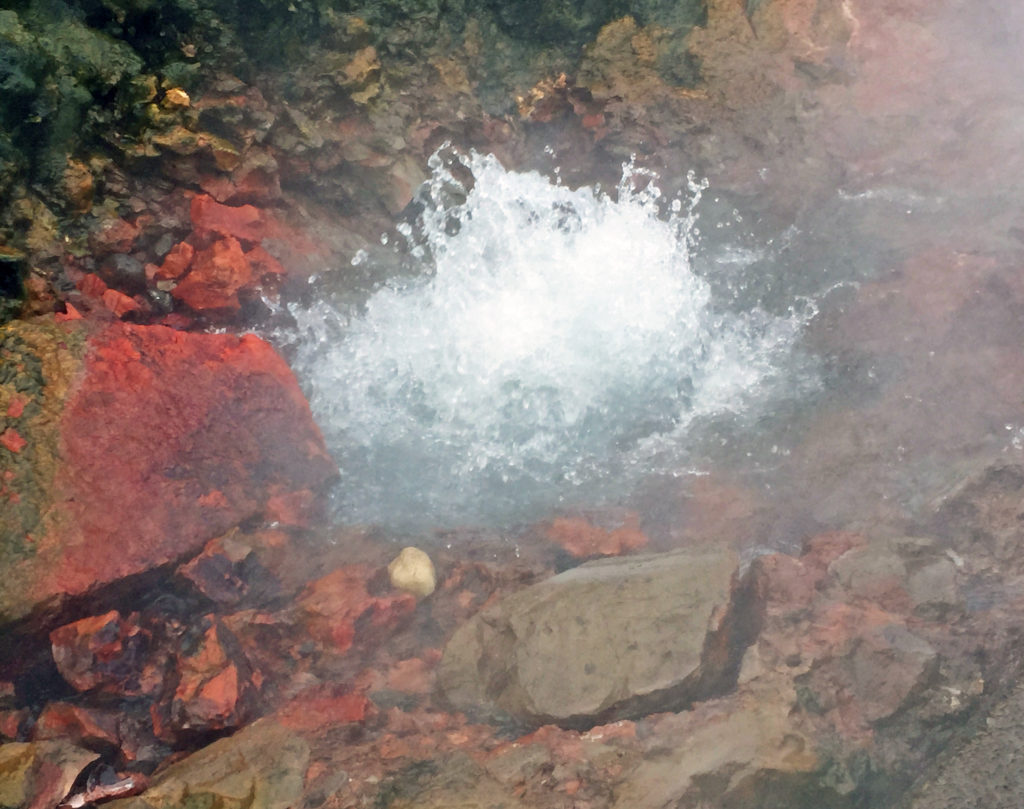
The hot spring gushes out fifty gallons of boiling water per second.
